 |
||
|
HOME
|
US Navy -
ships
|
US Navy - air
units
|
USMC - air
units
|
International
Navies
|
Weapon Systems
|
Special Reports |
||
|
US Navy - Aircraft Carrier CVA 61 / CV 61 - USS Ranger |
||
|
||
| 01/24 | ||
|
Type, class: Aircraft Carrier, CVA, CV;
Forrestal class Builder: Newport News Shipbuilding & Drydock Company, Newport News, Virginia, USA STATUS: Awarded: February 1, 1954 Laid down: August 2, 1954 Launched: September 29, 1956 Commissioned: August 10, 1957 Decommissioned: July 10, 1993 Fate: scrapped in Brownsville, Texas; scrapping completed in November 2017 Namesake: Ranger = one who wanders, a military scout Ships Motto: ? Technical Data: see: INFO > Forrestal class Aircraft Carrier |
||
|
Deployments / Carrier Air Wings embarked + major overhauls: October 1957 - December 1957 with Carrier Air Group 8 (CVG-8) embarked - shakedown cruise - Atlantic Ocean June 1958 - August 1958 with Carrier Air Group 14 (CVG-14) embarked - homeport change - Norfolk to Alameda, California January 1959 - July 1959 with Carrier Air Group 14 (CVG-14) embarked - Pacific Ocean February 1960 - August 1960 with Carrier Air Group 9 (CVG-9) embarked - Pacific Ocean August 1961 - March 1962 with Carrier Air Group 9 (CVG-9) embarked - Pacific Ocean November 1962 - June 1963 with Carrier Air Group 9 (CVG-9) embarked - Pacific Ocean August 1964 - May 1965 with Carrier Air Wing 9 (CVW-9) embarked - Vietnam War December 1965 - August 1966 with Carrier Air Wing 14 (CVW-14) embarked - Vietnam War September 1966 - May 1967: overhaul at Puget Sound Naval Shipyard November 1967 - May 1968 with Carrier Air Wing 2 (CVW-2) embarked - Vietnam War October 1968 - May 1969 with Carrier Air Wing 2 (CVW-2) embarked - Vietnam War October 1969 - June 1970 with Carrier Air Wing 2 (CVW-2) embarked - Vietnam War October 1970 - June 1971 with Carrier Air Wing 2 (CVW-2) embarked - Vietnam War August 1971 - May 1972: overhaul at Hunters Point Naval Shipyard, San Francisco November 1972 - June 1973 with Carrier Air Wing 2 (CVW-2) embarked - Vietnam War May 1974 - October 1974 with Carrier Air Wing 2 (CVW-2) embarked - Pacific Ocean January 1976 - September 1976 with Carrier Air Wing 2 (CVW-2) embarked - Pacific + Indian Ocean February 1977 - March 1978: overhaul at Puget Sound Naval Shipyard February 1979 - September 1979 with Carrier Air Wing 2 (CVW-2) embarked - Pacific Ocean September 1980 - May 1981 with Carrier Air Wing 2 (CVW-2) embarked - Pacific + Indian Ocean April 1982 - October 1982 with Carrier Air Wing 2 (CVW-2) embarked - Pacific + Indian Ocean July 1983 - February 1984 with Carrier Air Wing 9 (CVW-9) embarked - Pacific + Indian Ocean May 1984 - June 1985: overhaul at Puget Sound Naval Shipyard May 1986 - July 1986 with Carrier Air Wing 2 (CVW-2) embarked - exercise RIMPAC 86 August 1986 - October 1986 with Carrier Air Wing 2 (CVW-2) embarked - North Pacific Ocean March 1987 - April 1987 with Carrier Air Wing 2 (CVW-2) embarked - North Pacific Ocean July 1987 - December 1987 with Carrier Air Wing 2 (CVW-2) embarked - Pacific + Indian Ocean, Arabian Sea February 1989 - August 1989 with Carrier Air Wing 2 (CVW-2) embarked - Pacific + Indian Ocean December 1990 - June 1991 with Carrier Air Wing 2 (CVW-2) embarked - Operation Desert Shield + Storm August 1992 - January 1993 with Carrier Air Wing 2 (CVW-2) embarked - Arabian Gulf |
||
| images | ||
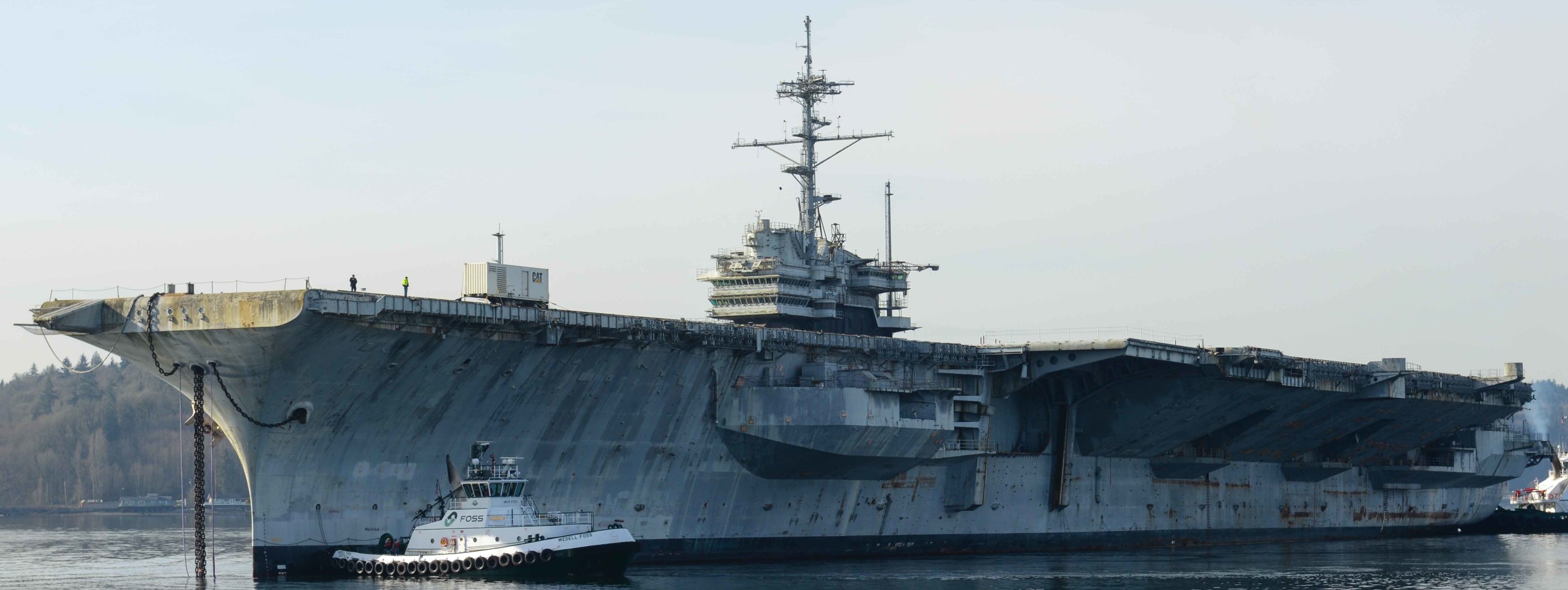 ex USS Ranger was towed away from Bremerton, Washington to Brownsville, Texas for scrap - March 2015 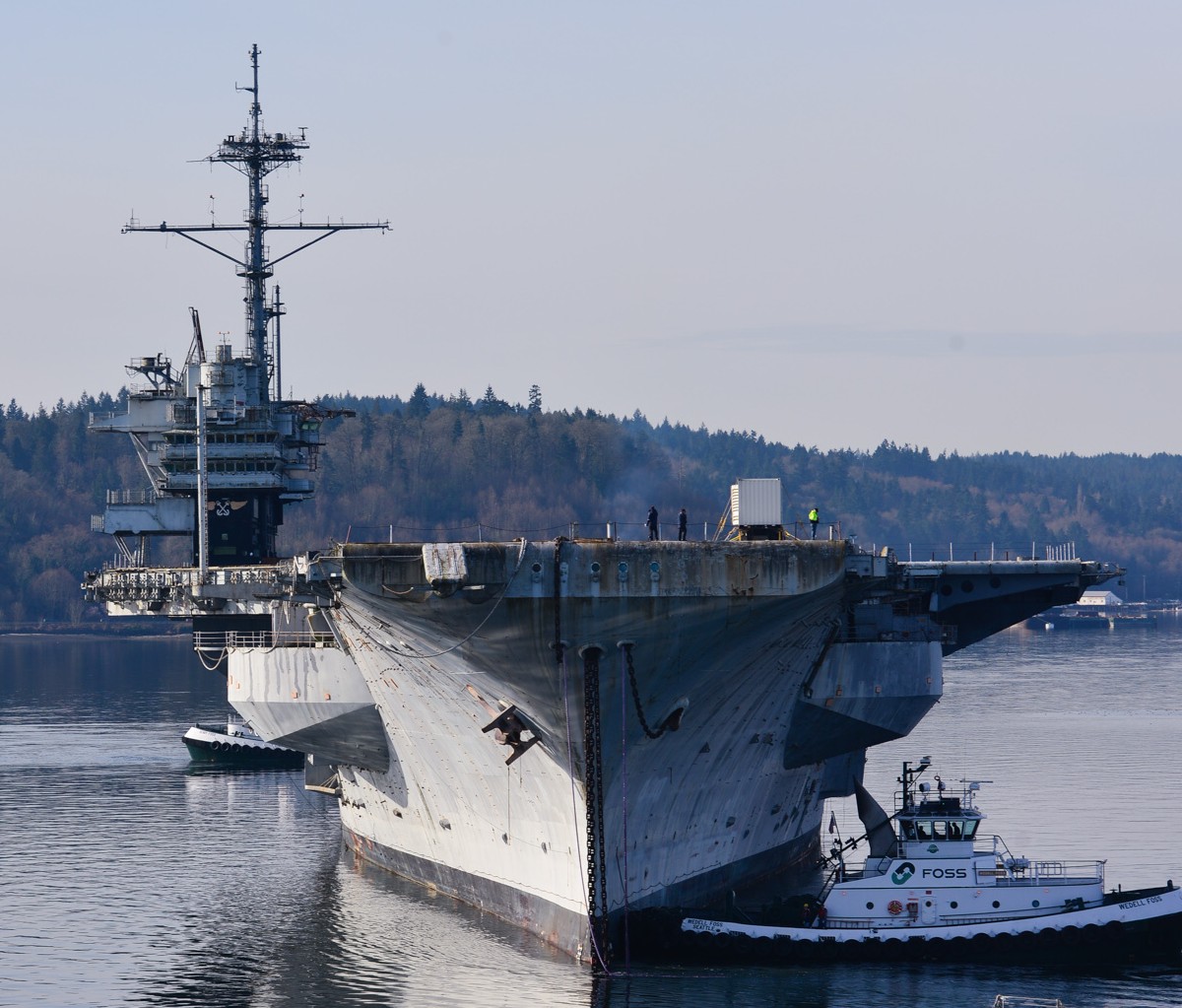 ex USS Ranger was towed away from Bremerton, Washington to Brownsville, Texas for scrap - March 2015 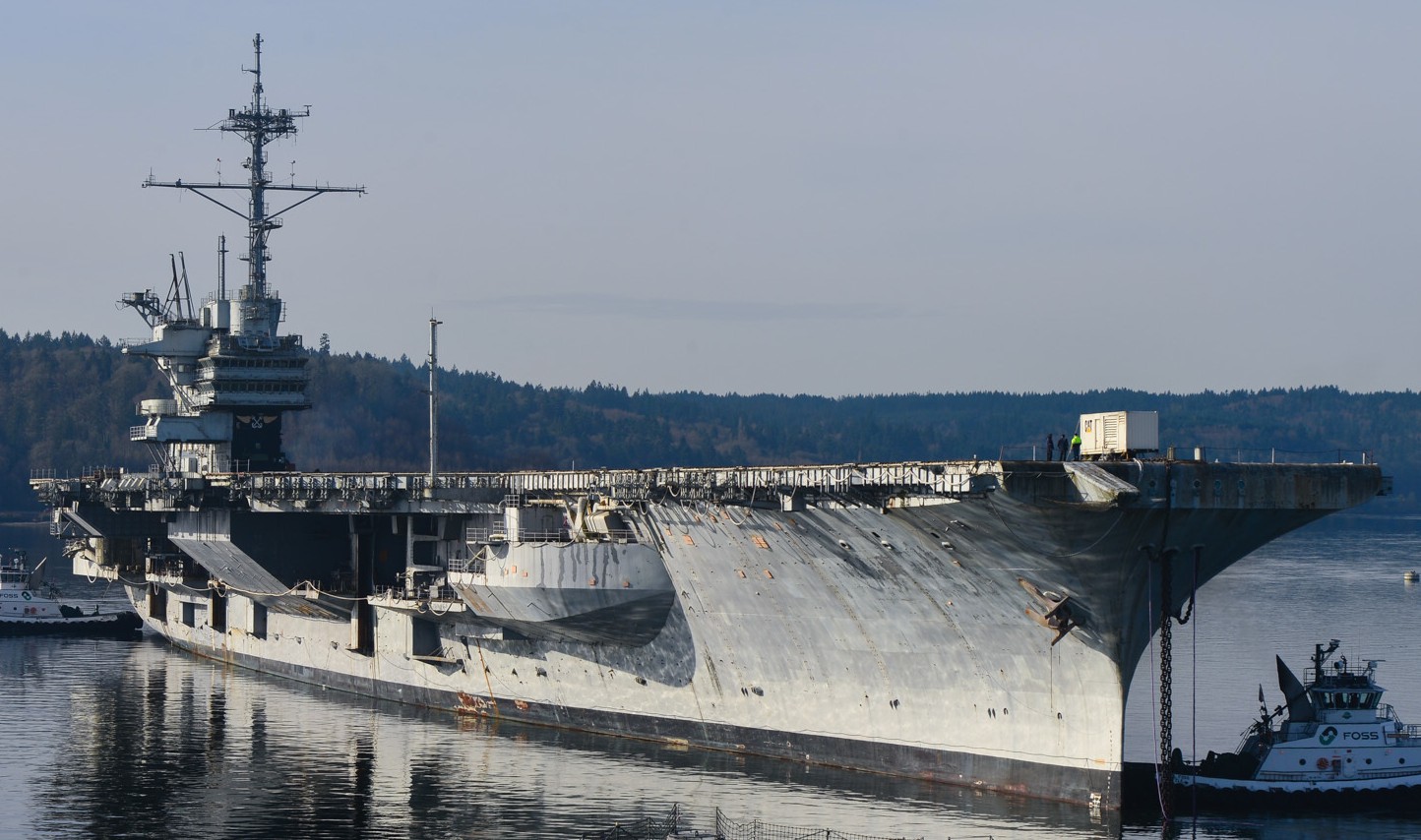 ex USS Ranger was towed away from Bremerton, Washington to Brownsville, Texas for scrap - March 2015 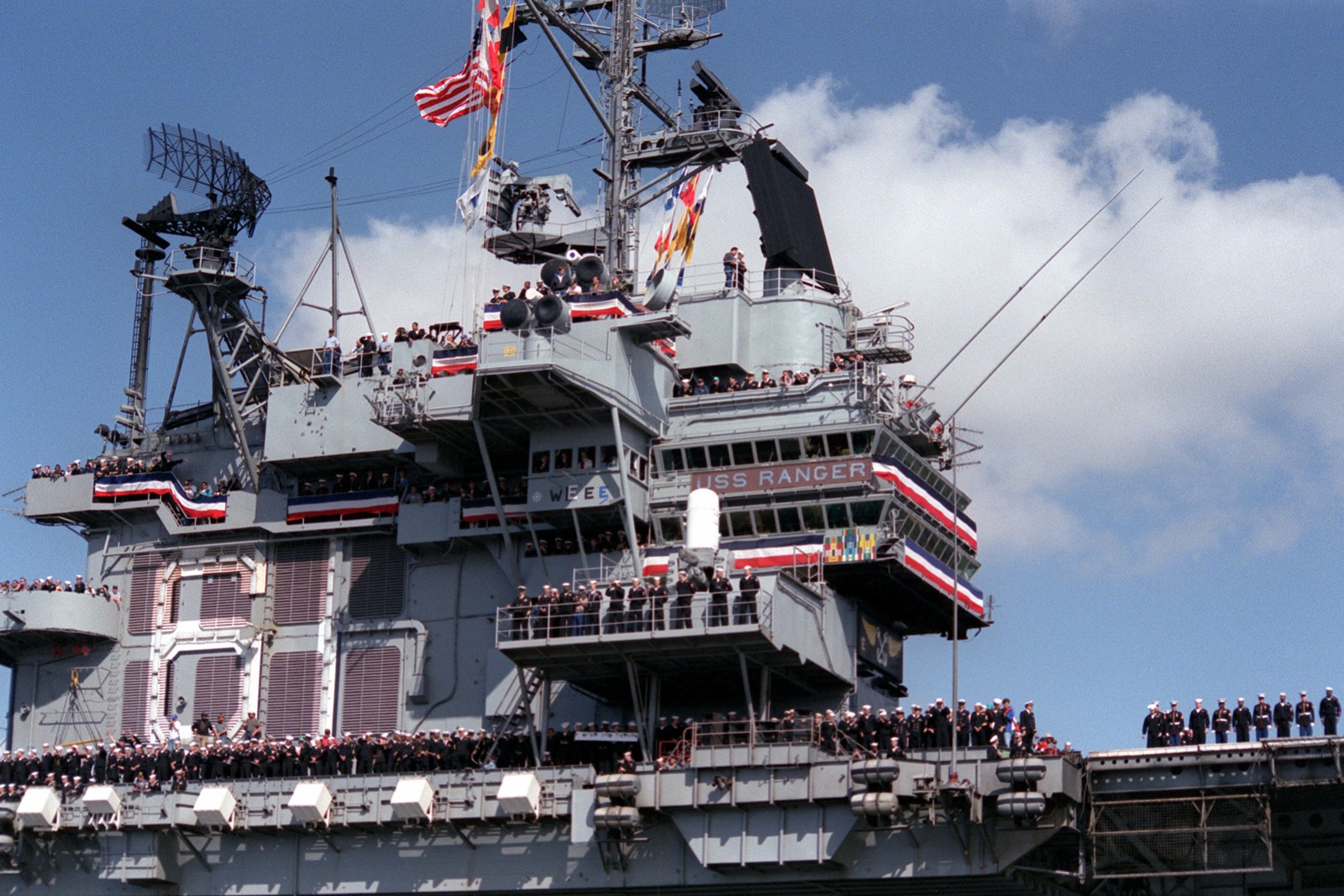 returning to NAS North Island, California after her final deployment - January 31, 1993 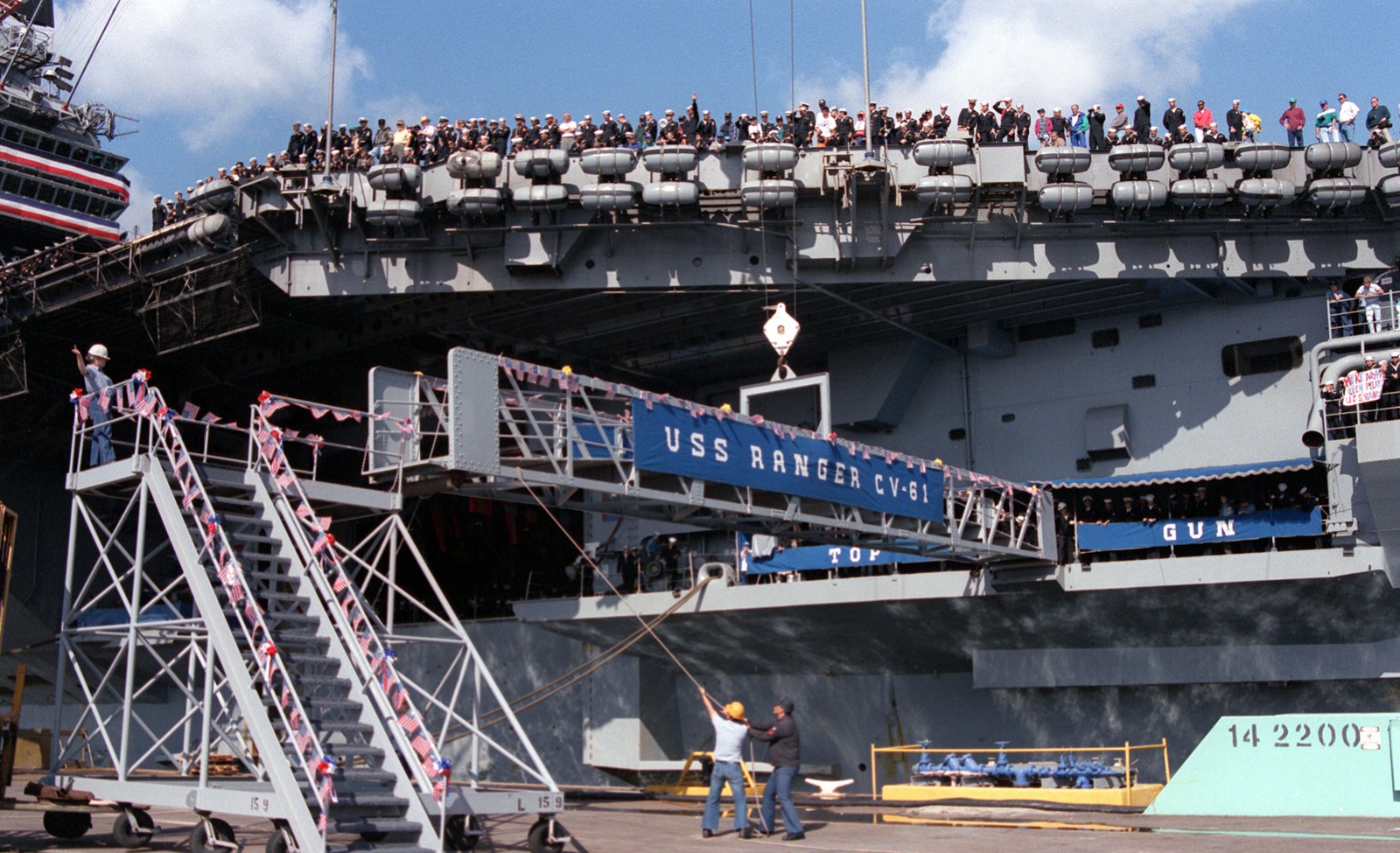 returning to NAS North Island, California after her final deployment - January 31, 1993 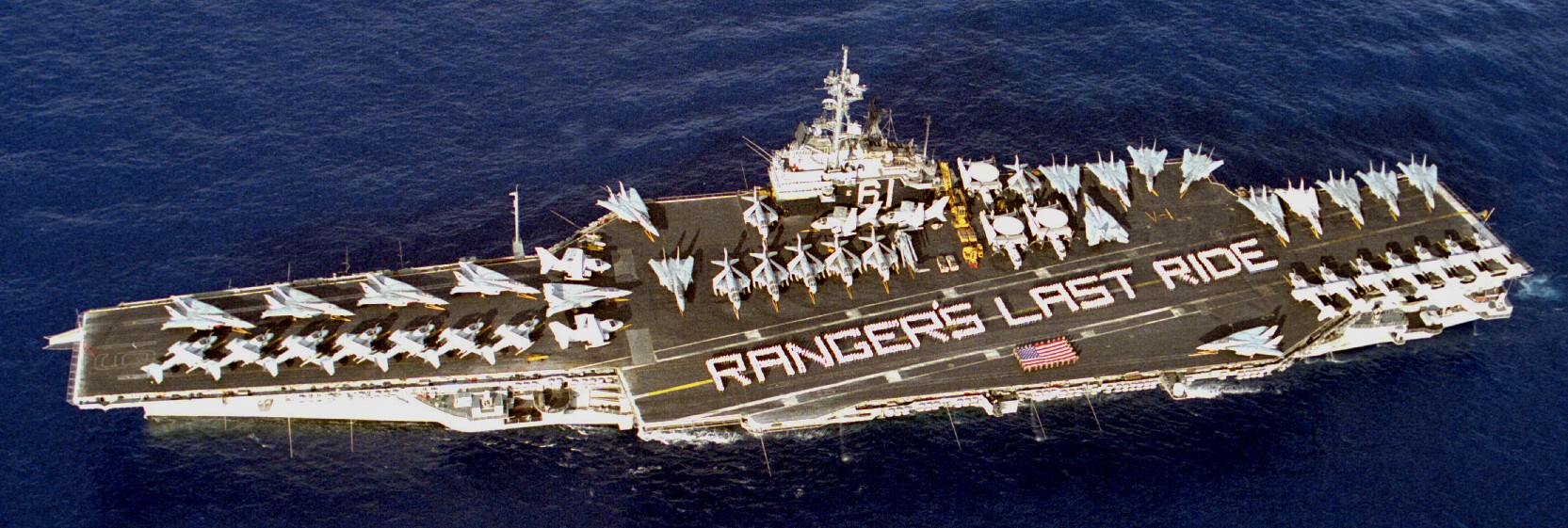 with CVW-2 embarked - Pacific Ocean - January 1993 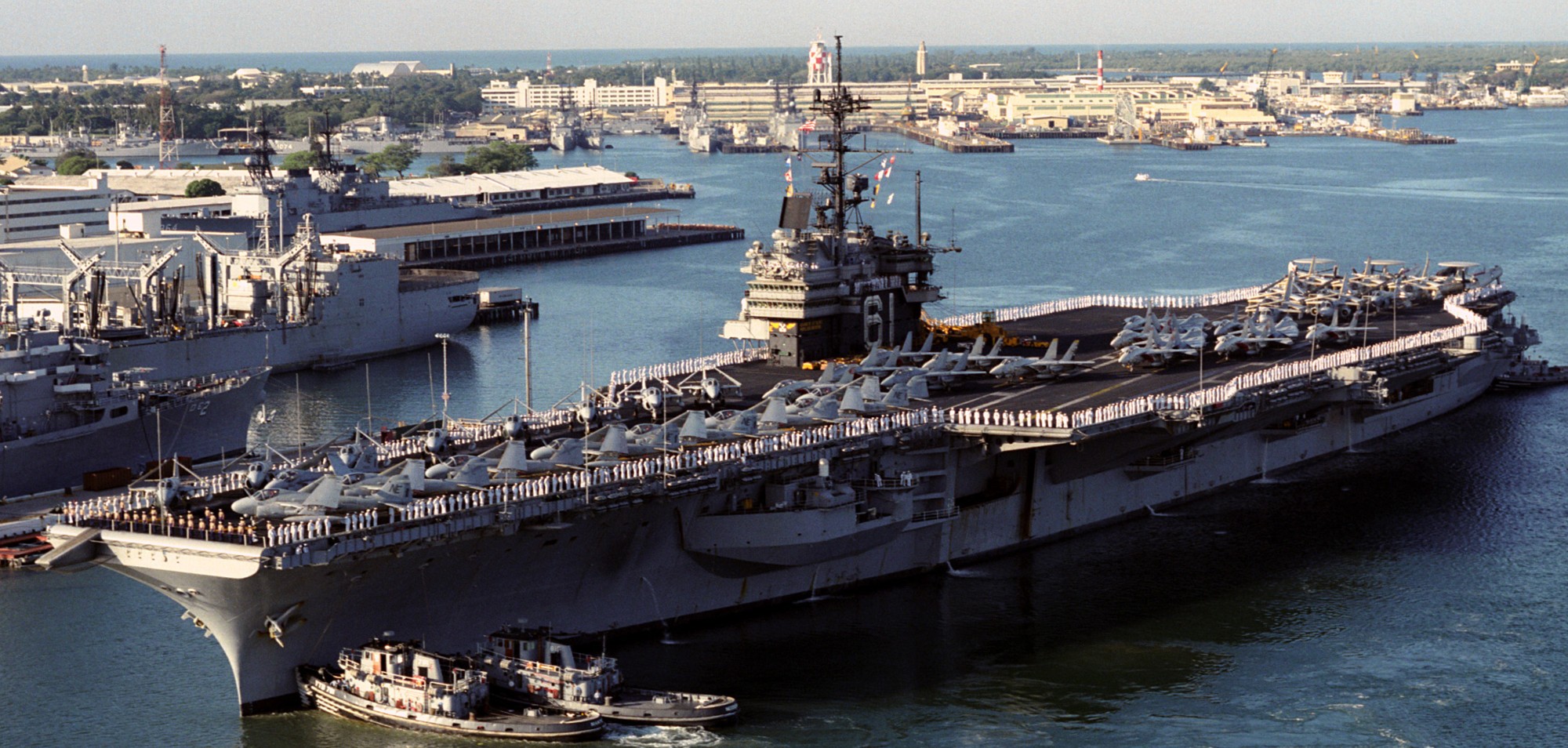 with CVW-2 embarked - Pearl Harbor, Hawaii - January 1993 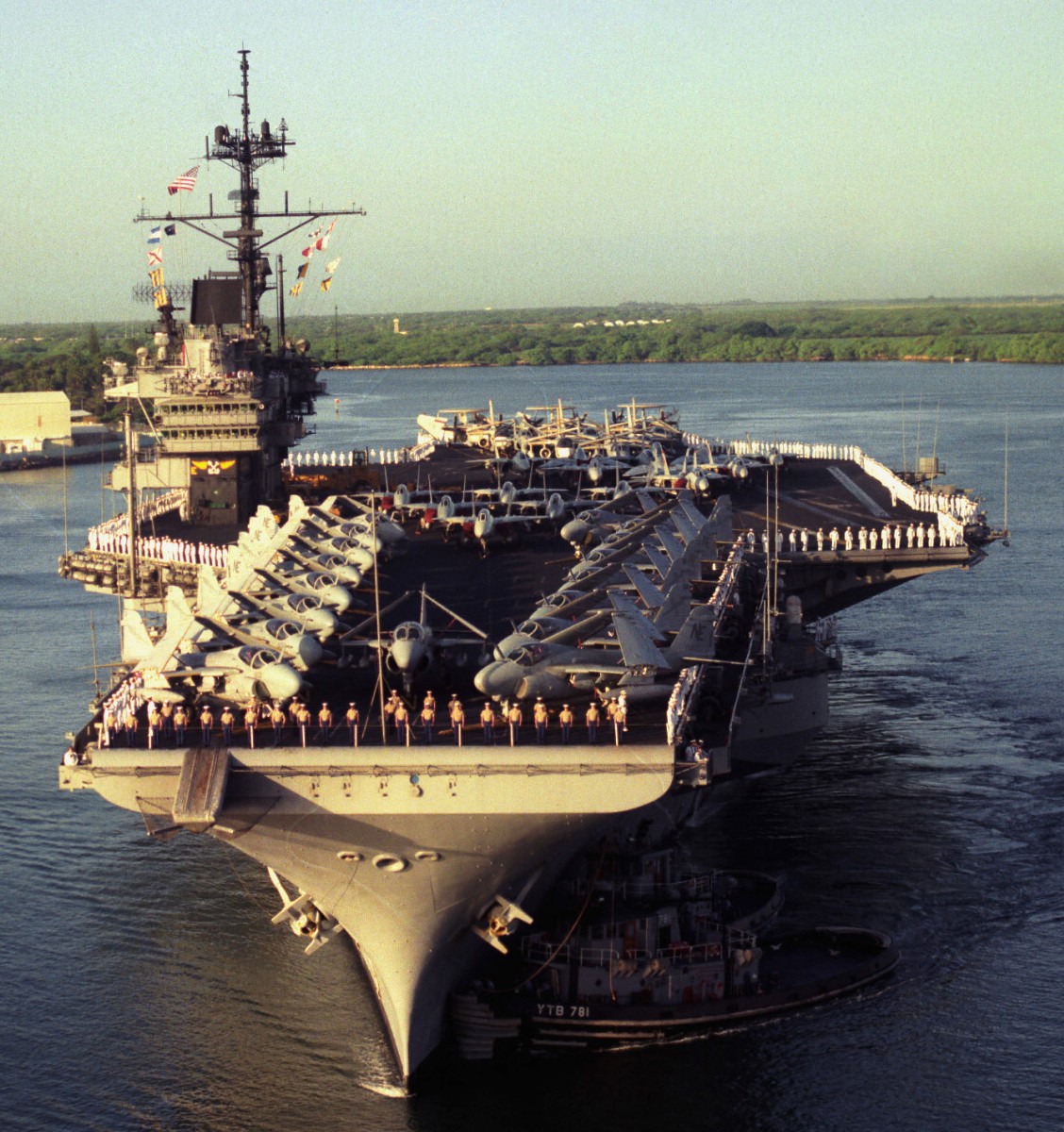 with CVW-2 embarked - Pearl Harbor, Hawaii - January 1993 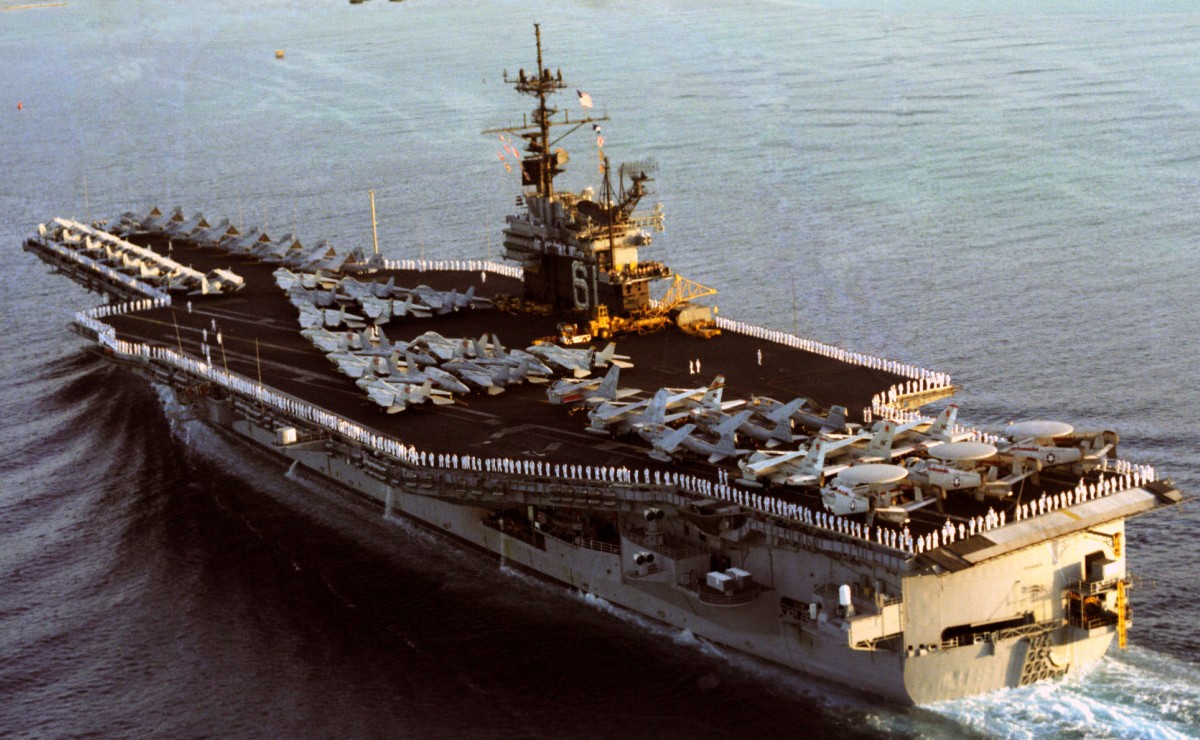 with CVW-2 embarked - Pearl Harbor, Hawaii - January 1993 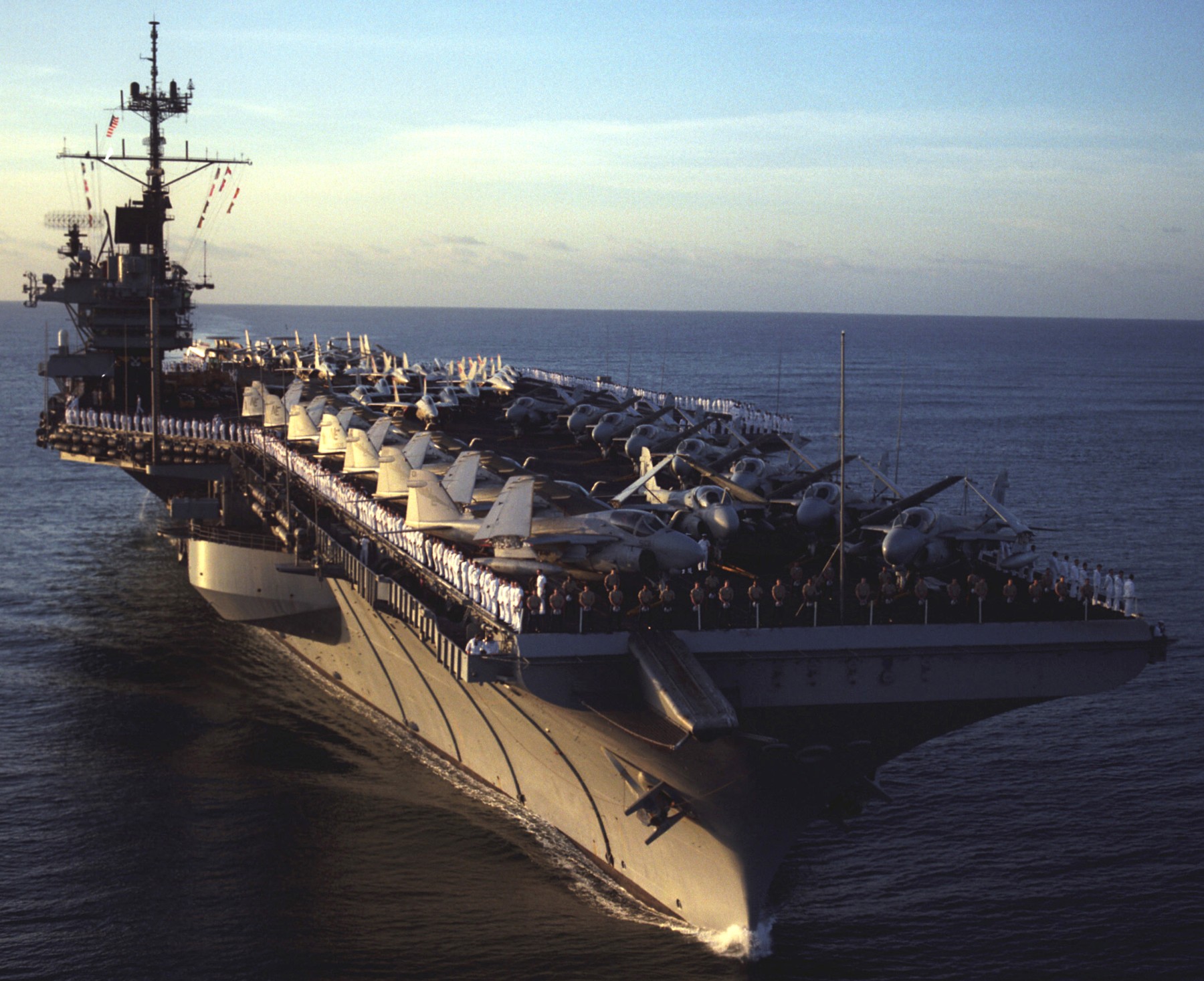 with CVW-2 embarked - off Hawaii - January 1993 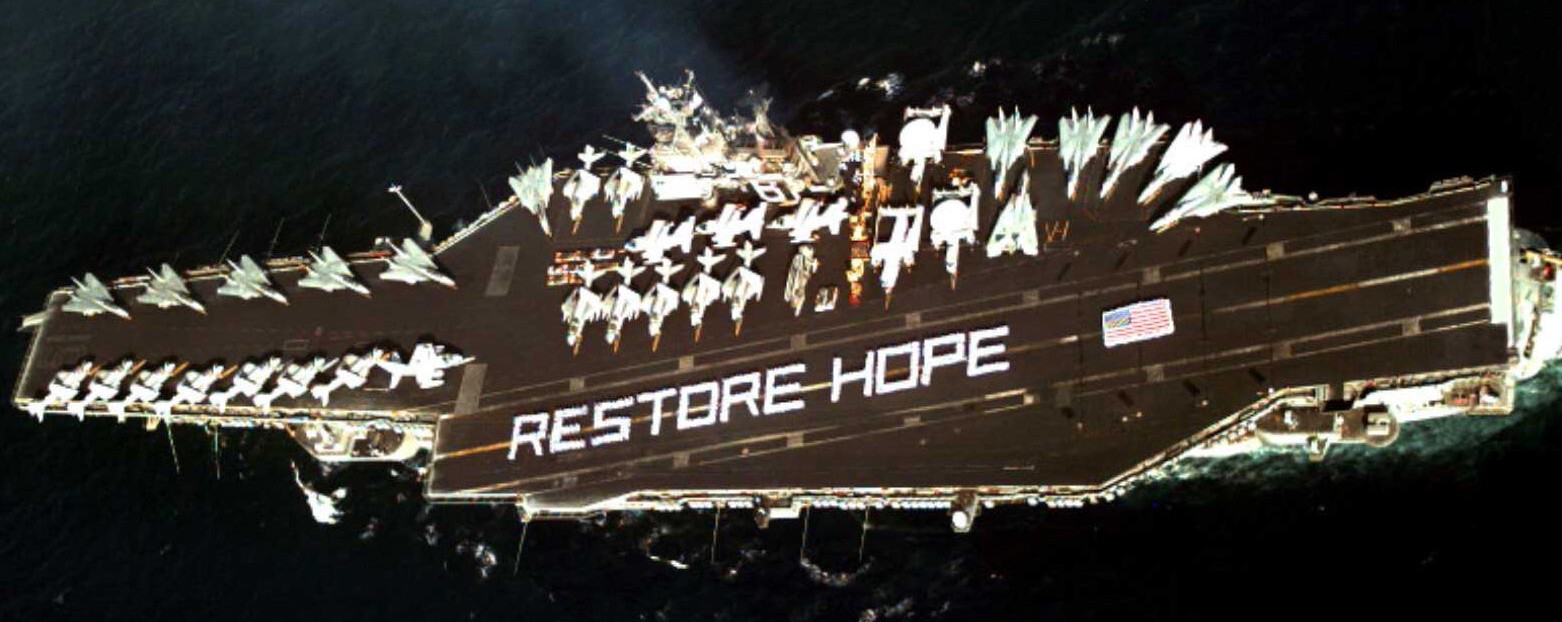 with CVW-2 embarked - Operation Restore Hope - off Somalia - 1992 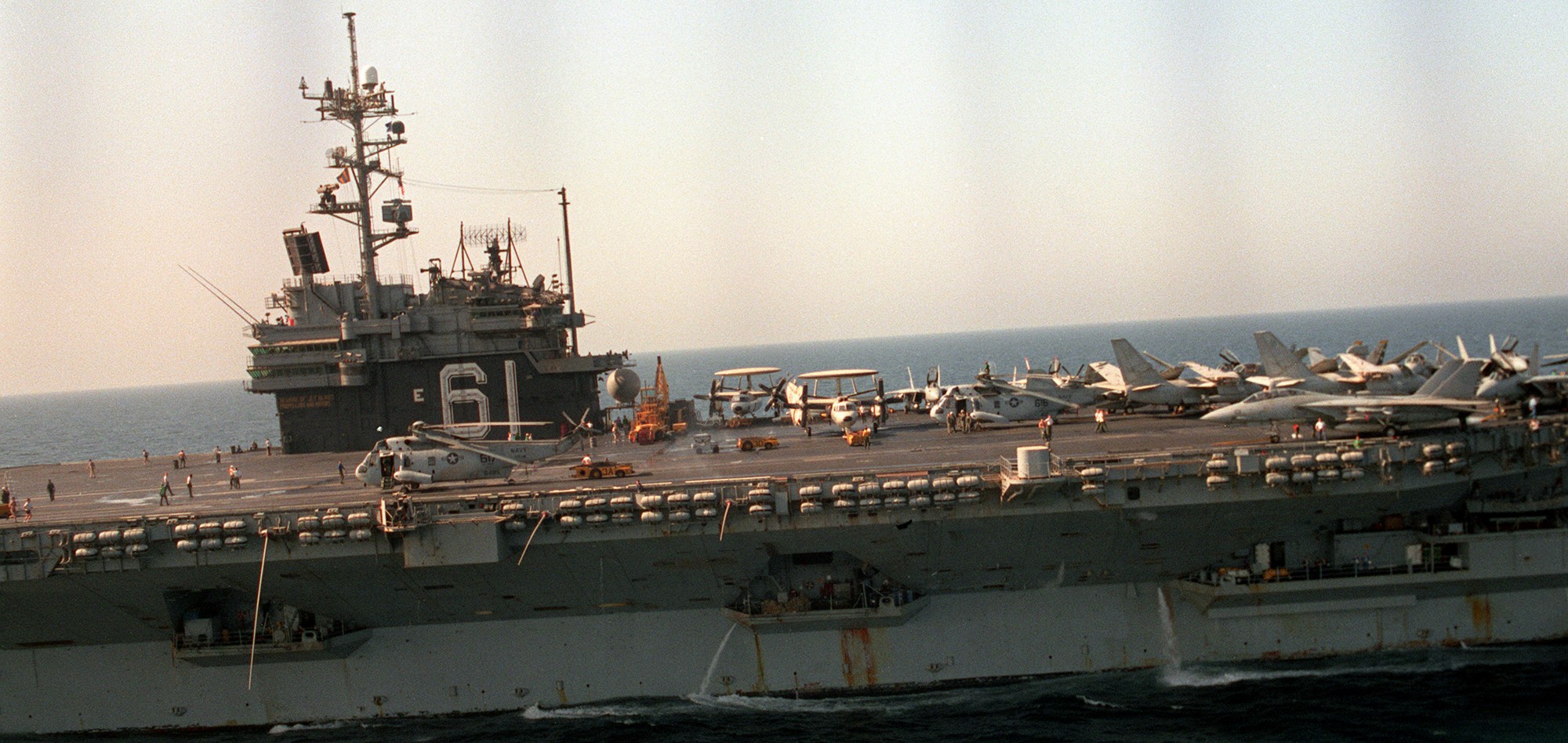 with CVW-2 embarked - Arabian Sea - October 1992 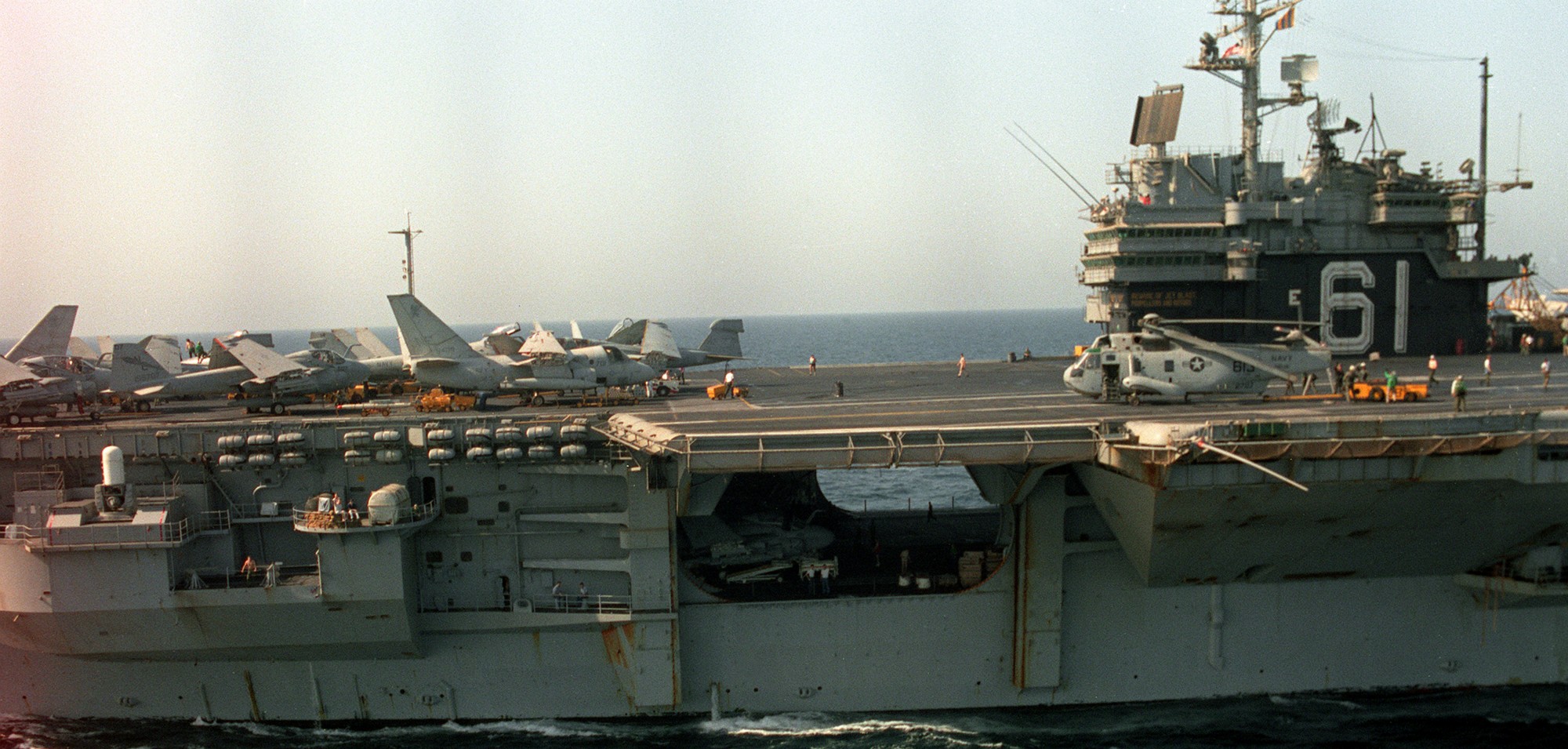 with CVW-2 embarked - Arabian Sea - October 1992  with CVW-2 embarked - Arabian Sea - October 1992 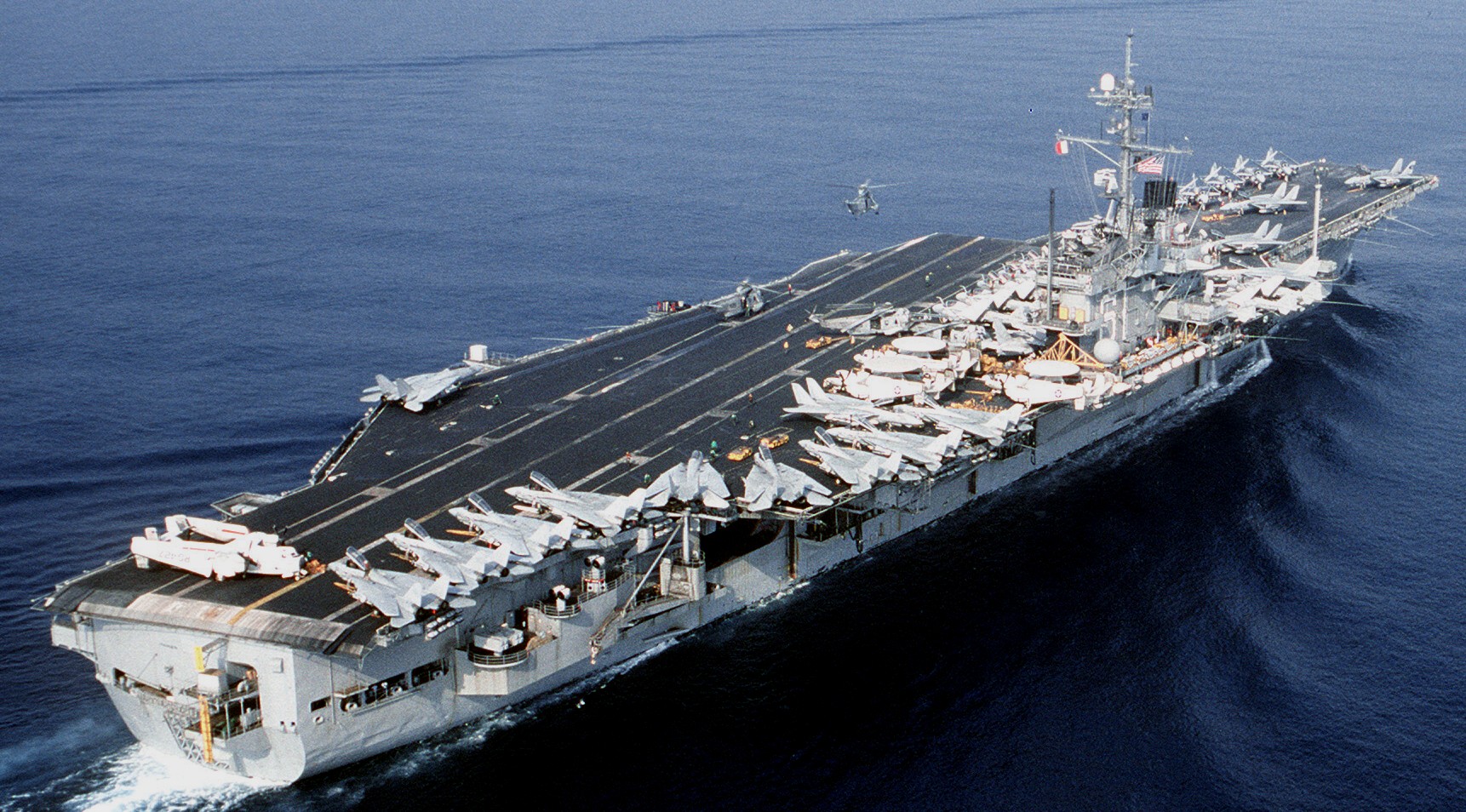 with CVW-2 embarked - Operation Southern Watch - September 1992  with CVW-2 embarked - Operation Southern Watch - September 1992 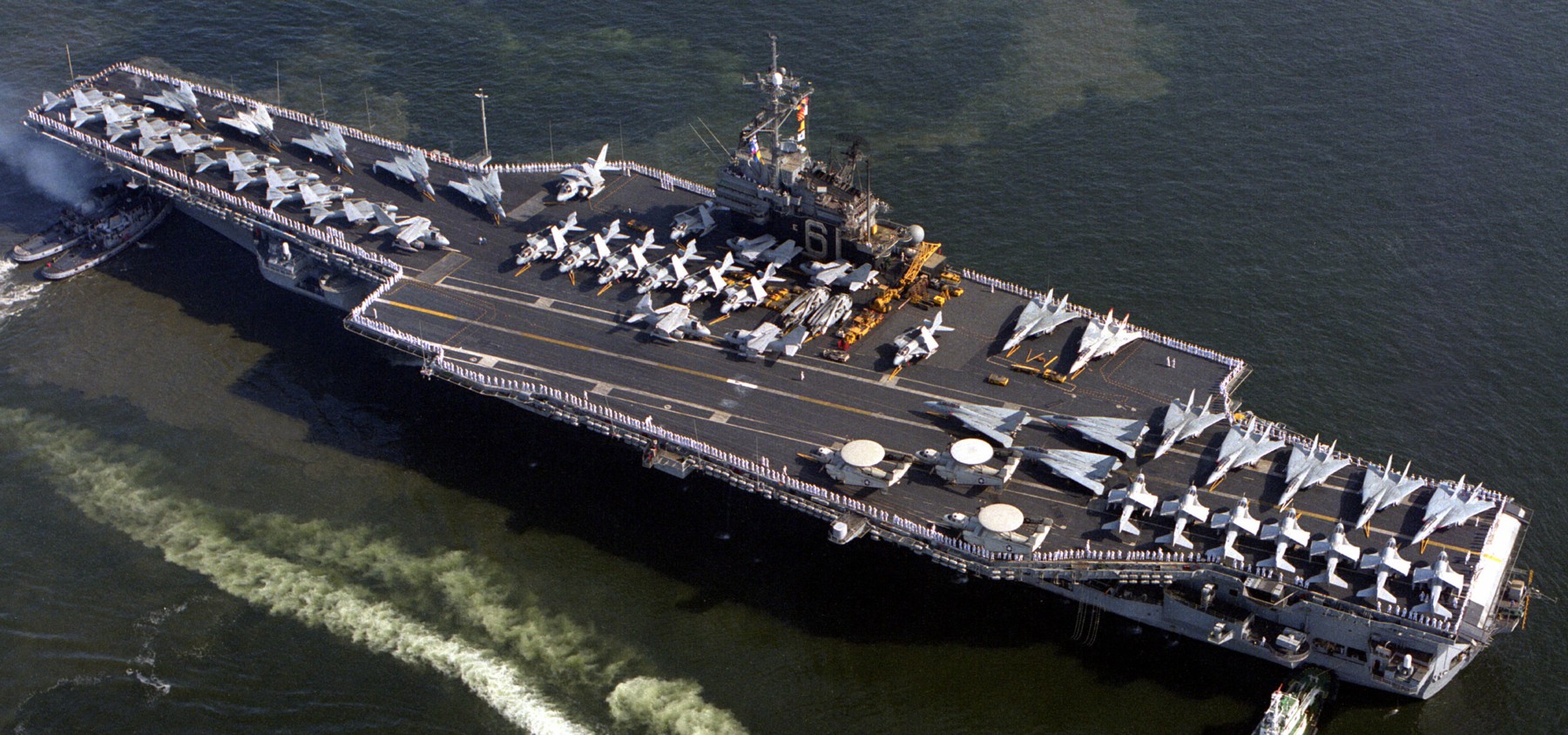 with CVW-2 embarked - Yokosuka, Japan - August 1992 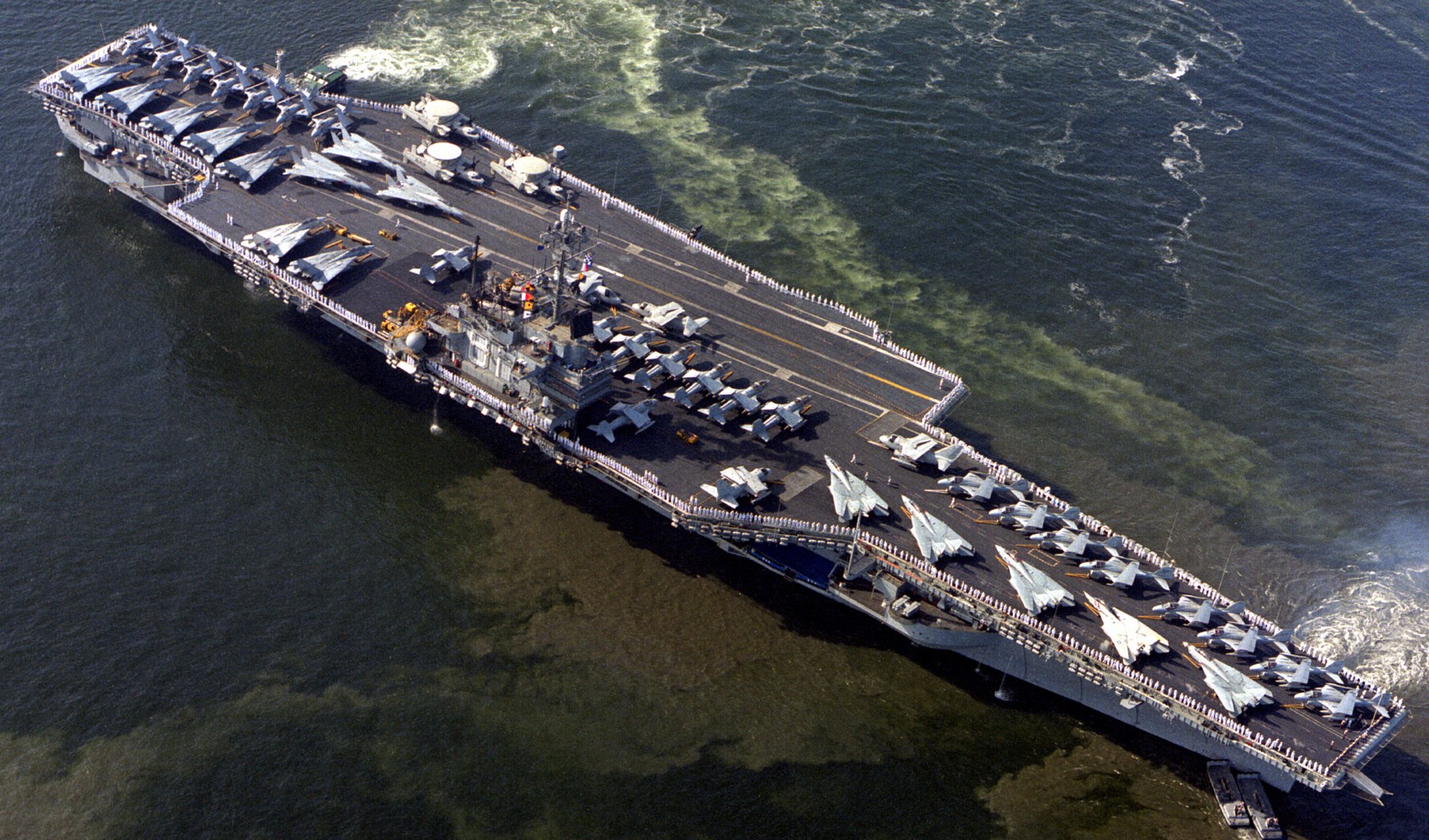 with CVW-2 embarked - Yokosuka, Japan - August 1992 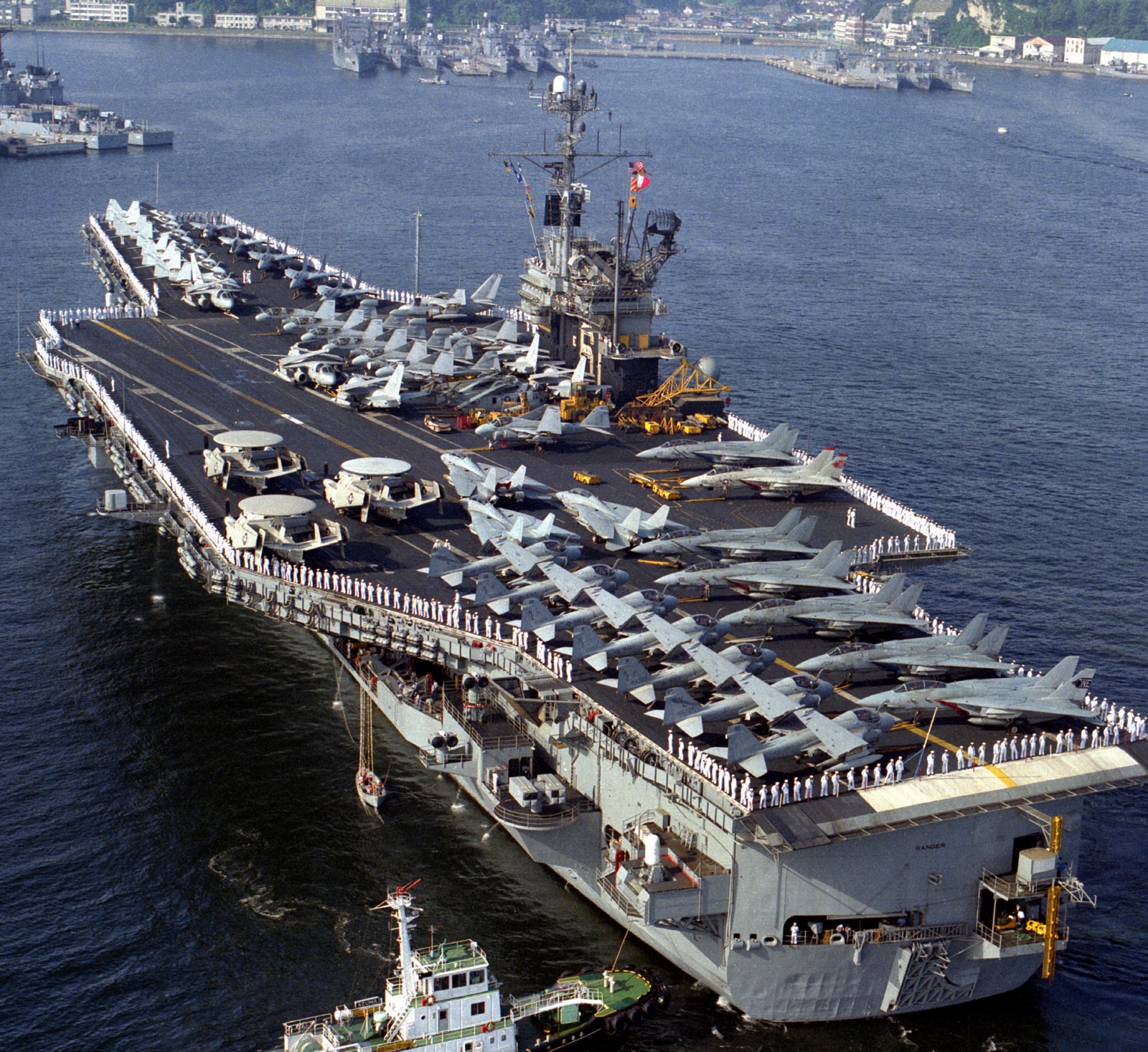 with CVW-2 embarked - Yokosuka, Japan - August 1992 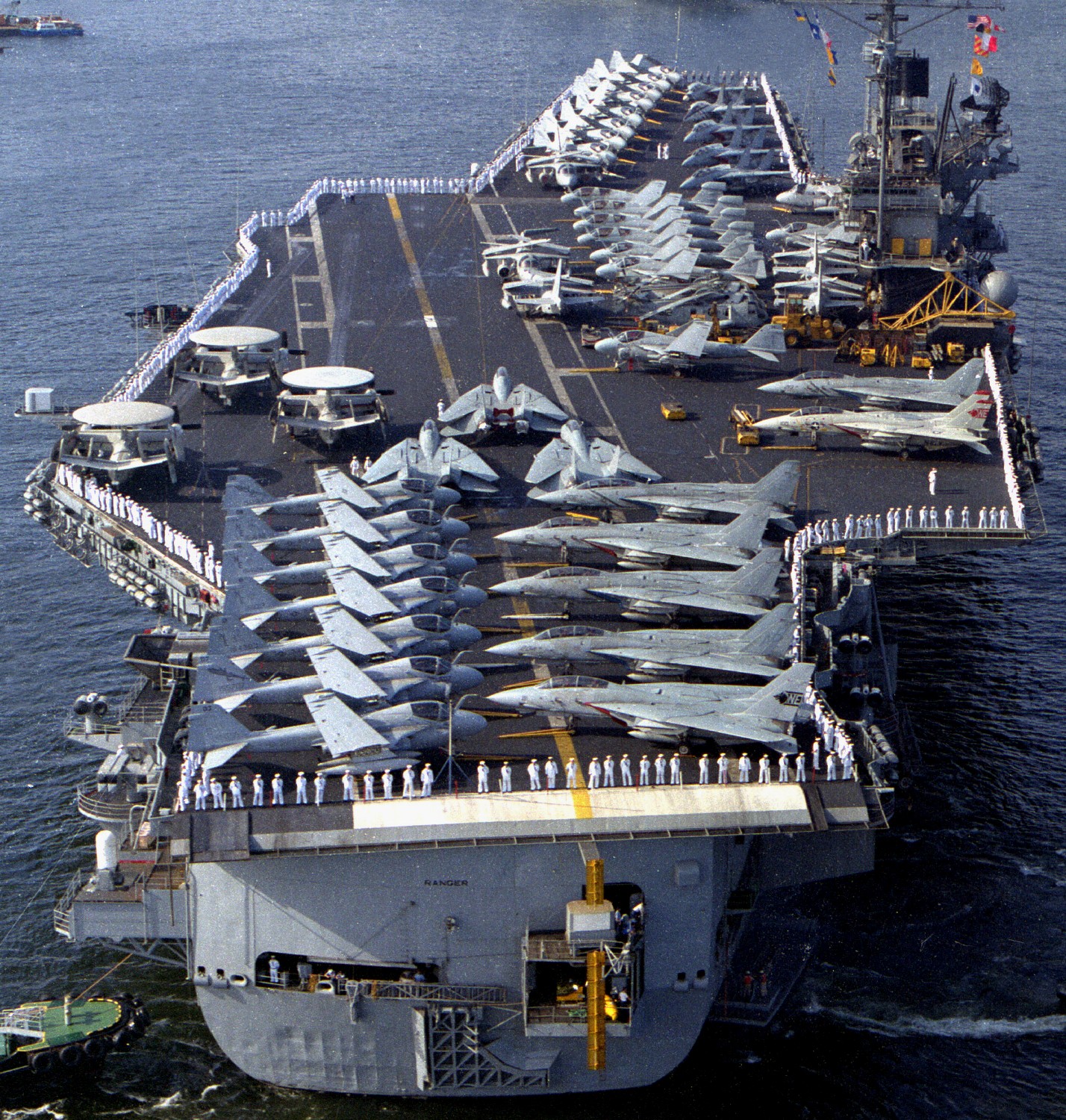 with CVW-2 embarked - Yokosuka, Japan - August 1992 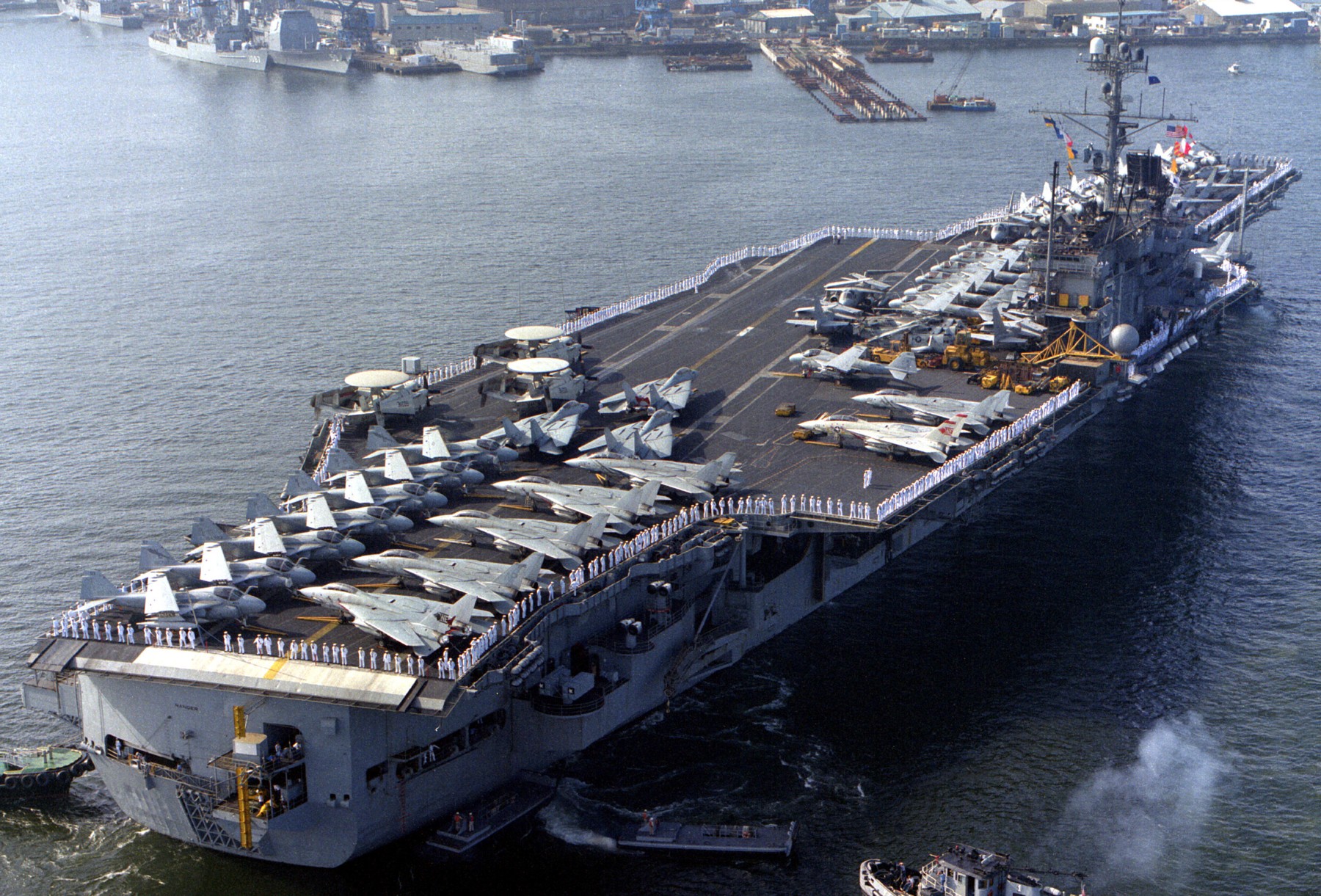 with CVW-2 embarked - Yokosuka, Japan - August 1992 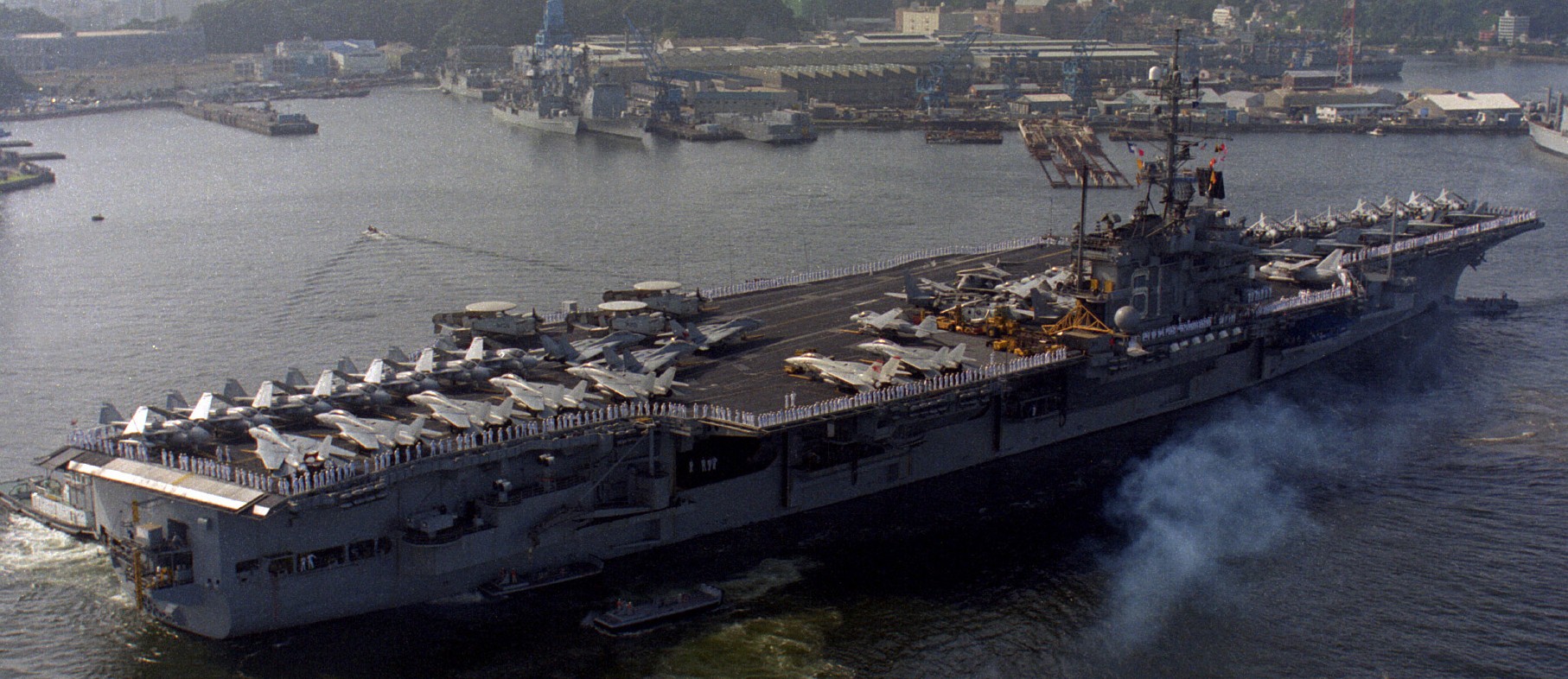 with CVW-2 embarked - Yokosuka, Japan - August 1992  with CVW-2 embarked - Yokosuka, Japan - August 1992 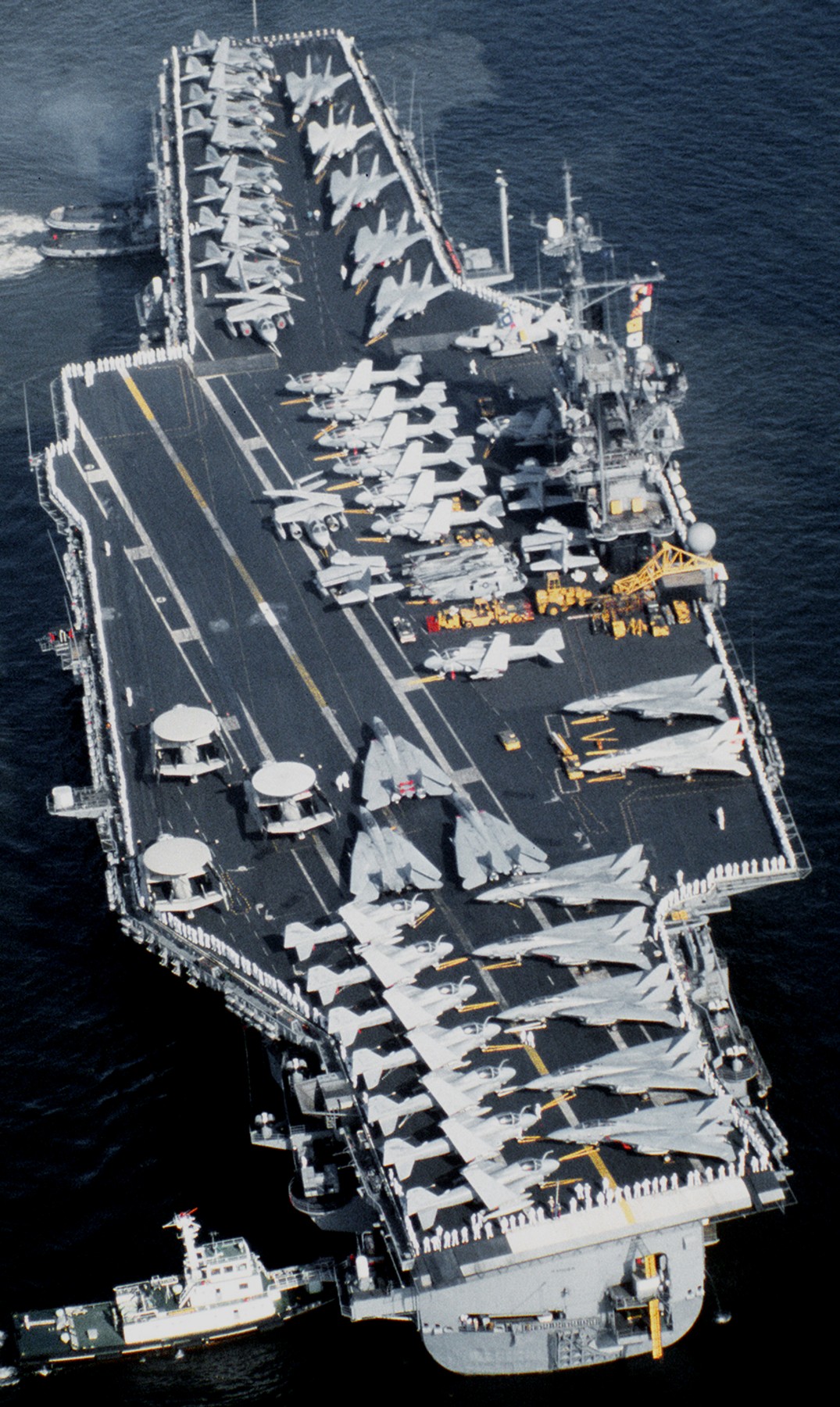 with CVW-2 embarked - Yokosuka, Japan - August 1992 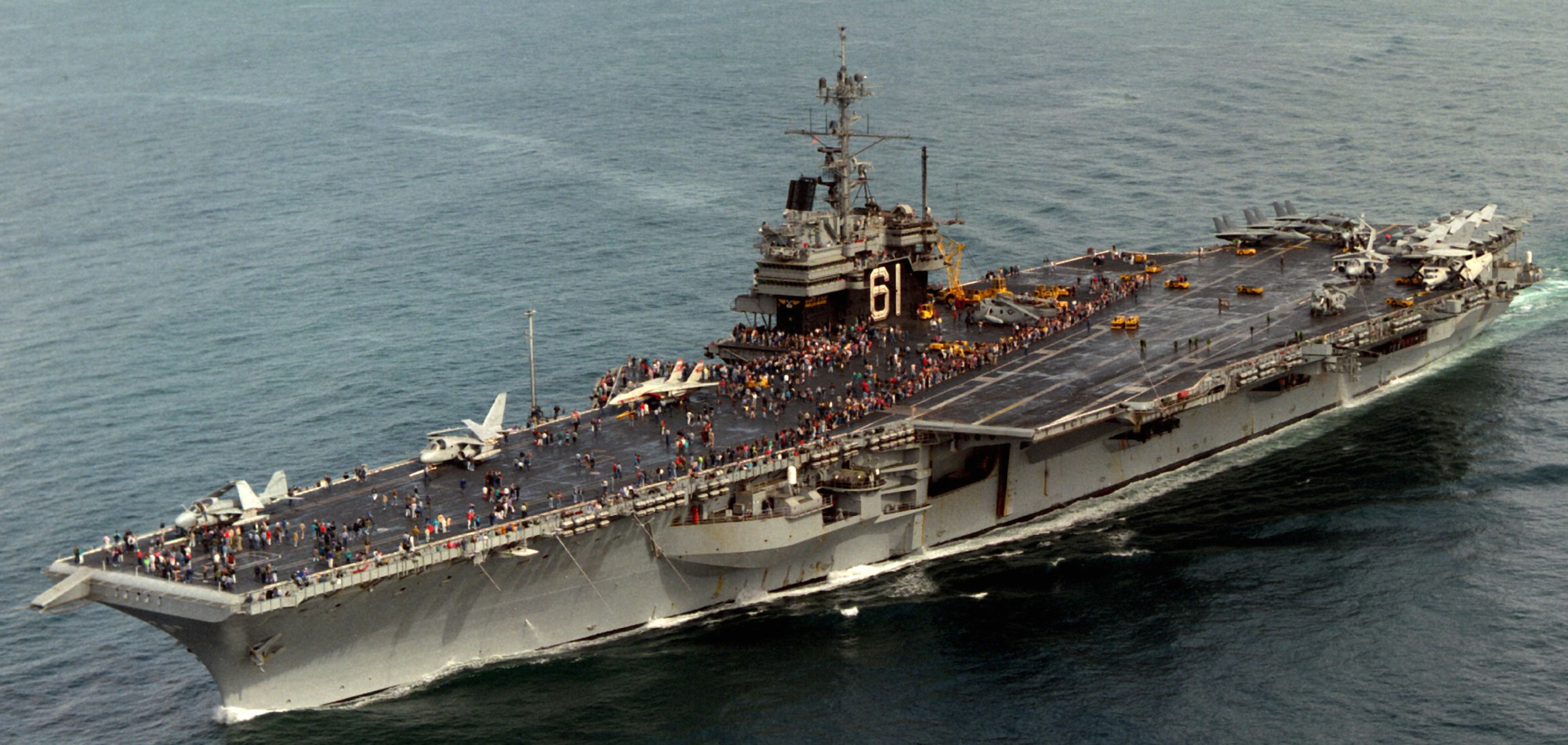 dependents cruise - off California - May 1992 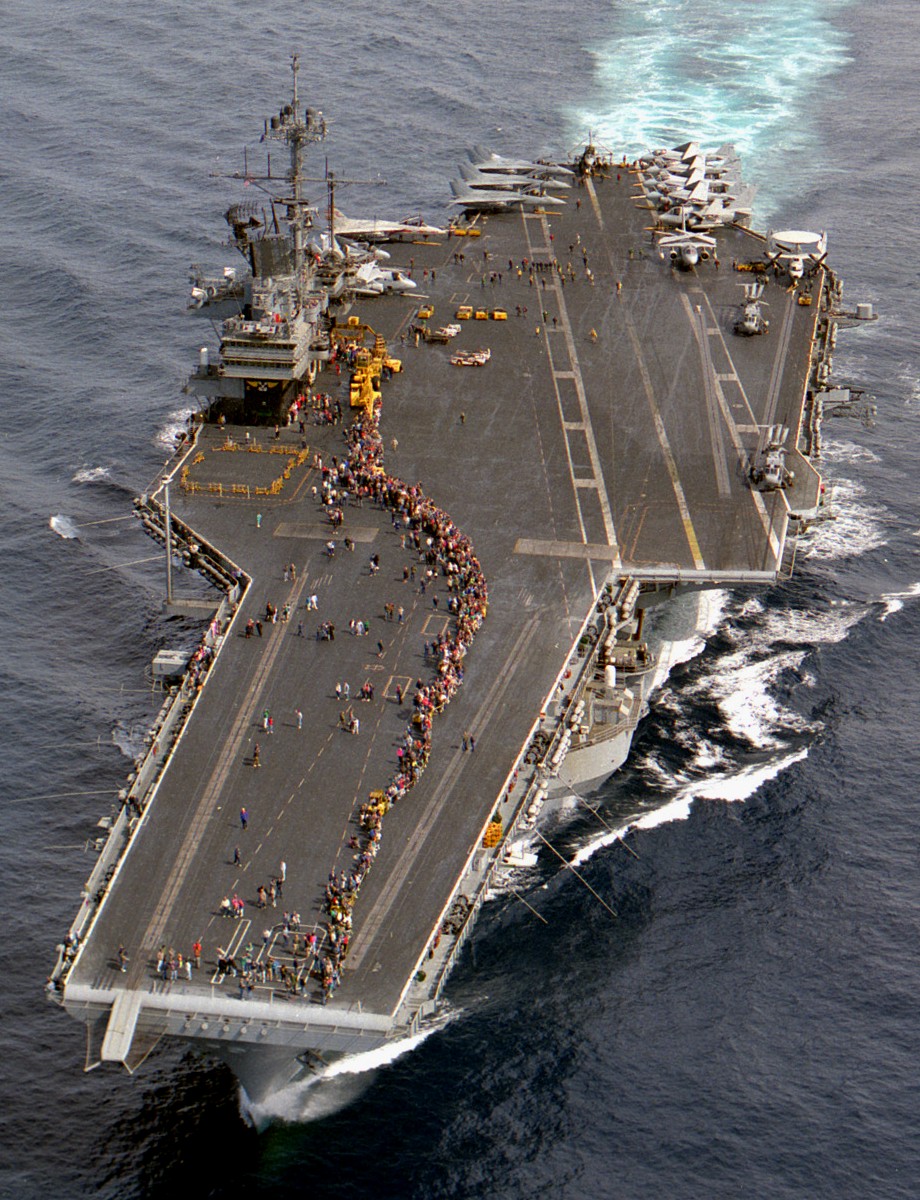 dependents cruise - off California - May 1992 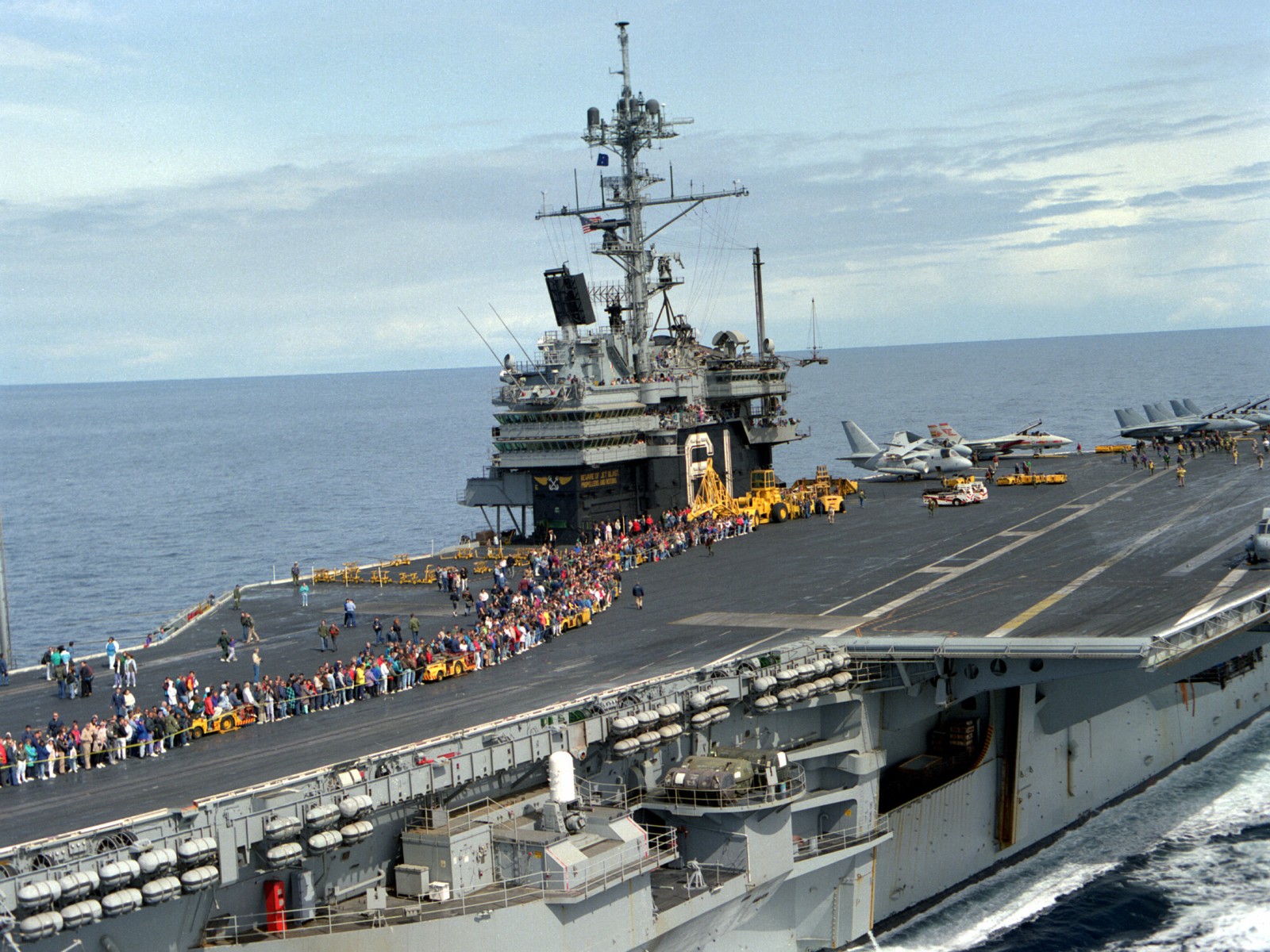 dependents cruise - off California - May 1992 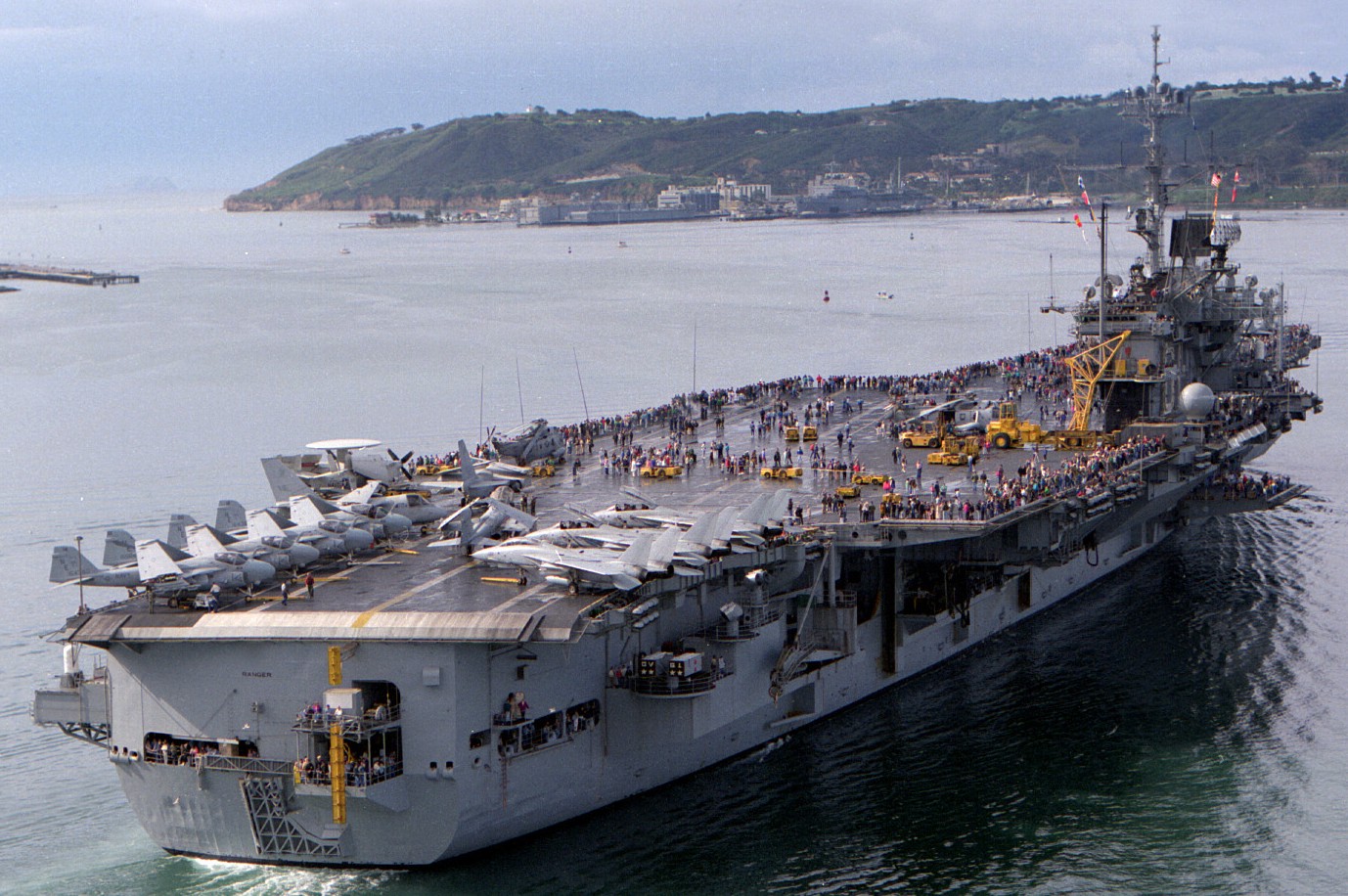 departing San Diego for a dependents cruise - May 1992 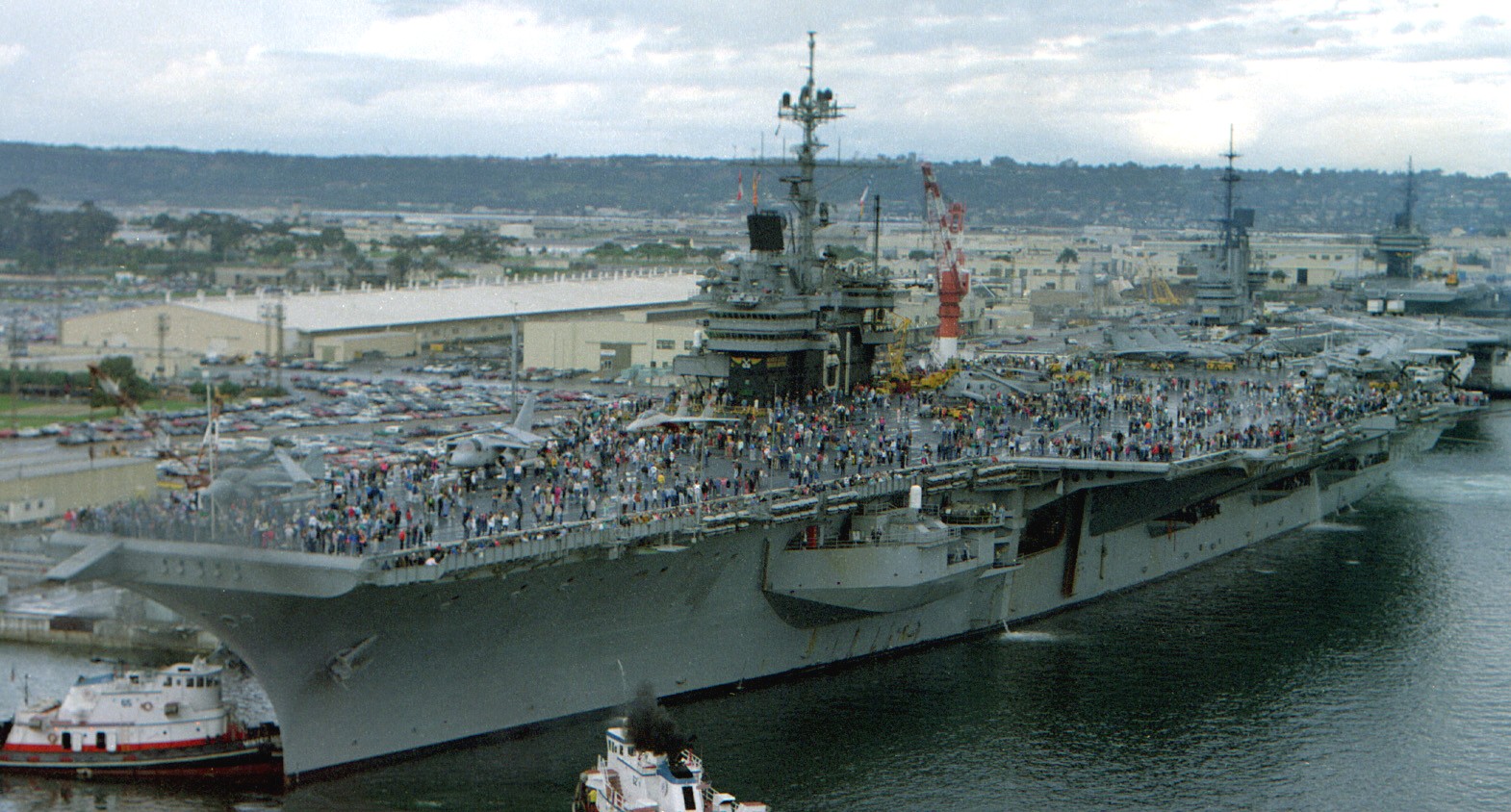 departing NAS North Island, California for a dependents cruise - May 1992 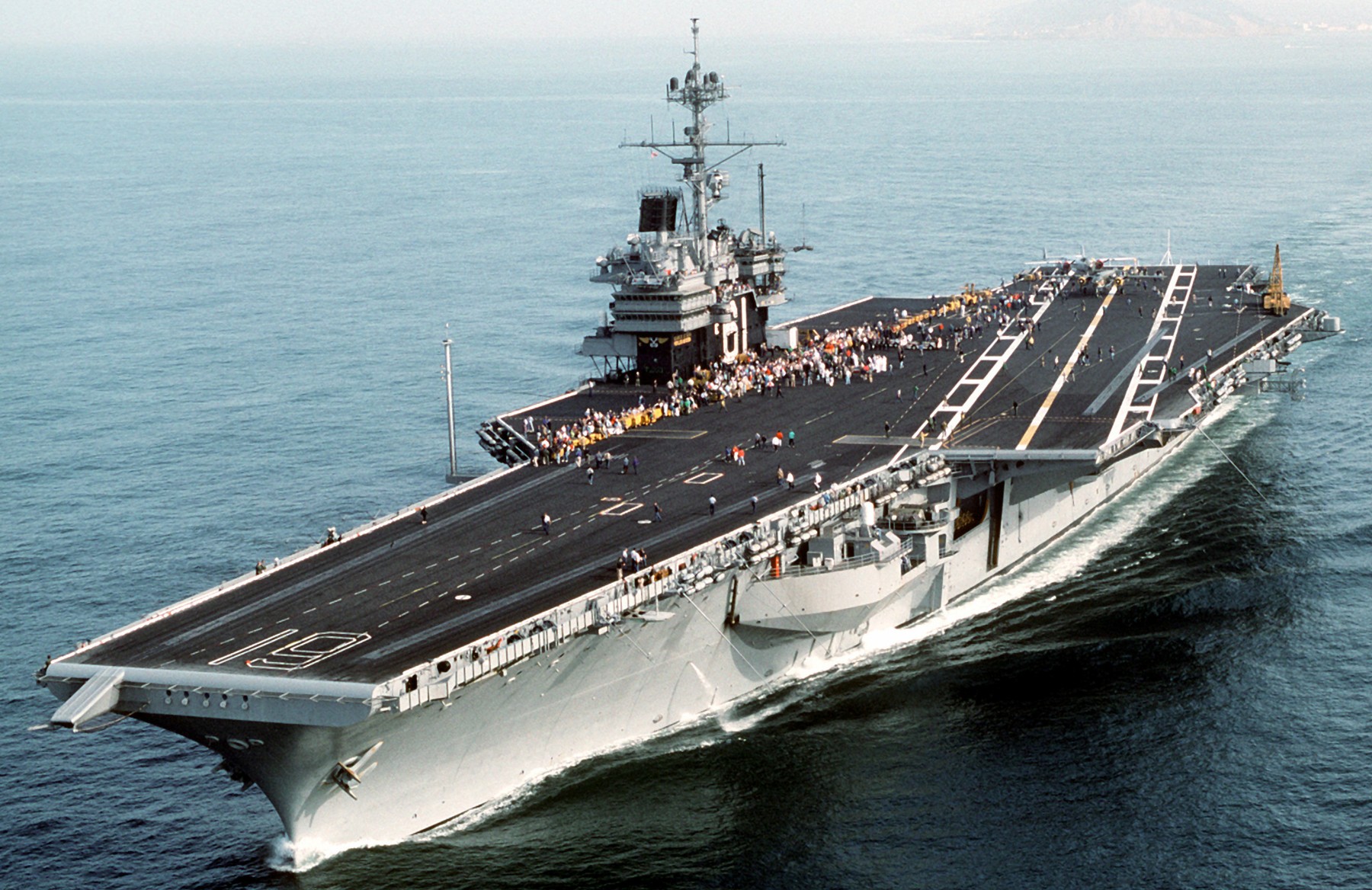 B-25 Mitchell bombers prepare to launch from USS Ranger, celebrating the 50th anniversary of the Doolittle Raid on April 18, 1942 - off California - April 1992 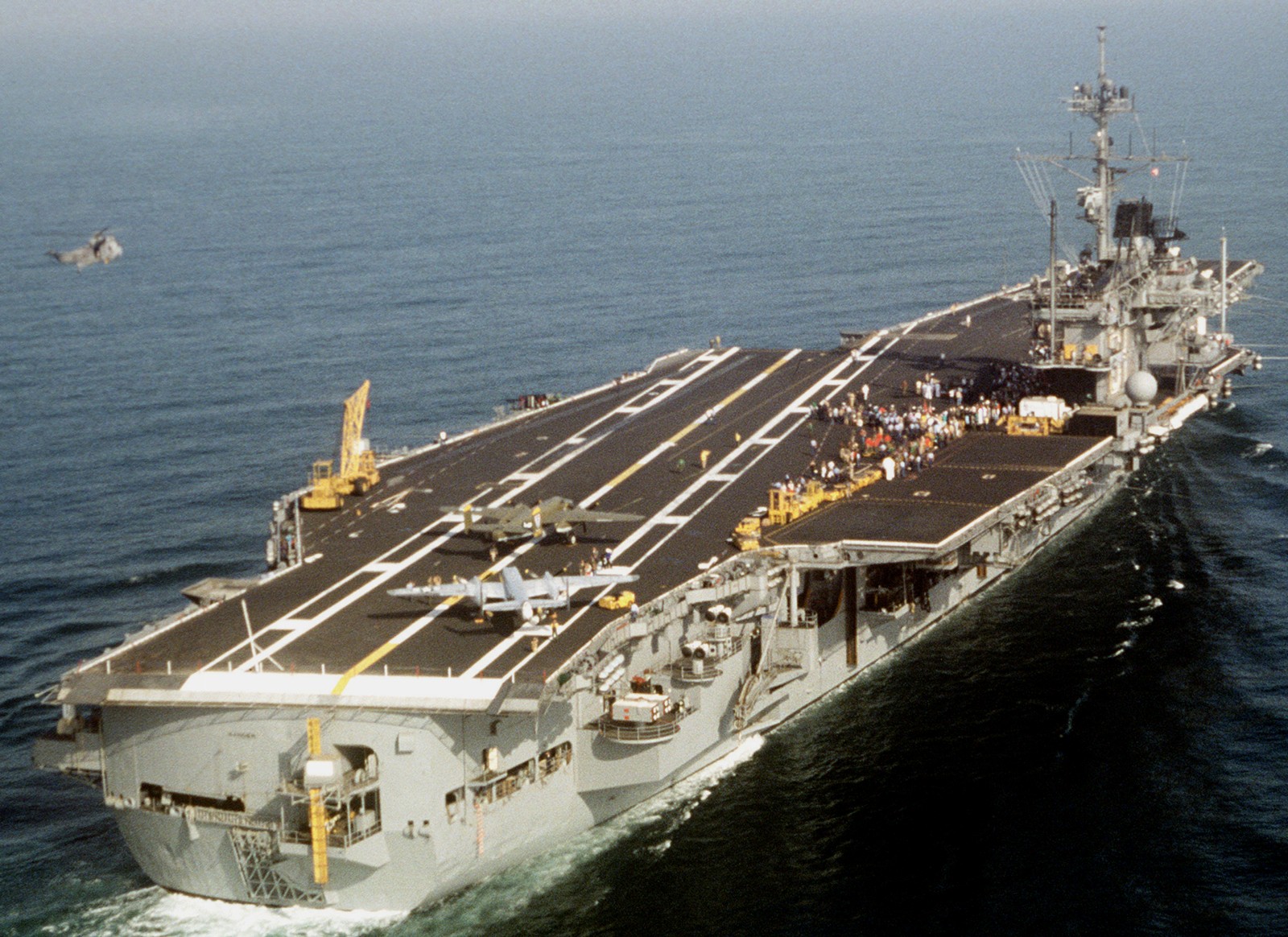 B-25 Mitchell bombers prepare to launch from USS Ranger, celebrating the 50th anniversary of the Doolittle Raid on April 18, 1942 - April 1992 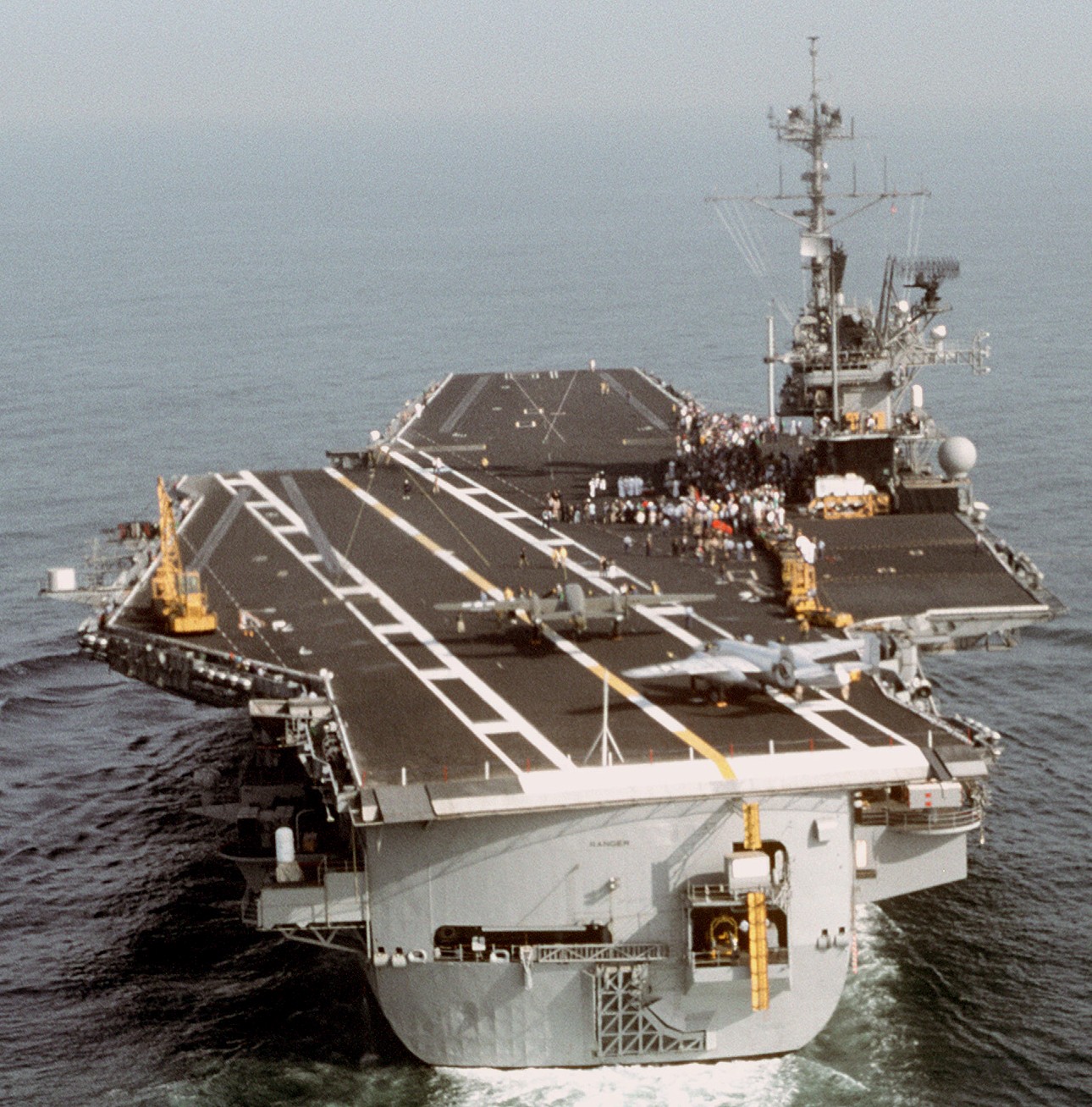 B-25 Mitchell bombers prepare to launch from USS Ranger, celebrating the 50th anniversary of the Doolittle Raid on April 18, 1942 - April 1992 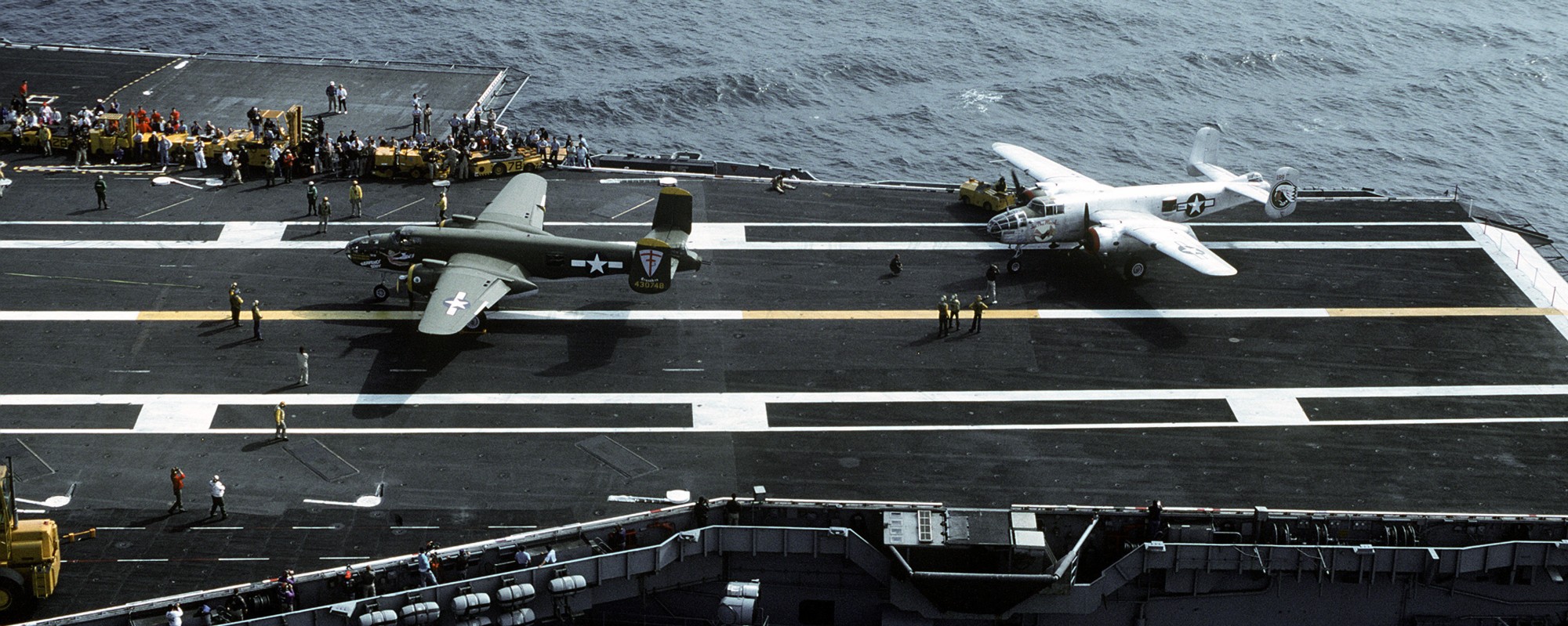 B-25 Mitchell bombers prepare to launch from USS Ranger, celebrating the 50th anniversary of the Doolittle Raid on April 18, 1942 - April 1992 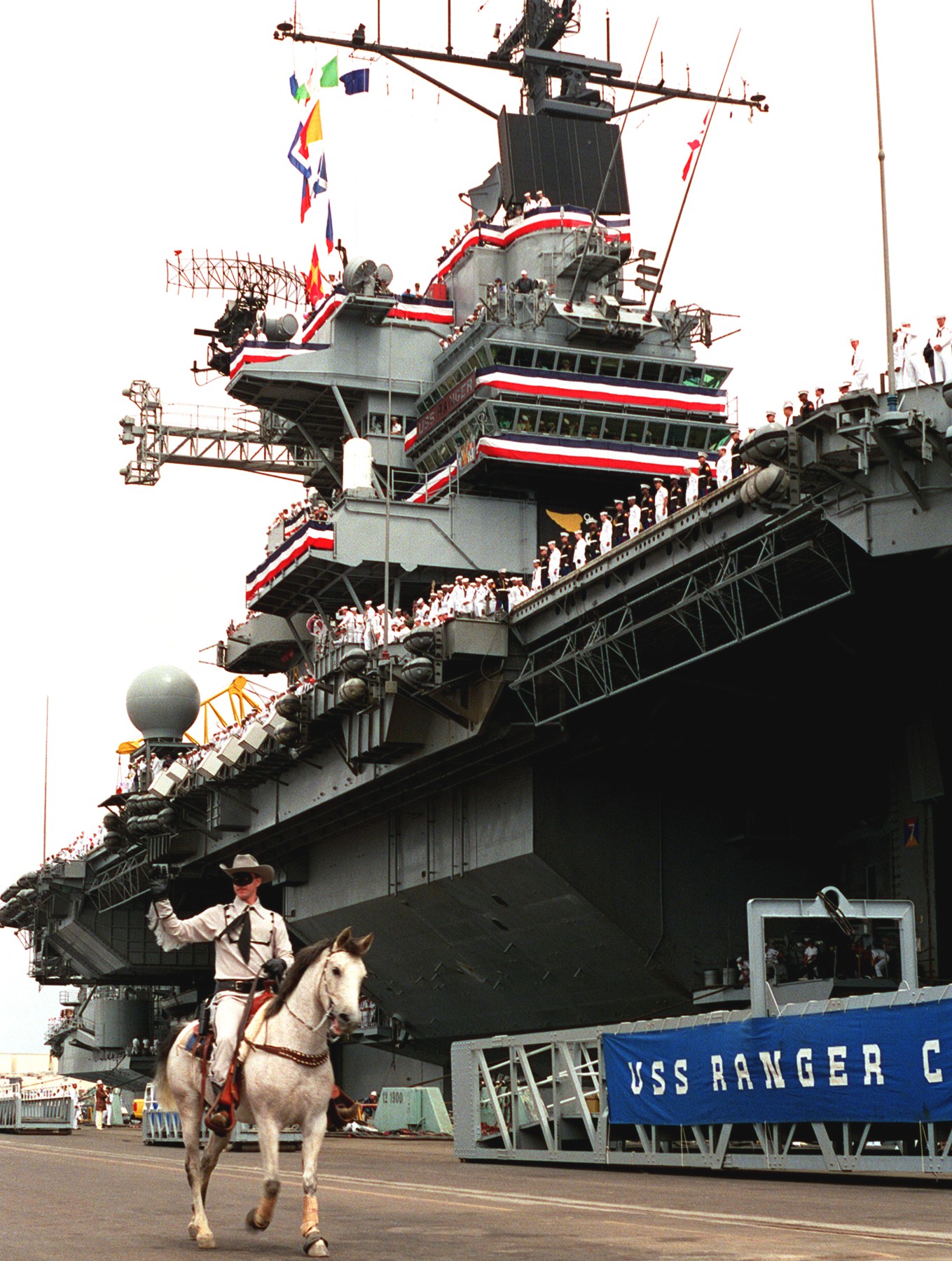 returning to NAS North Island, California after Operation Desert Shield/Storm - June 8, 1991 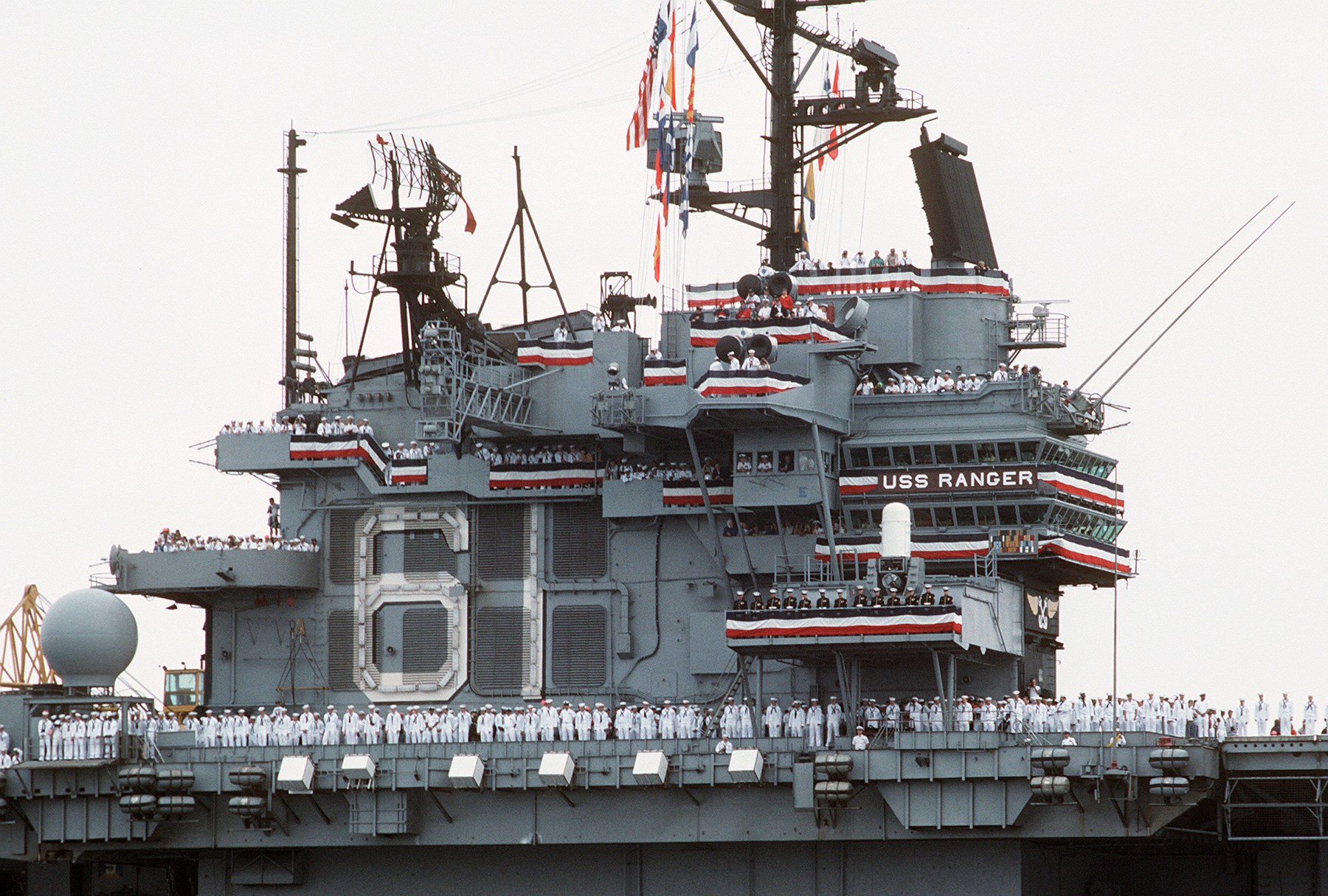 returning to NAS North Island, California after Operation Desert Shield/Storm - June 8, 1991 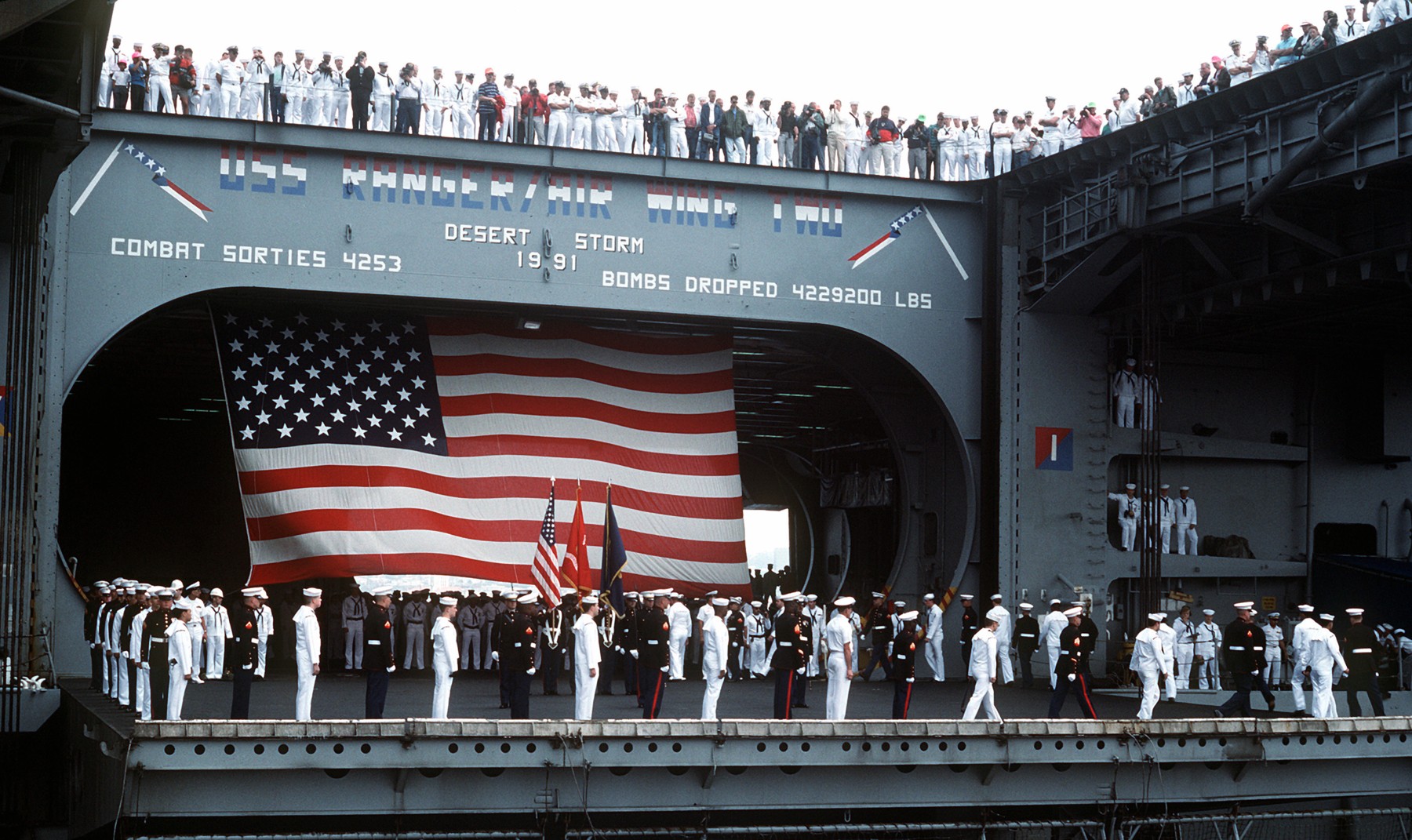 returning to NAS North Island, California after Operation Desert Shield/Storm - June 8, 1991 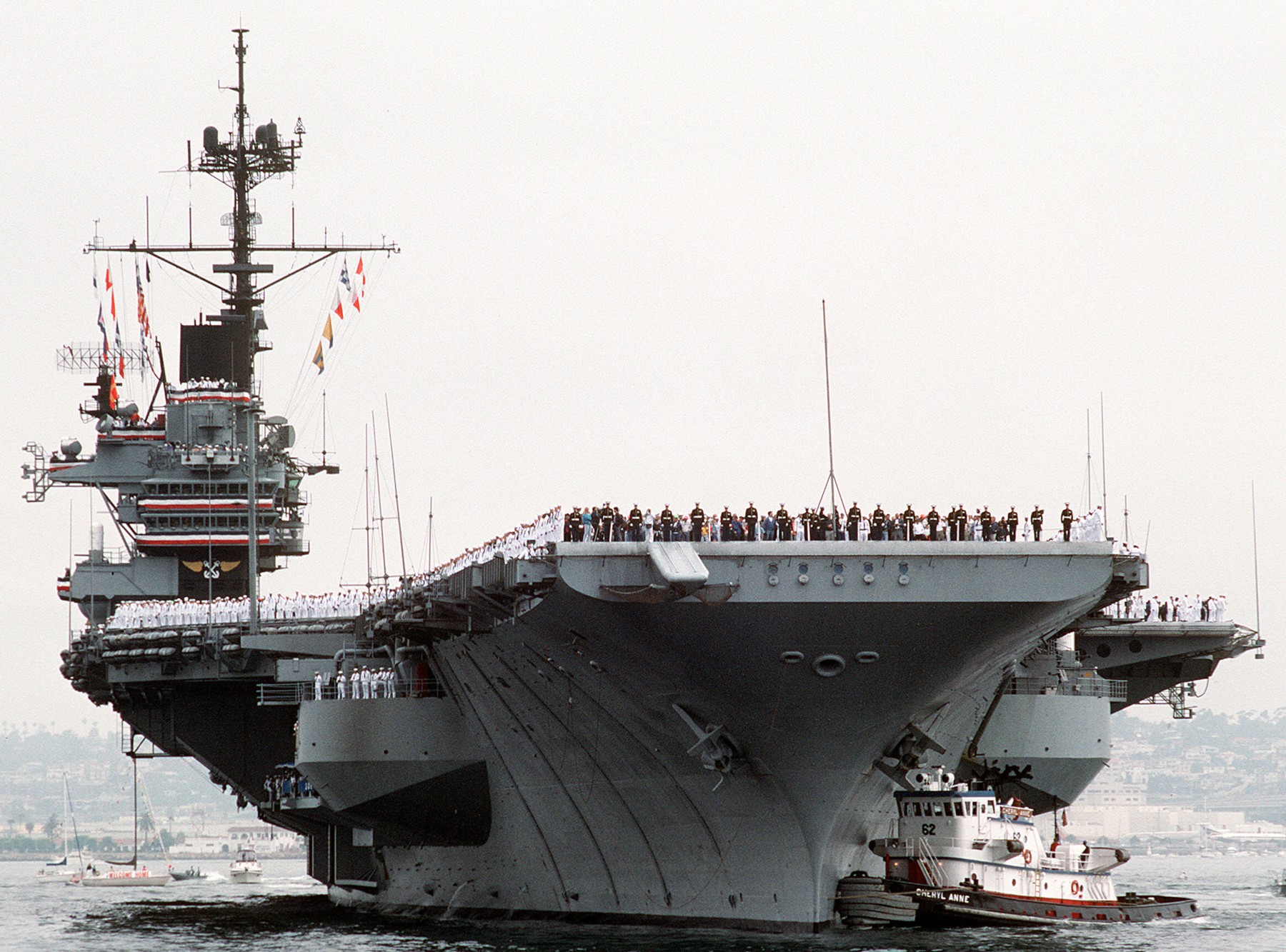 returning to NAS North Island, California after Operation Desert Shield/Storm - June 8, 1991 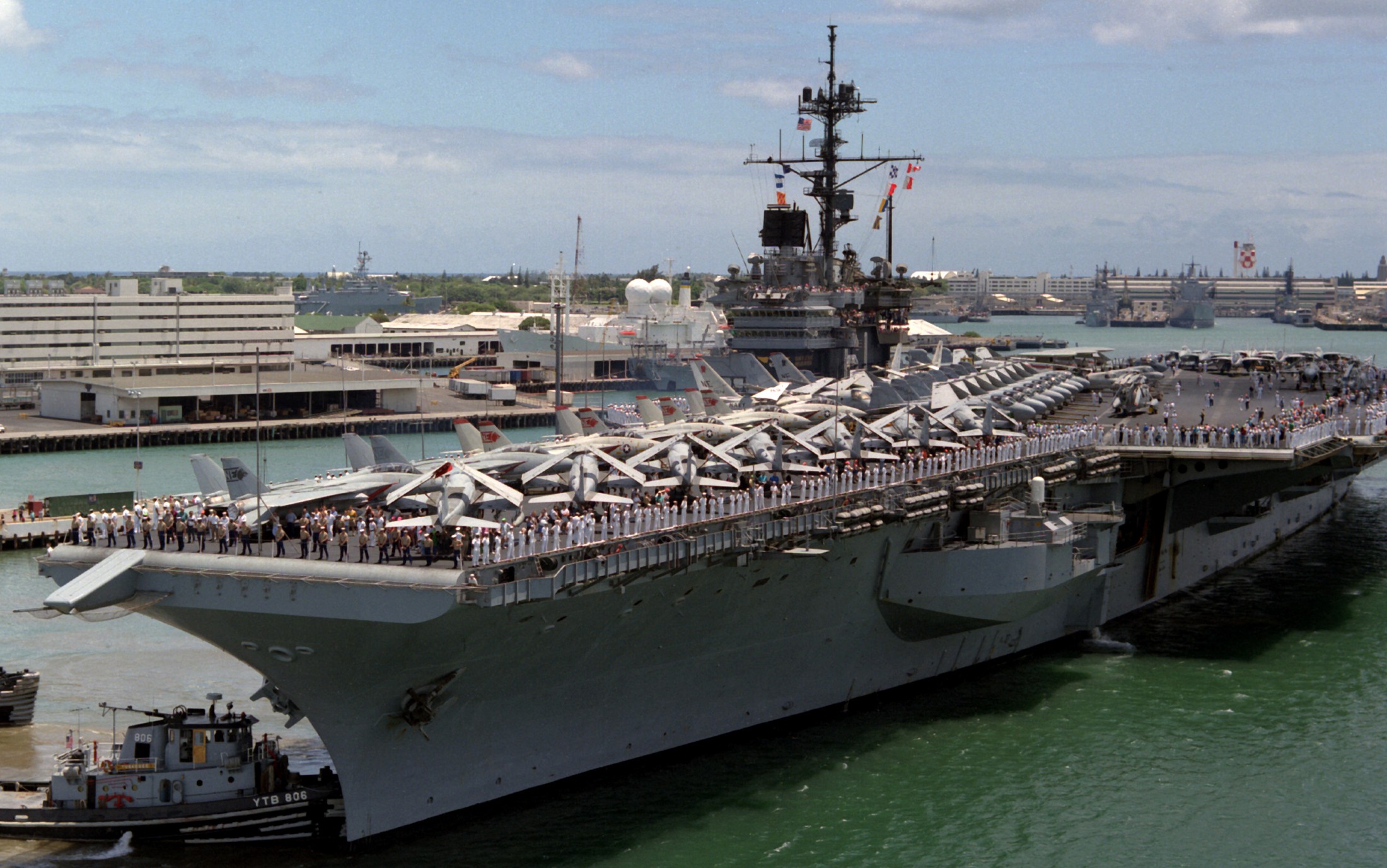 with CVW-2 embarked - Pearl Harbor, Hawaii - June 1991 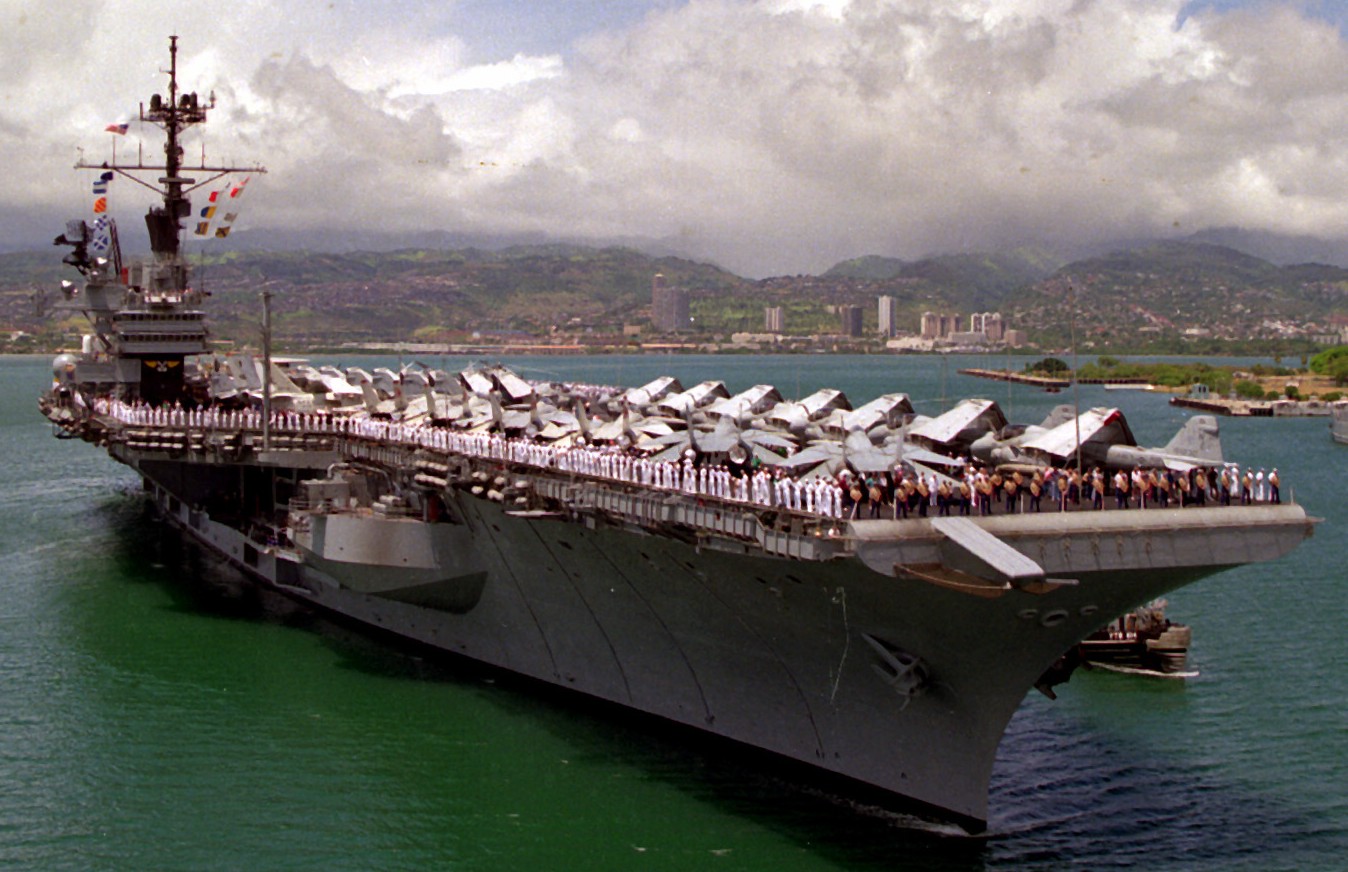 with CVW-2 embarked - Pearl Harbor, Hawaii - June 1991  with CVW-2 embarked - Pearl Harbor, Hawaii - June 1991  with CVW-2 embarked - Pearl Harbor, Hawaii - June 1991  with CVW-2 embarked - Pearl Harbor, Hawaii - June 1991 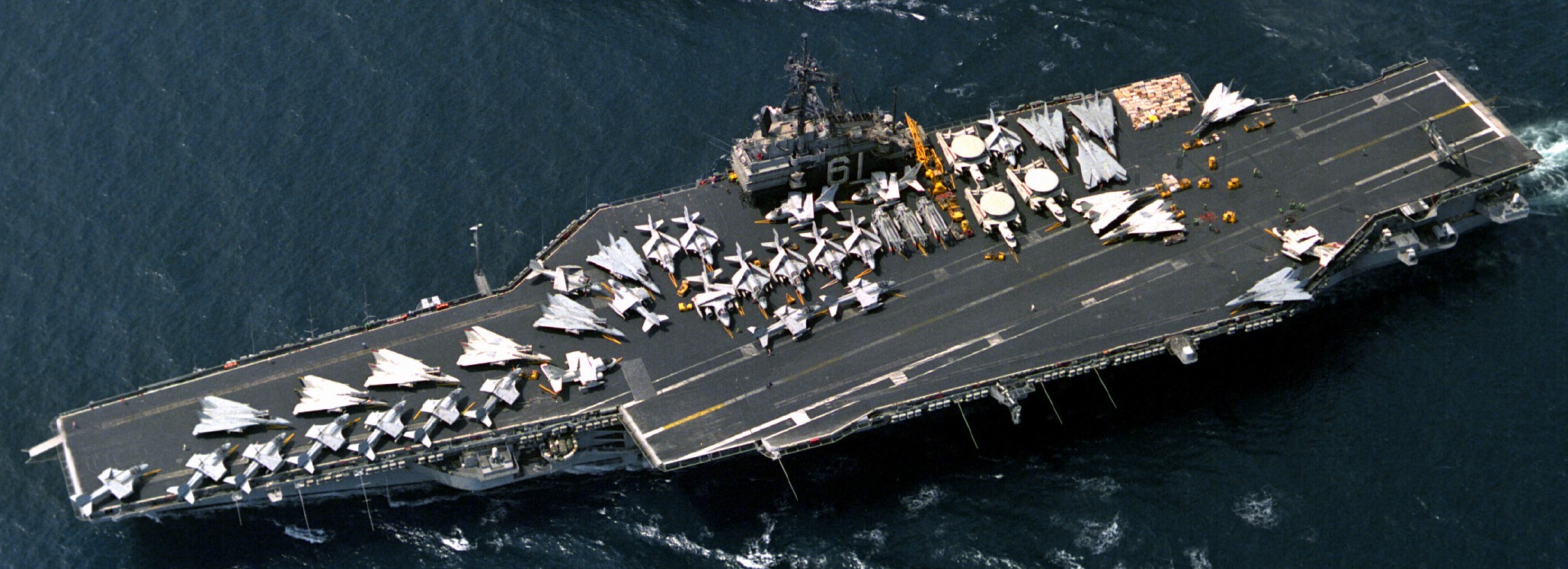 with CVW-2 embarked - Operation Desert Shield/Storm - 1991 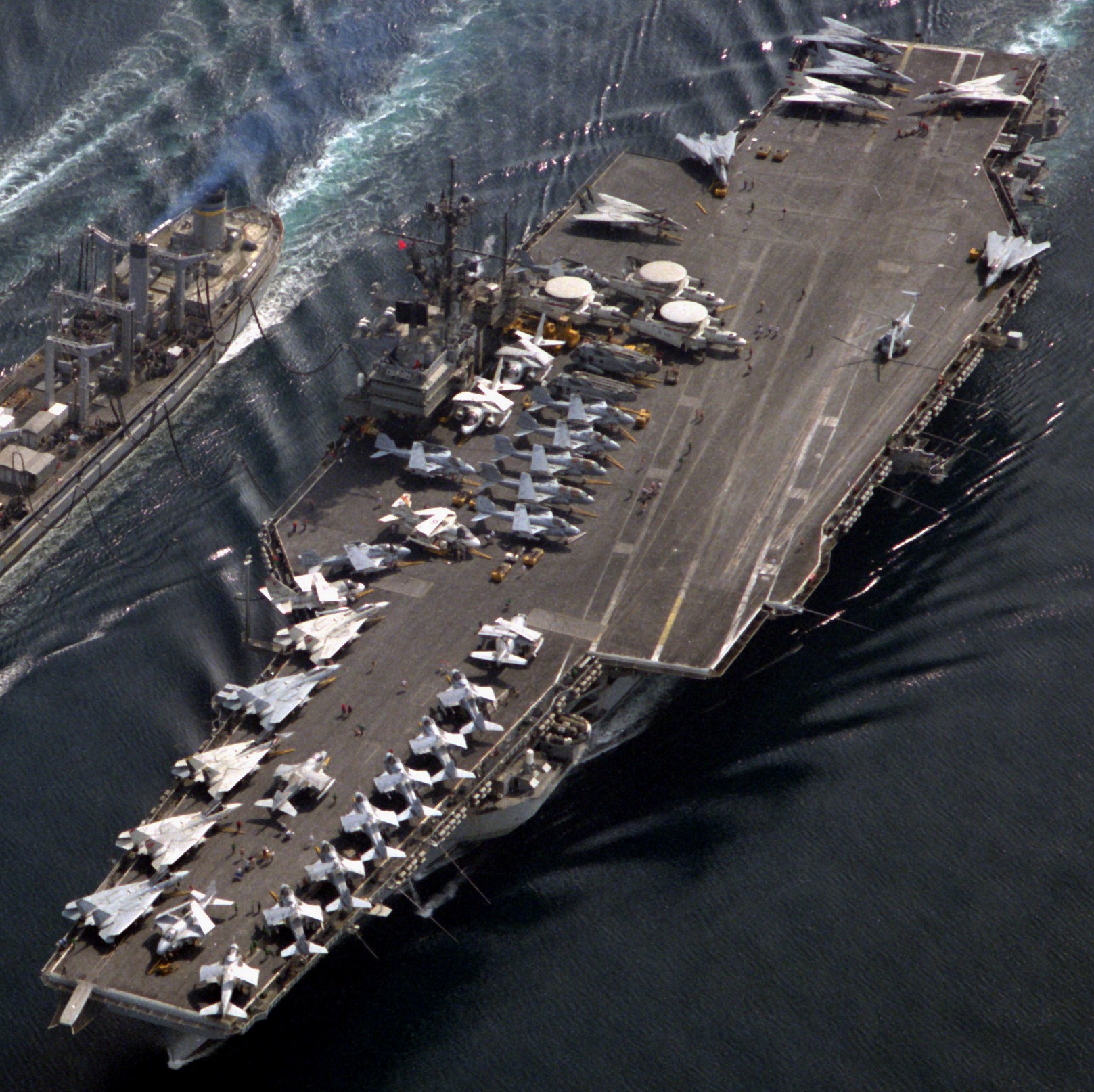 with CVW-2 embarked - Operation Desert Shield/Storm - 1991 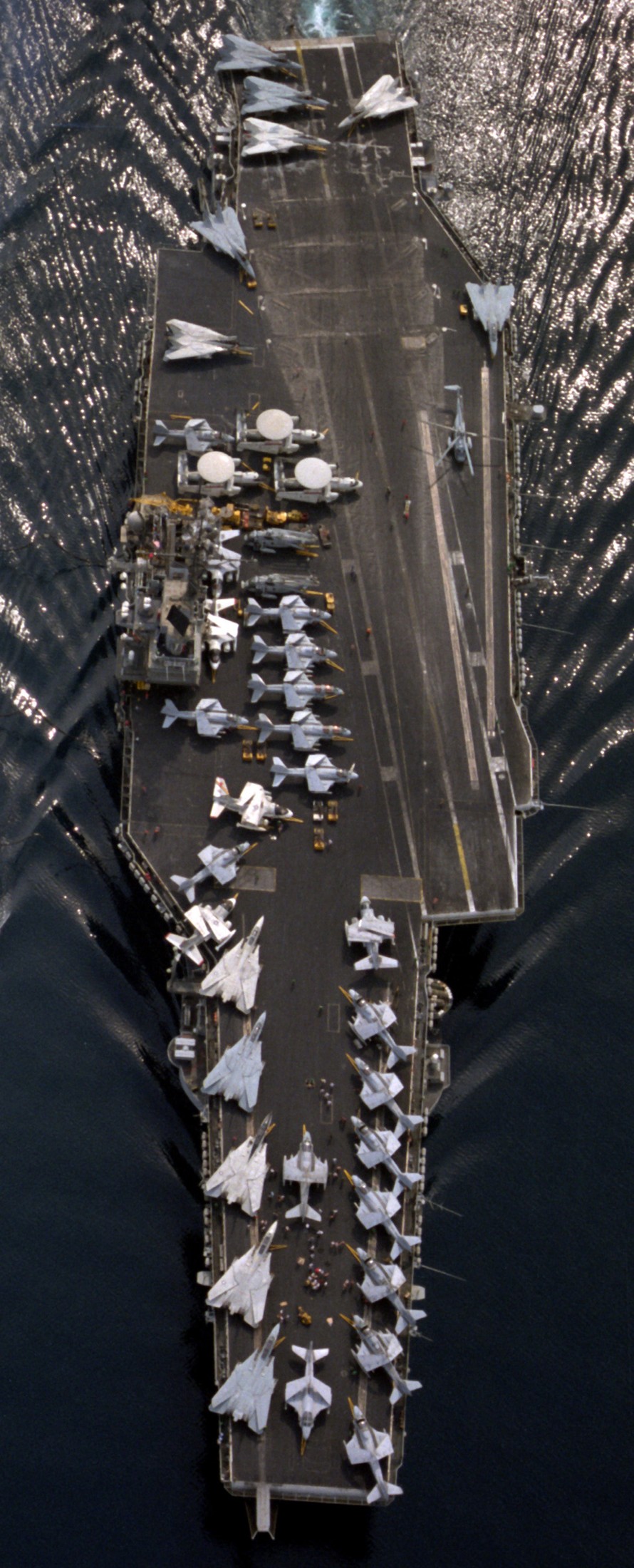
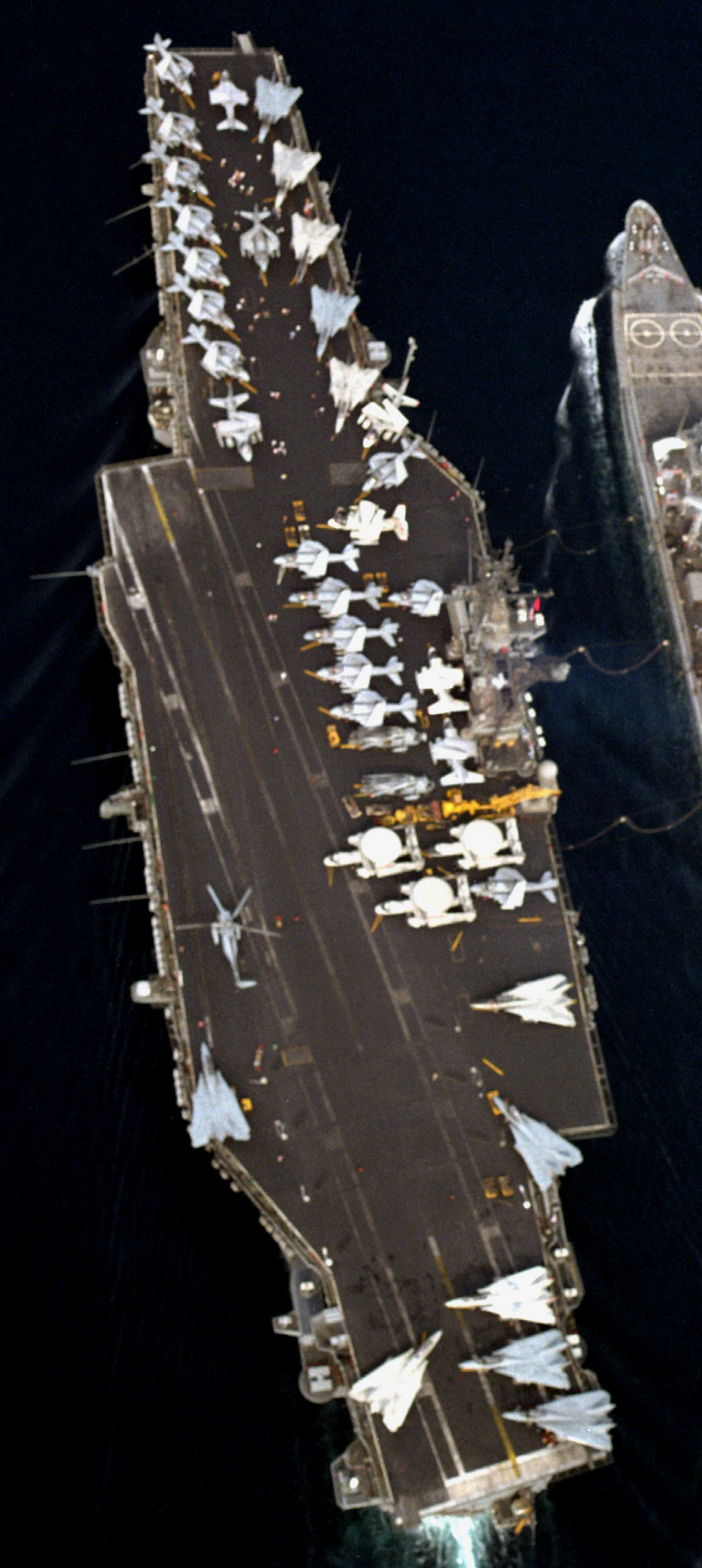 with CVW-2 embarked - Operation Desert Shield/Storm - 1991 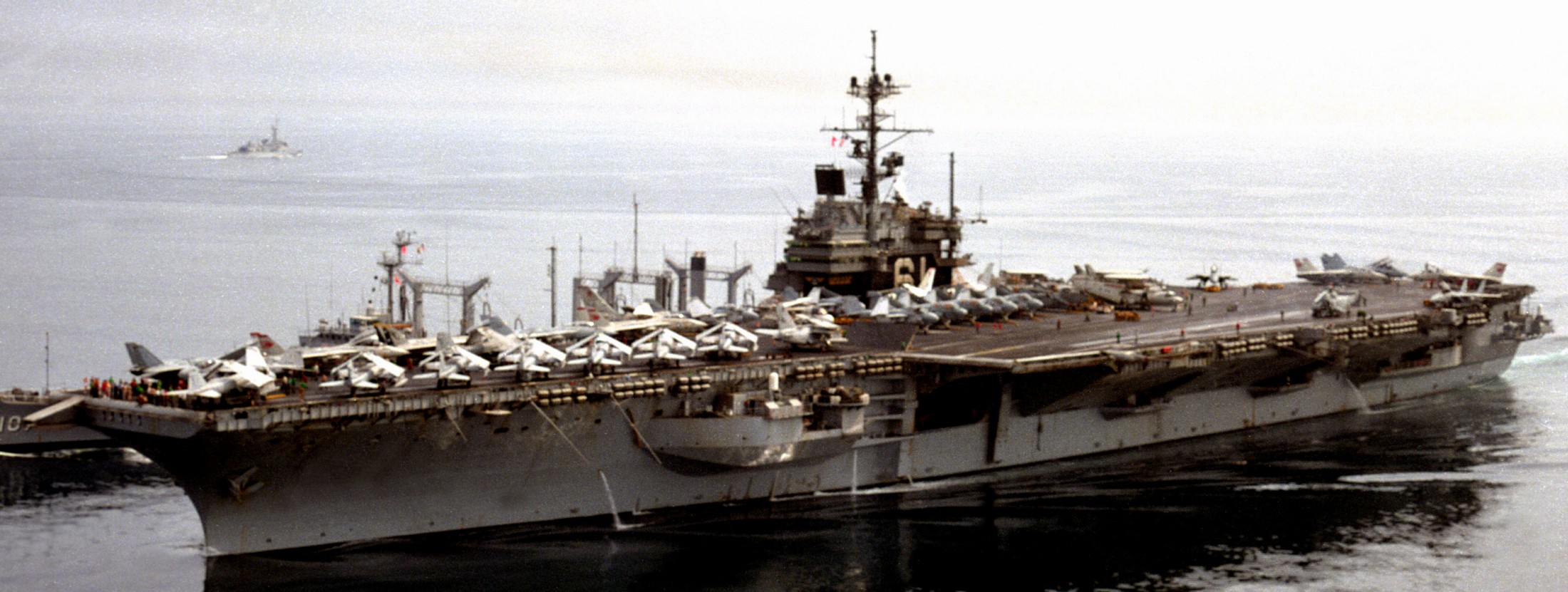 with CVW-2 embarked - Operation Desert Shield/Storm - 1991 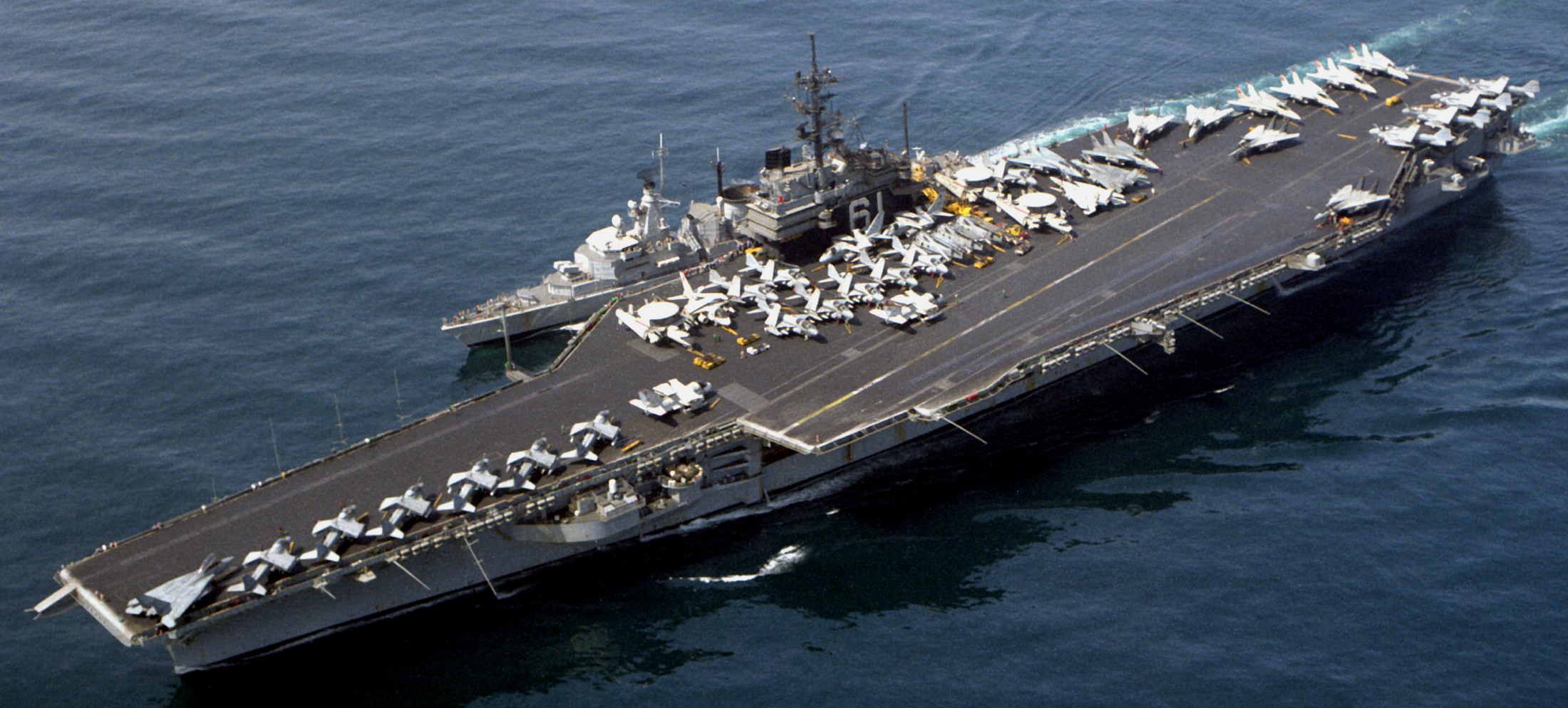 with CVW-2 embarked - Operation Desert Shield/Storm - 1991 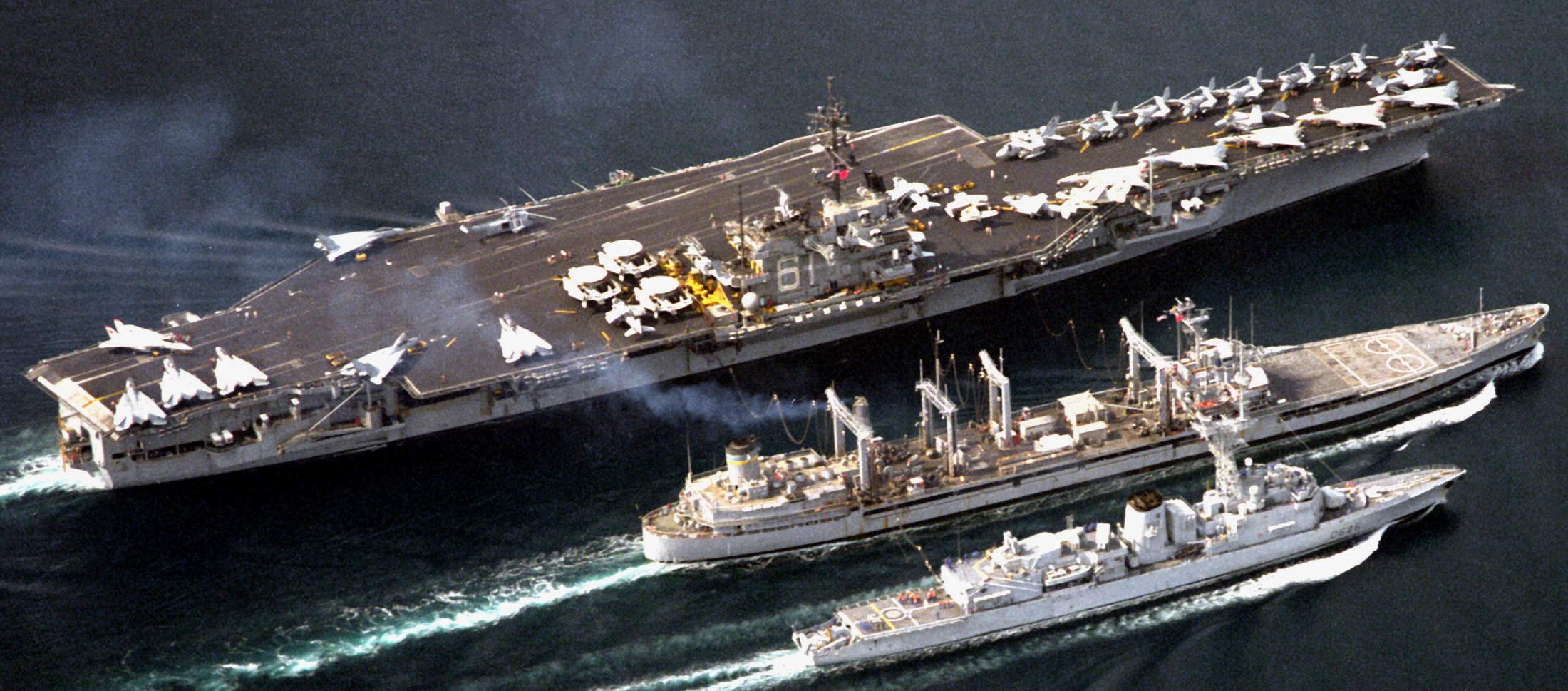 with CVW-2 embarked - Operation Desert Shield/Storm - 1991  with CVW-2 embarked - Operation Desert Shield/Storm - 1991 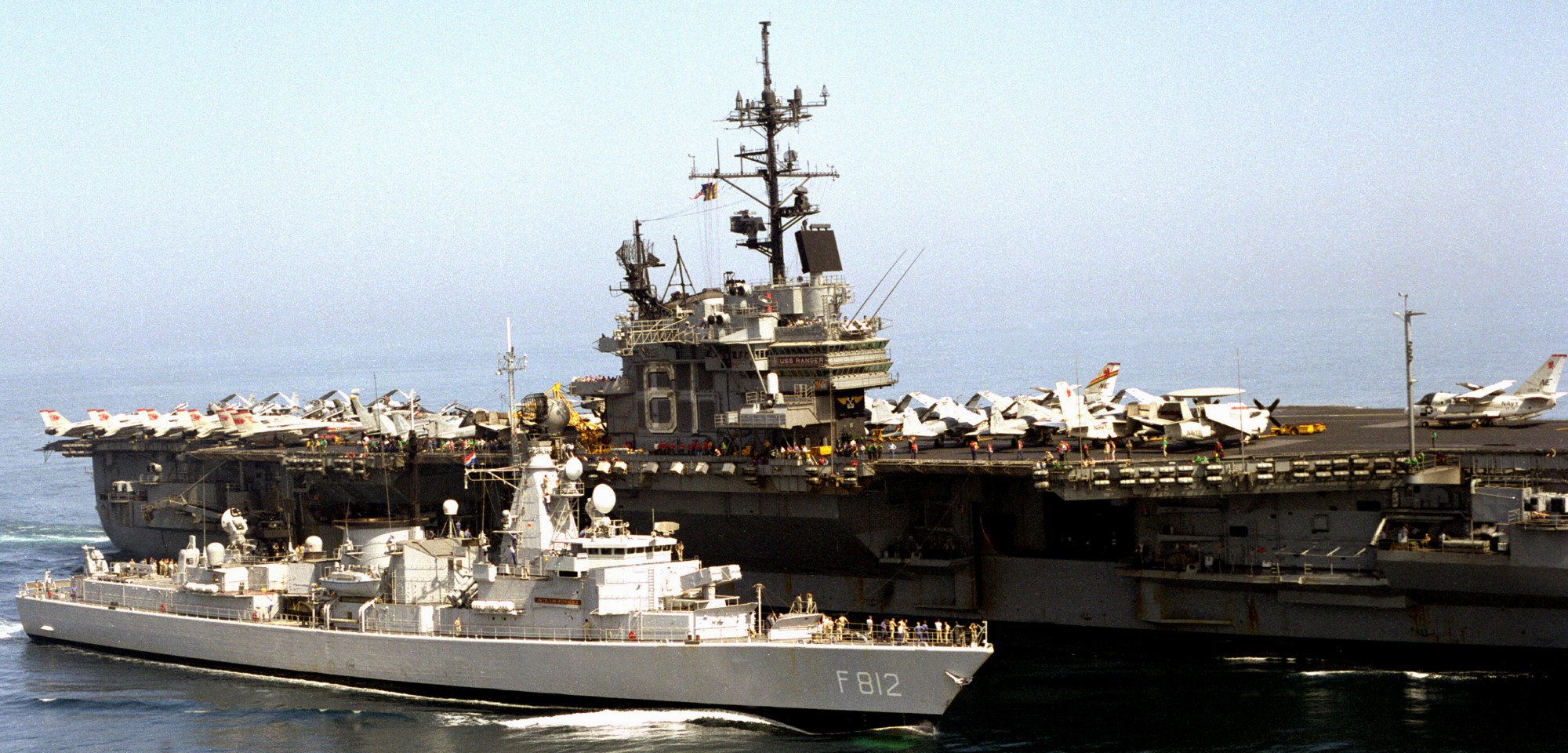 with Royal Netherlands Navy HNLMS Jacob van Heemskerck (F 812) - Operation Desert Shield/Storm - 1991 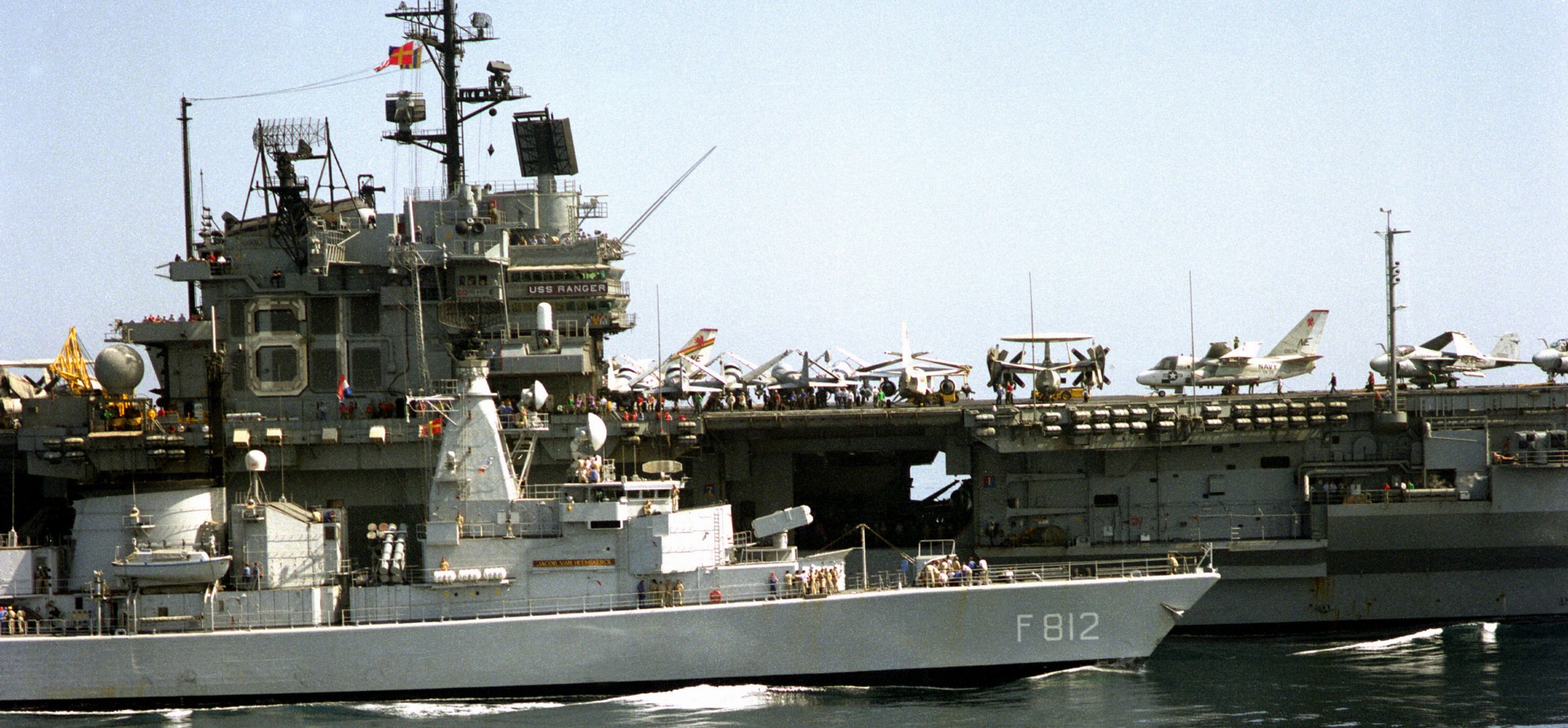 with HNLMS Jacob van Heemskerck (F 812) - Operation Desert Shield/Storm - 1991 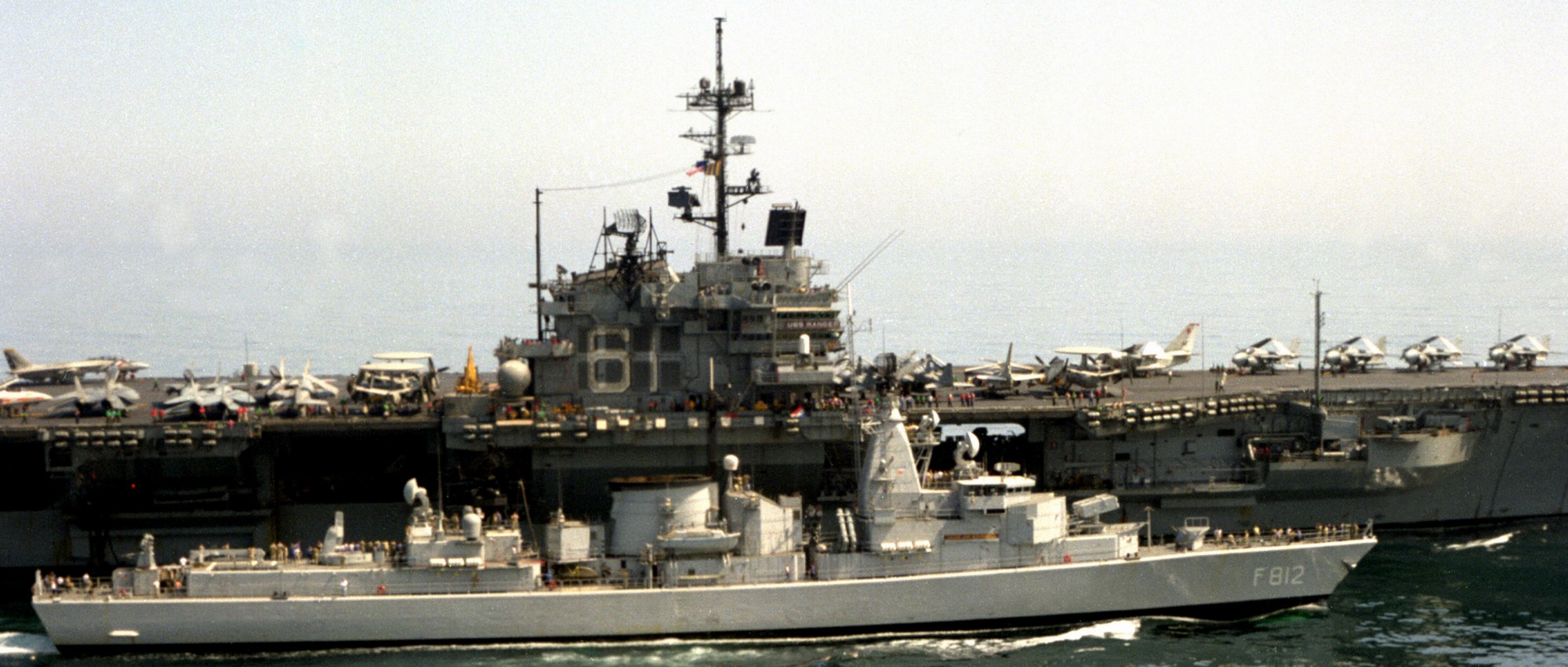 with HNLMS Jacob van Heemskerck (F 812) - Operation Desert Shield/Storm - 1991 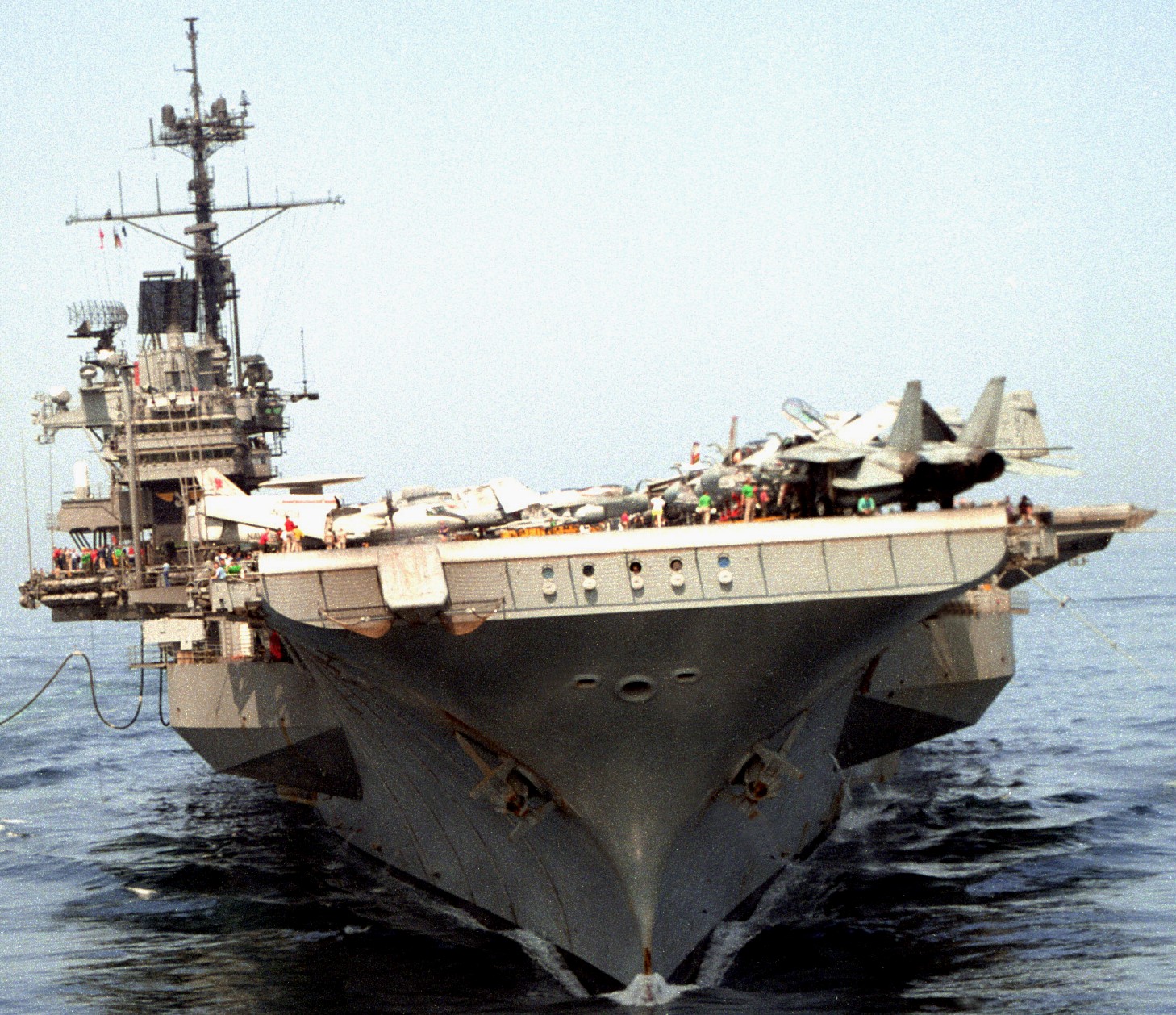 with CVW-2 embarked - Operation Desert Shield/Storm - 1991 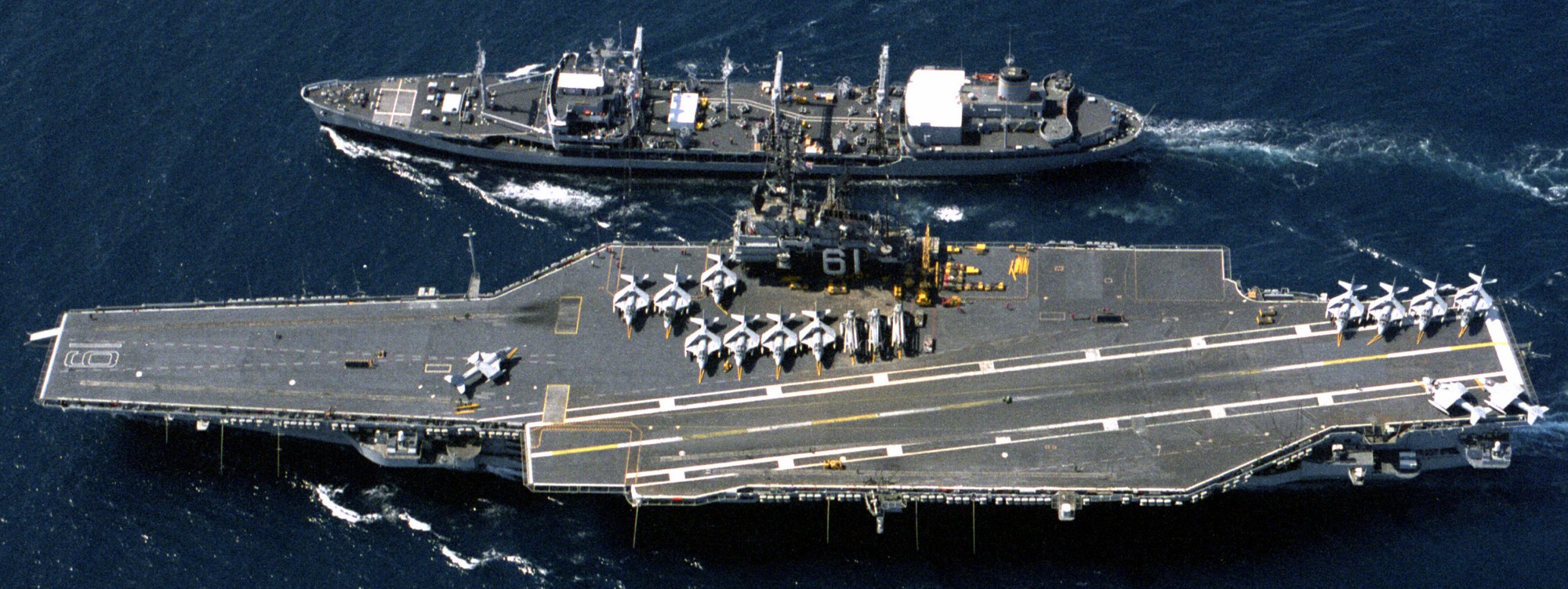 with CVW-2 embarked - off California - July 1990 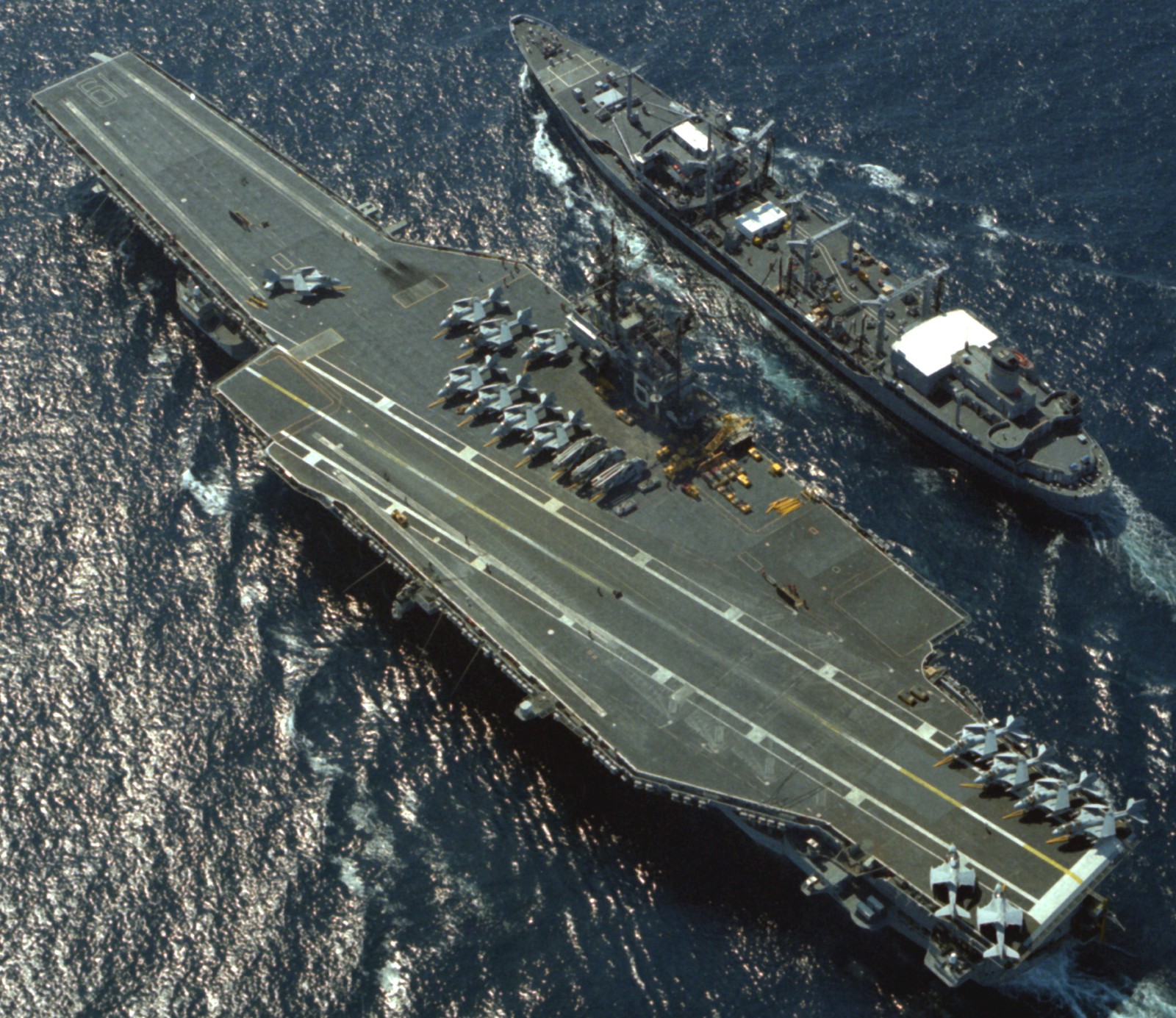 with CVW-2 embarked - off California - July 1990 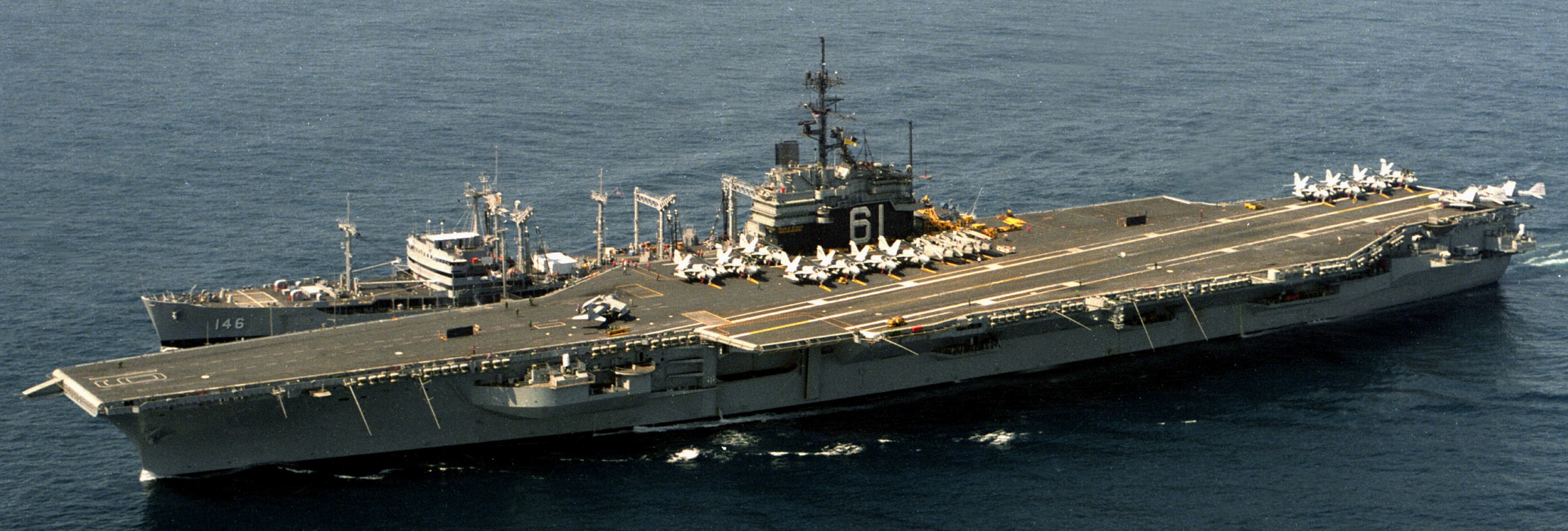 with CVW-2 embarked - off California - July 1990 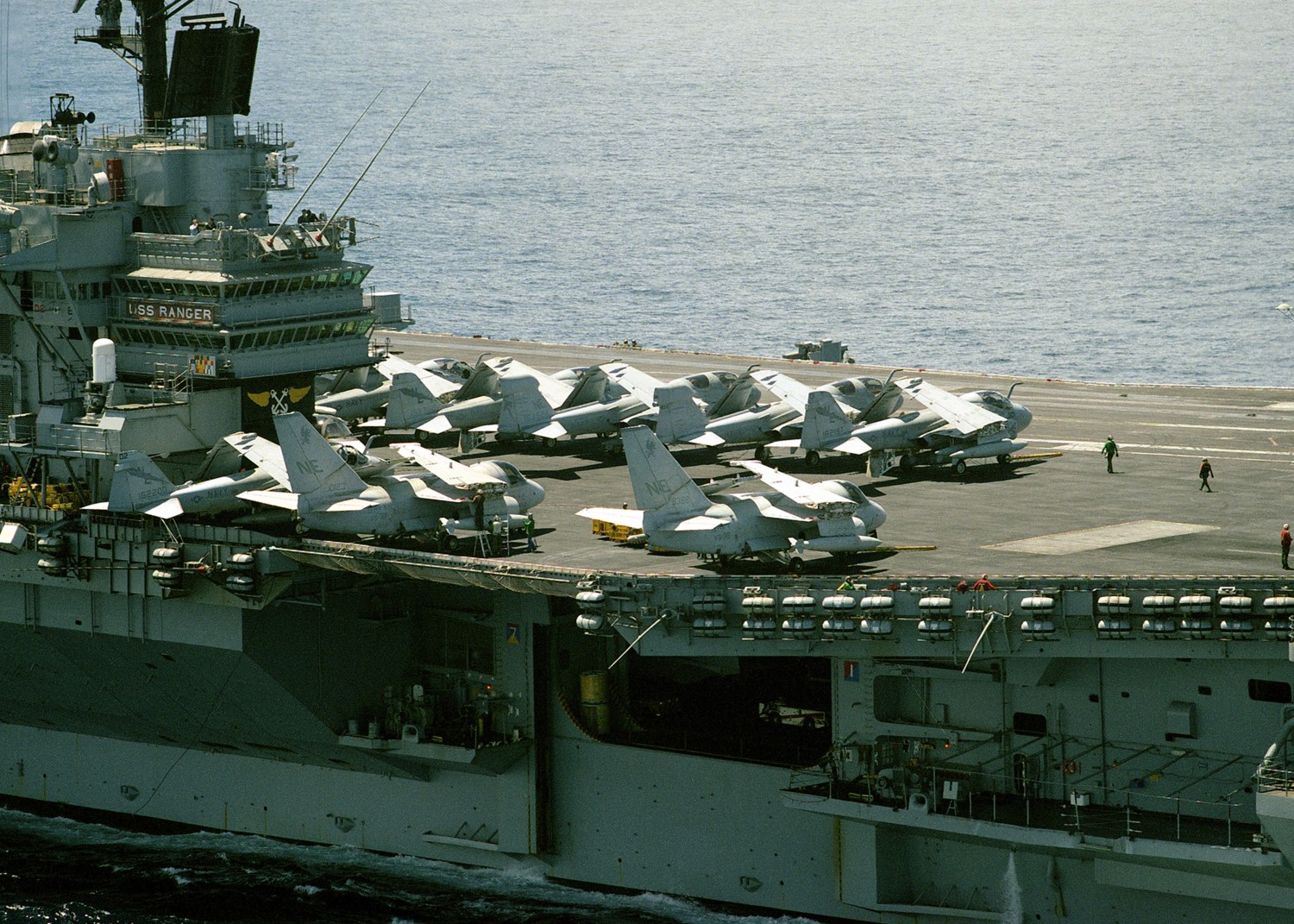 with CVW-2 embarked - off California - July 1990  off California - July 1990 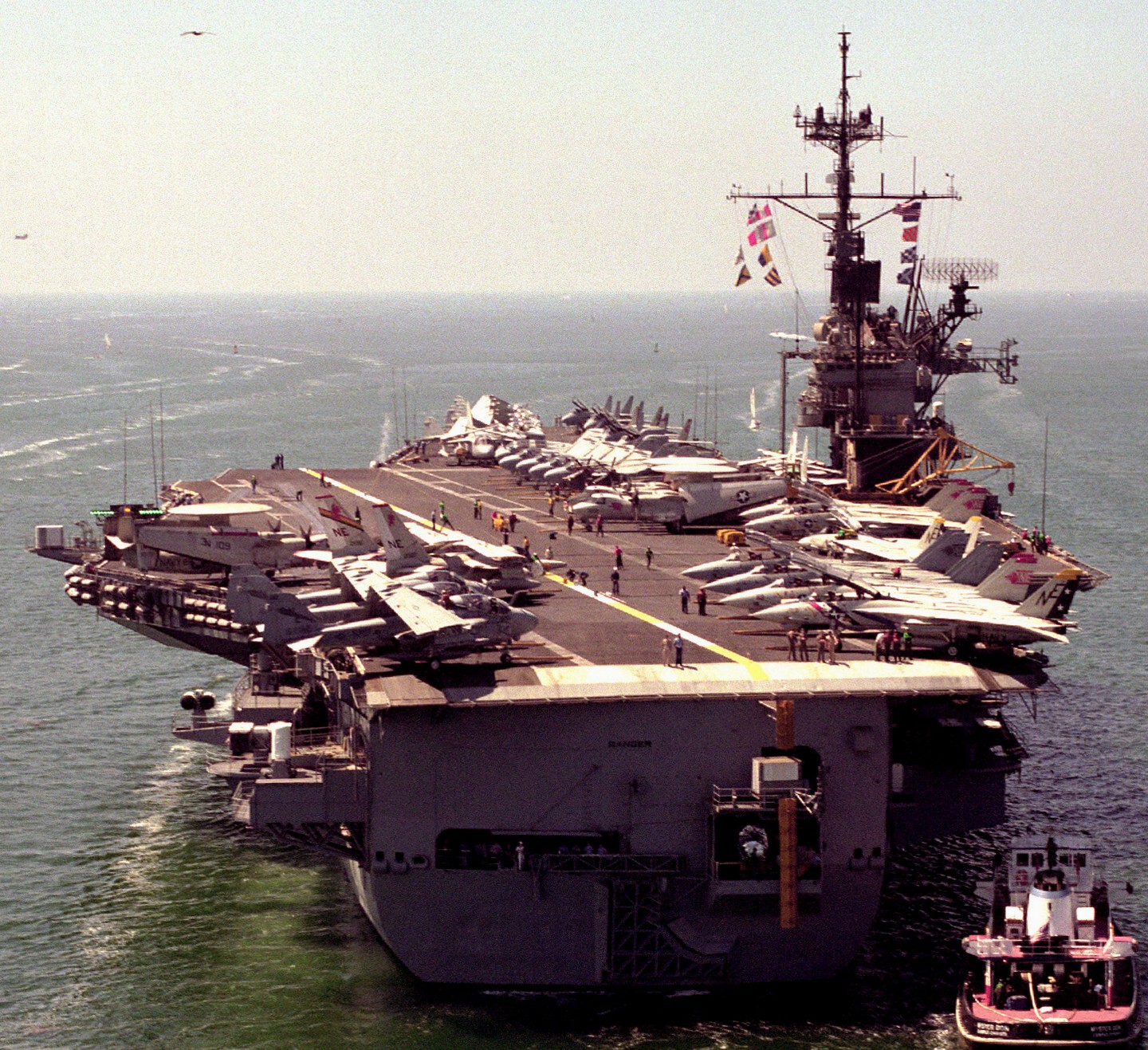 with CVW-2 embarked - departing NAS North Island, California - circa 1990 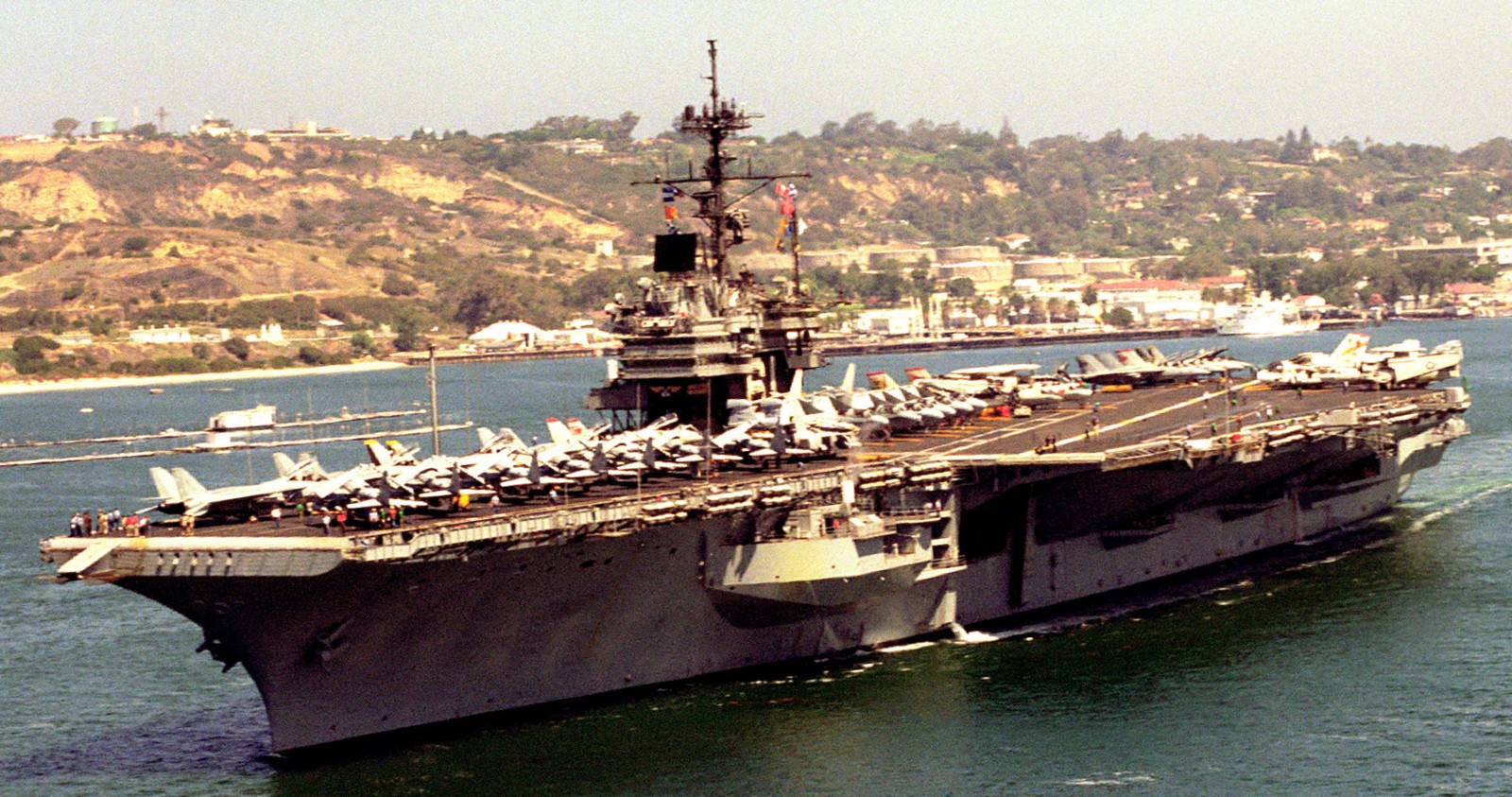 with CVW-2 embarked - departing NAS North Island, California - circa 1990 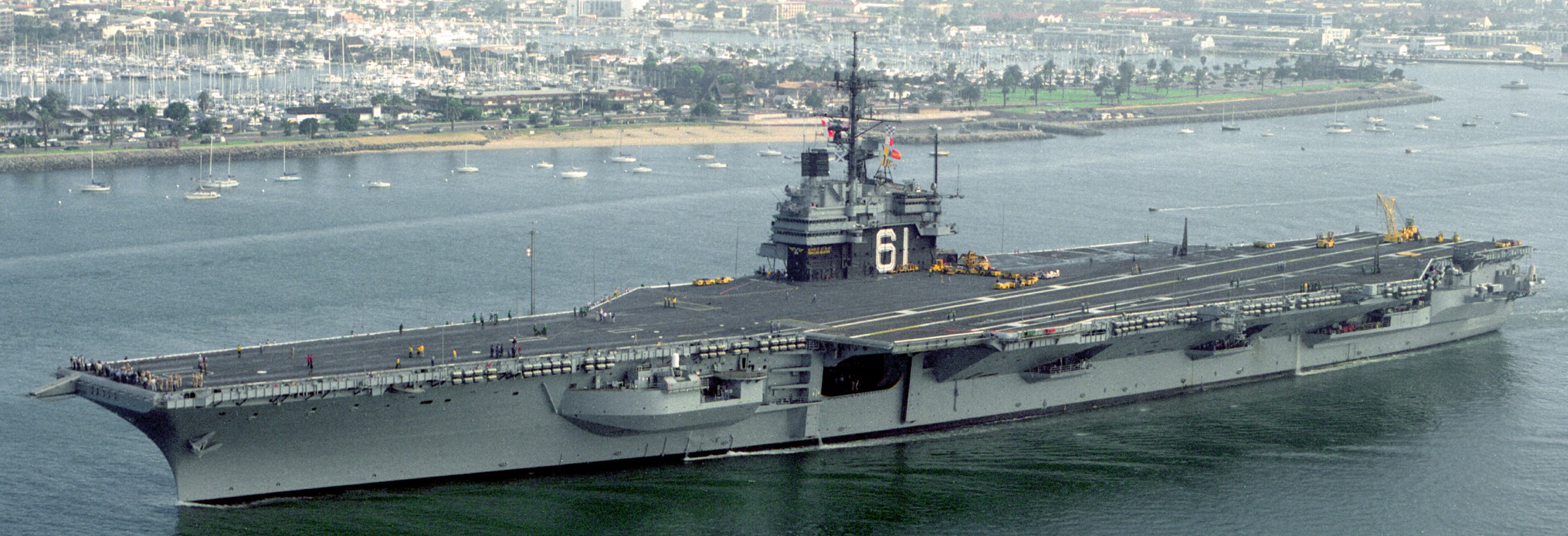 San Diego, California - 1990 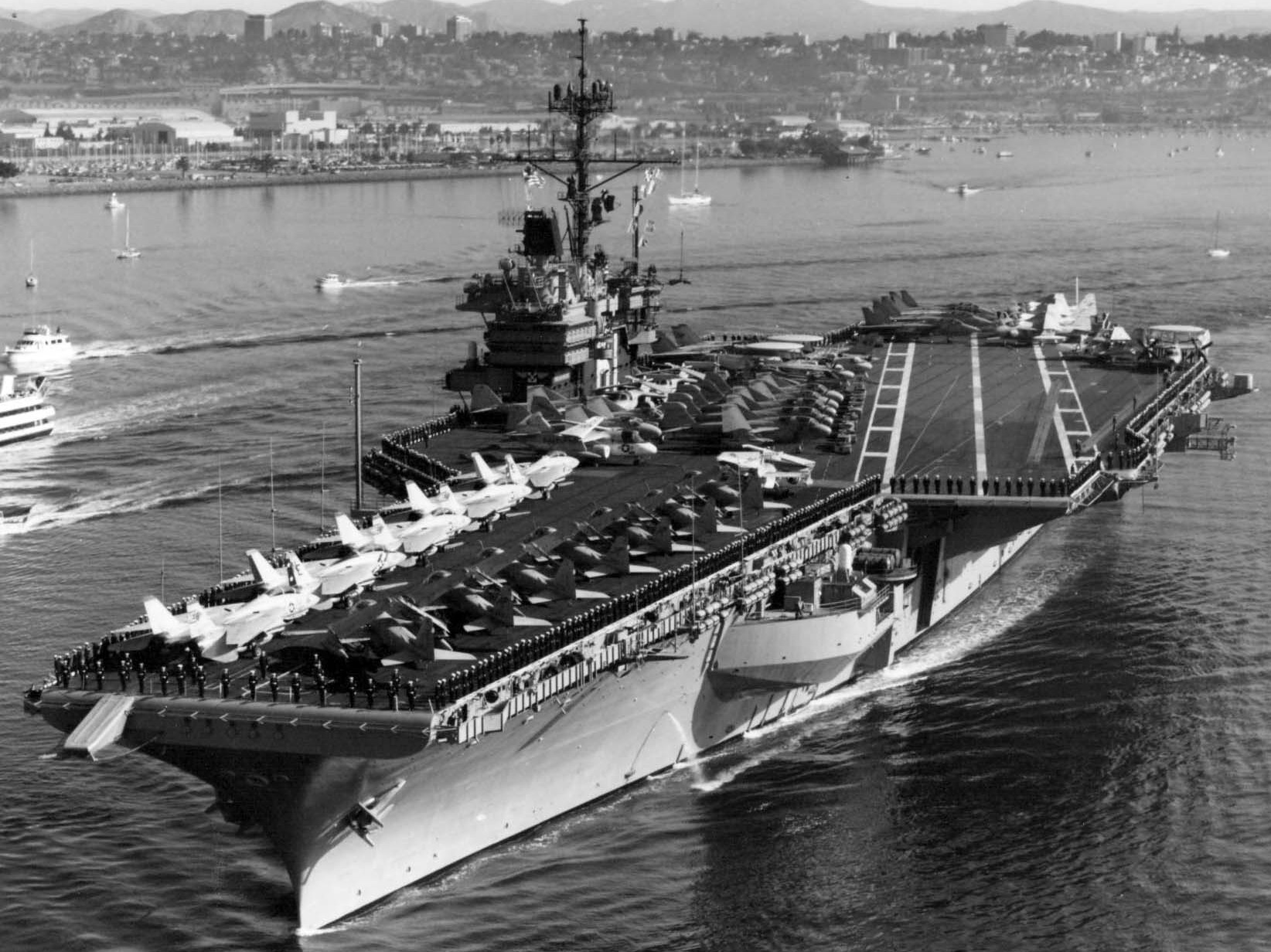 with CVW-2 embarked - returning to NAS North Island, California - circa 1990 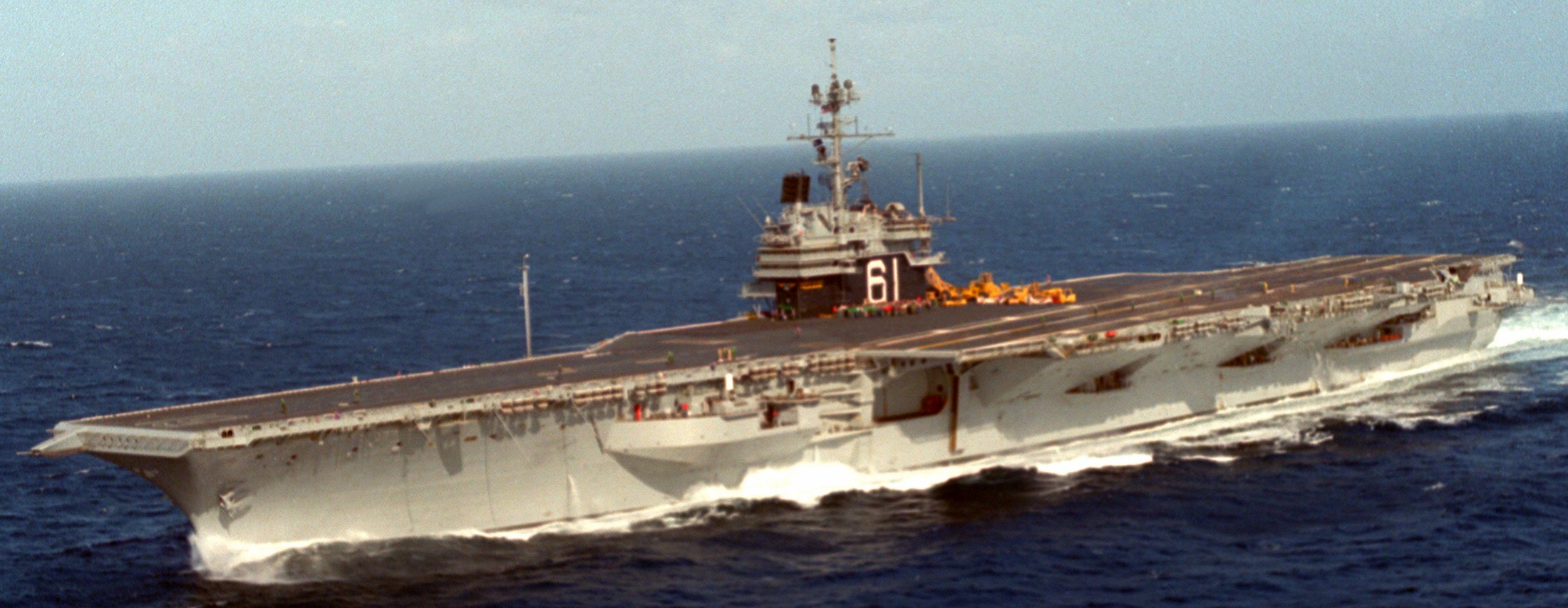 off California during an Anti-Submarine Exercise - undated 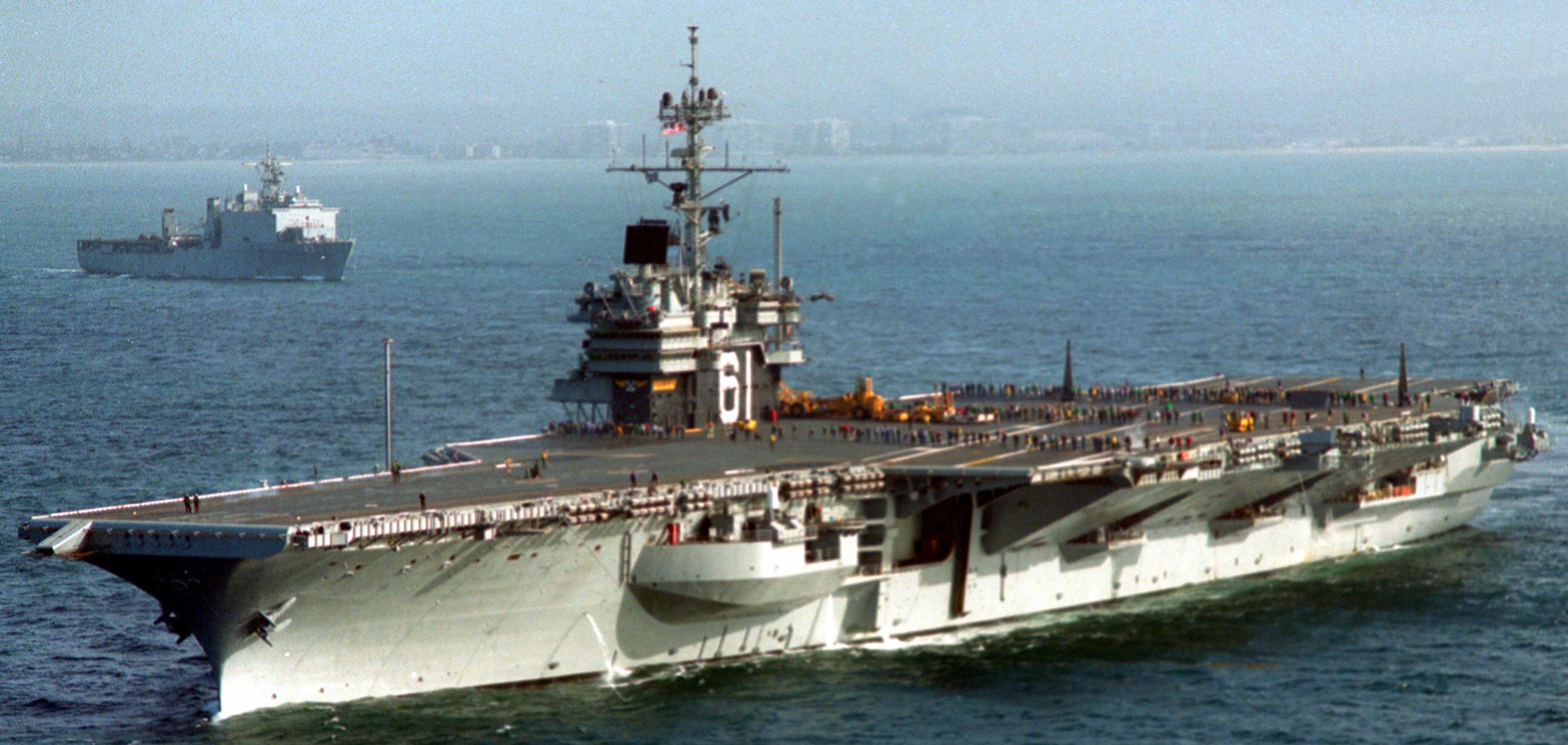 departing San Diego for an Anti-Submarine Exercise - undated 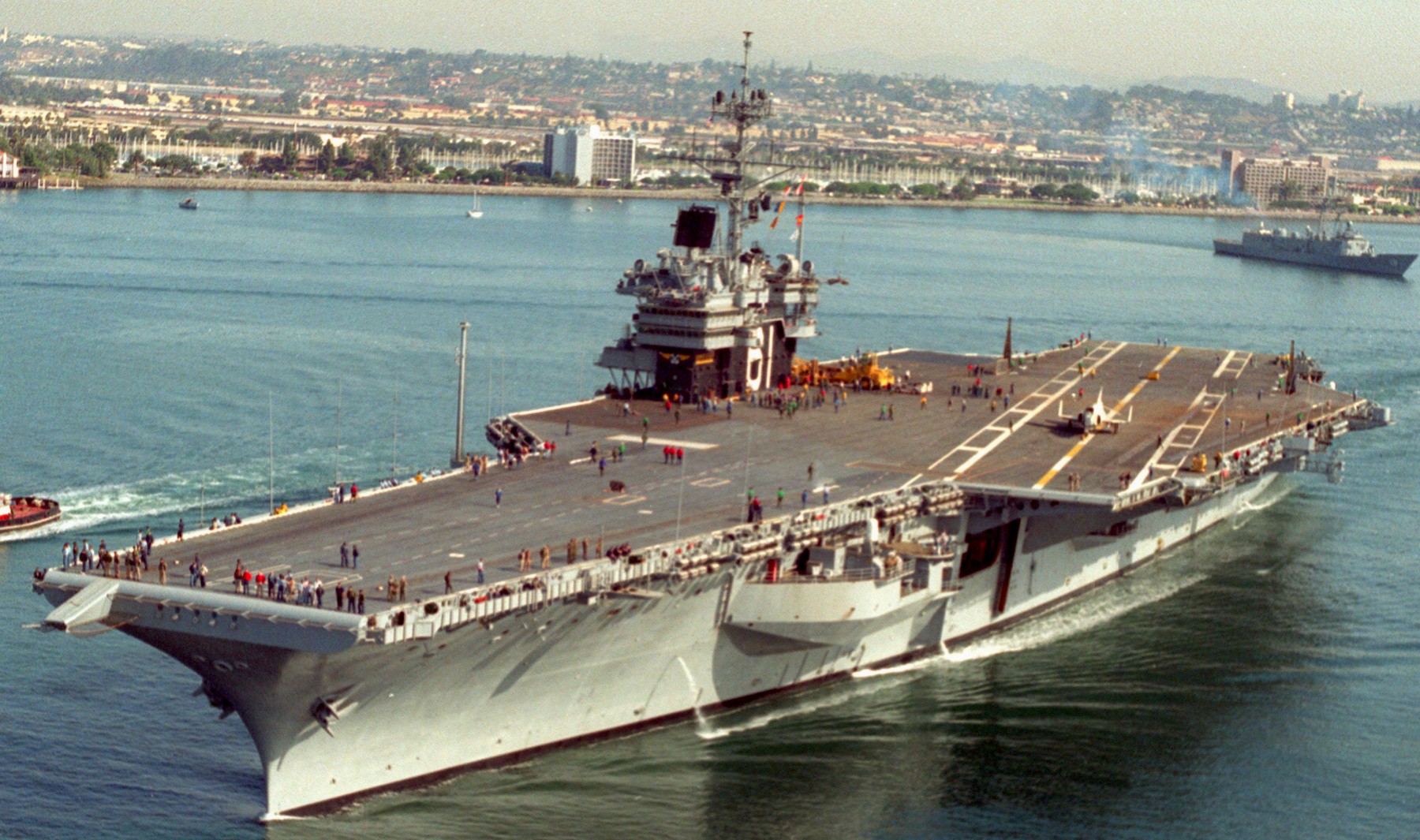 departing San Diego for an Anti-Submarine Exercise - undated 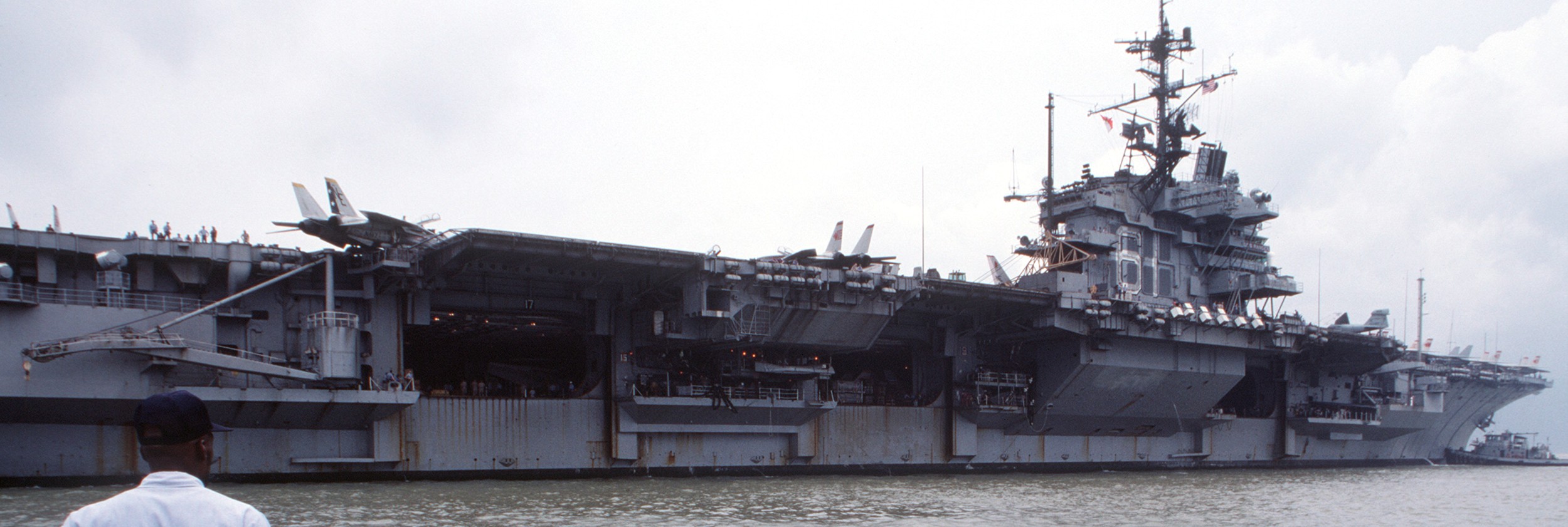 with CVW-2 embarked - Subic Bay, Philippines - July 1989 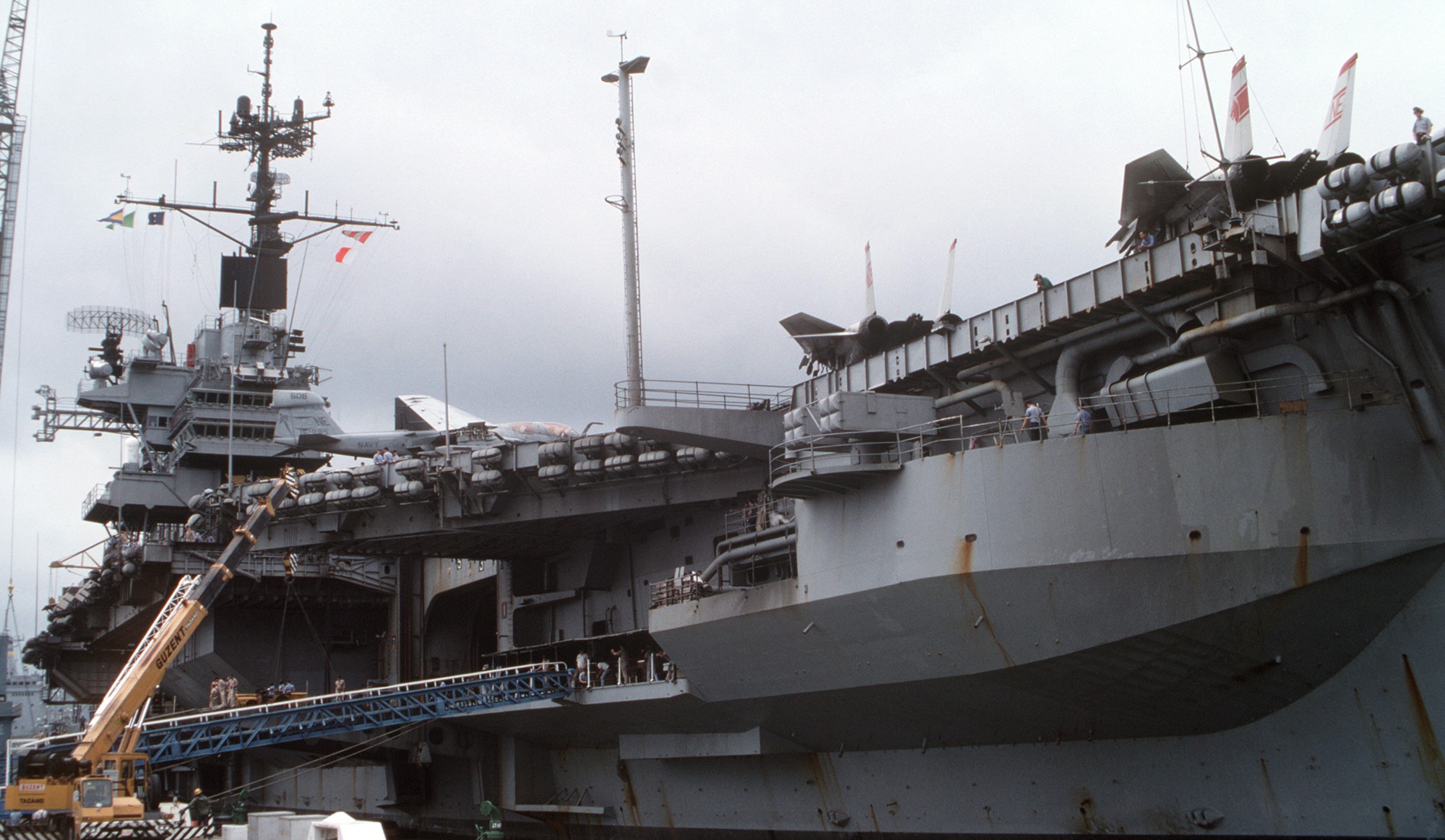 with CVW-2 embarked - Subic Bay, Philippines - July 1989 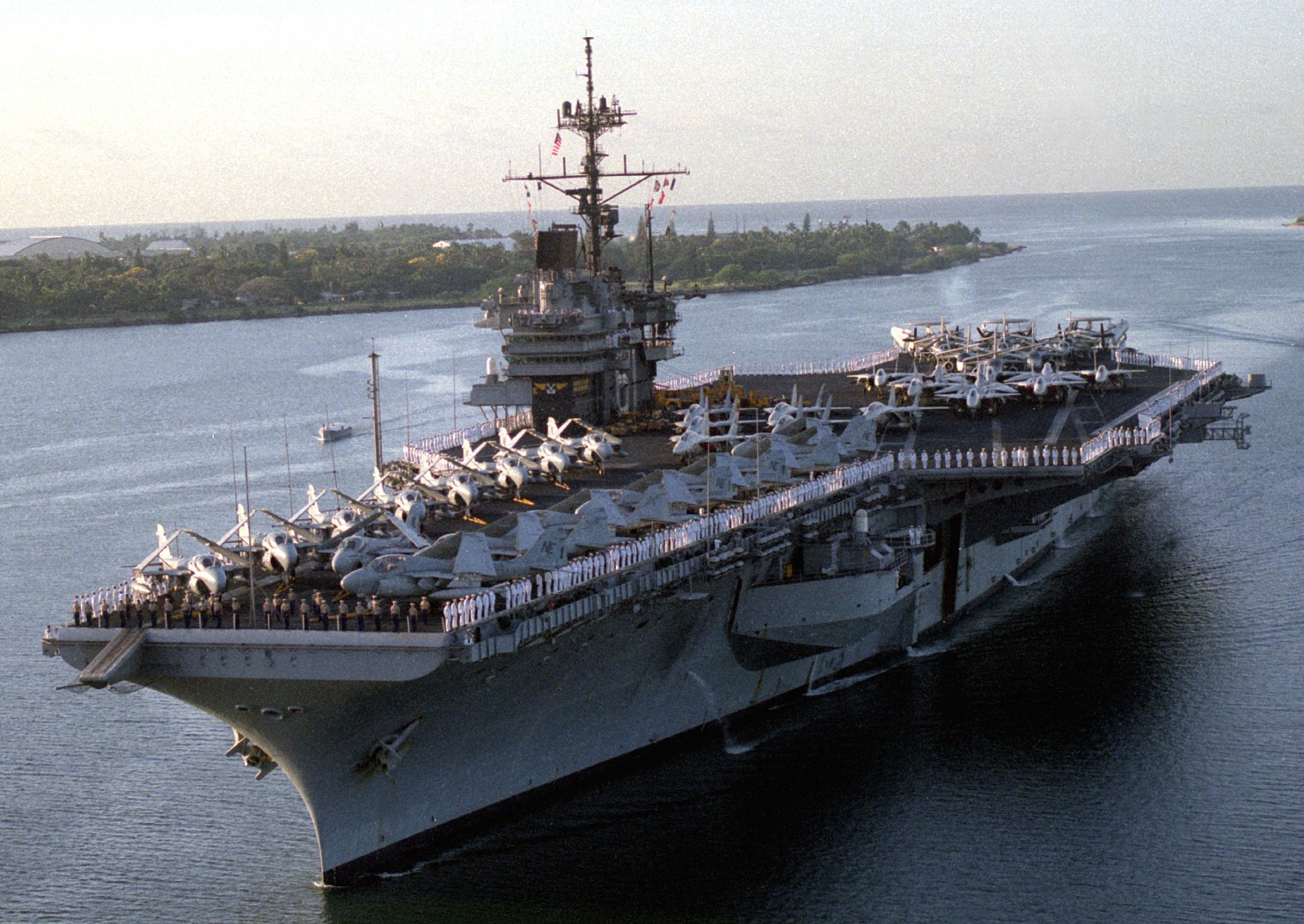 with CVW-2 embarked - Pearl Harbor, Hawaii - March 1989 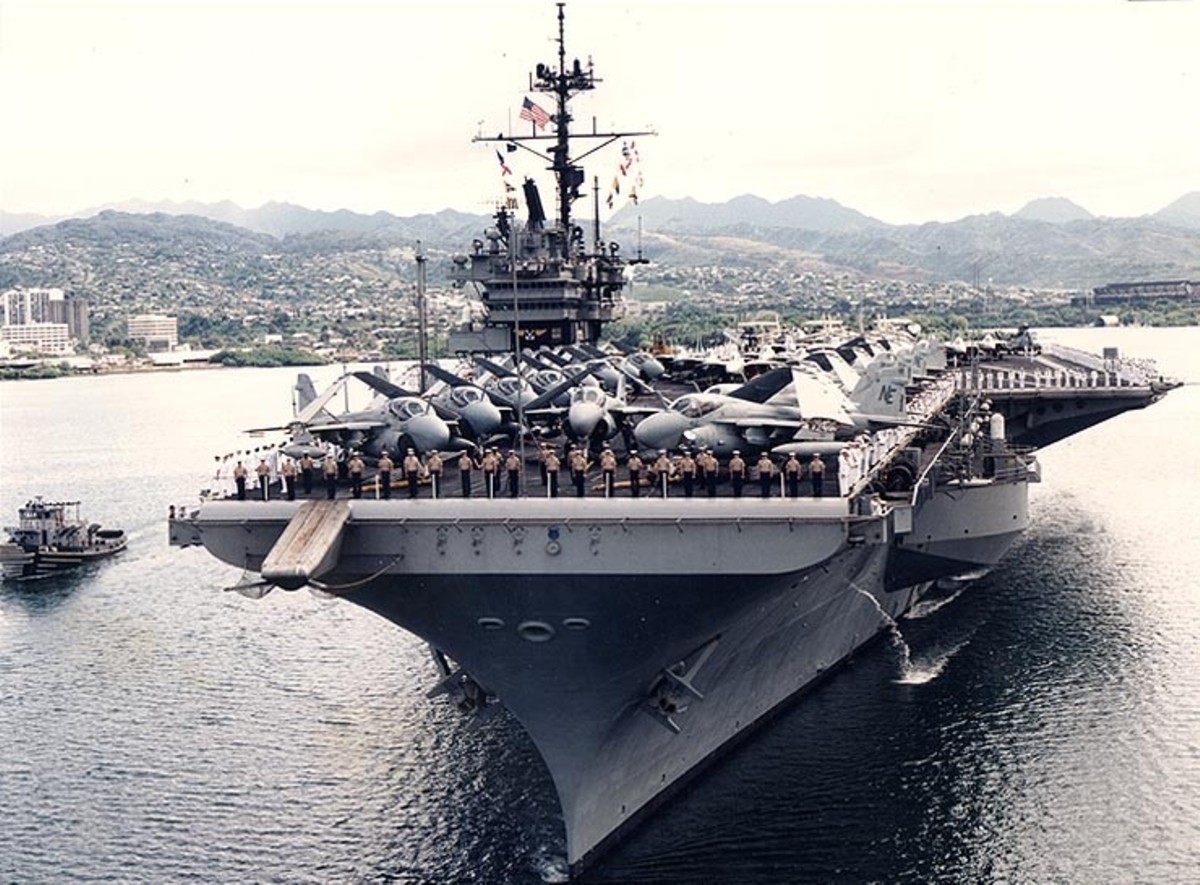 with CVW-2 embarked - Pearl Harbor, Hawaii - March 1989 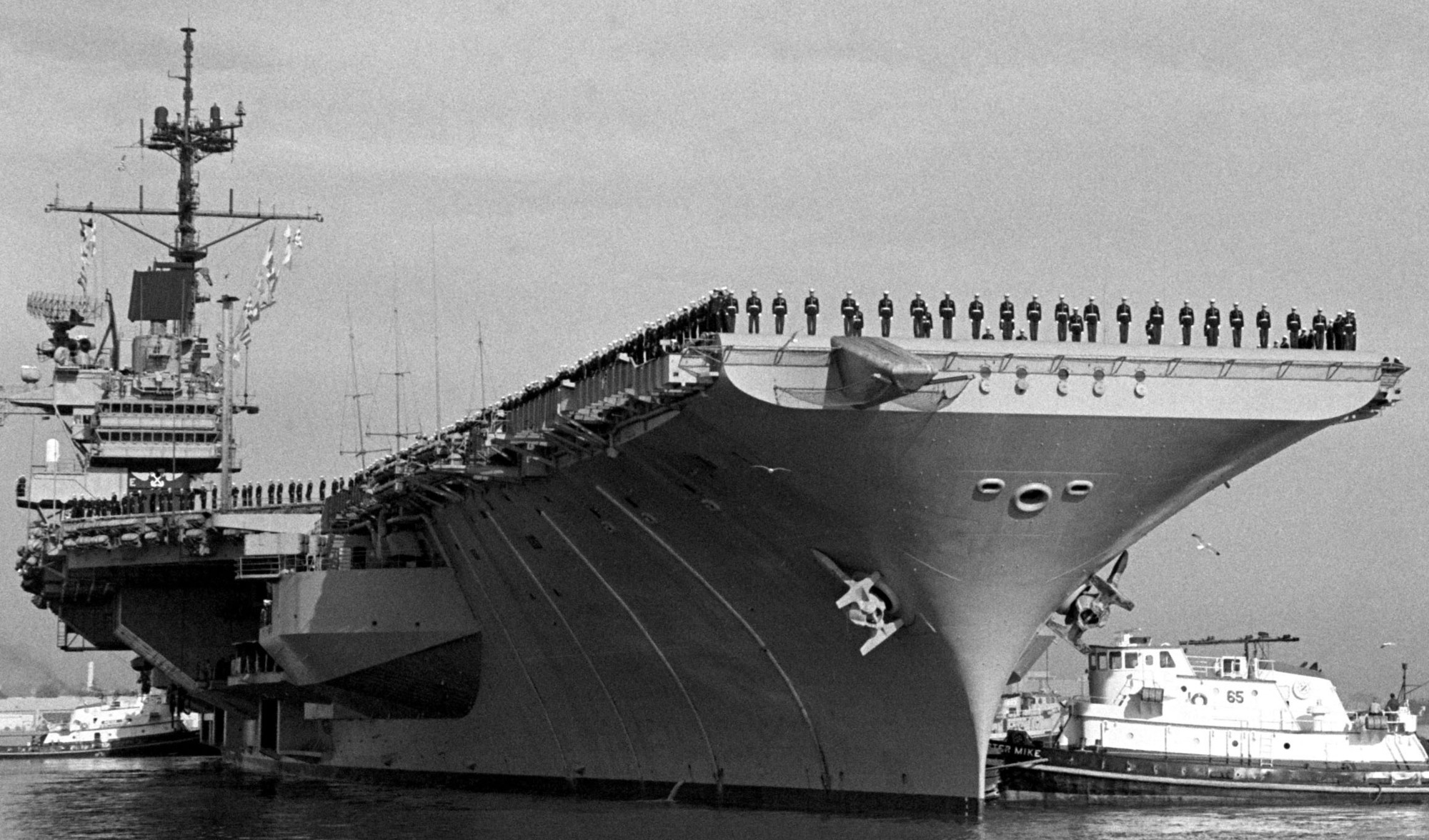 departing NAS North Island, San Diego, California - February 24, 1989 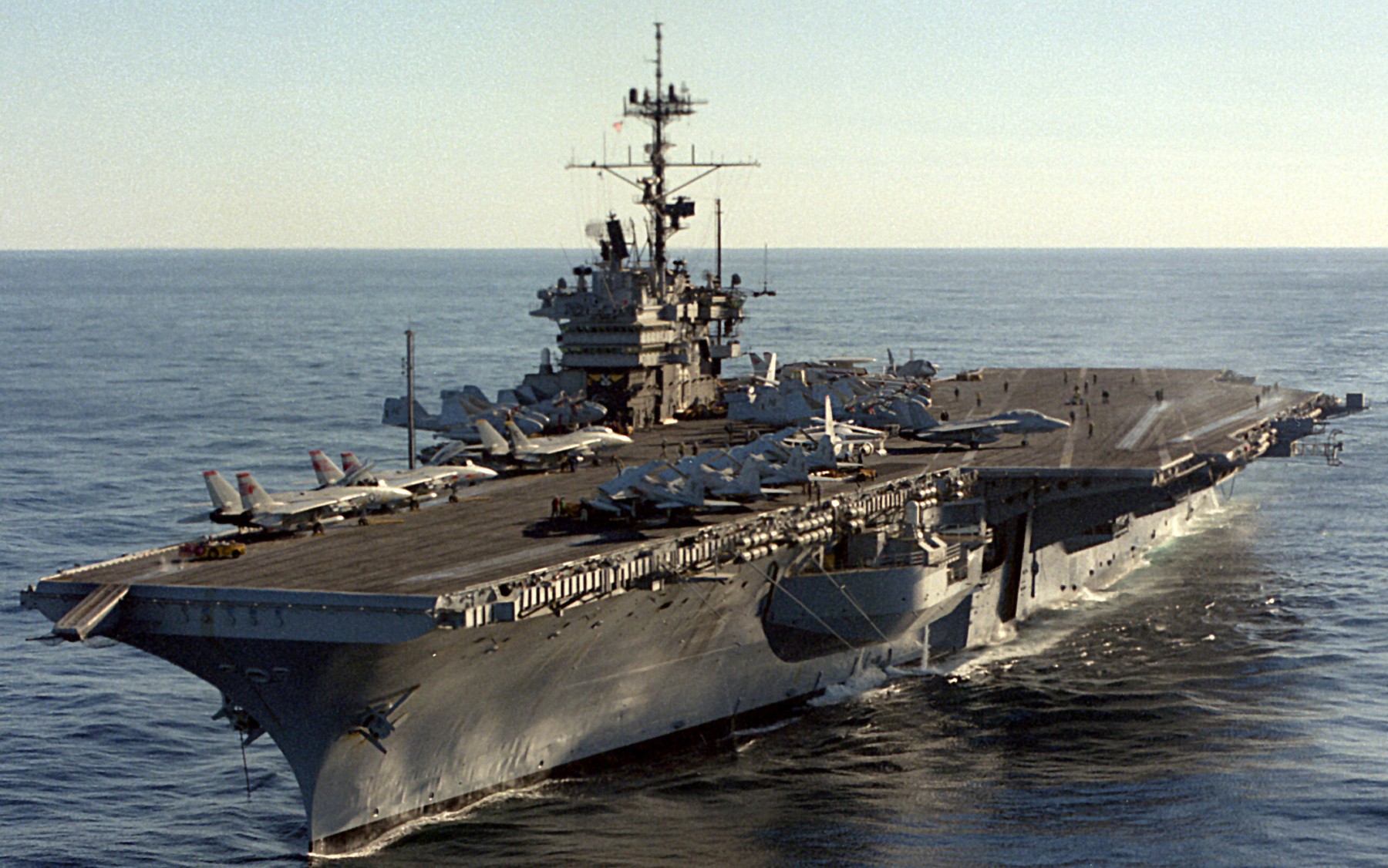 with CVW-2 embarked - off California - January 1989 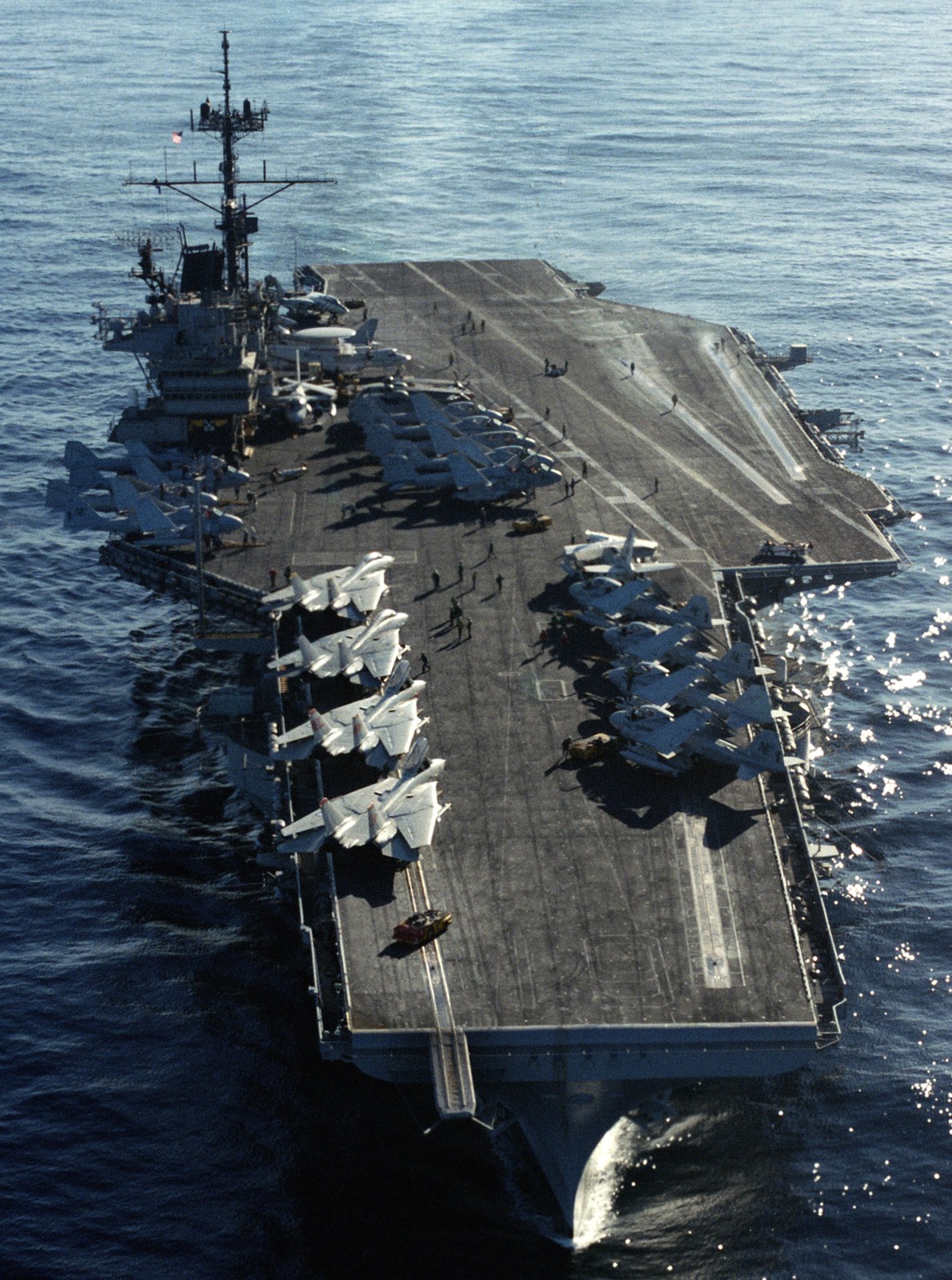 with CVW-2 embarked - off California - January 1989 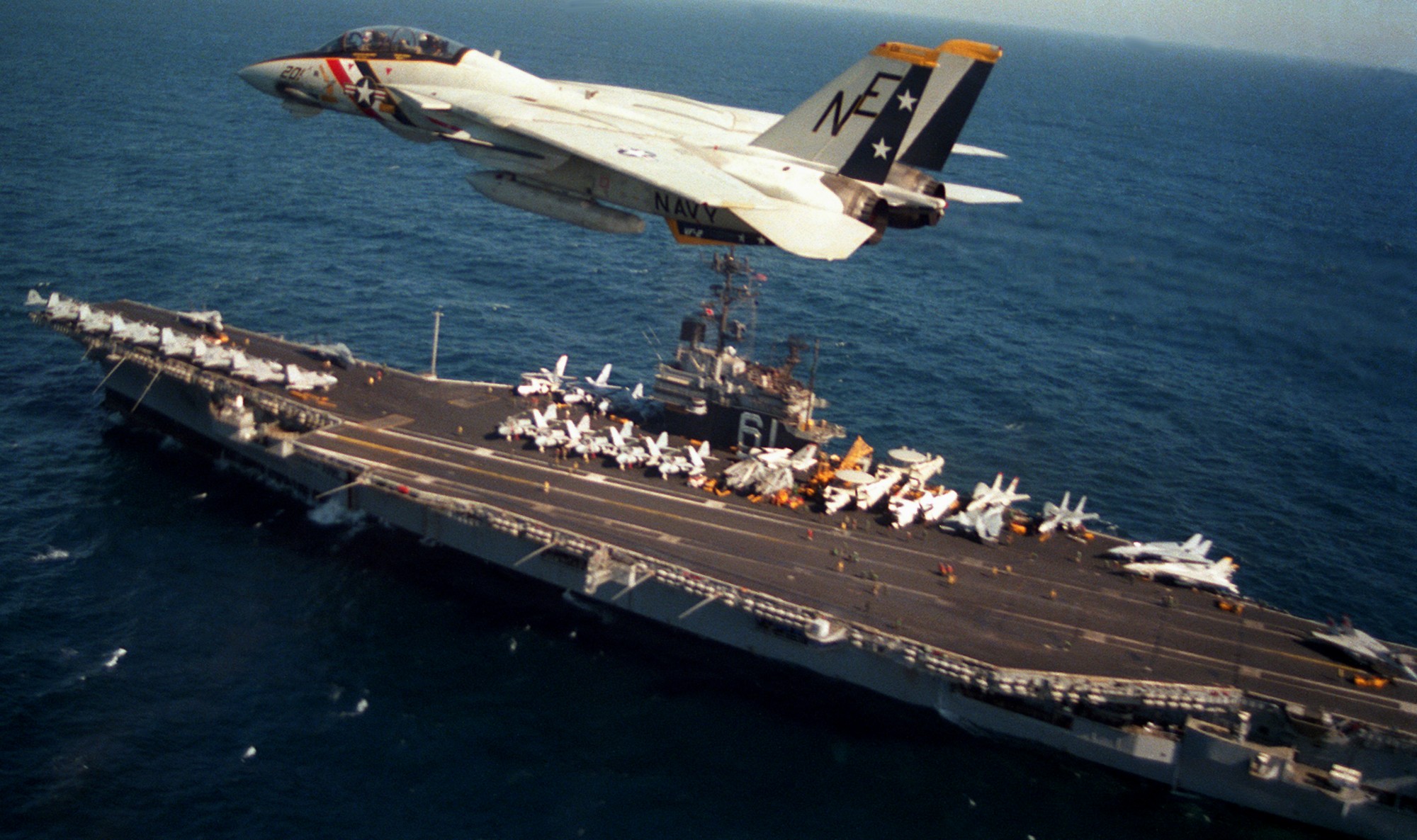 F-14A Tomcat (VF-2 / CVW-2) over USS Ranger - off California - January 1989 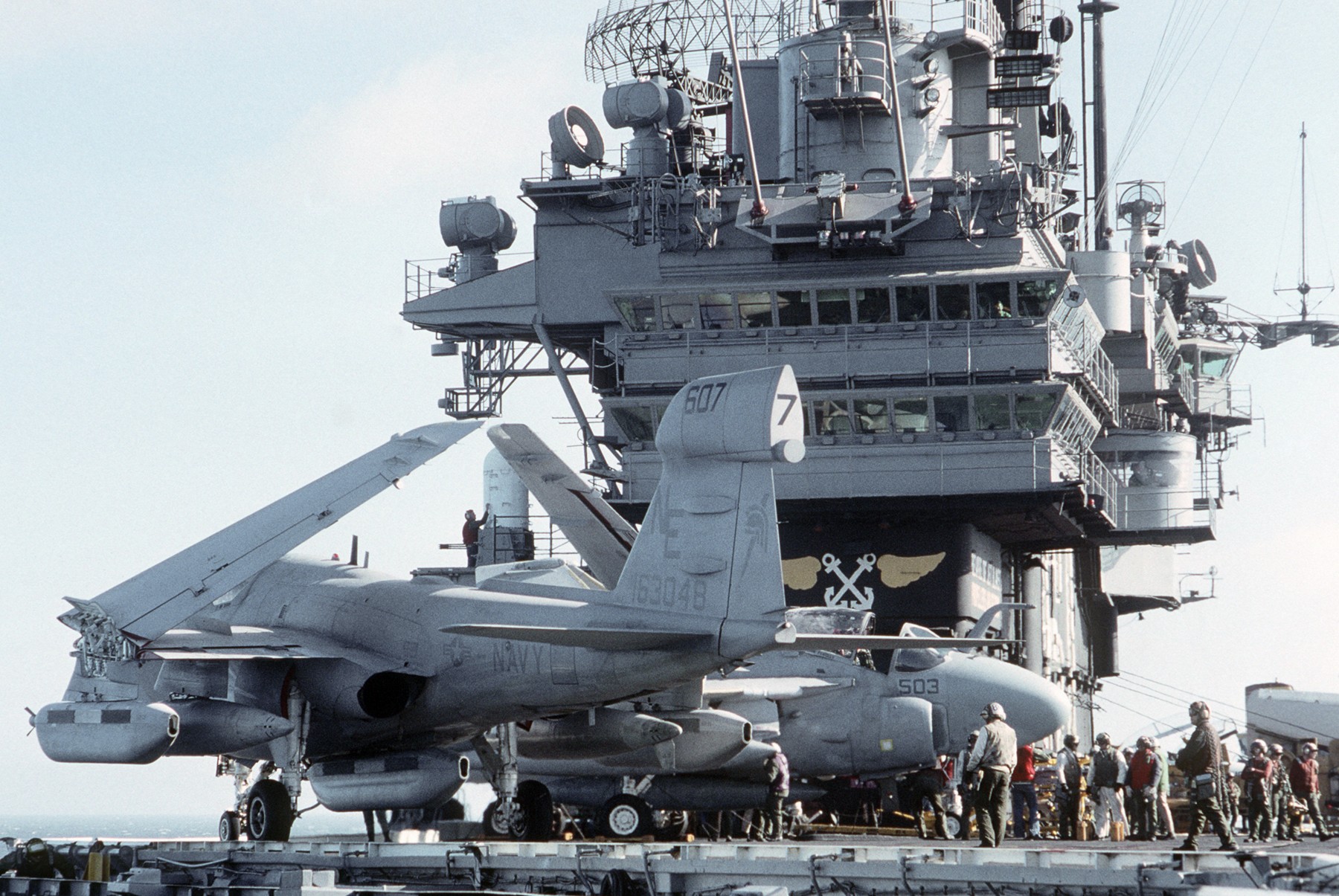 EA-6B Prowler (VAQ-131 / CVW-2) aboard USS Ranger - off California - January 1989 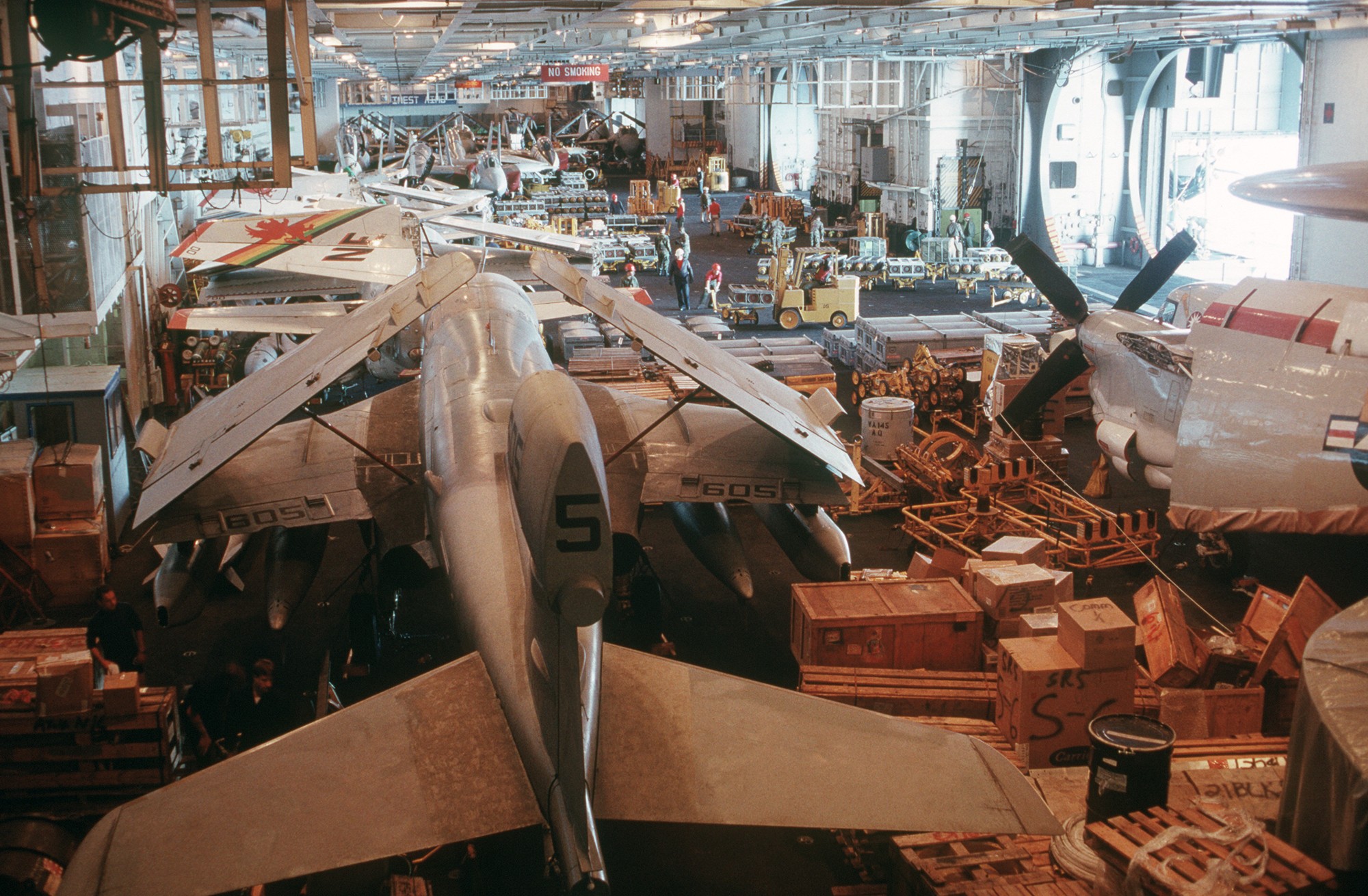 hangar bay - with CVW-2 embarked - off California - January 1989  with CVW-2 embarked - off California - December 1988 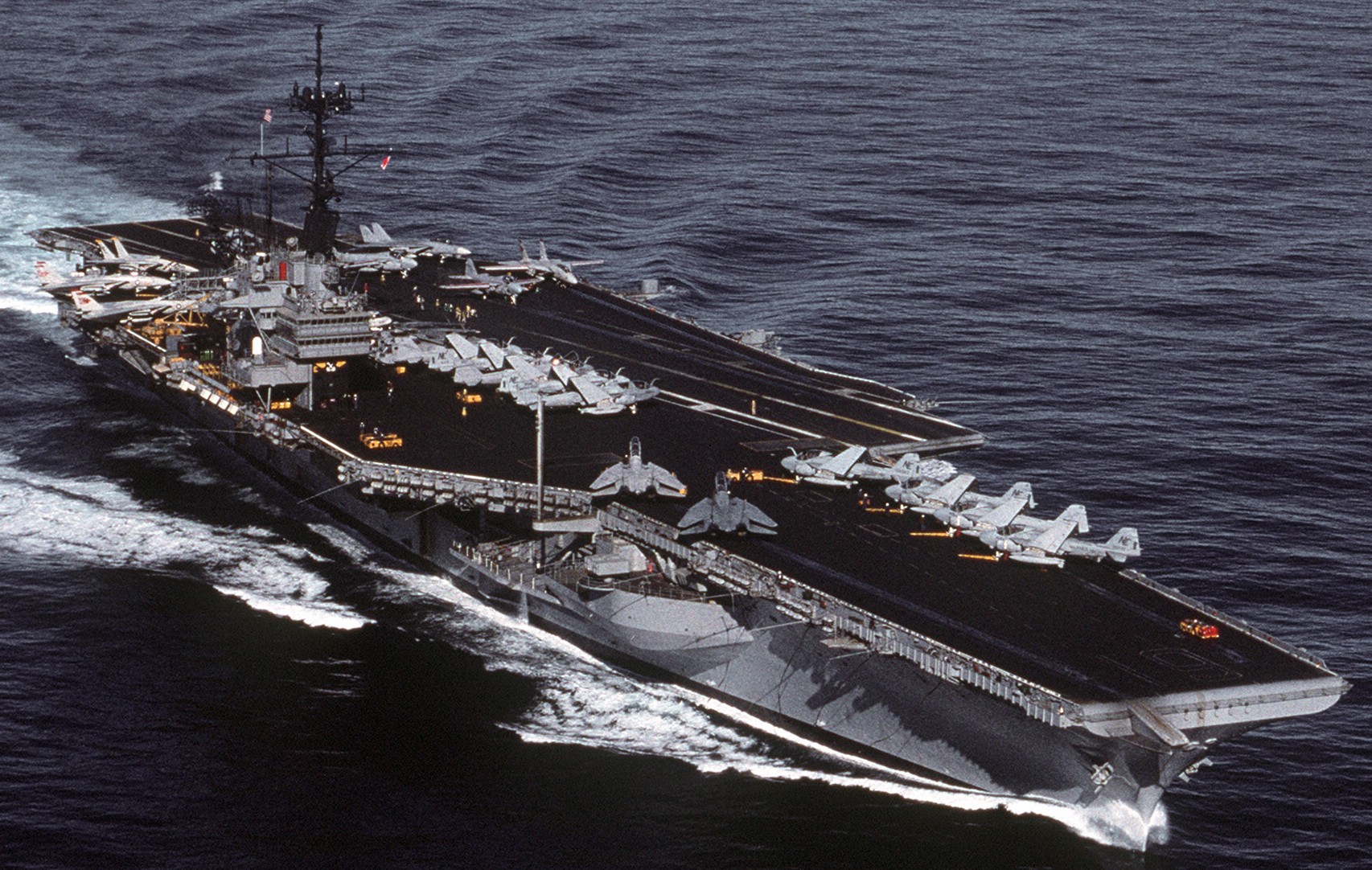 with CVW-2 embarked - off California - December 1988 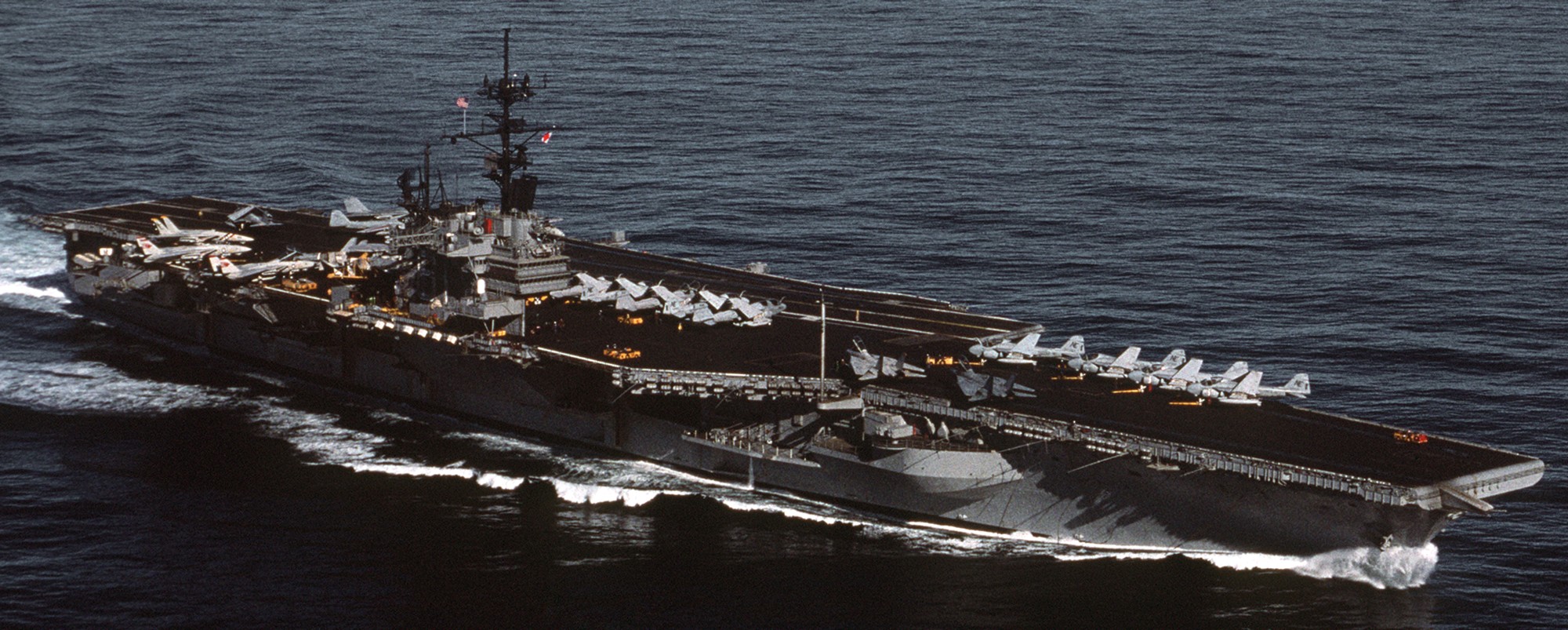 with CVW-2 embarked - off California - December 1988 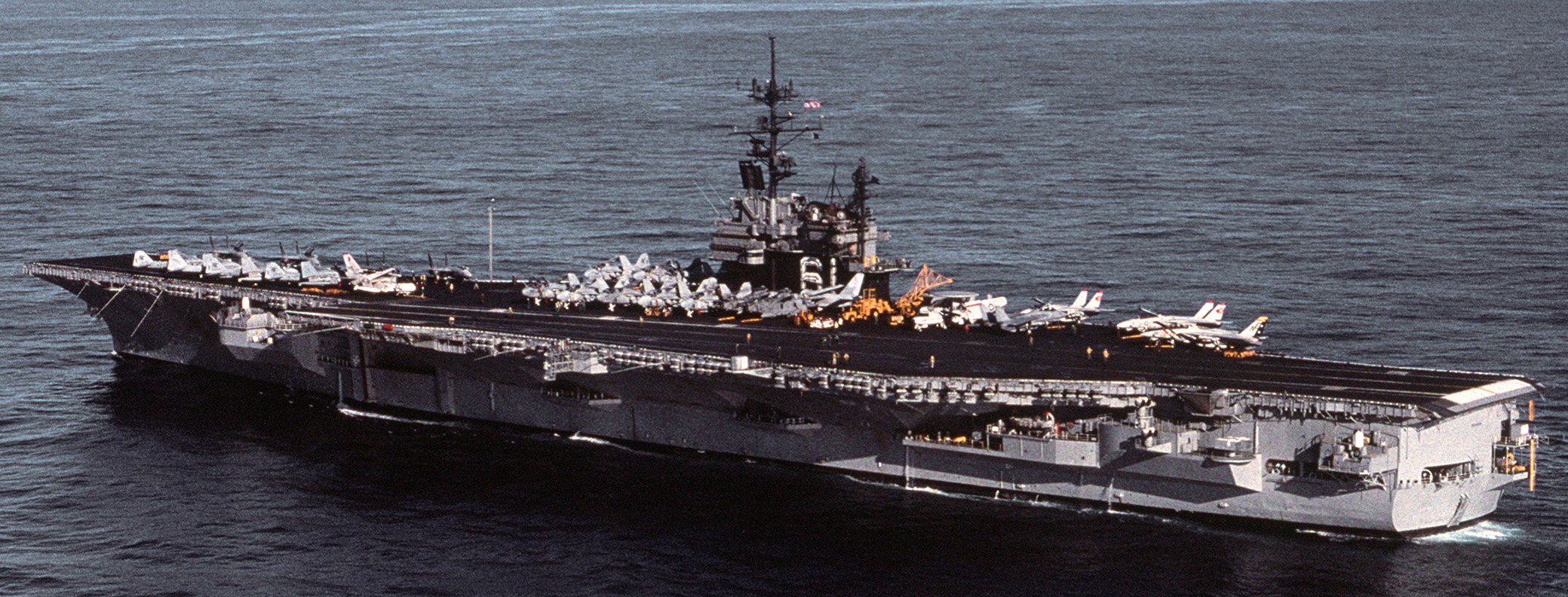 with CVW-2 embarked - off California - December 1988  with CVW-2 embarked - off California - December 1988 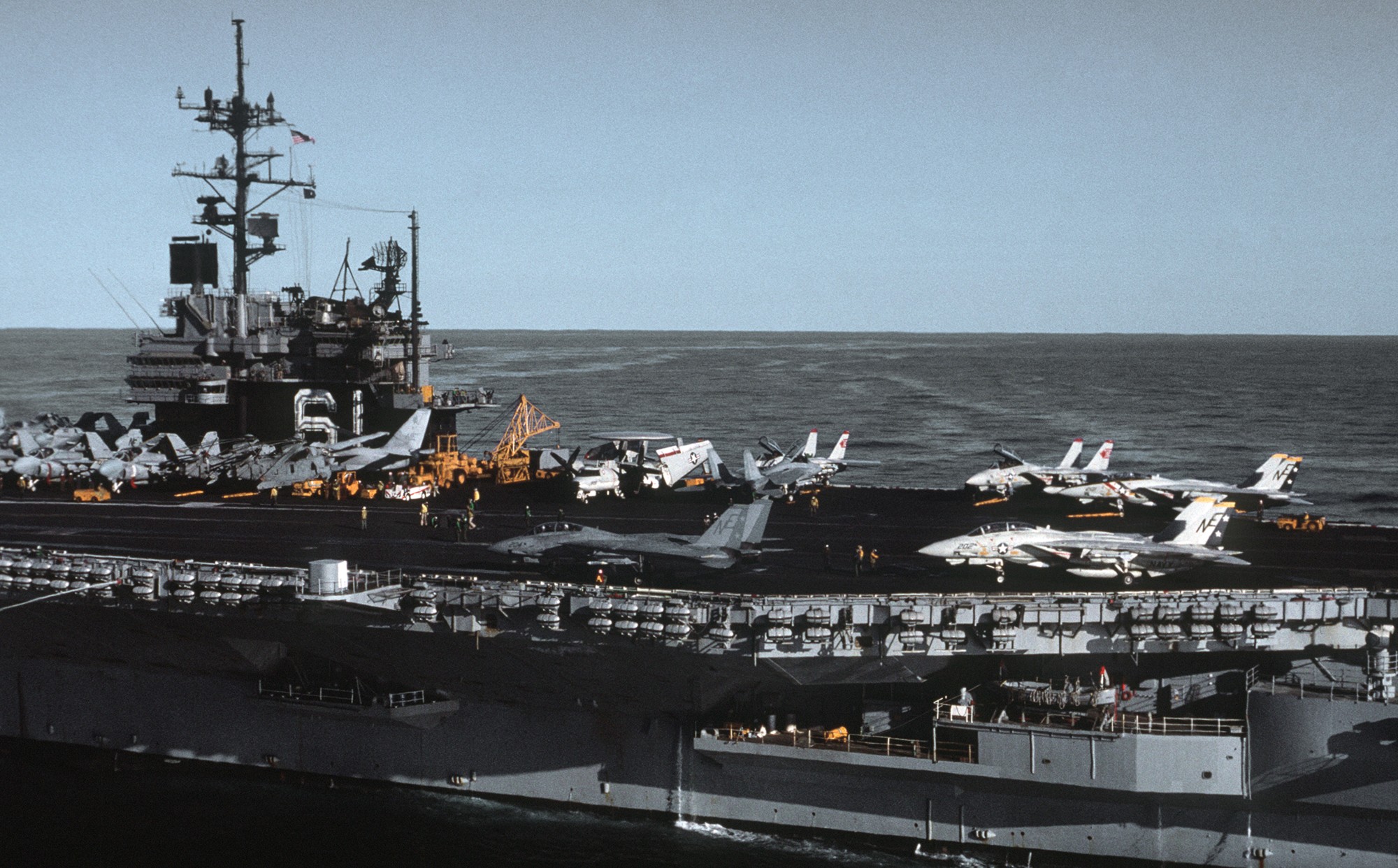 with CVW-2 embarked - off California - December 1988 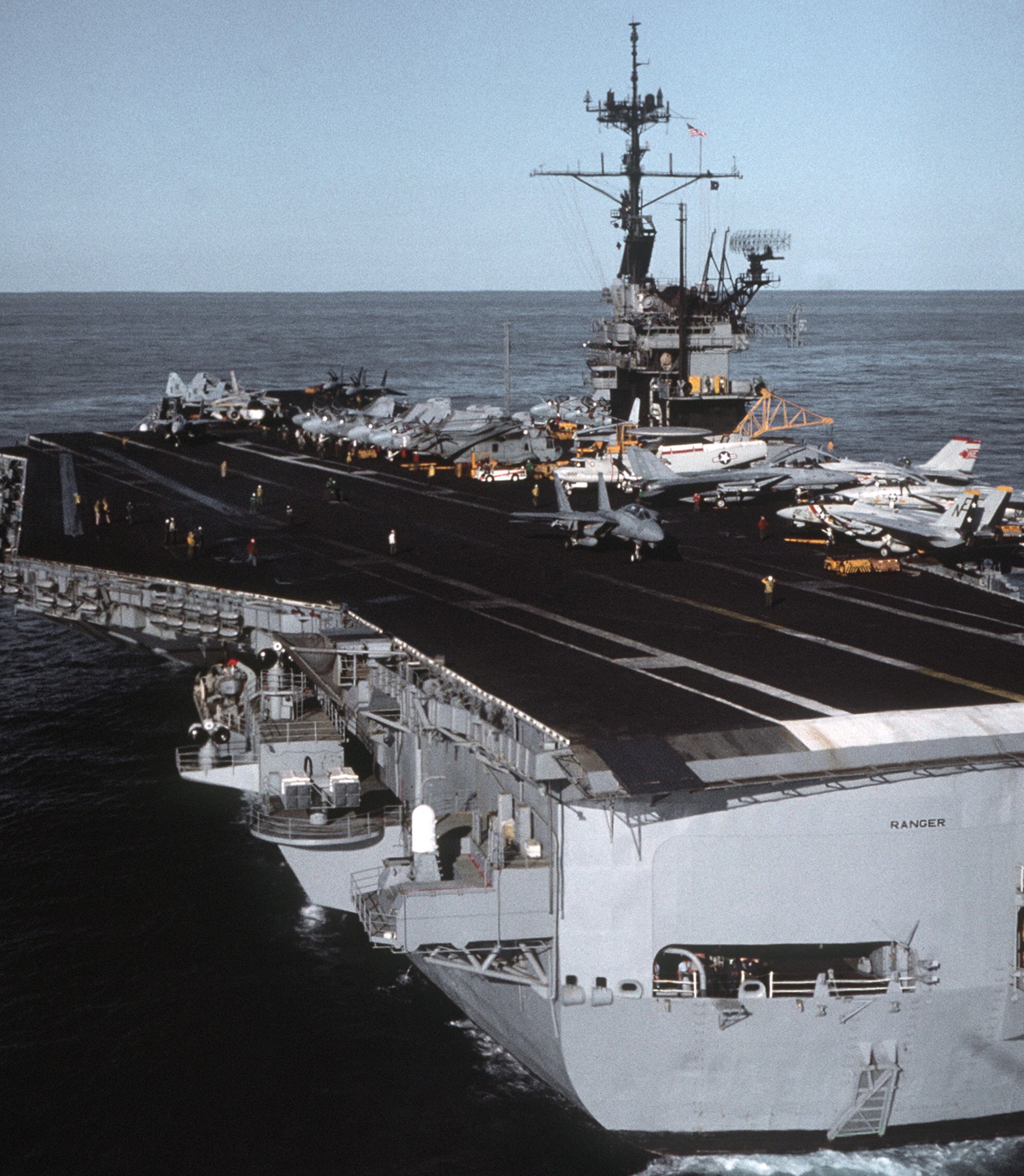 with CVW-2 embarked - off California - December 1988 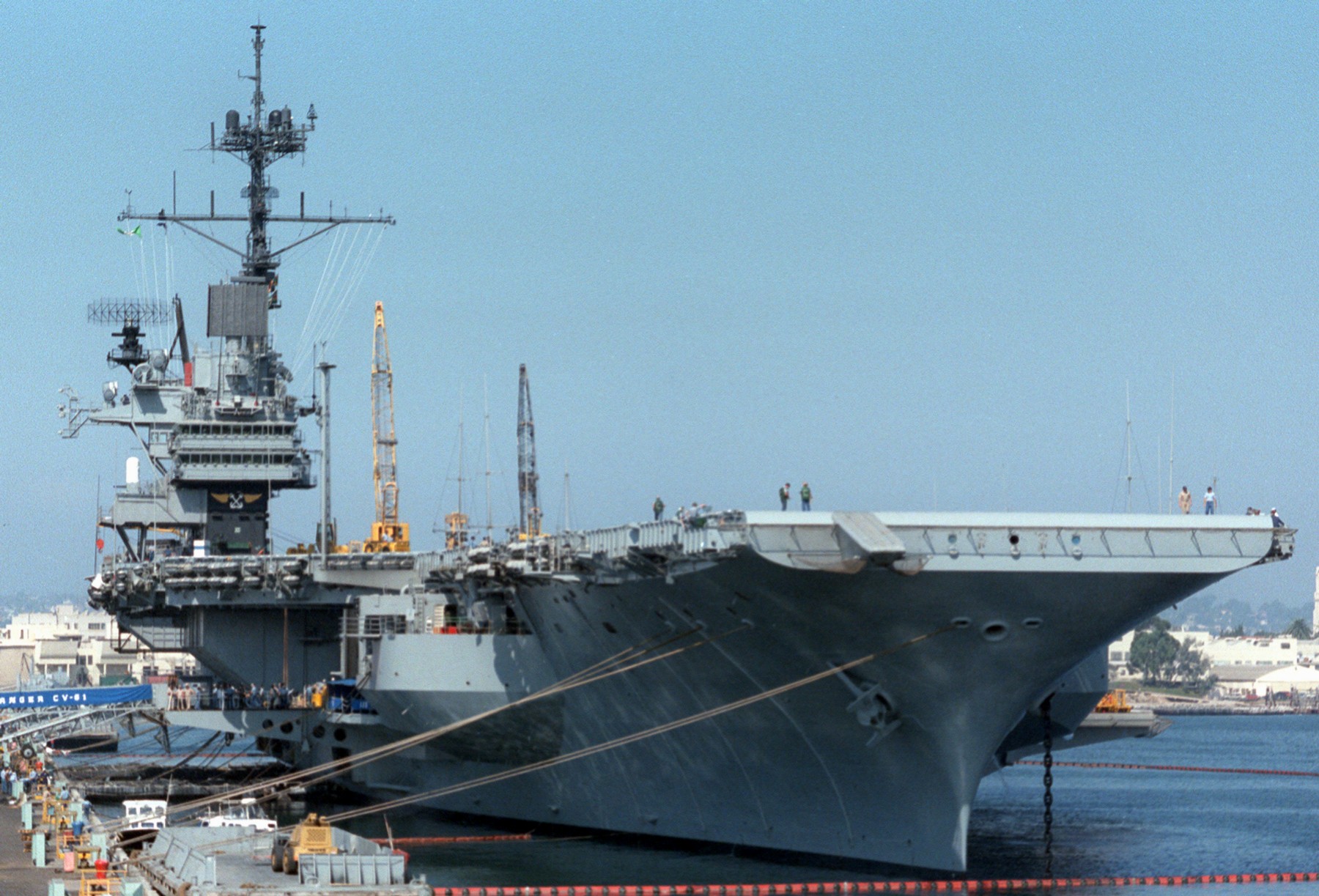 catapult tests at NAS North Island, California - April 1988 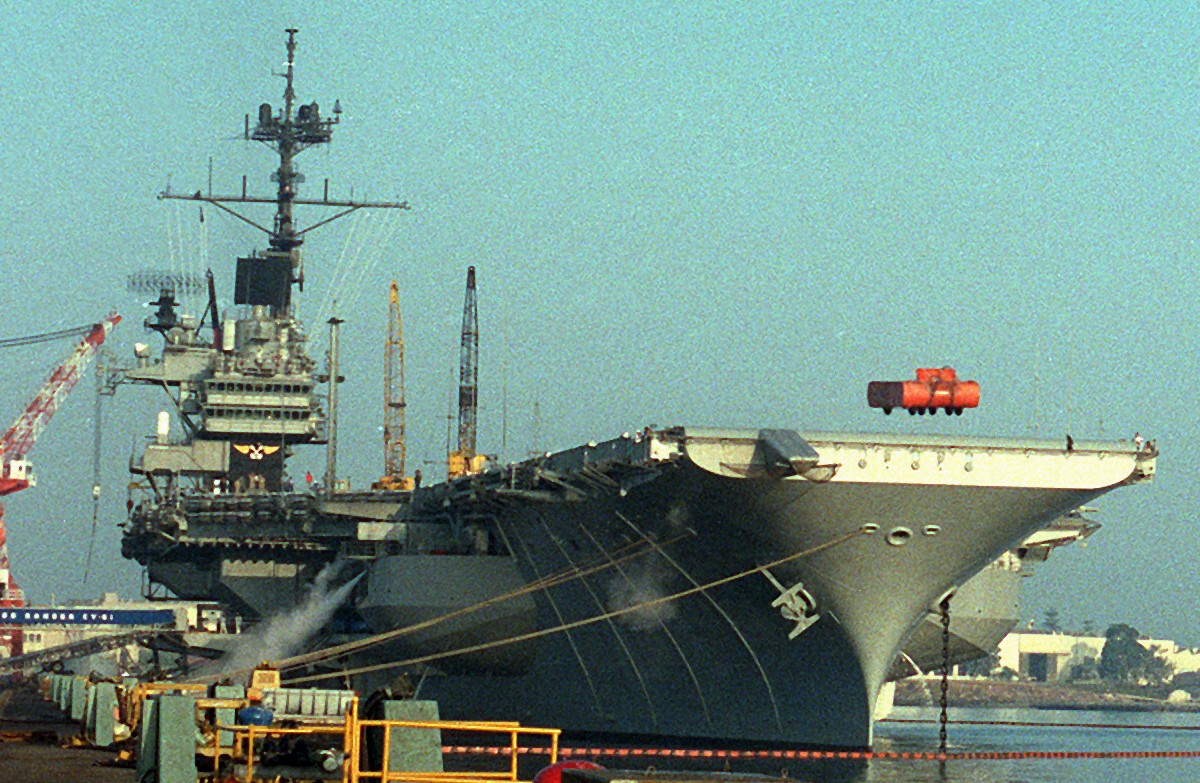 catapult tests at NAS North Island, California - April 1988  celebrating the 200th anniversary of the Constitution of the United States - Pacific Ocean - September 1987 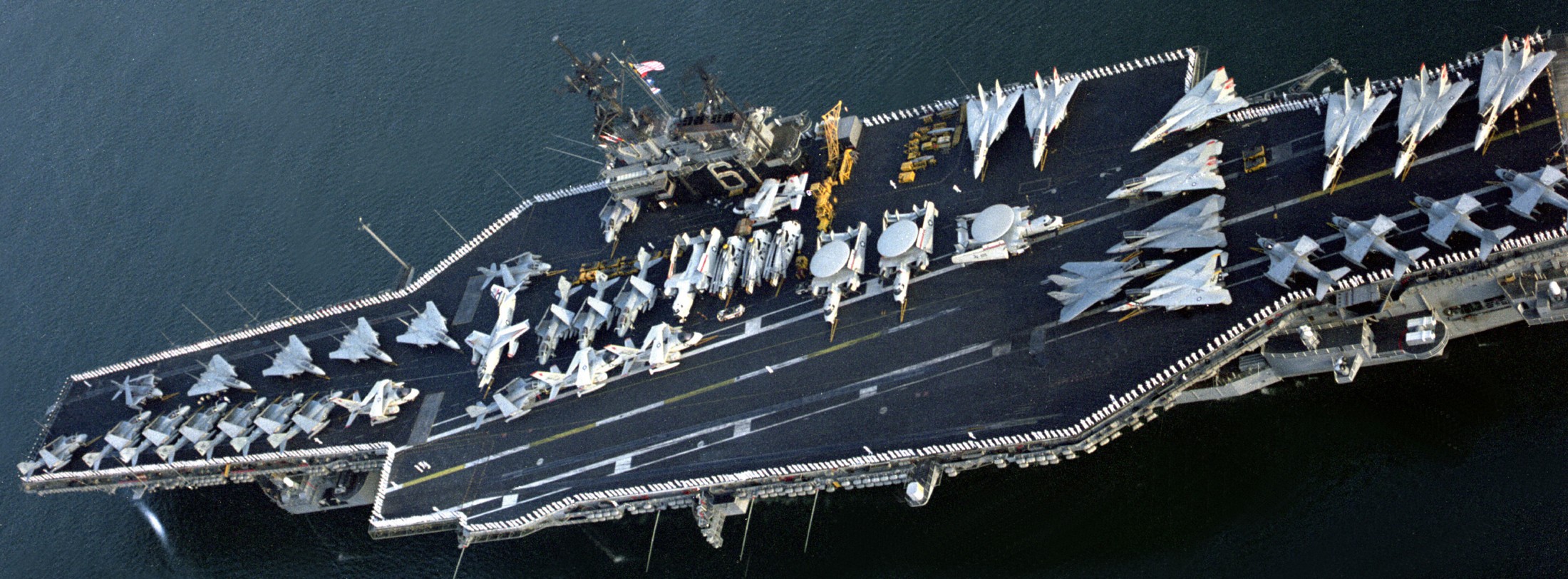 with CVW-2 embarked - off Singapore - 1987 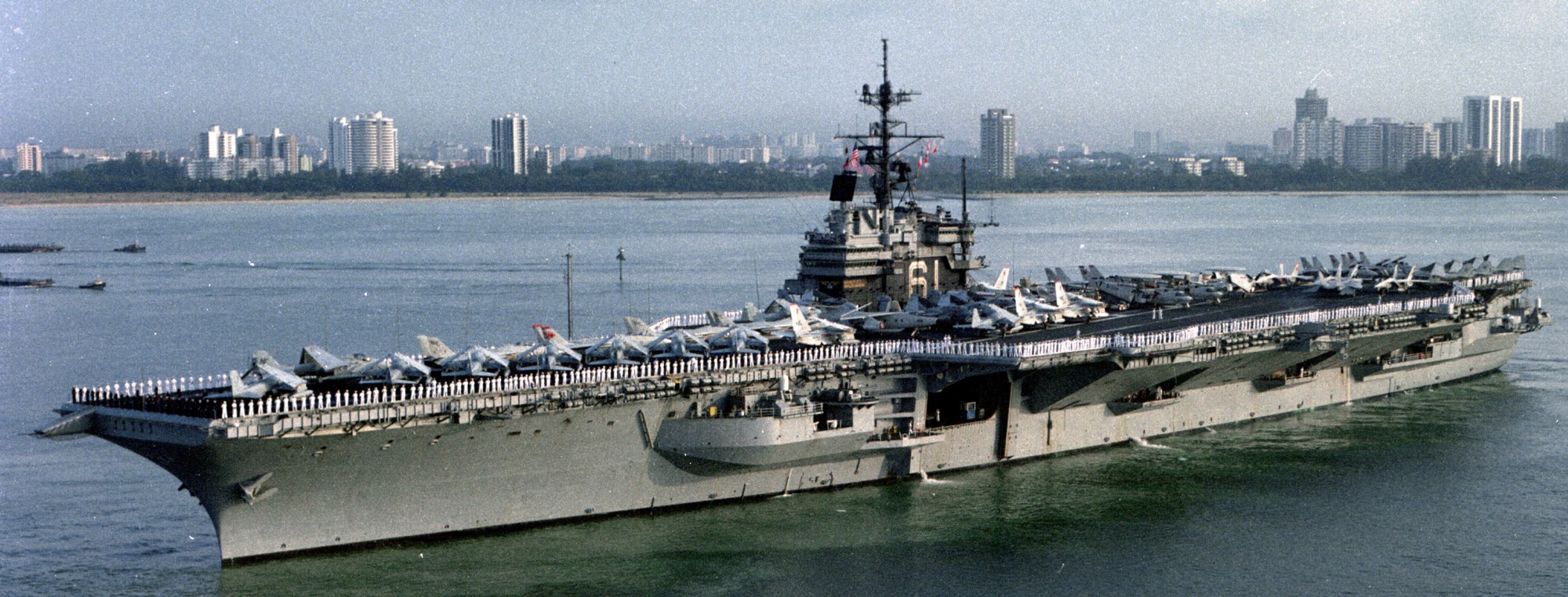 with CVW-2 embarked - off Singapore - 1987 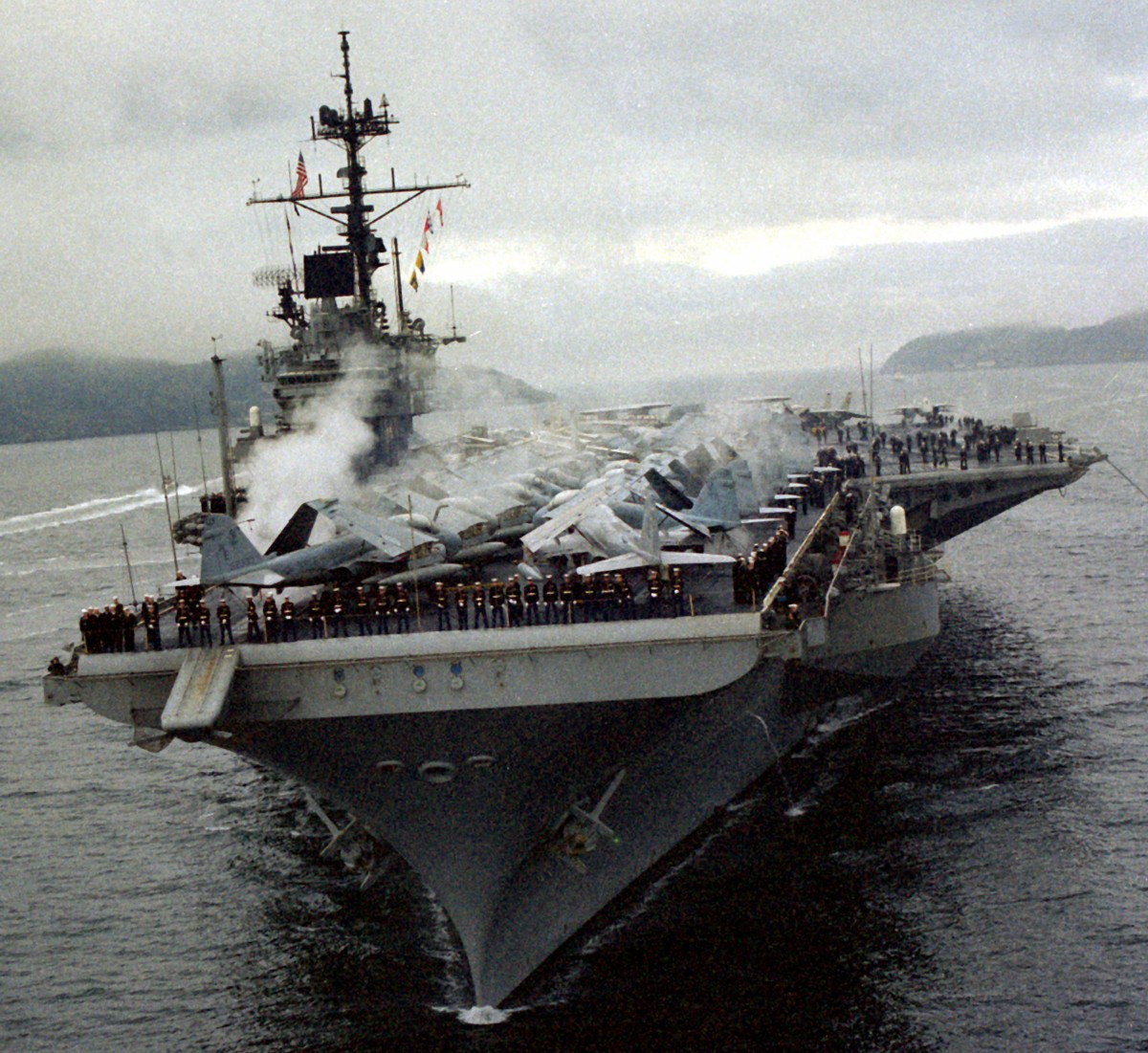 with CVW-2 embarked - Sasebo, Japan - April 1987 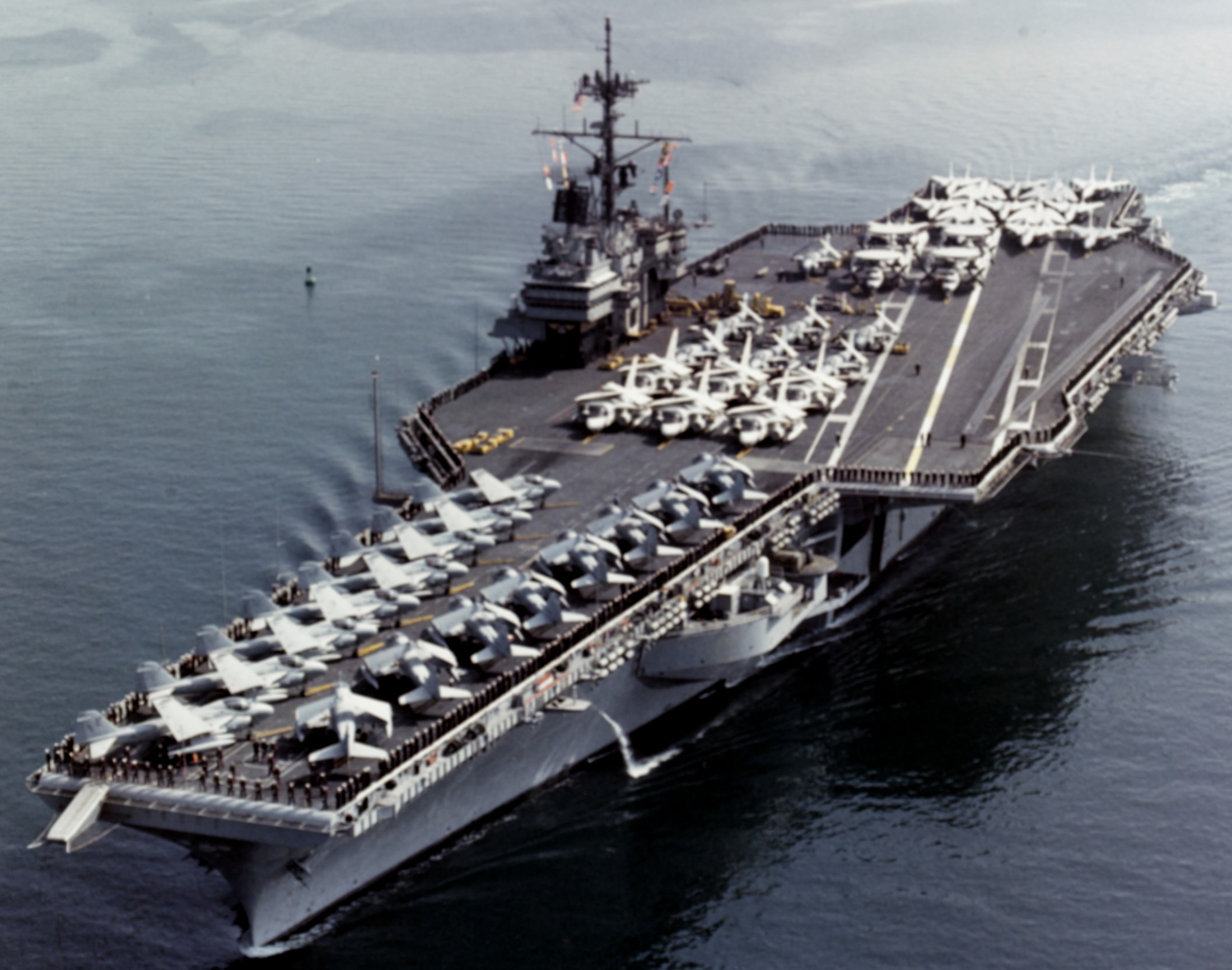 with CVW-2 embarked - departing San Diego, California - March 1987 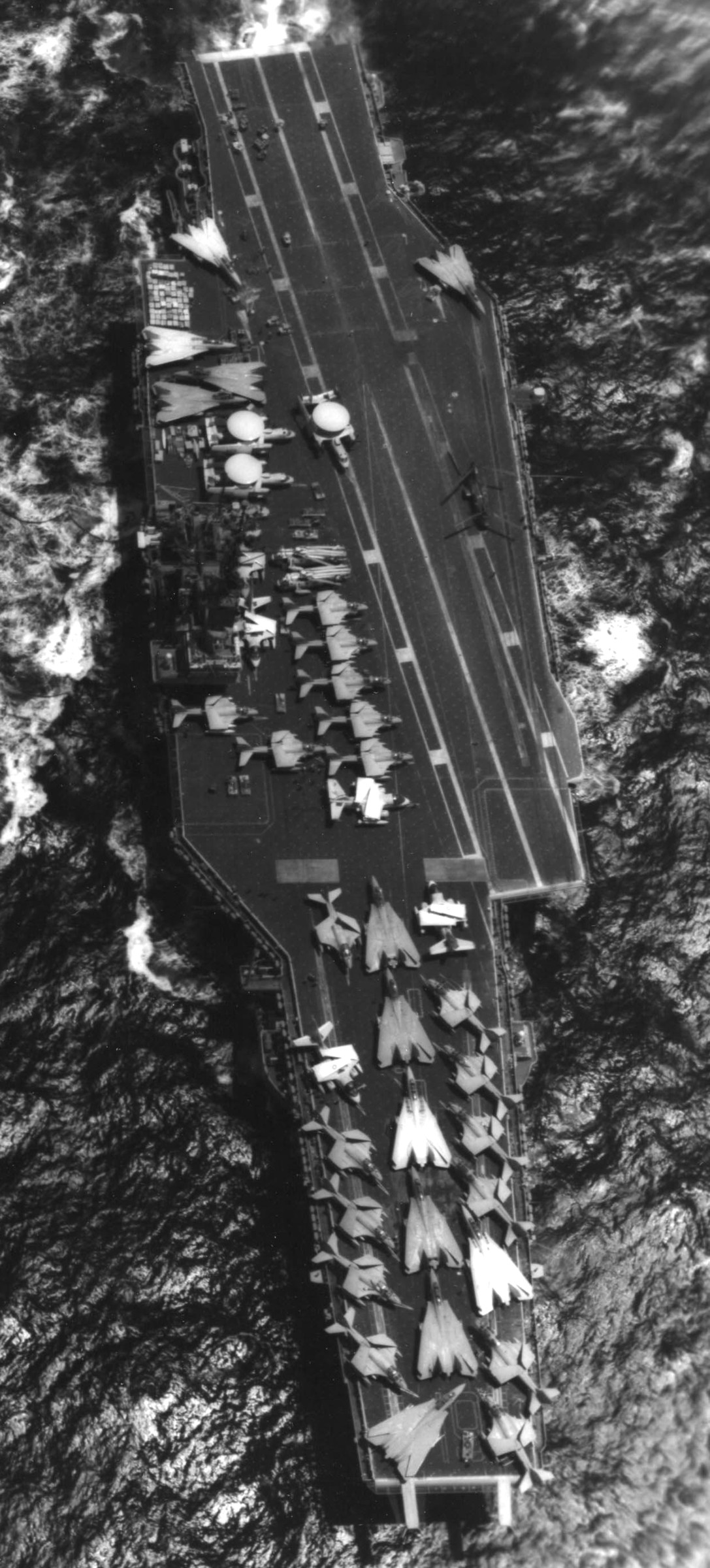 with CVW-2 embarked - exercise RIMPAC 86 - June 1986 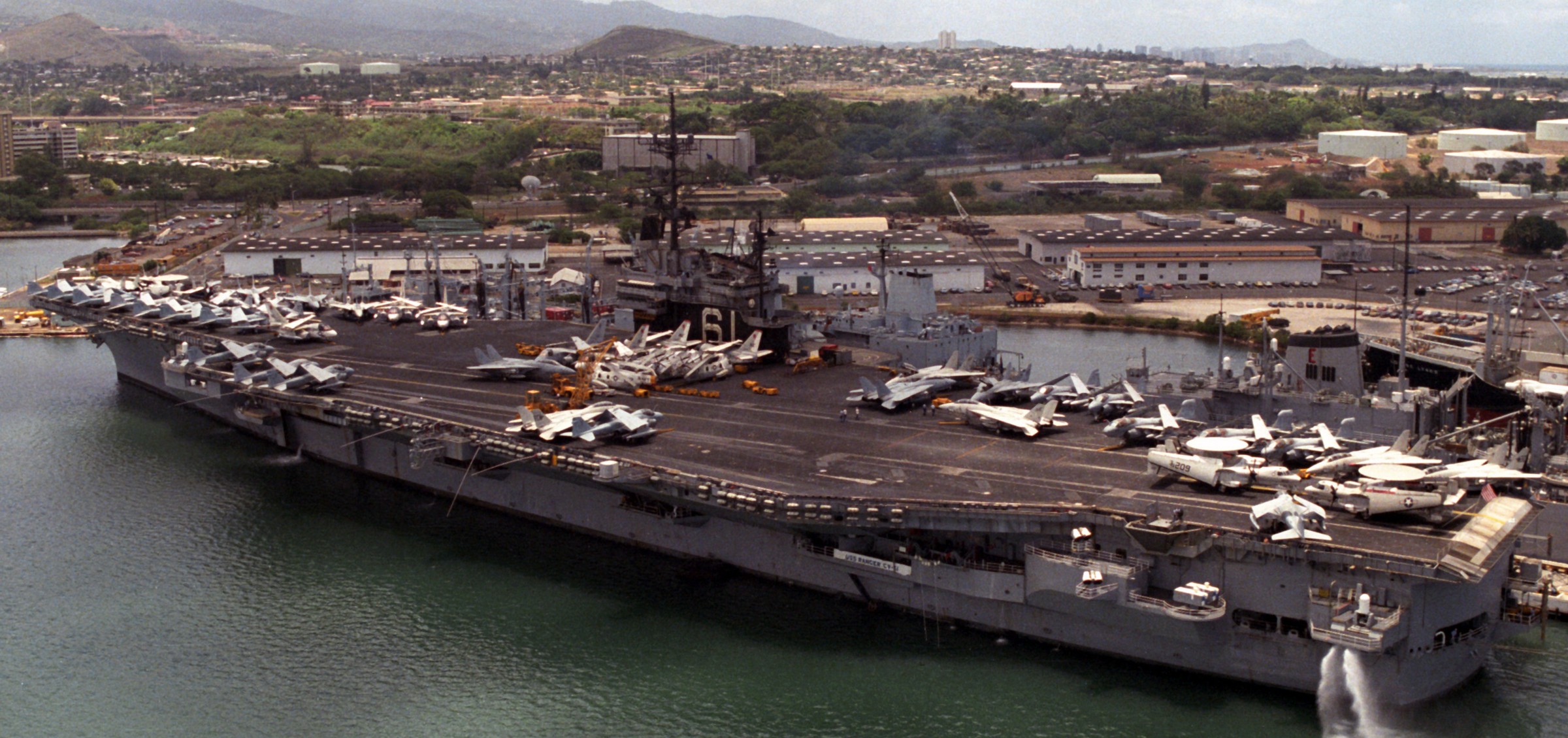 with CVW-2 embarked - Pearl Harbor, Hawaii - June 1986  circa 1986 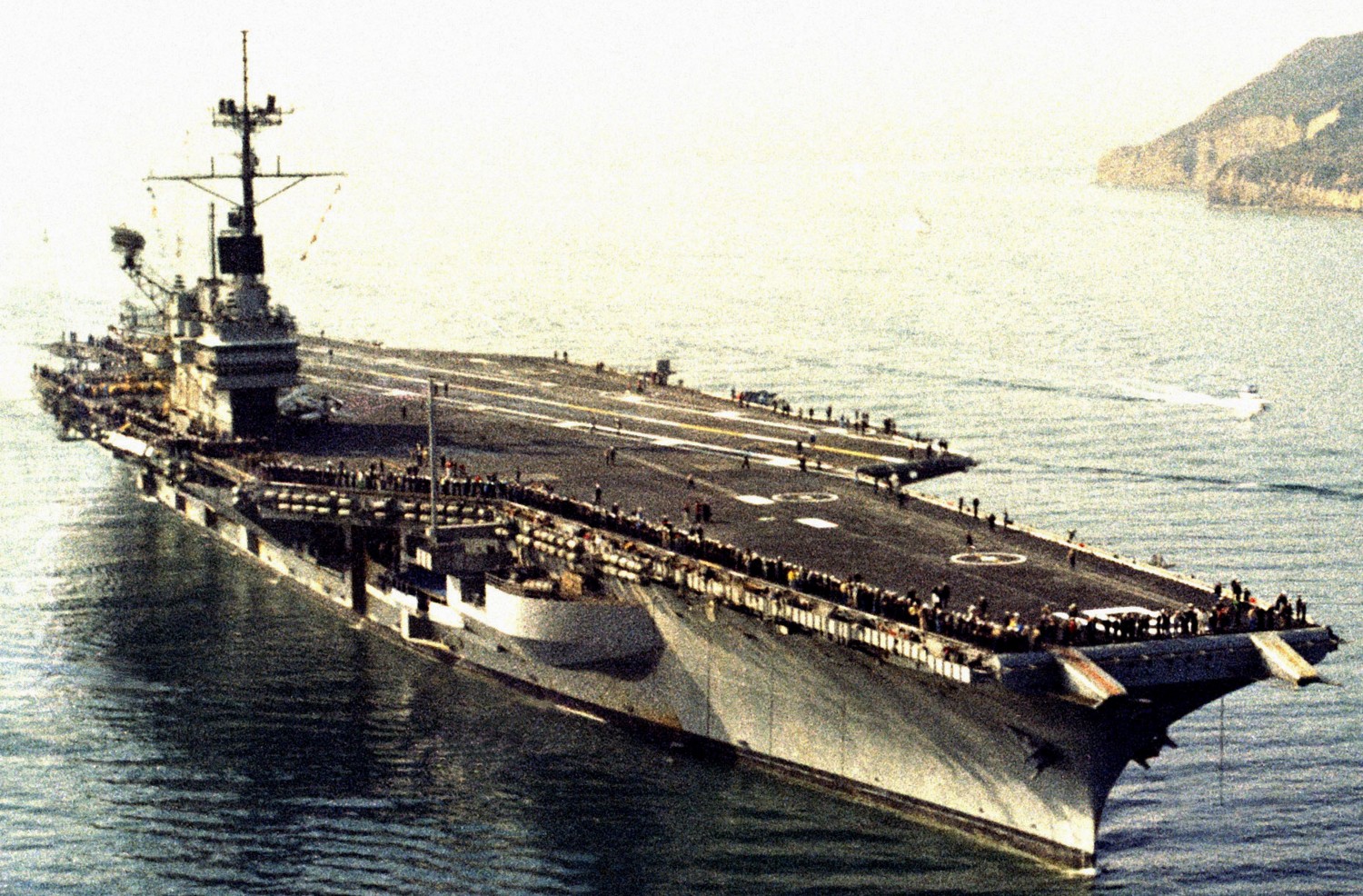 returning to San Diego, California - February 29, 1984 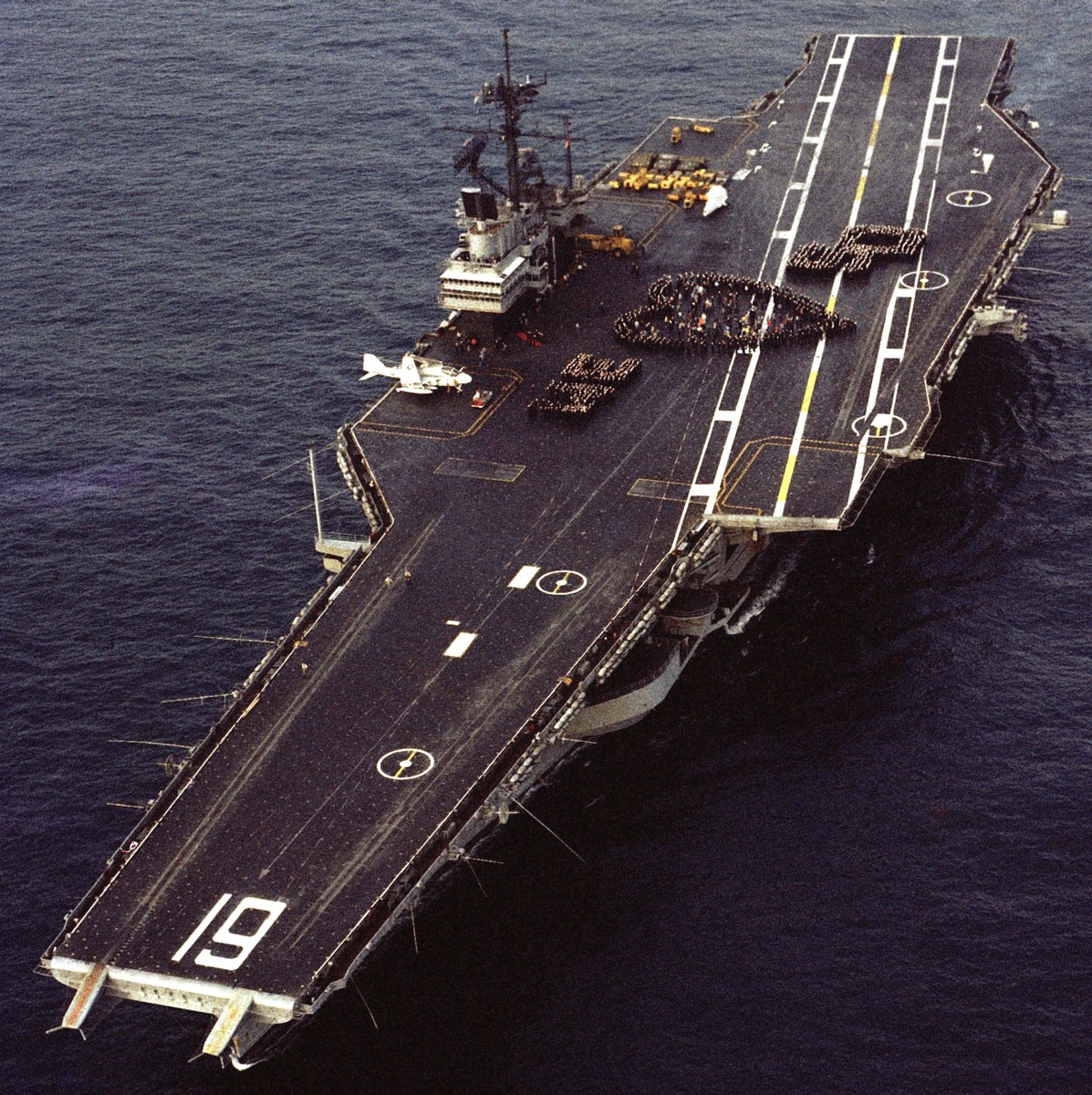 returning to San Diego, California - February 29, 1984 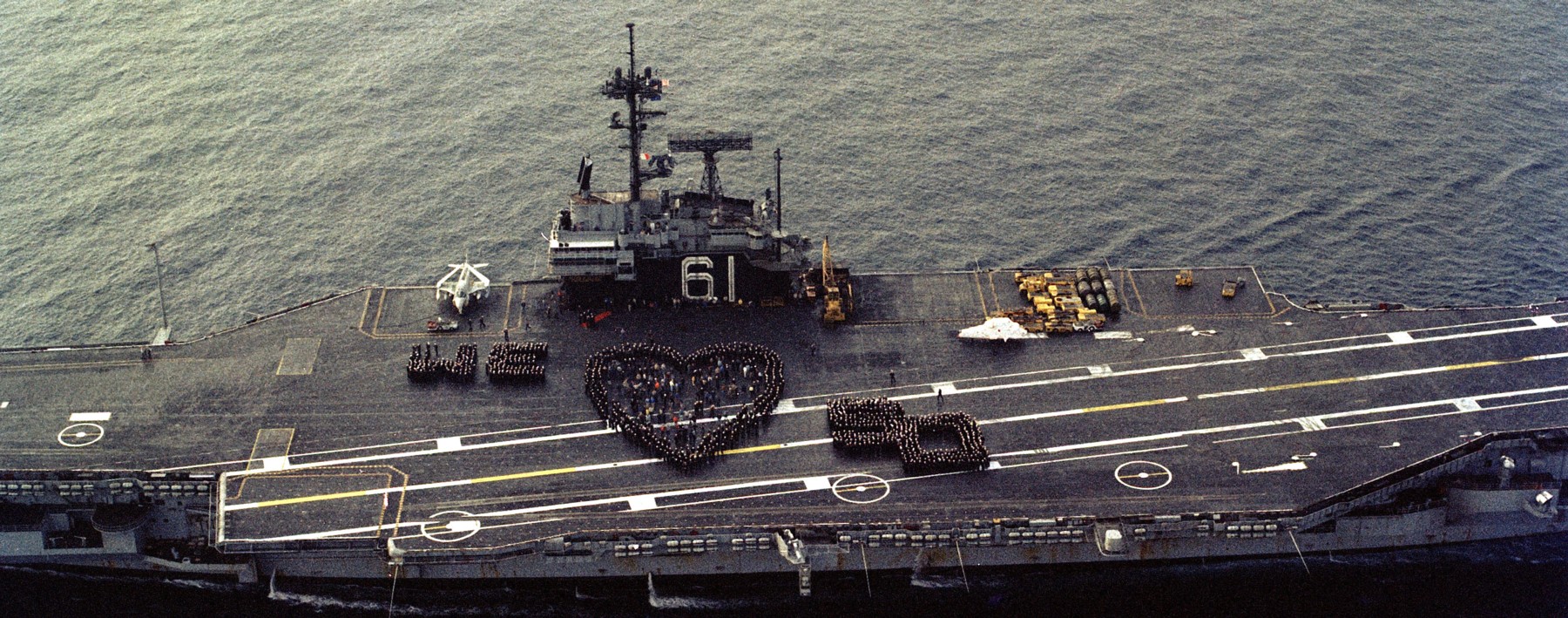 returning to San Diego, California - February 29, 1984 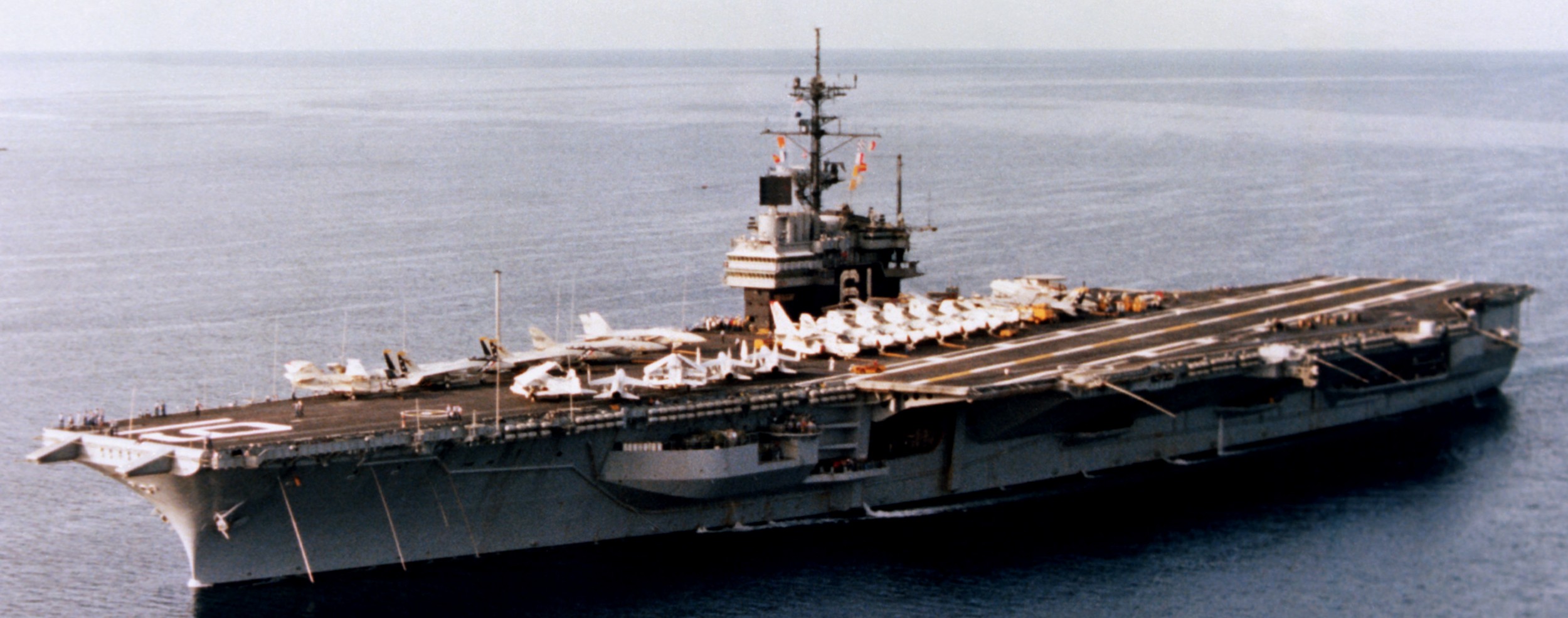 with CVW-9 embarked - off California - June 1983 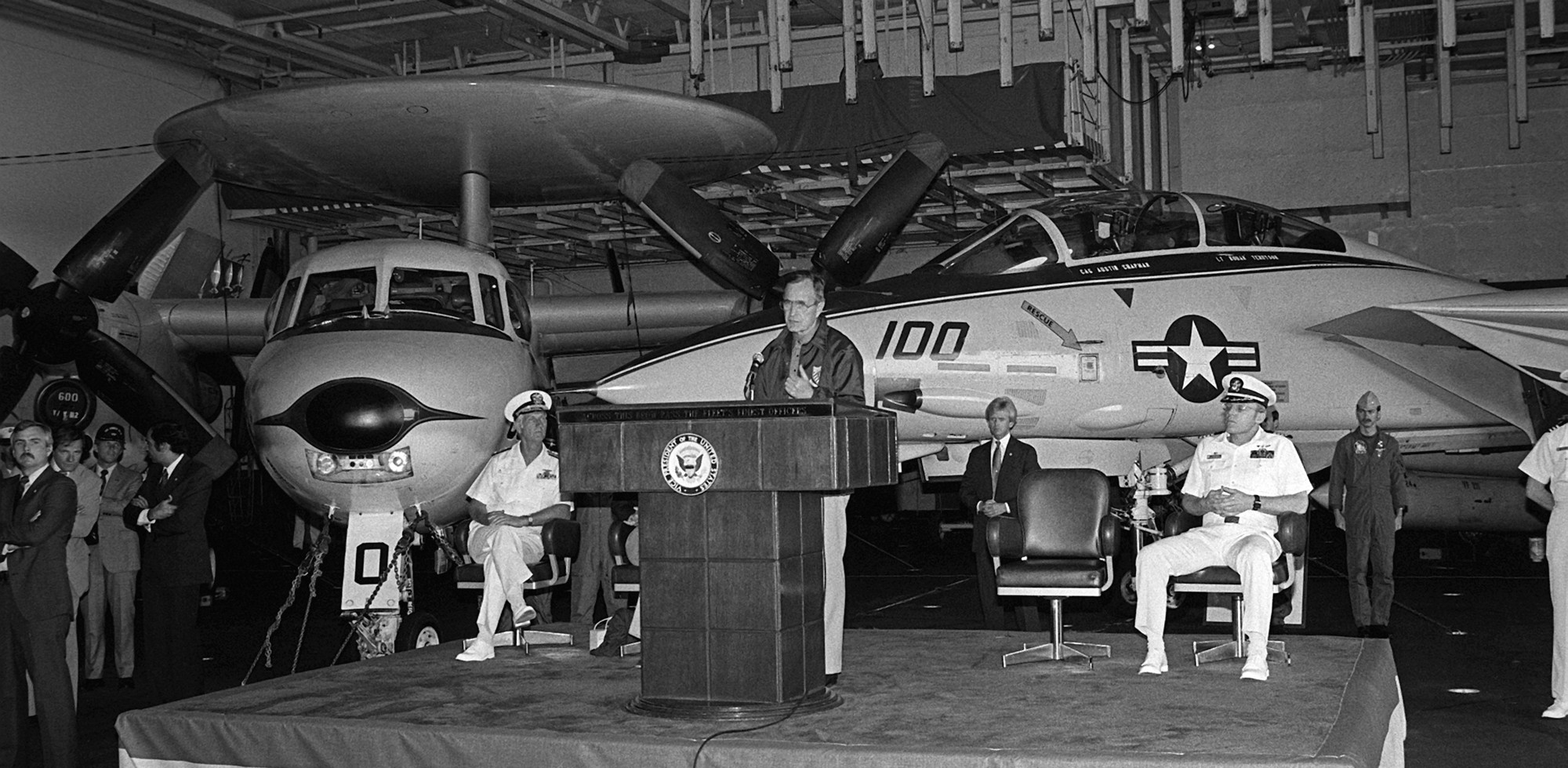 Vice President George H. W. Bush aboard USS Ranger at NAS North Island, California - May 1983 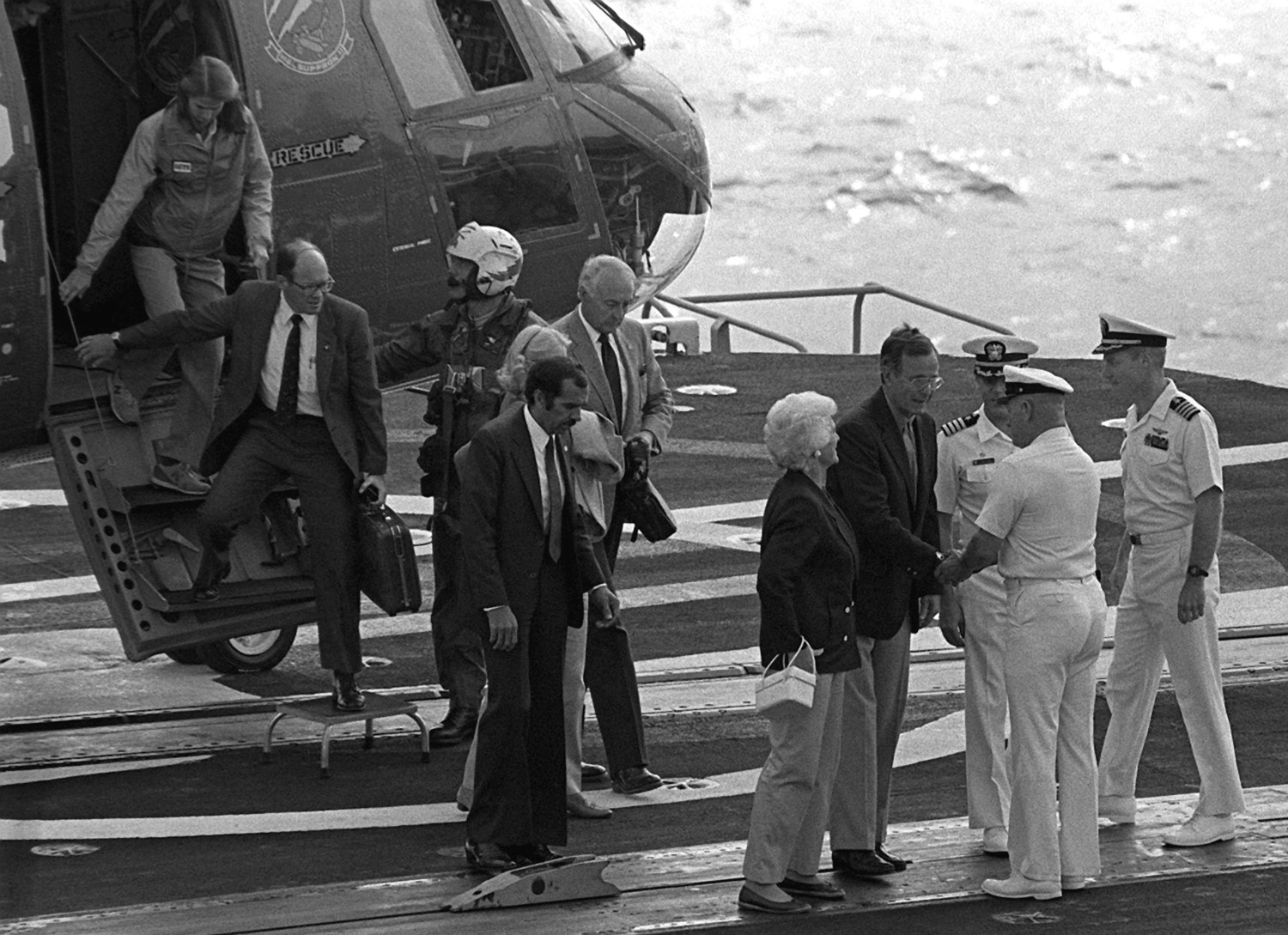 Vice President George H. W. Bush aboard USS Ranger at NAS North Island, California - May 1983 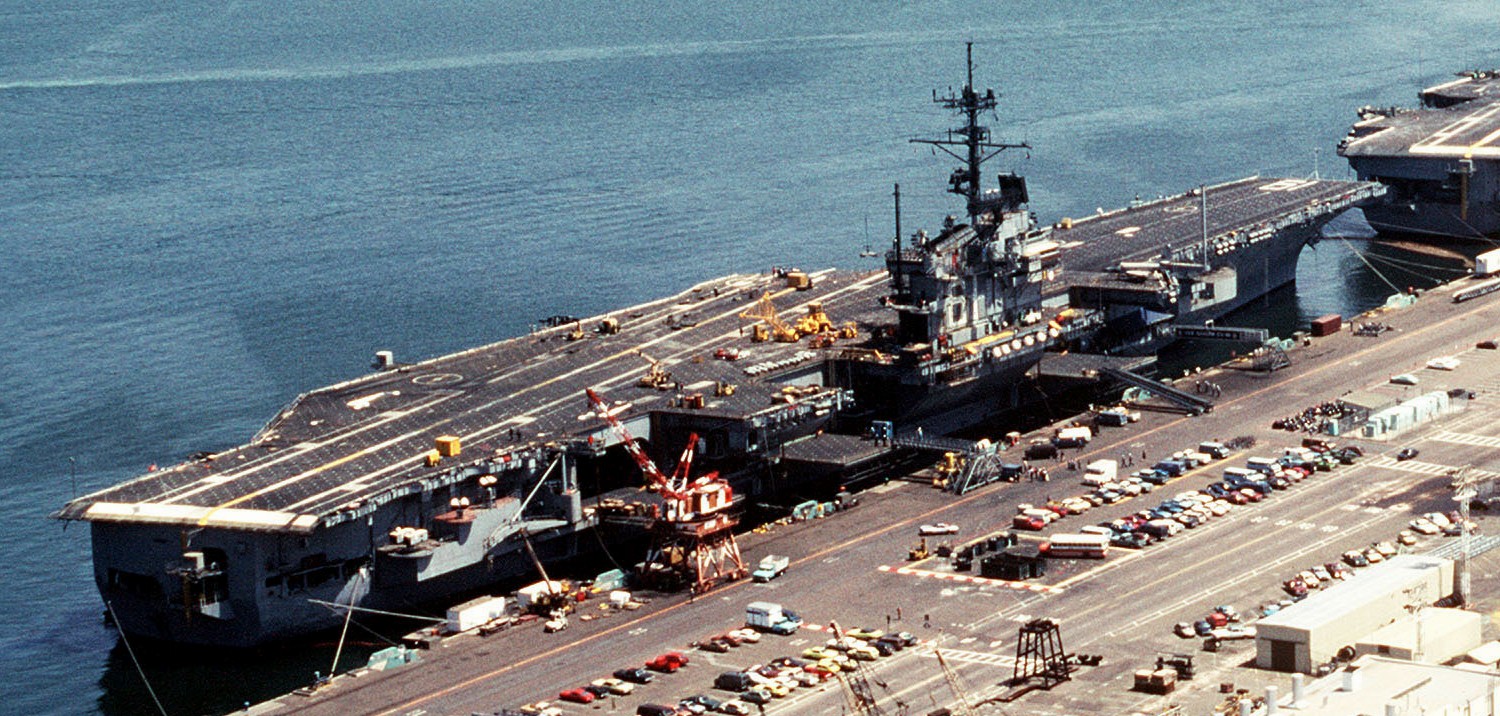 moored at NAS North Island, California - April 1983 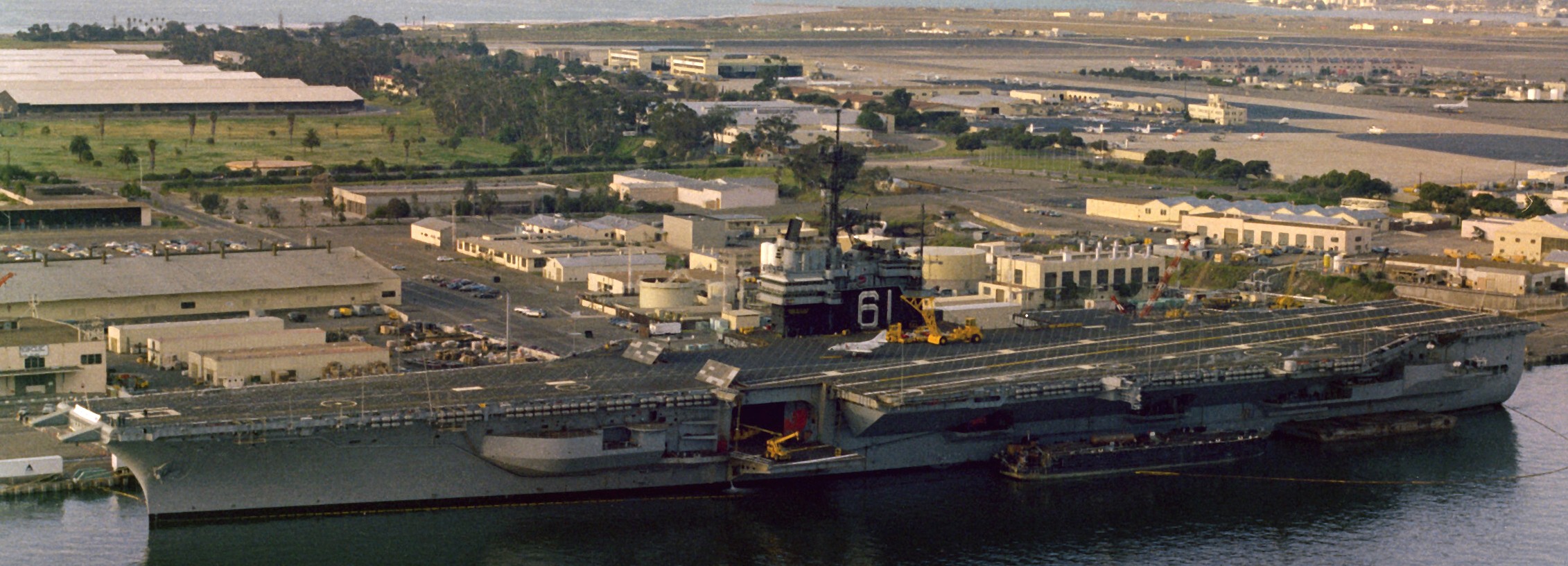 moored at NAS North Island, California - January 1983  with CVW-2 embarked - August 1982 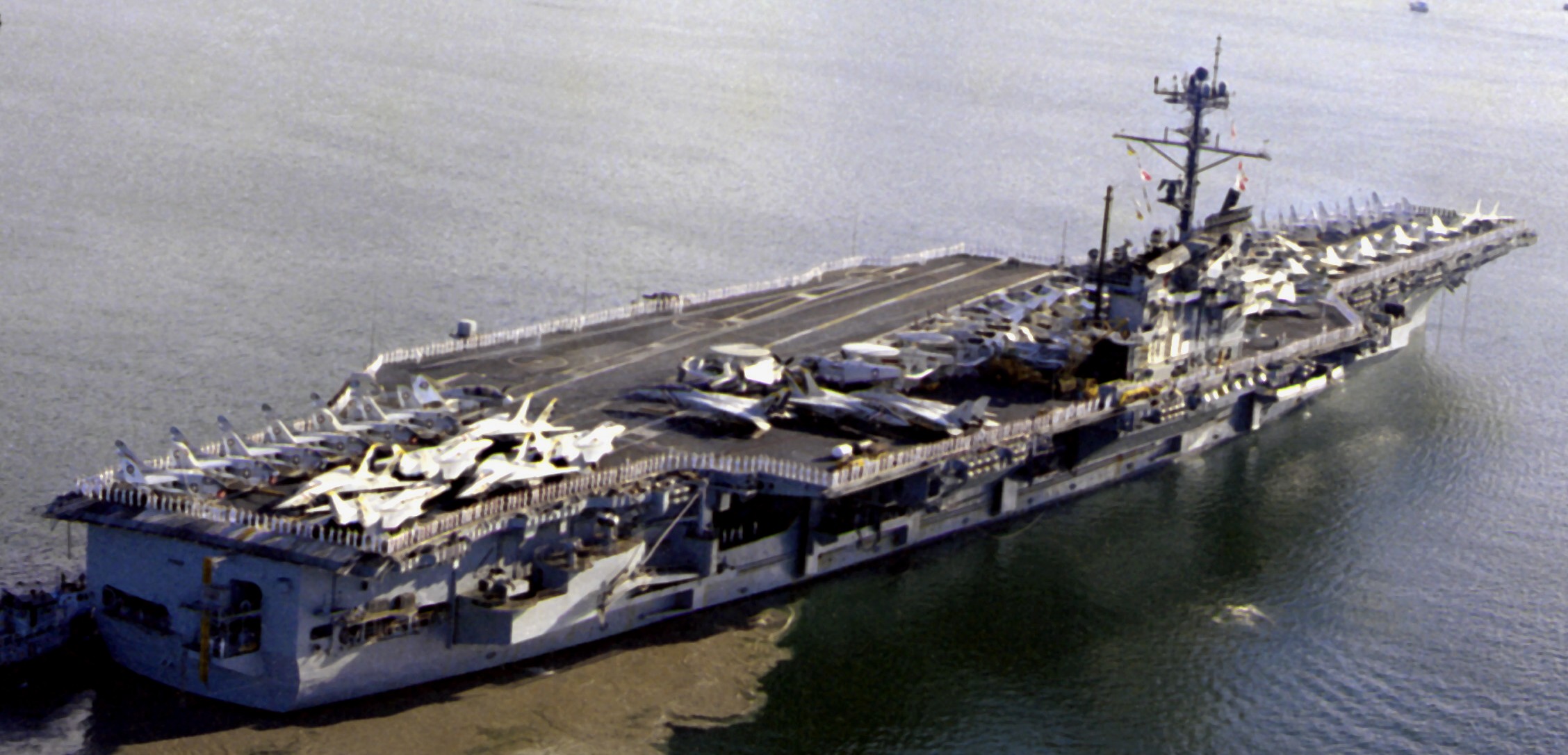 with CVW-2 embarked - Pearl Harbor, Hawaii - February 1982 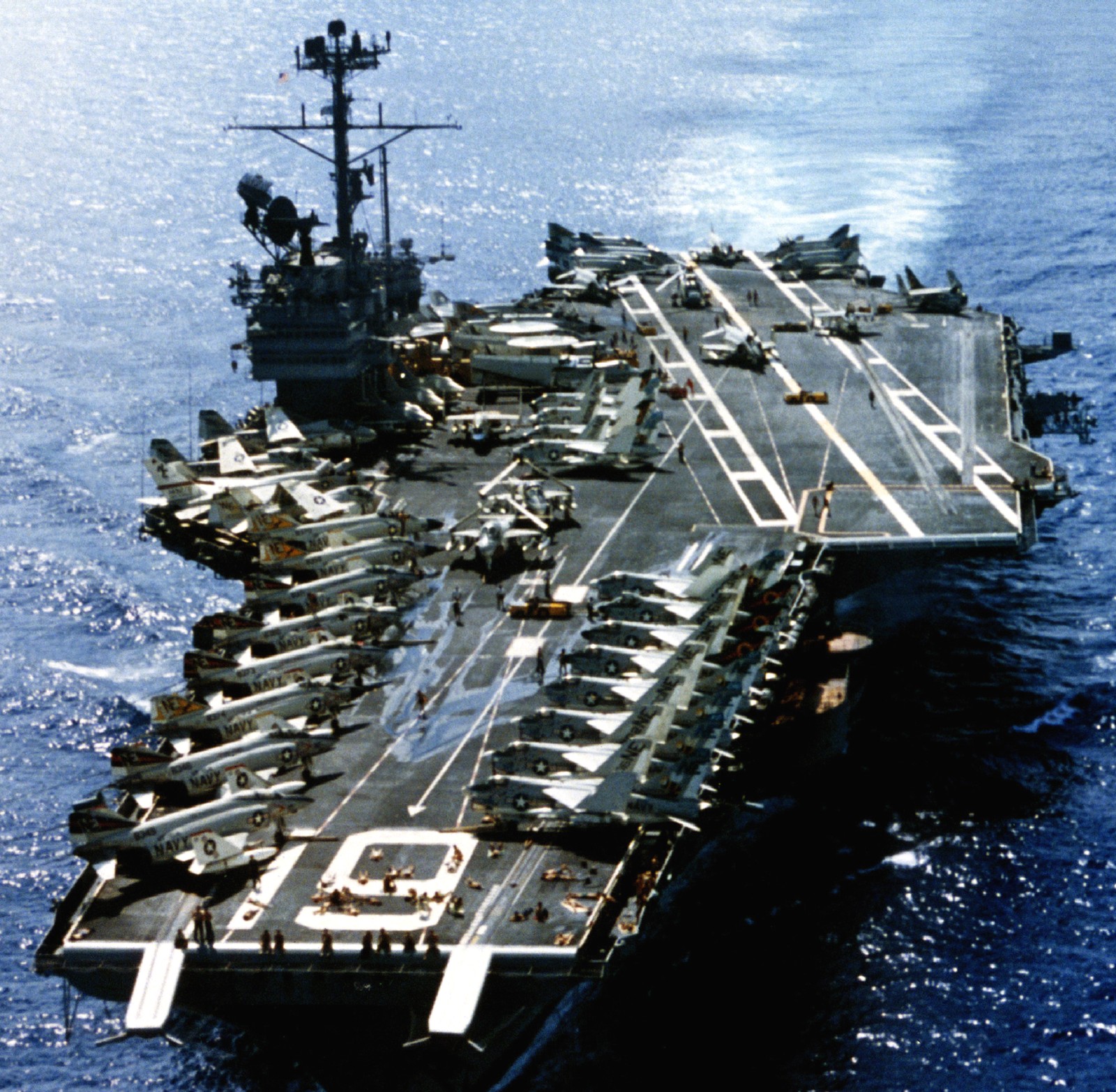 with CVW-2 embarked - November 1981 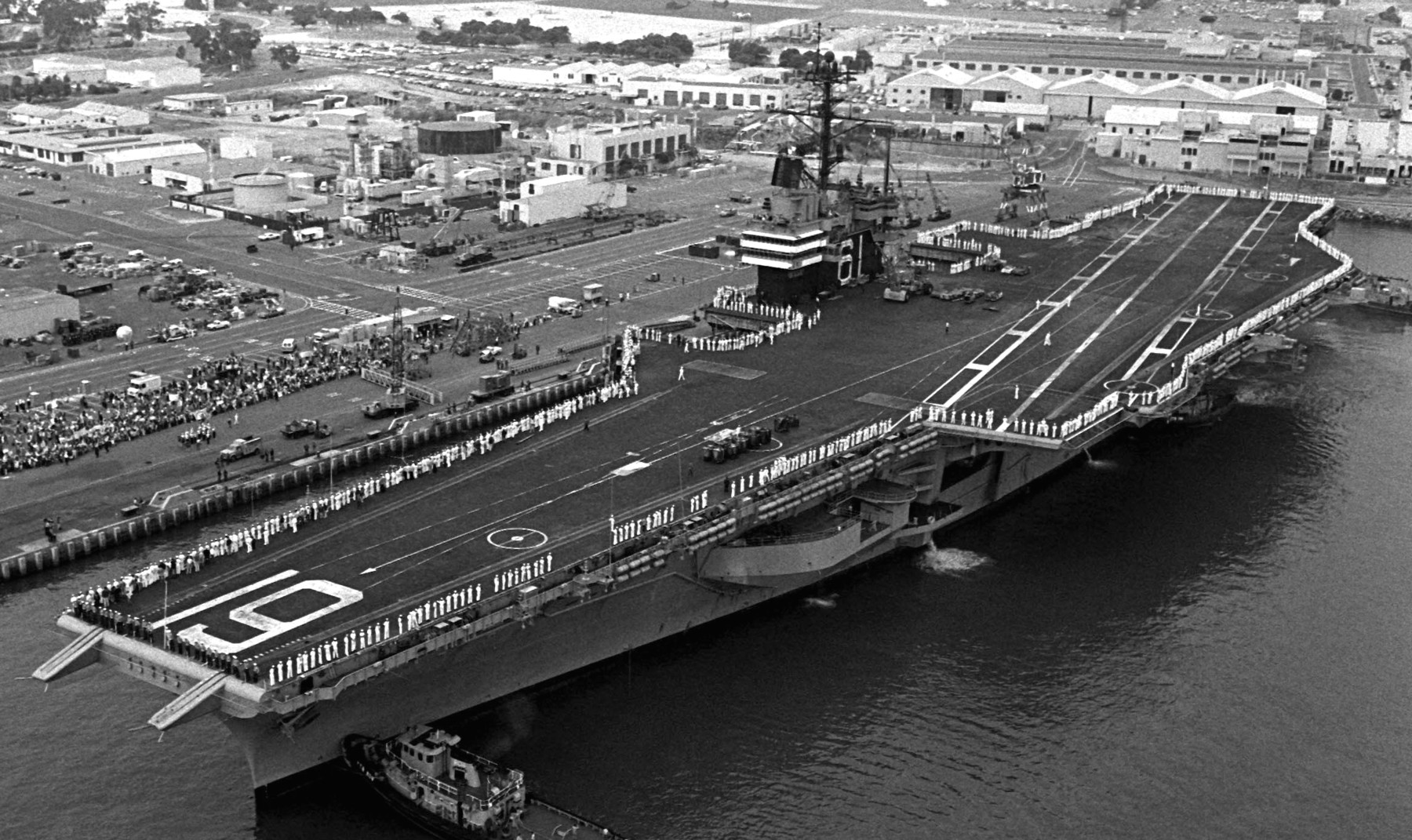 returning to San Diego, California - May 1981 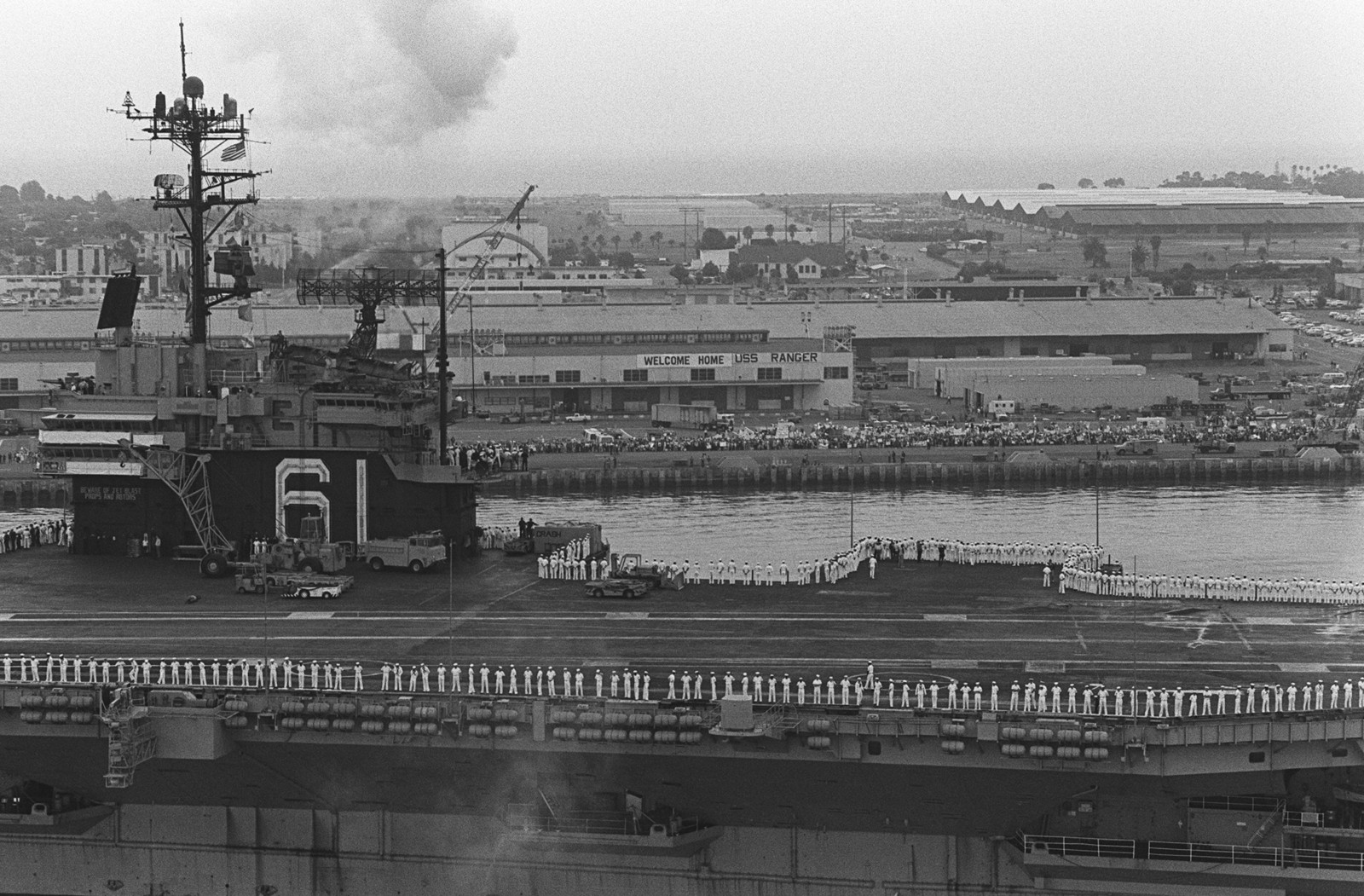 returning to San Diego, California - May 1981 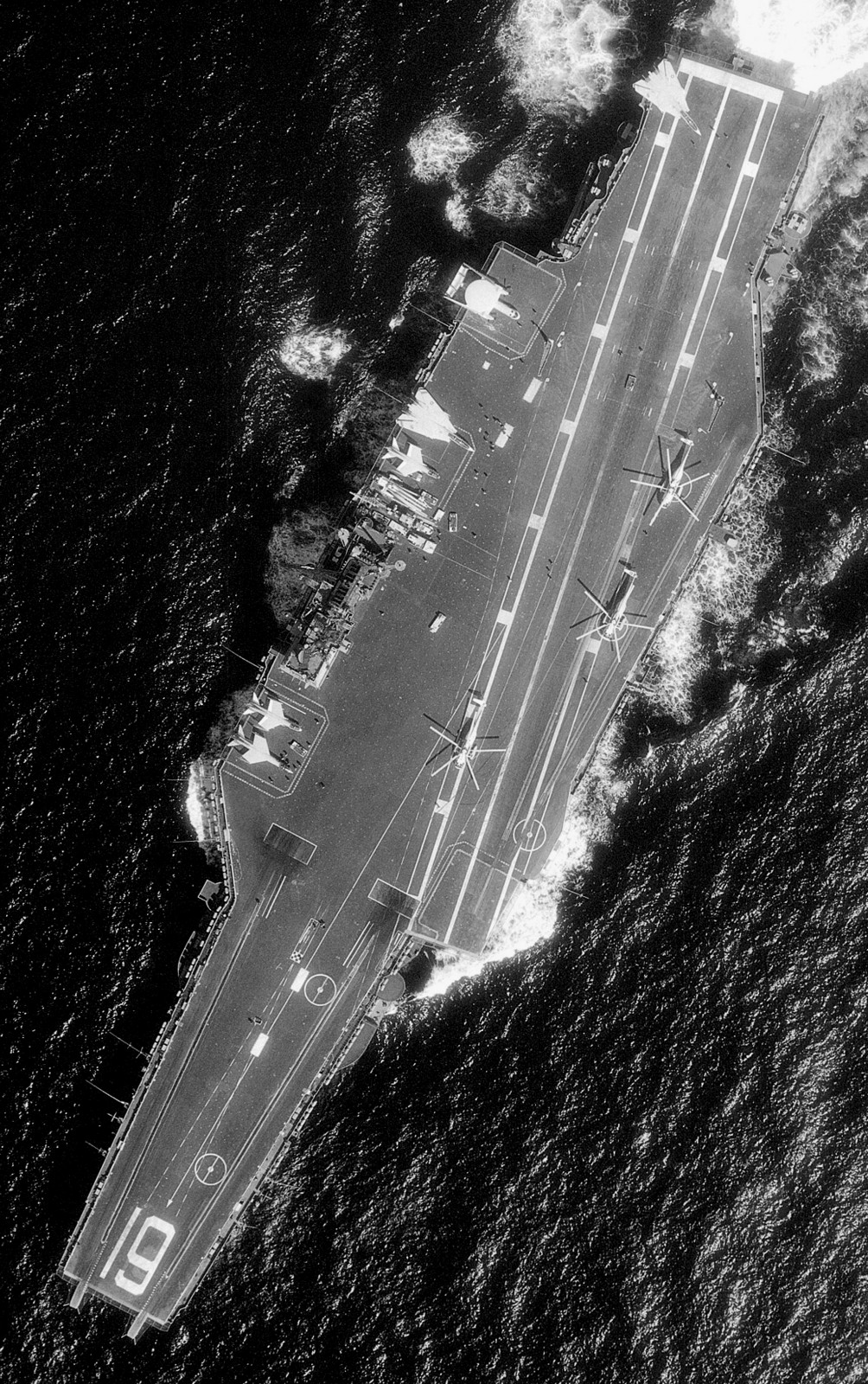 1981 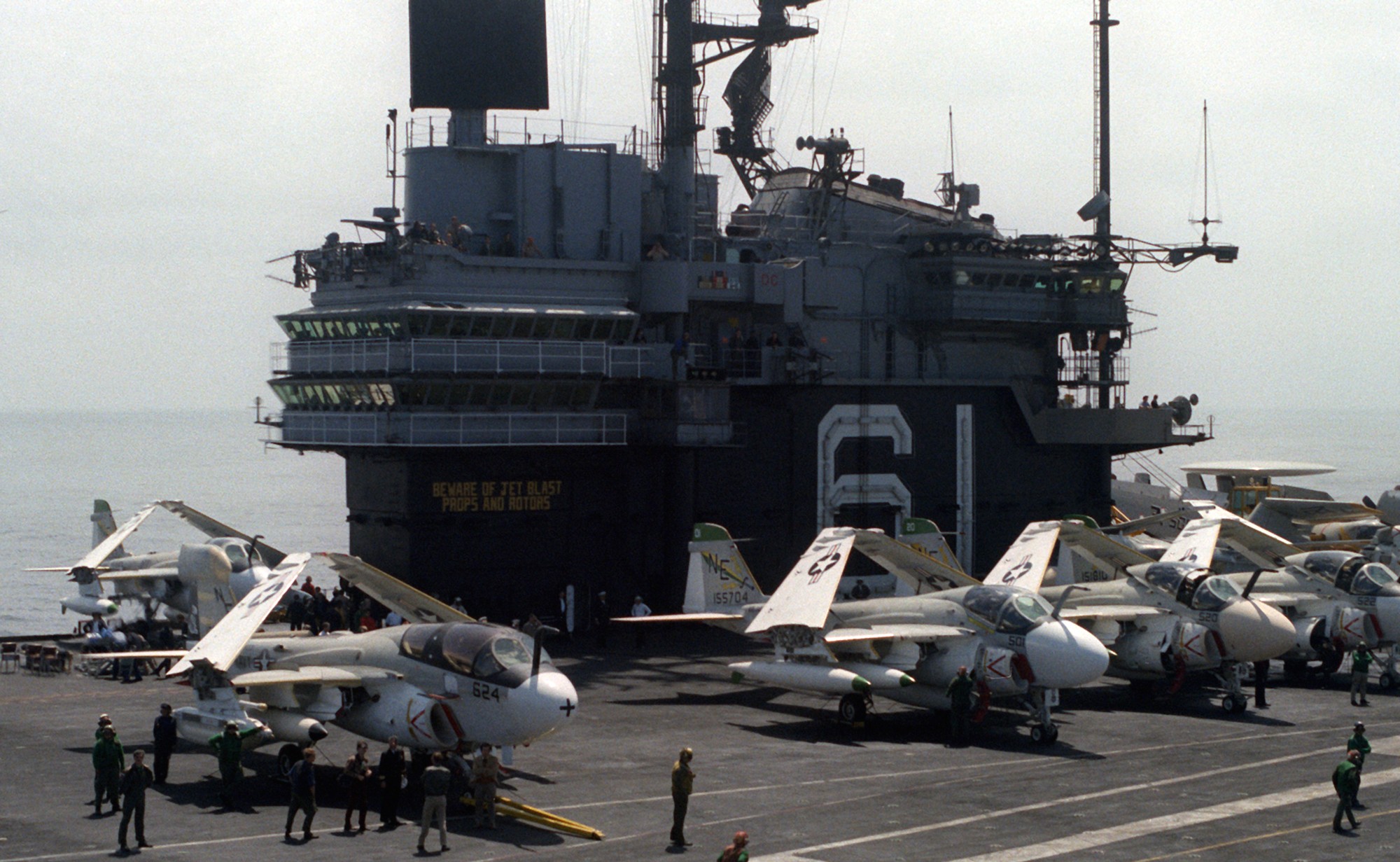 with CVW-2 embarked - June 1980 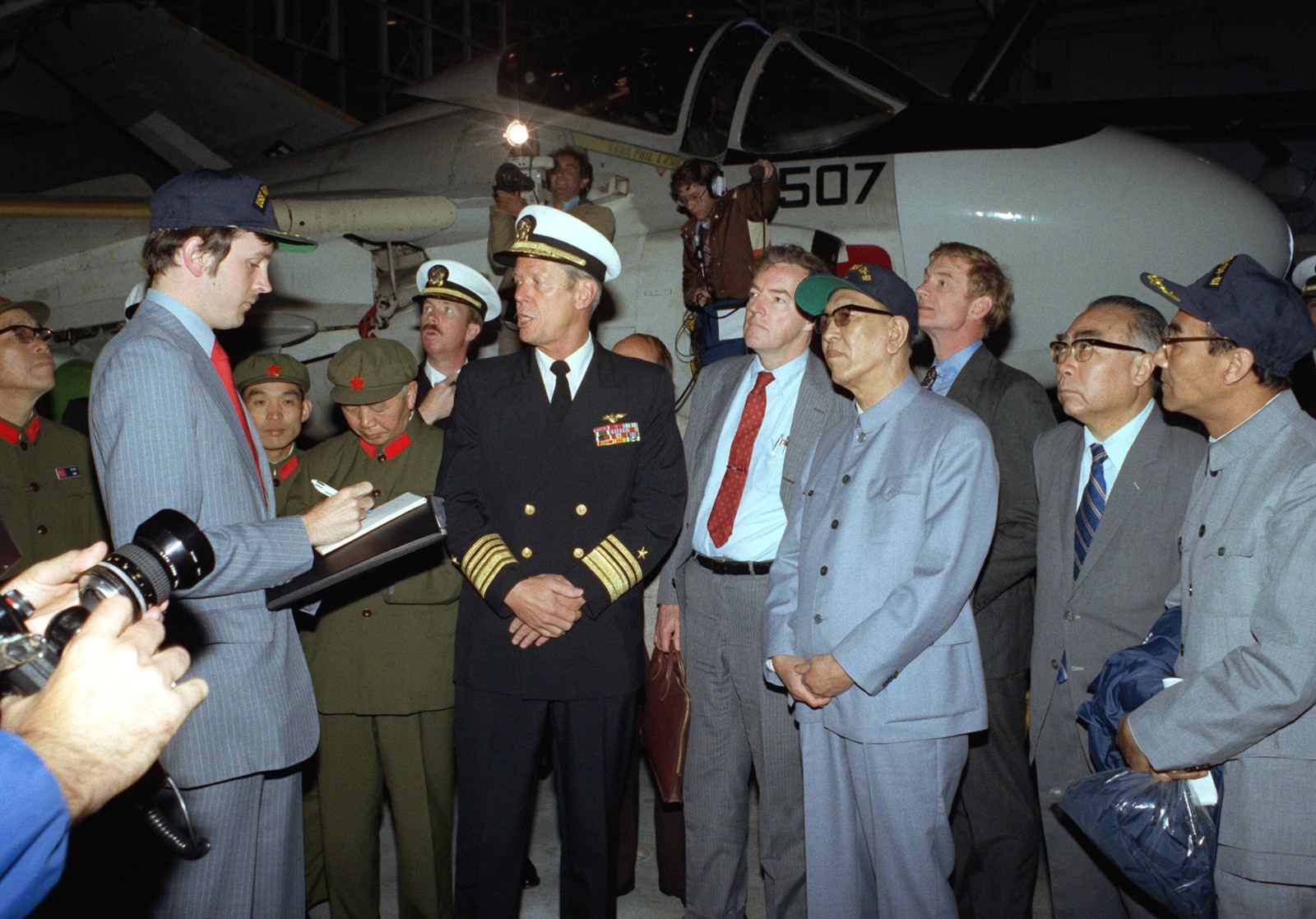 Vice Premier of the People's Republic of China Geng Biao visits USS Ranger - June 1980 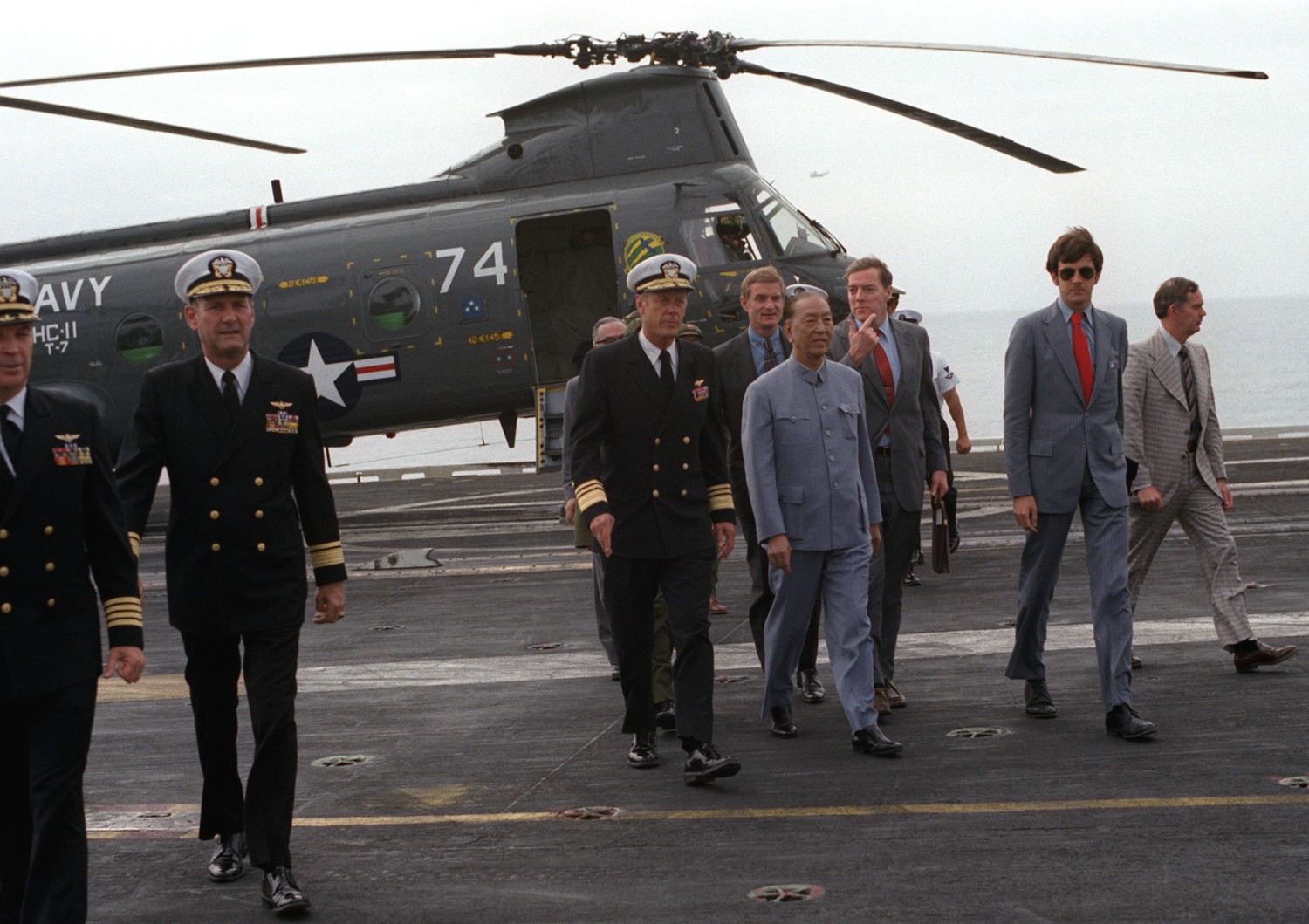 Vice Premier of the People's Republic of China Geng Biao visits USS Ranger - June 1980 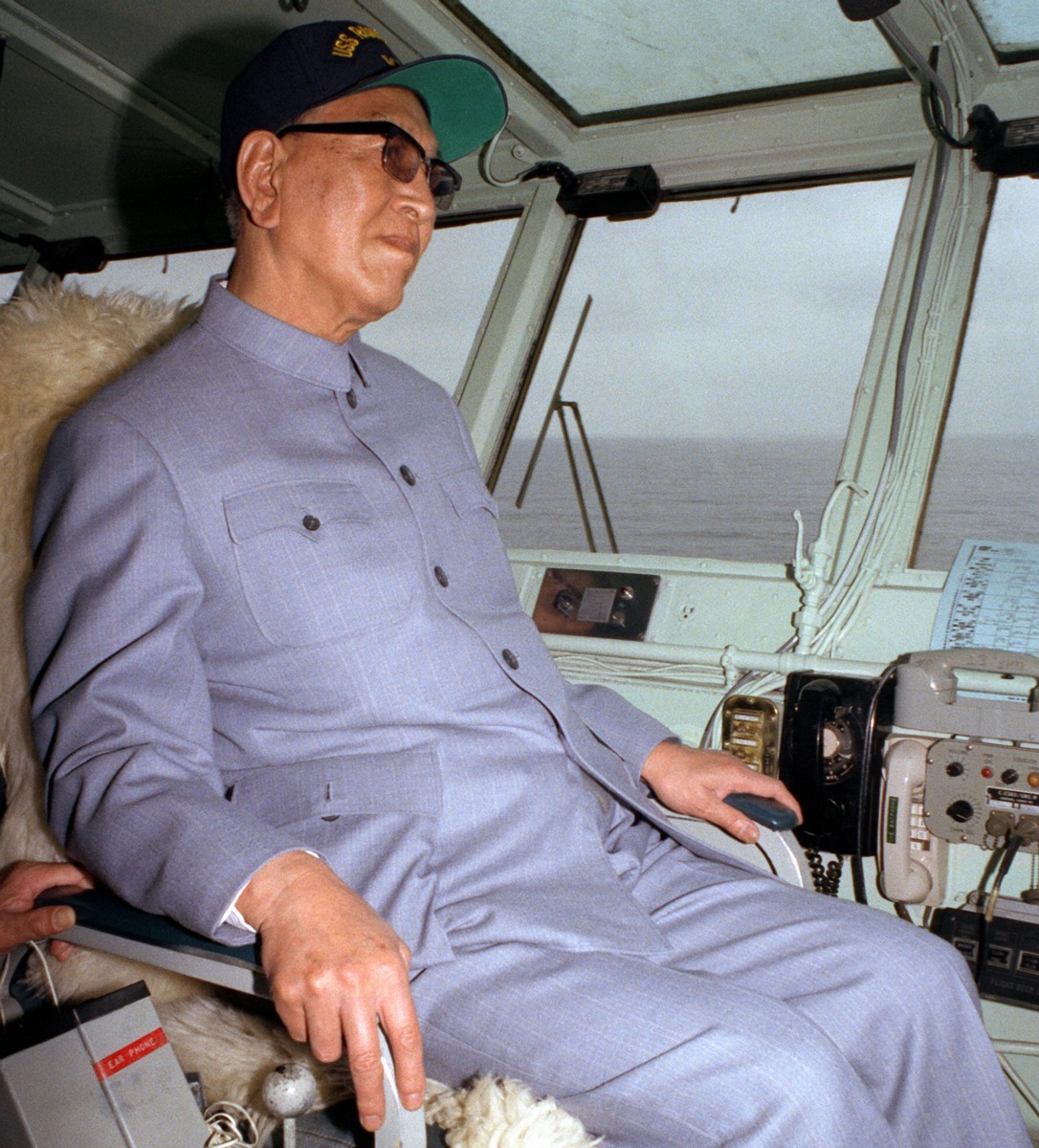 Vice Premier of the People's Republic of China Geng Biao visits USS Ranger - June 1980  with CVW-2 embarked - departing San Diego, California - January 1976 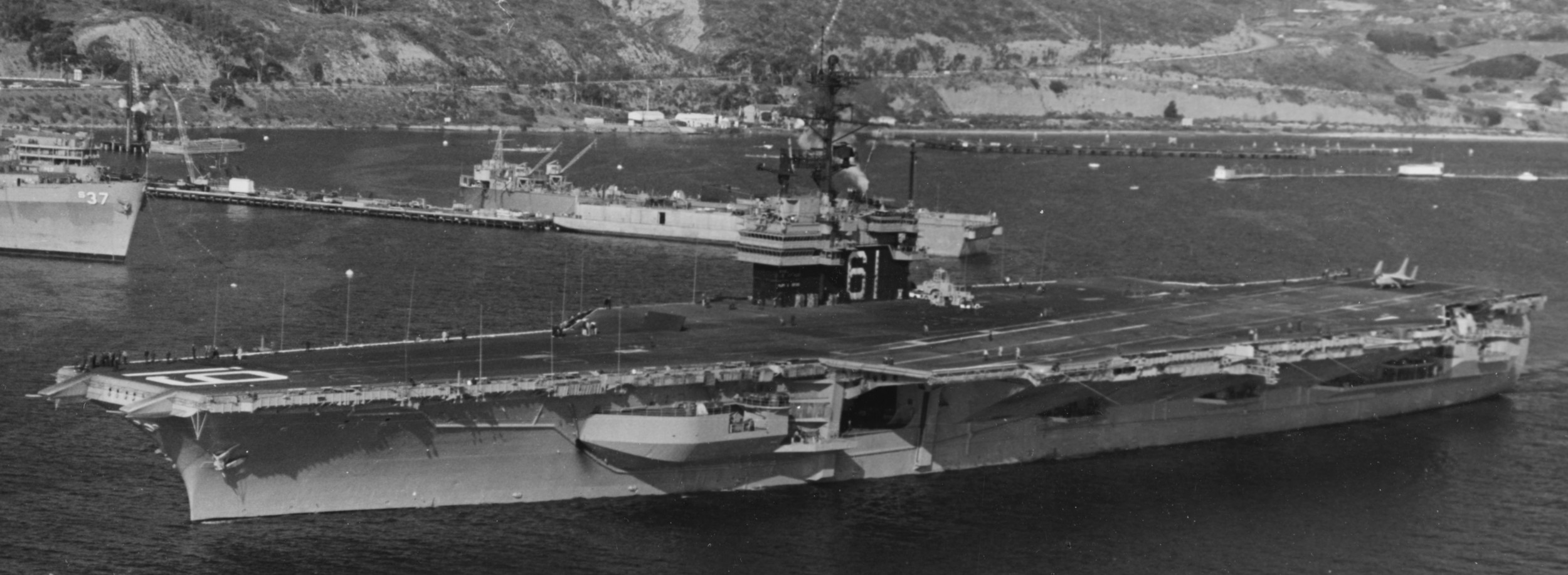 passing Point Loma, San Diego, California - November 1975  with DD 945 USS Hull alongside - June 1975 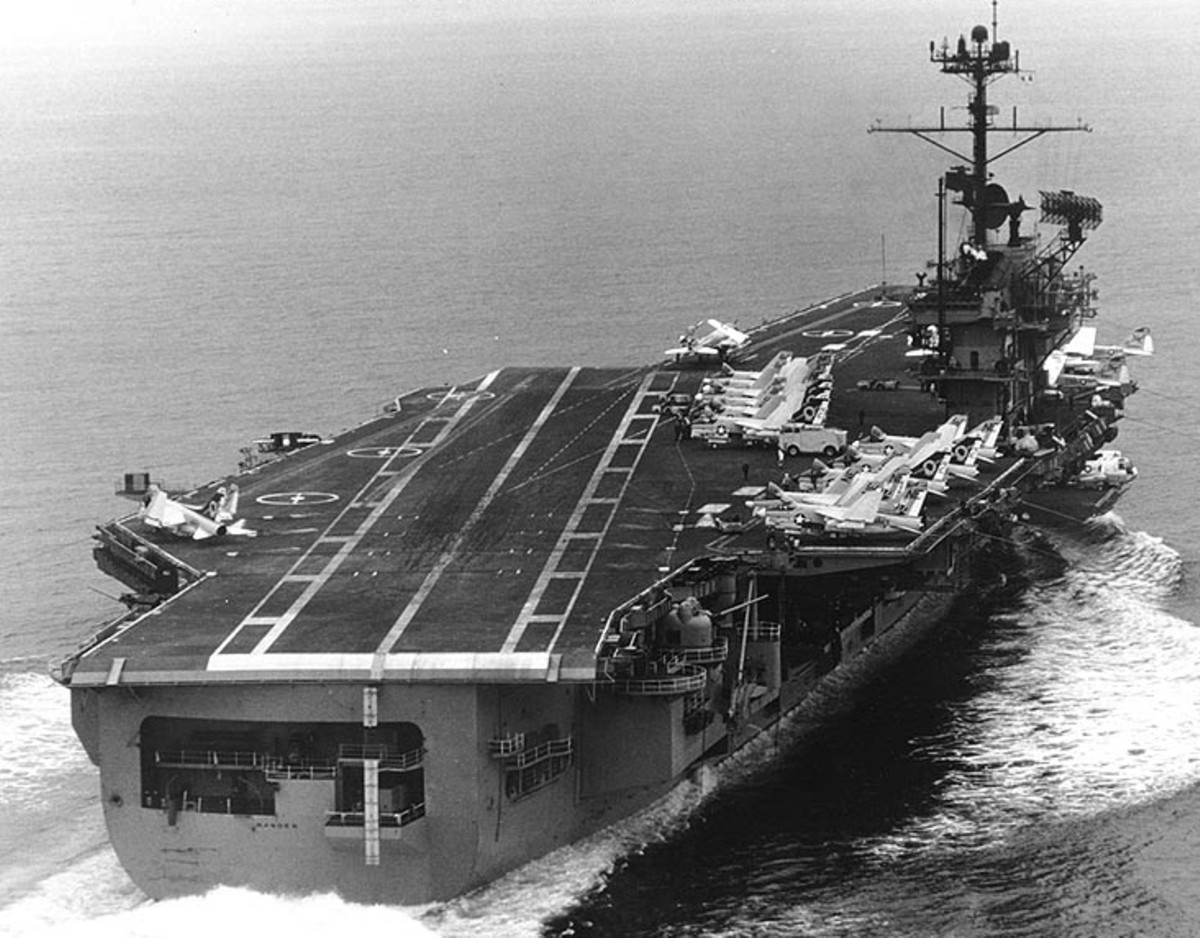 with CVW-2 embarked - Pacific Ocean - May 1975 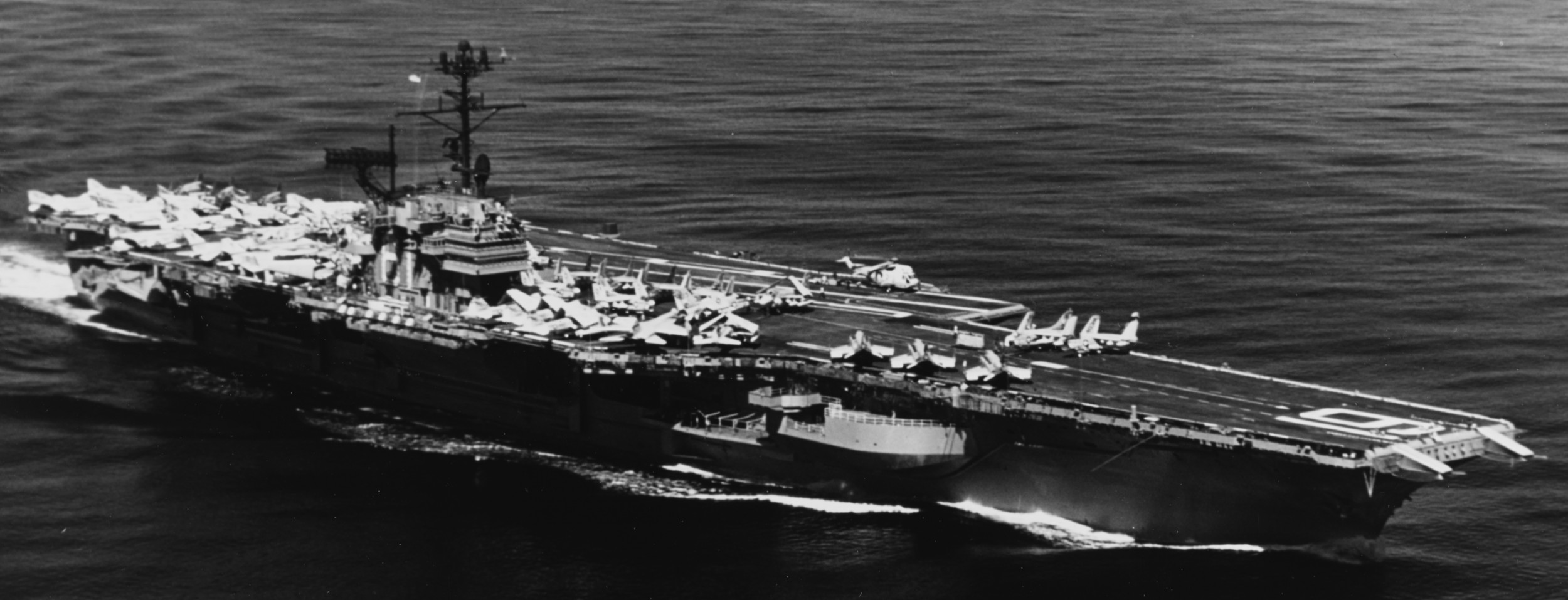 with CVW-2 embarked - off Hawaii - October 1974 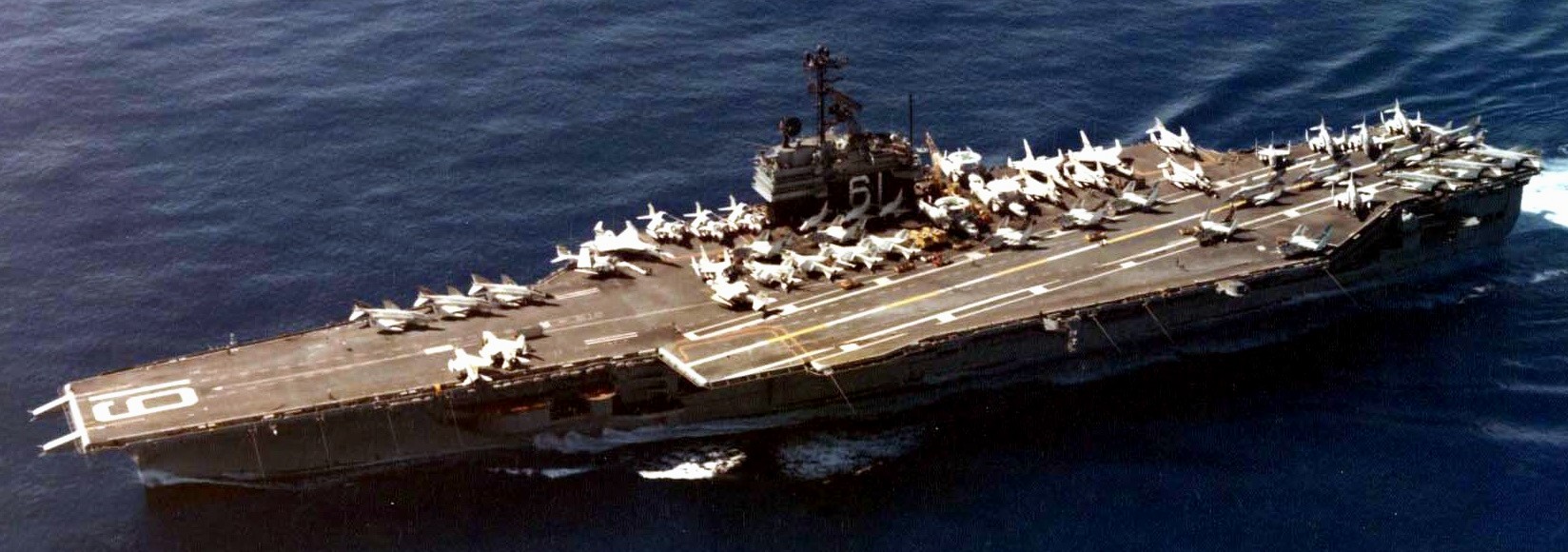 with CVW-2 embarked - Pacific Ocean - October 1974 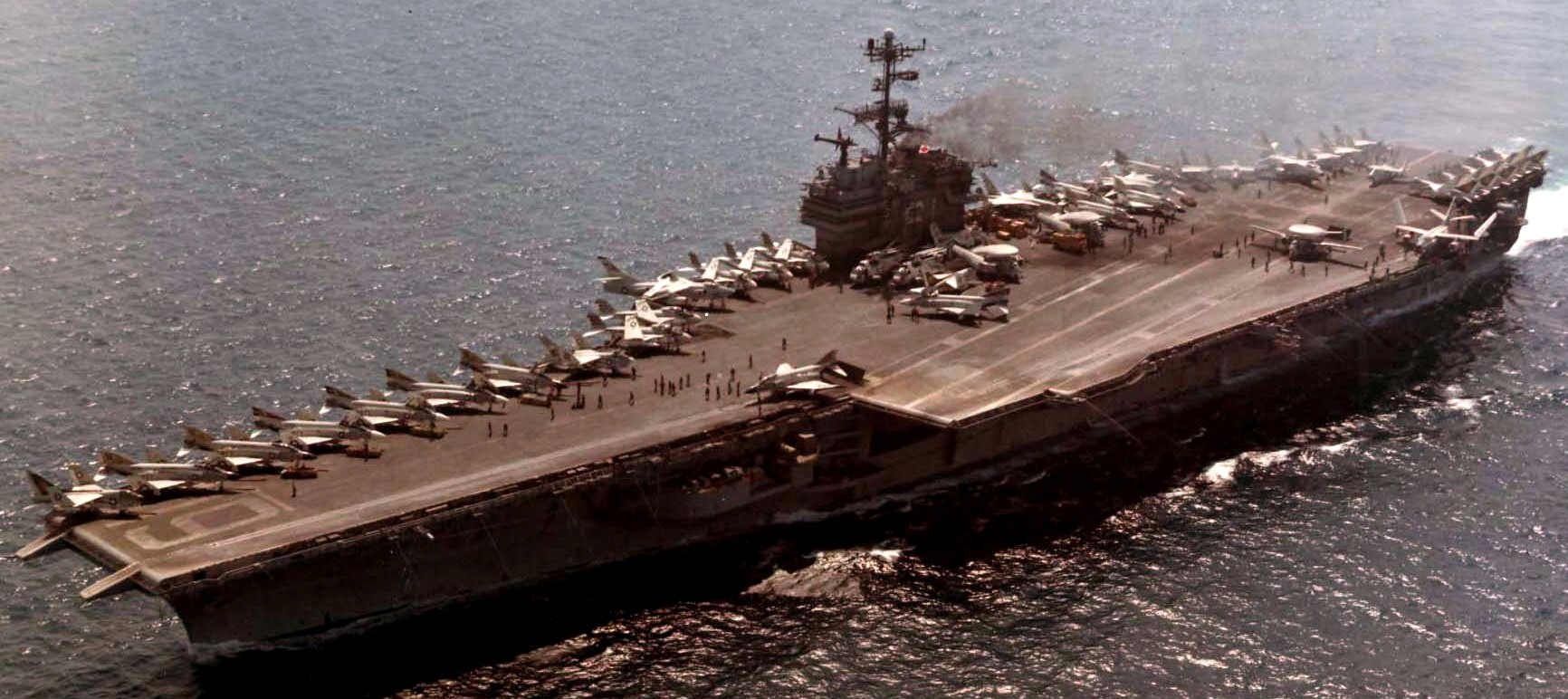 with CVW-2 embarked - early 1970's 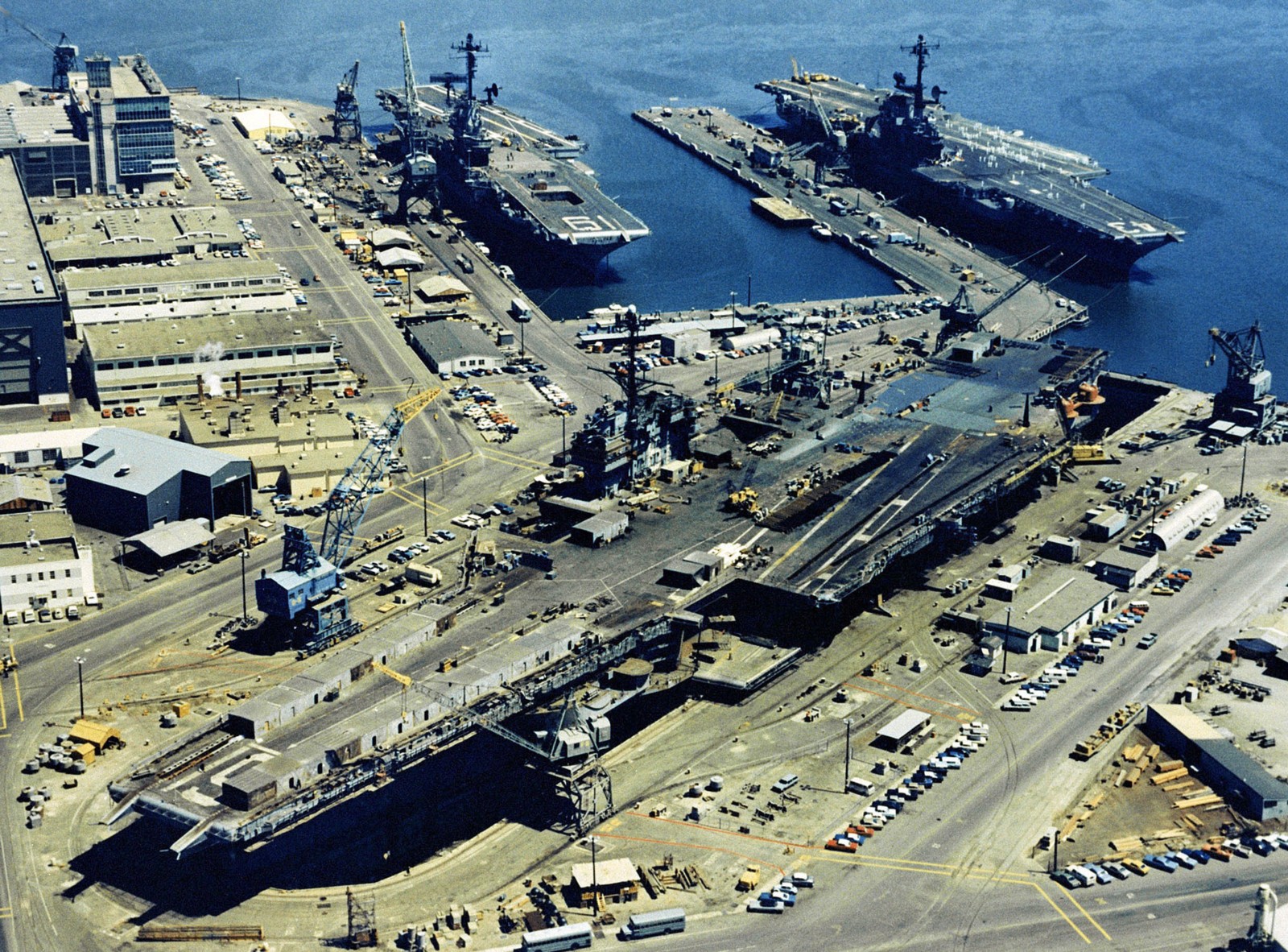 in dry-dock at Hunters Point Naval Shipyard, San Francisco - August 1971 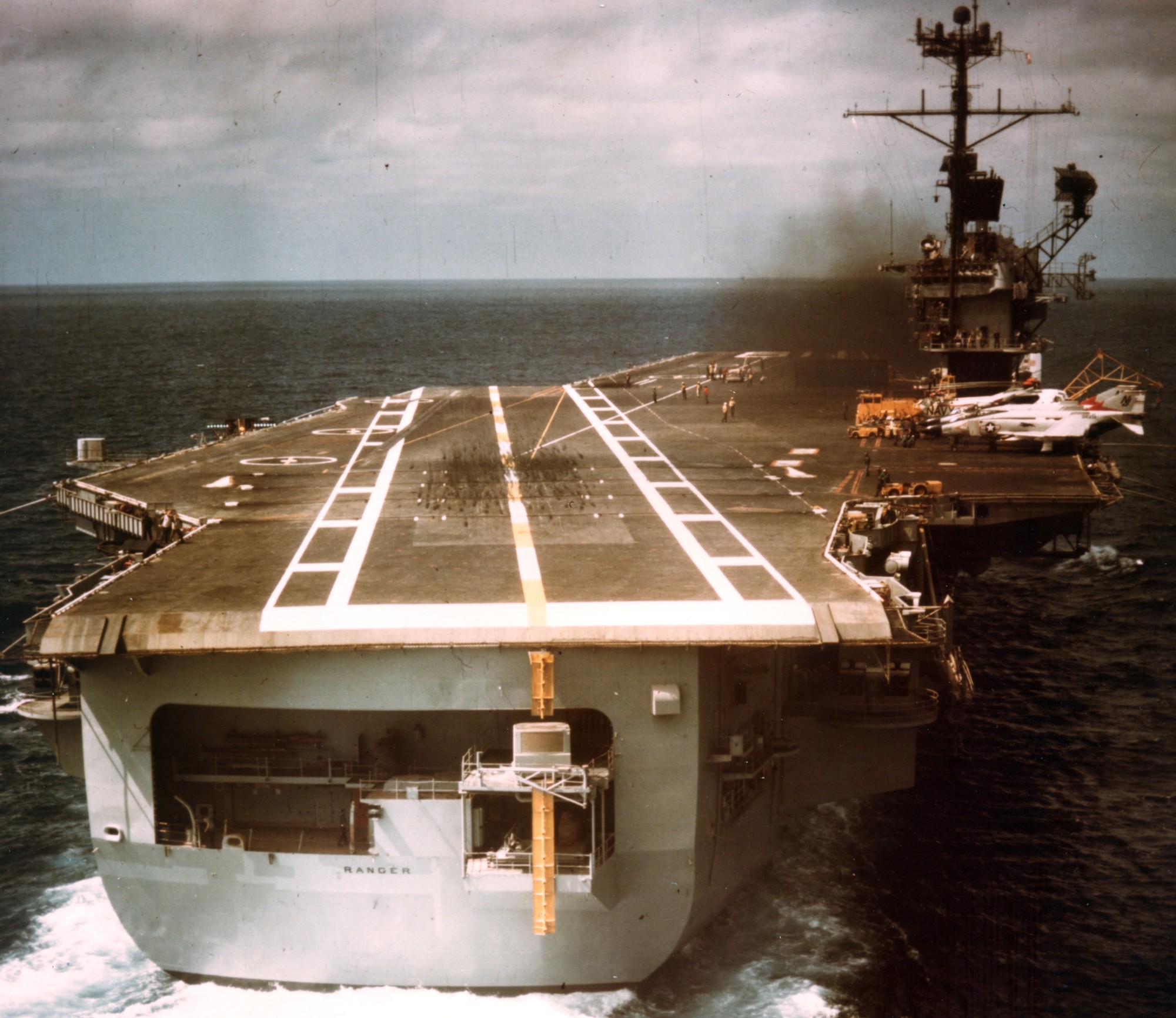 with aircraft from RCVW-12 embarked - late 1960's 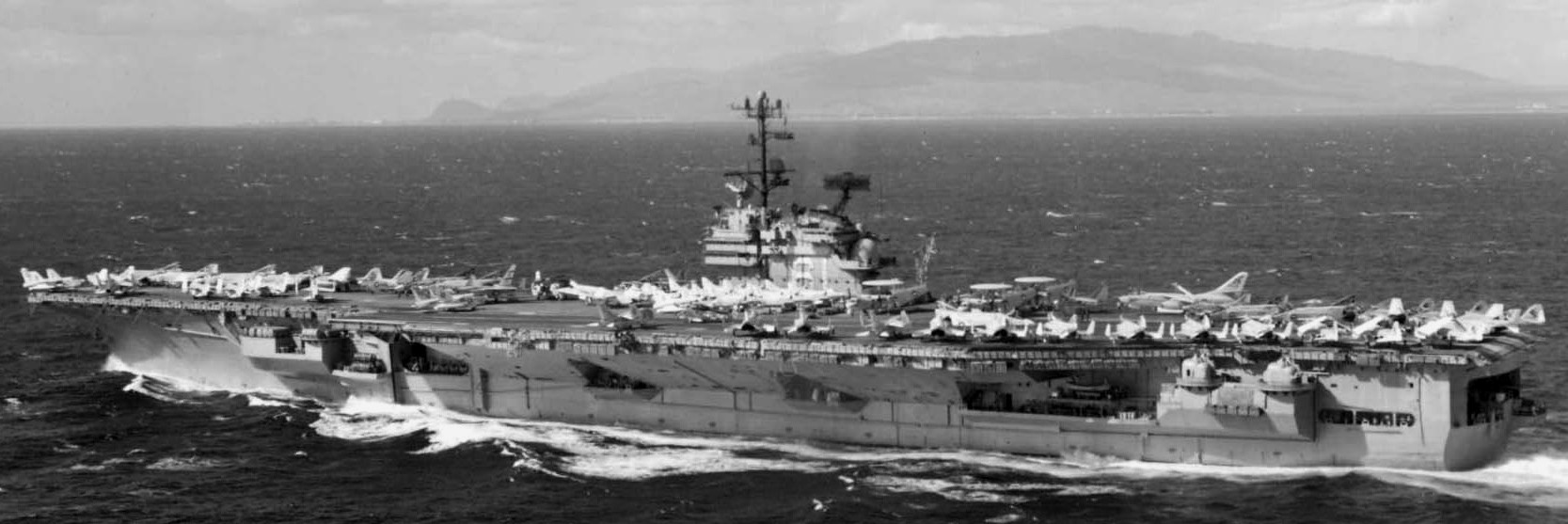 with CVW-2 embarked - off Hawaii - November 1967 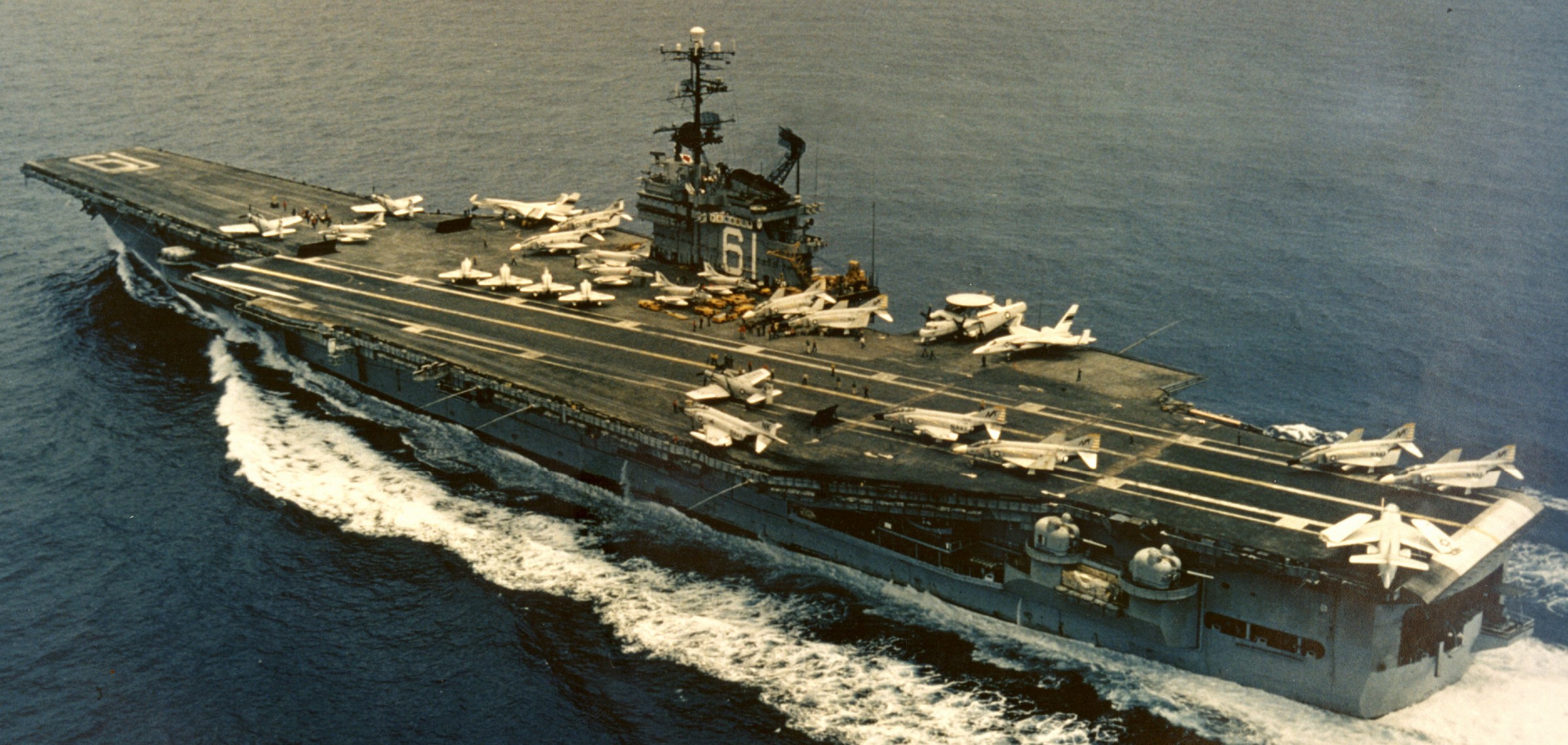 with CVW-14 embarked - Vietnam War - 1966 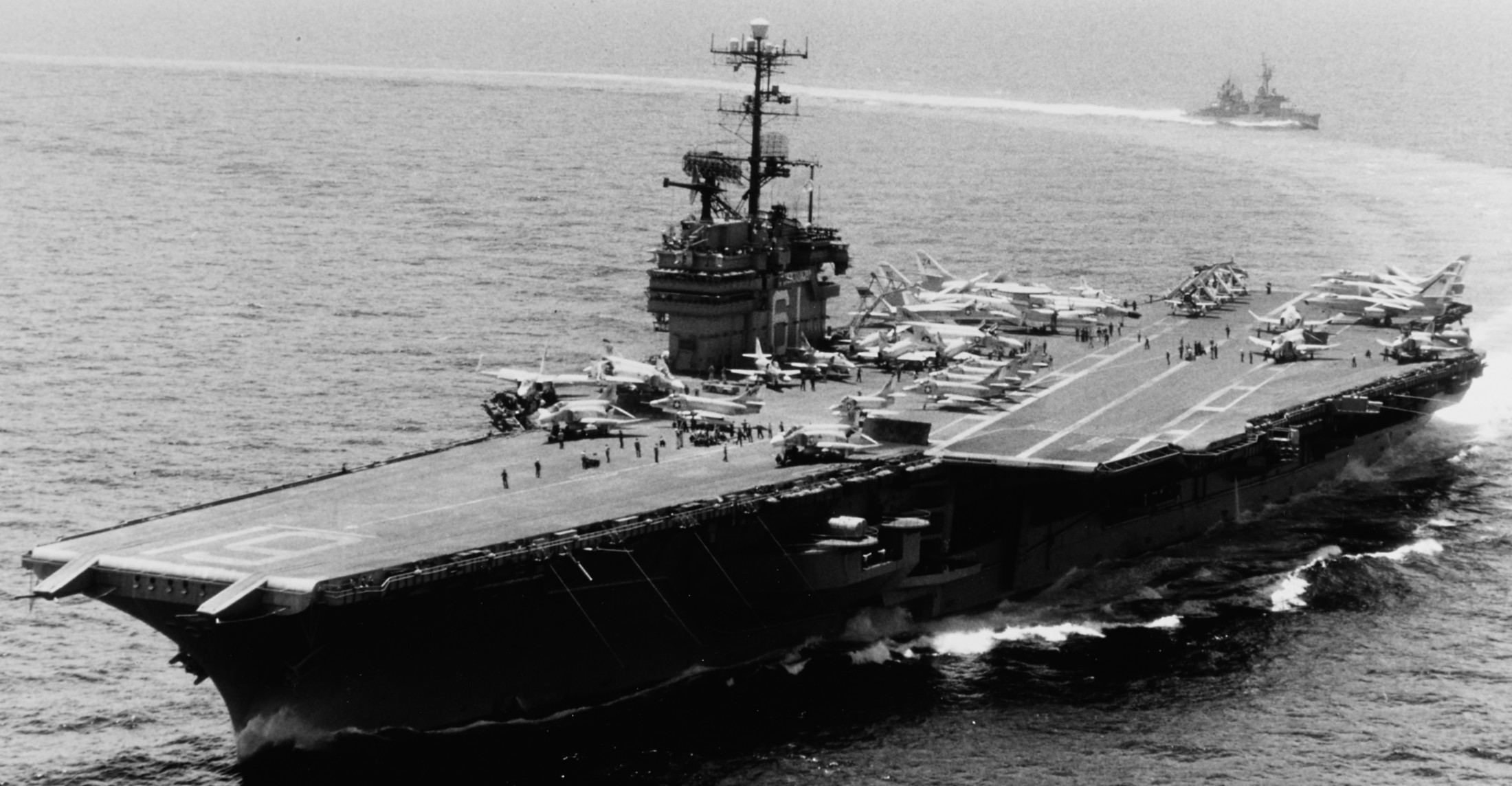 with CVW-14 embarked - Vietnam War - 1966 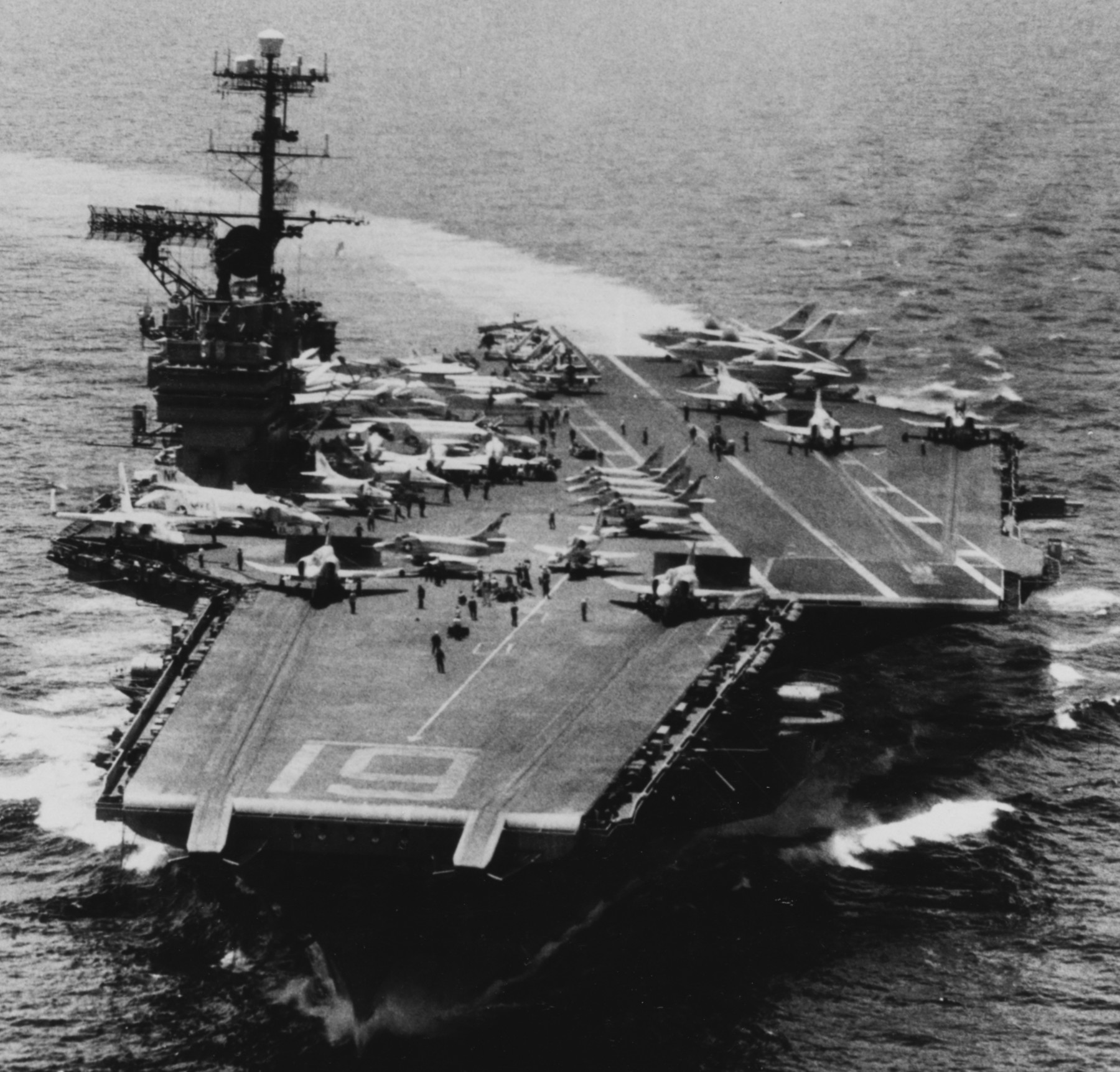 with CVW-14 embarked - Vietnam War - 1966 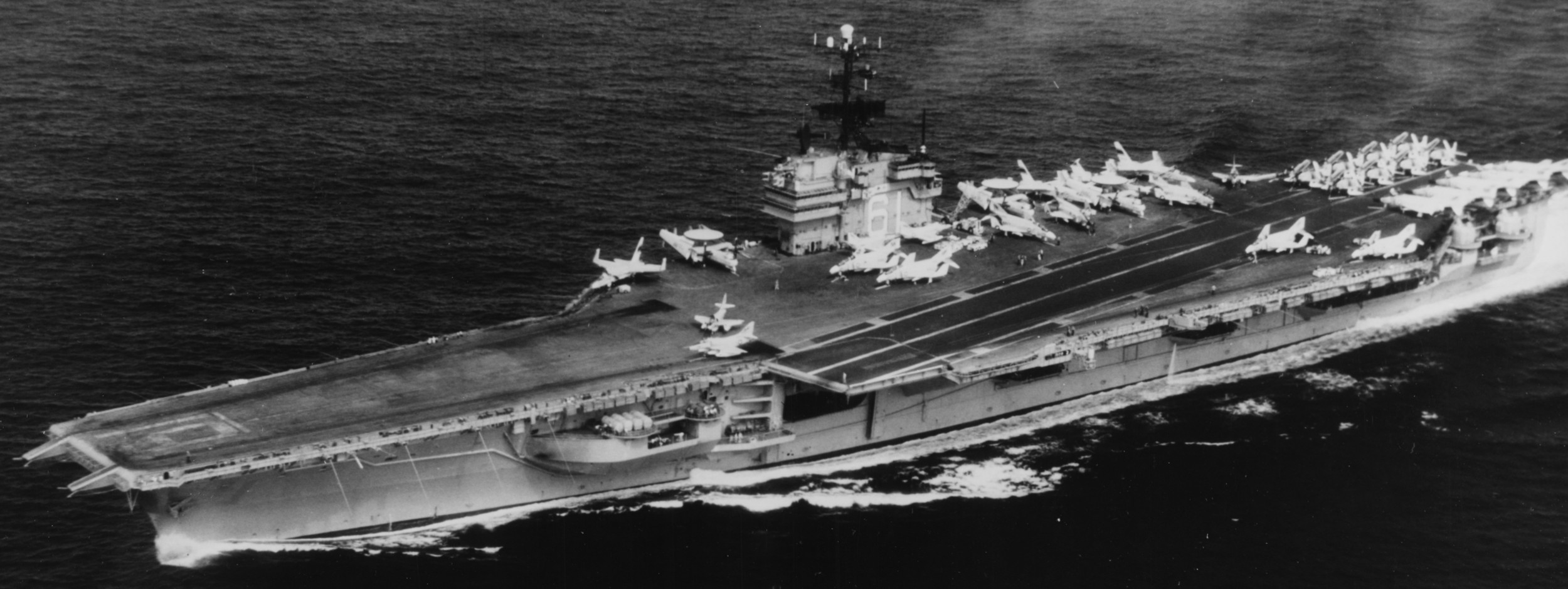 with CVW-14 embarked - Vietnam War - 1965/66 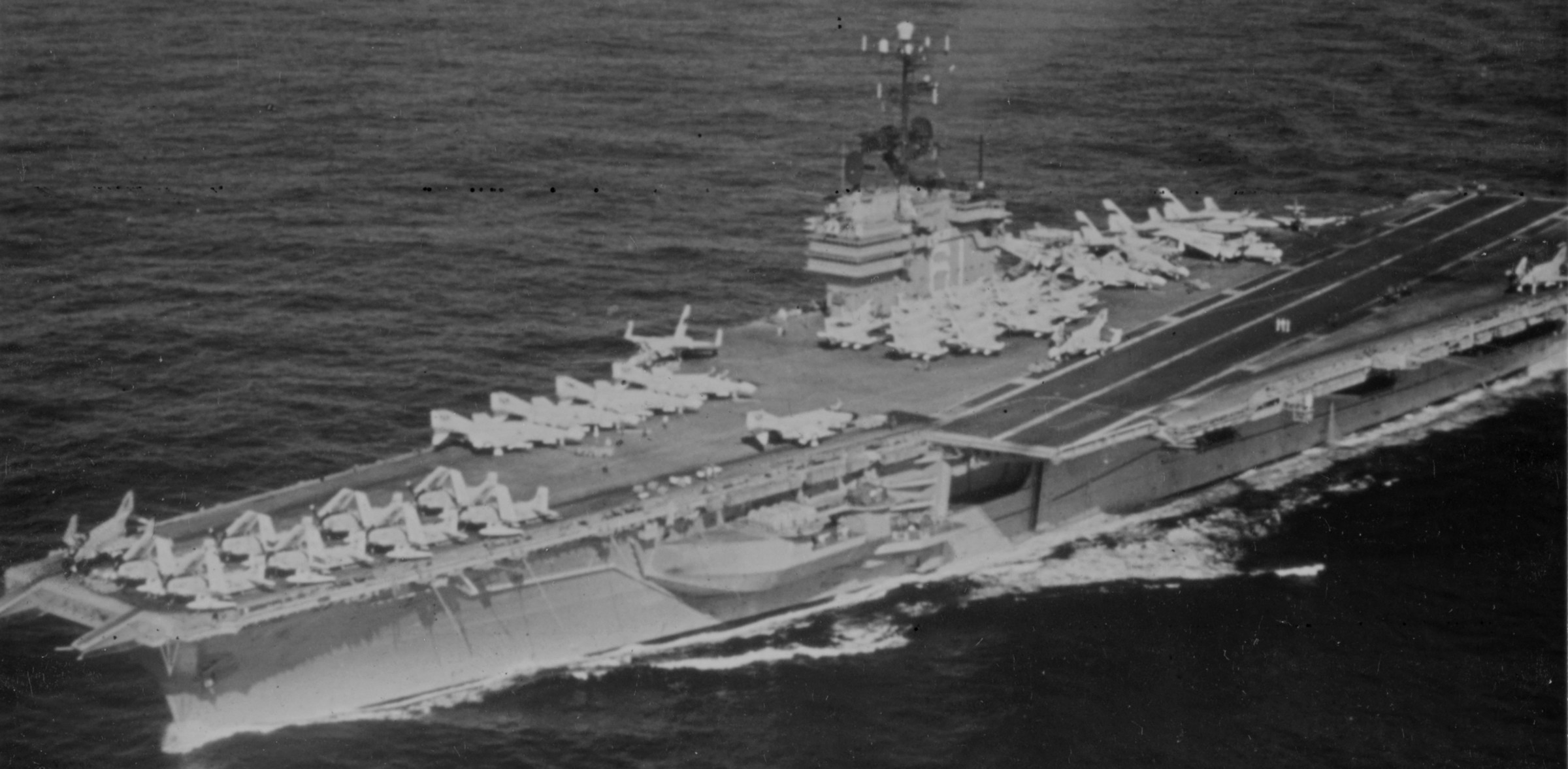 with CVW-14 embarked - Vietnam War - 1966 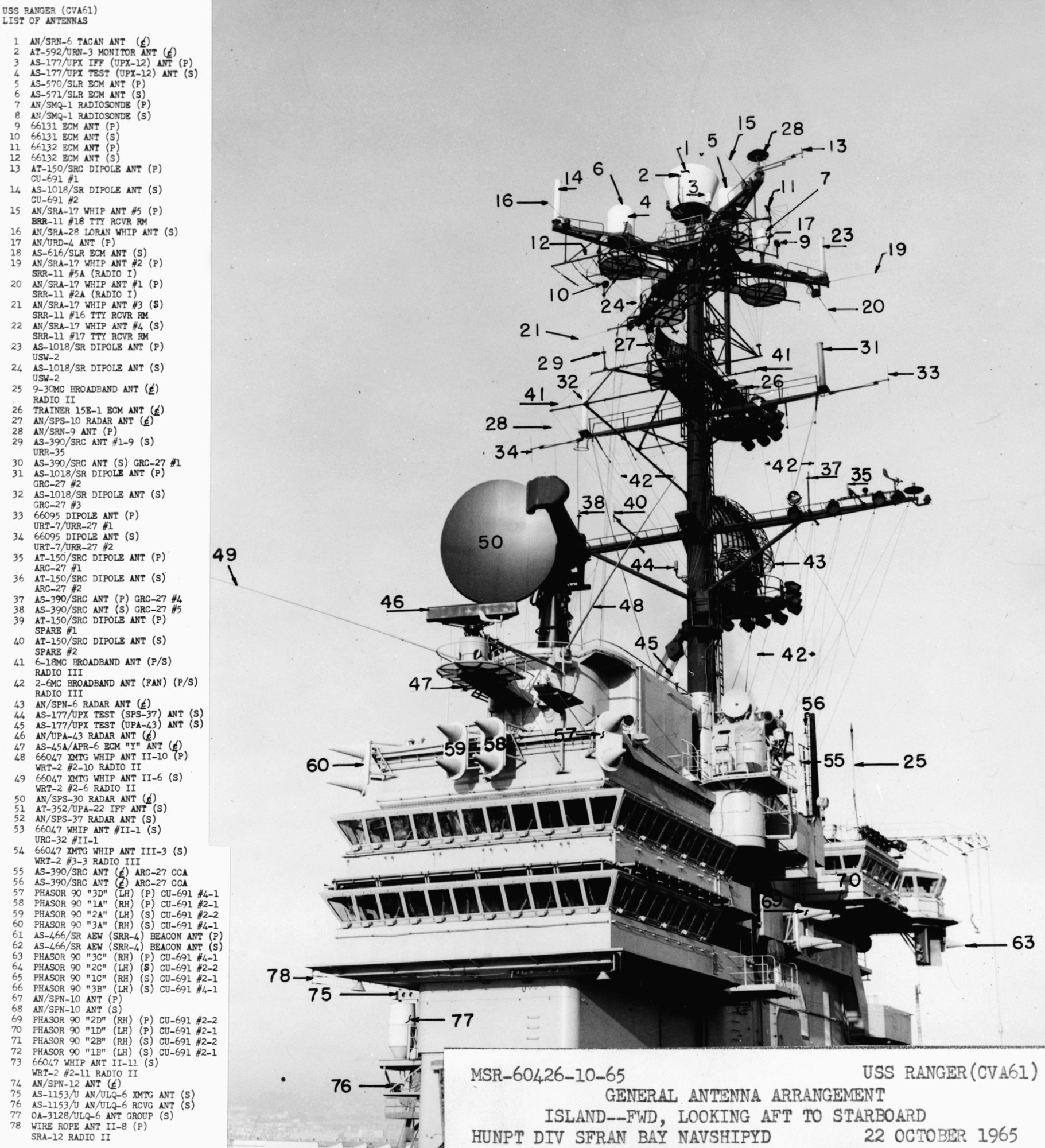 antenna arrangement - October 1965 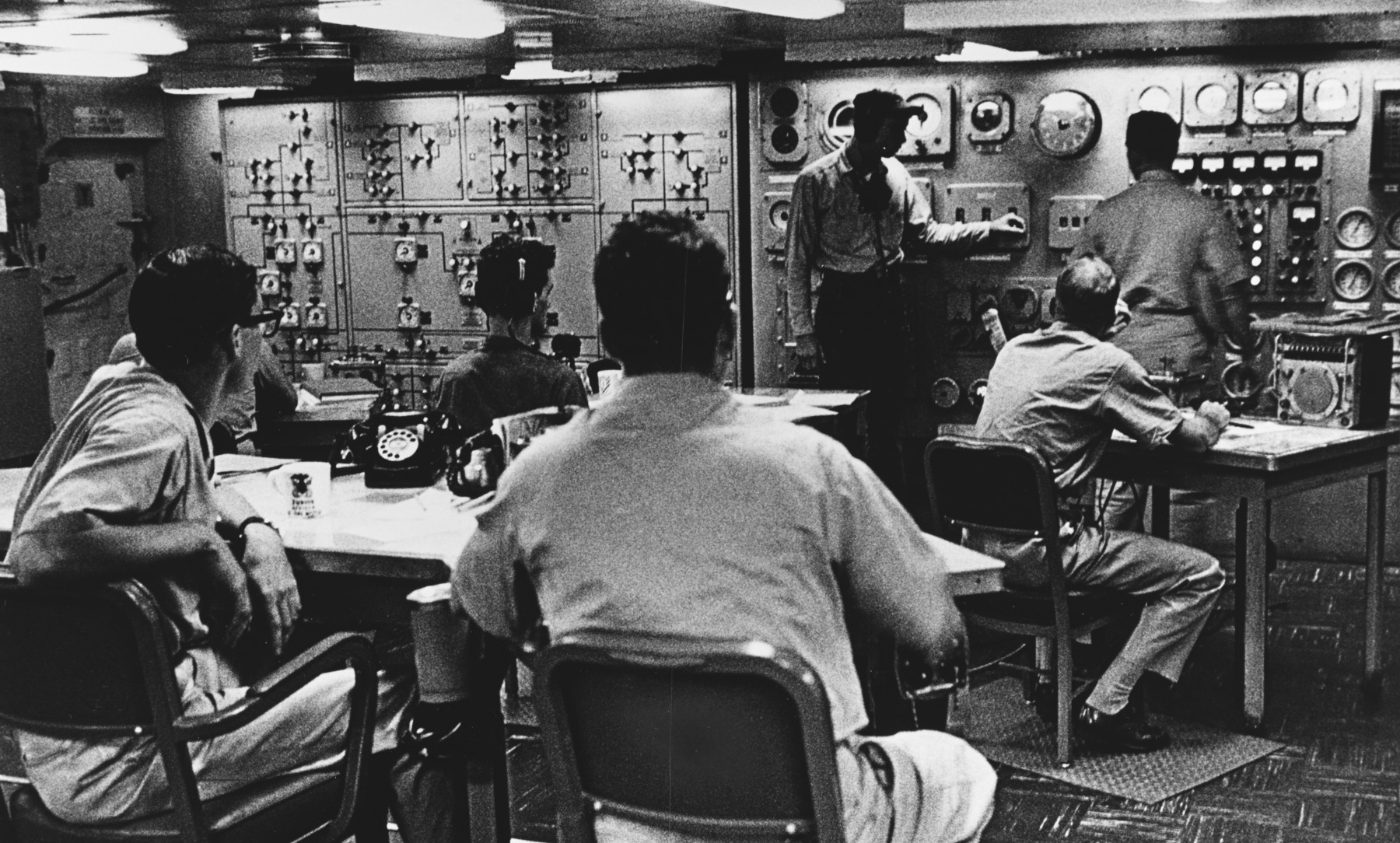 engine control room - August 1964 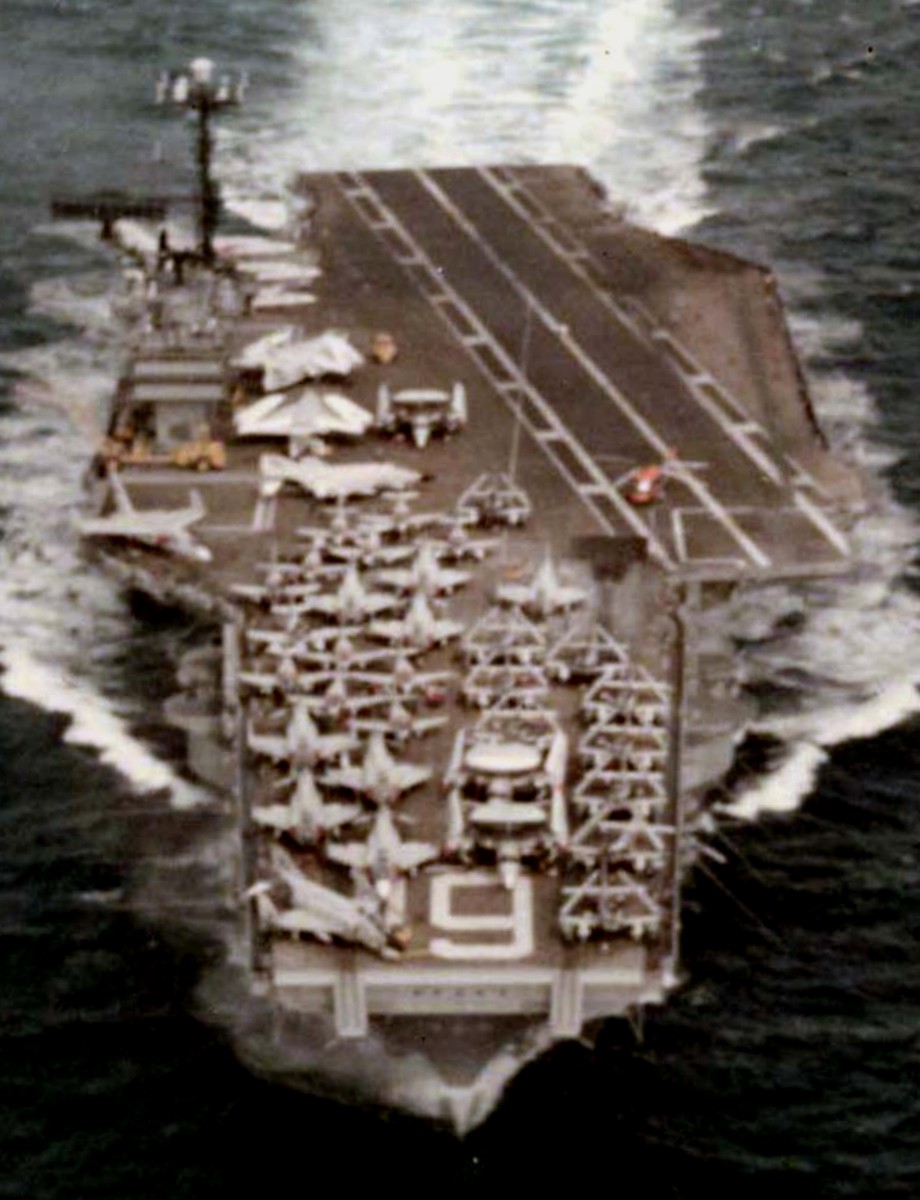 with CVW-9 embarked - July 1964 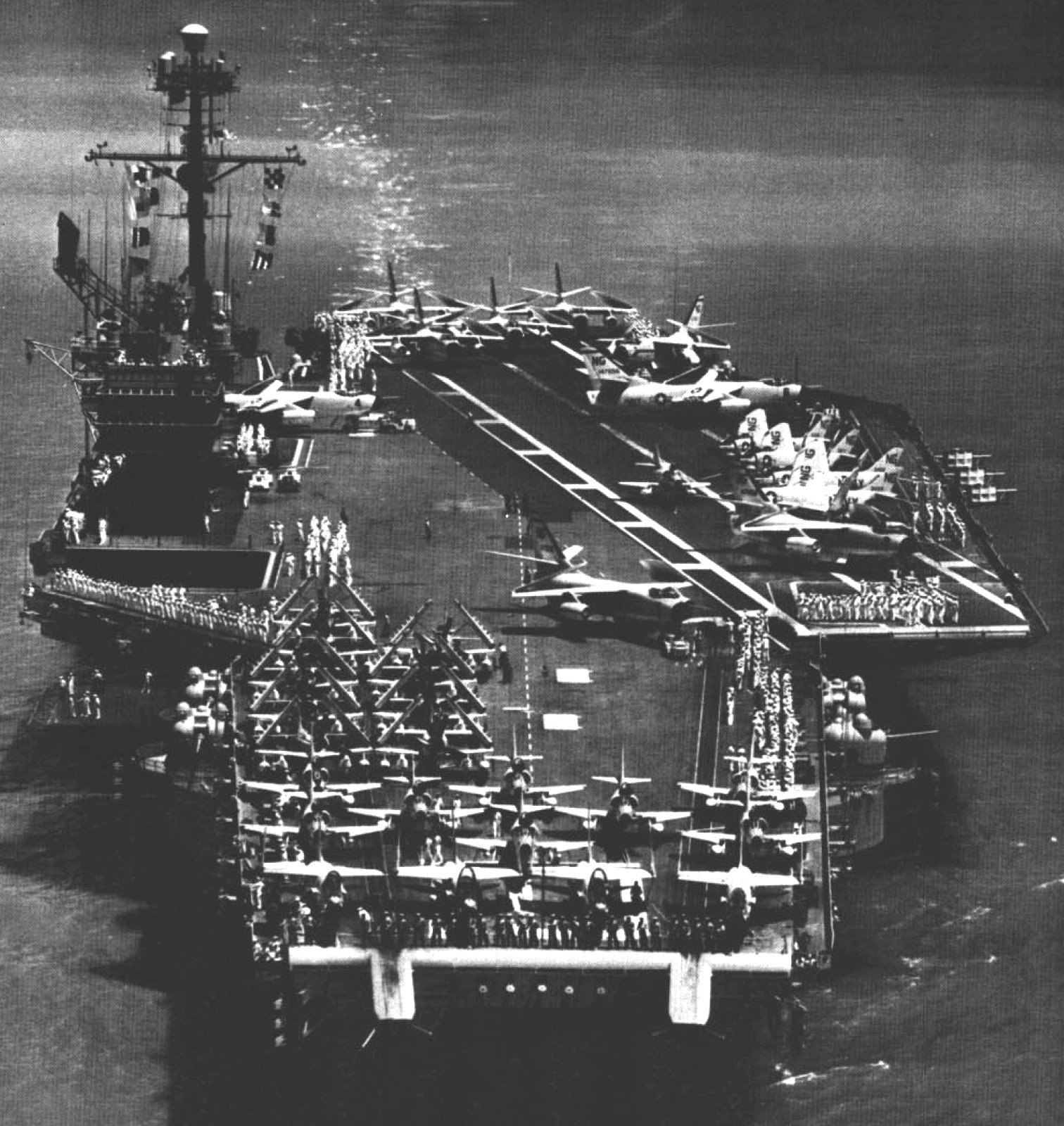 with CVG-9 embarked - circa 1962 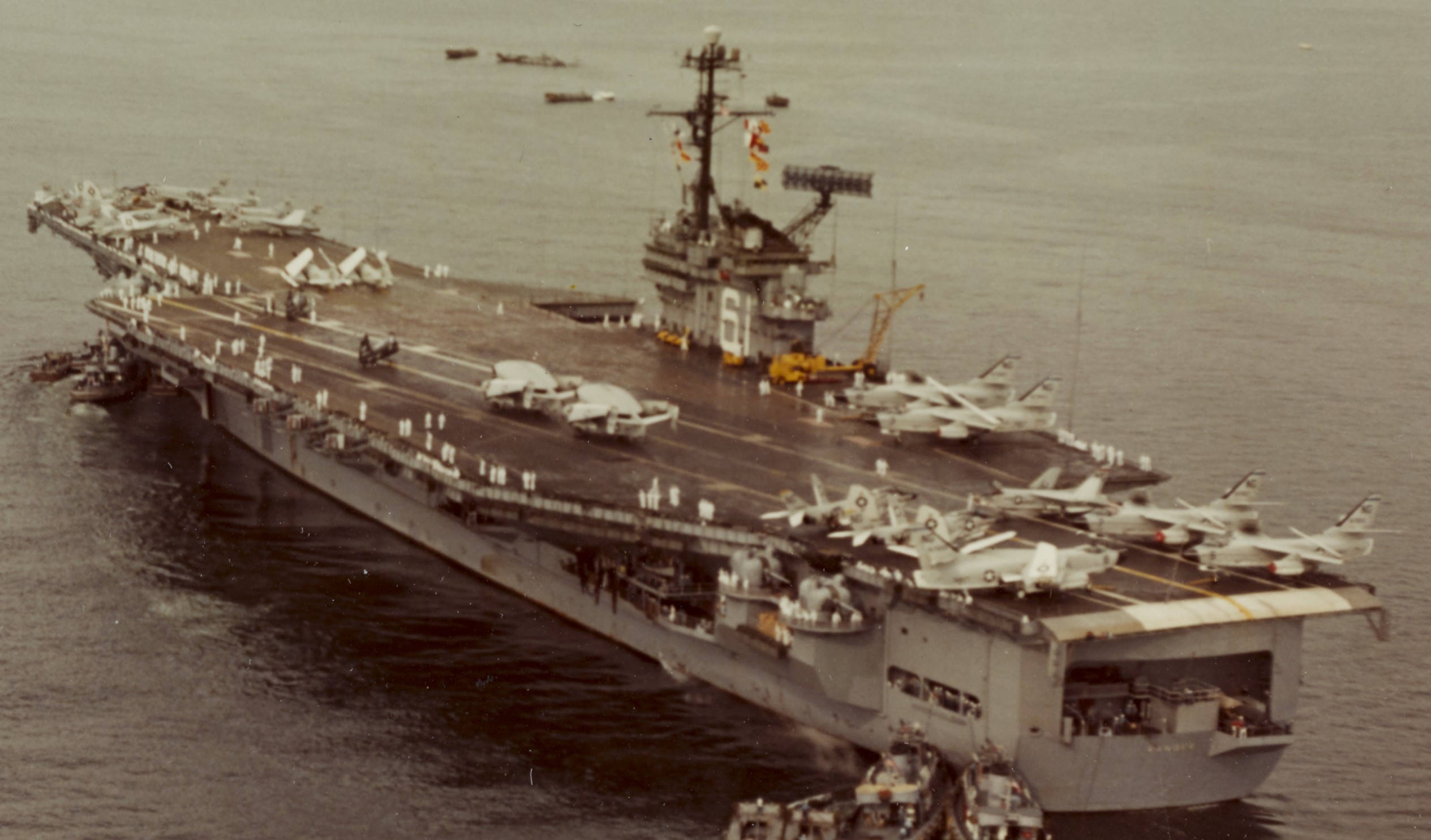 with CVG-9 embarked - Yokosuka, Japan - 1961 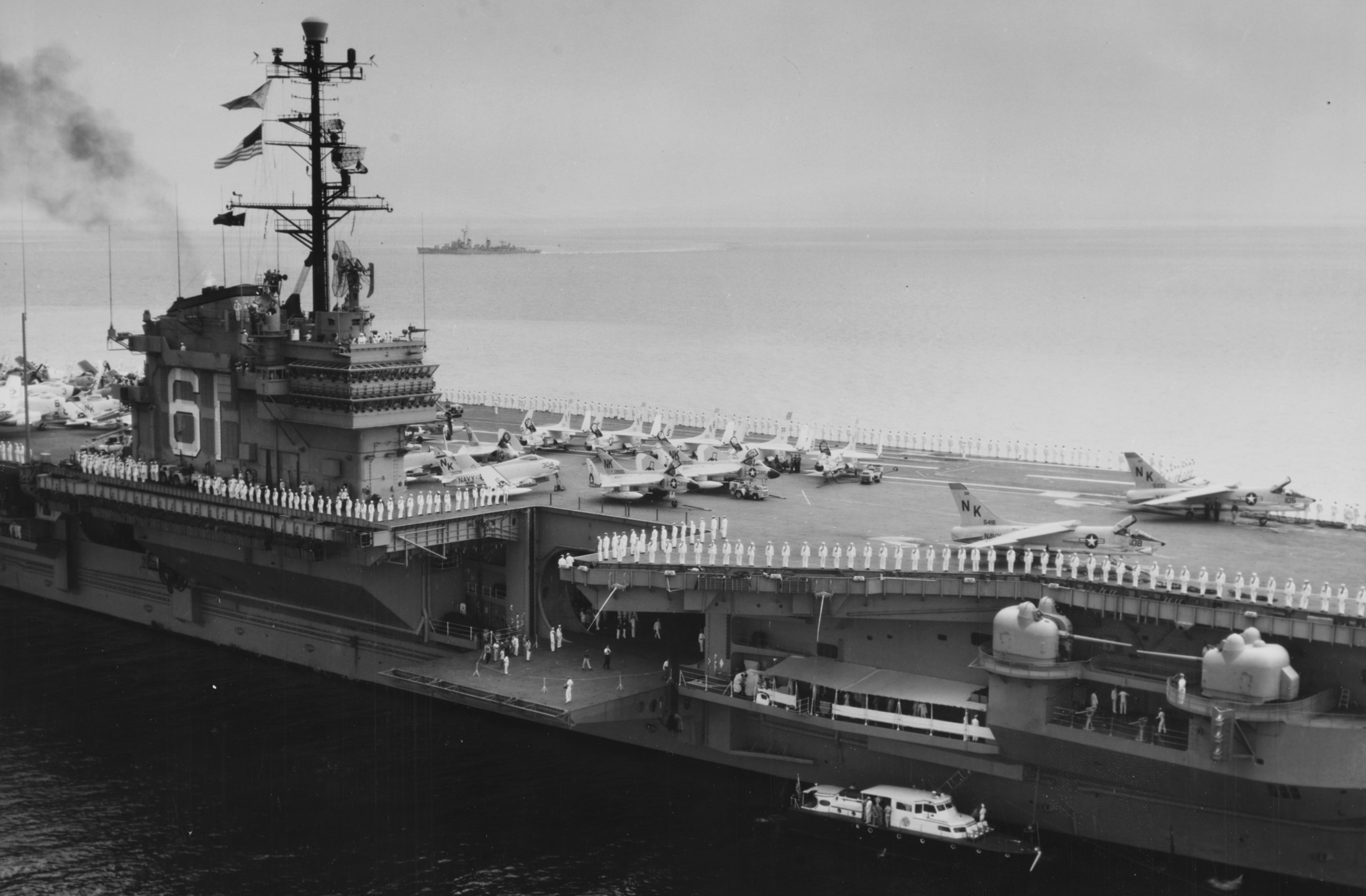 with CVG-14 embarked - Manila Bay, Philippines - April 1959 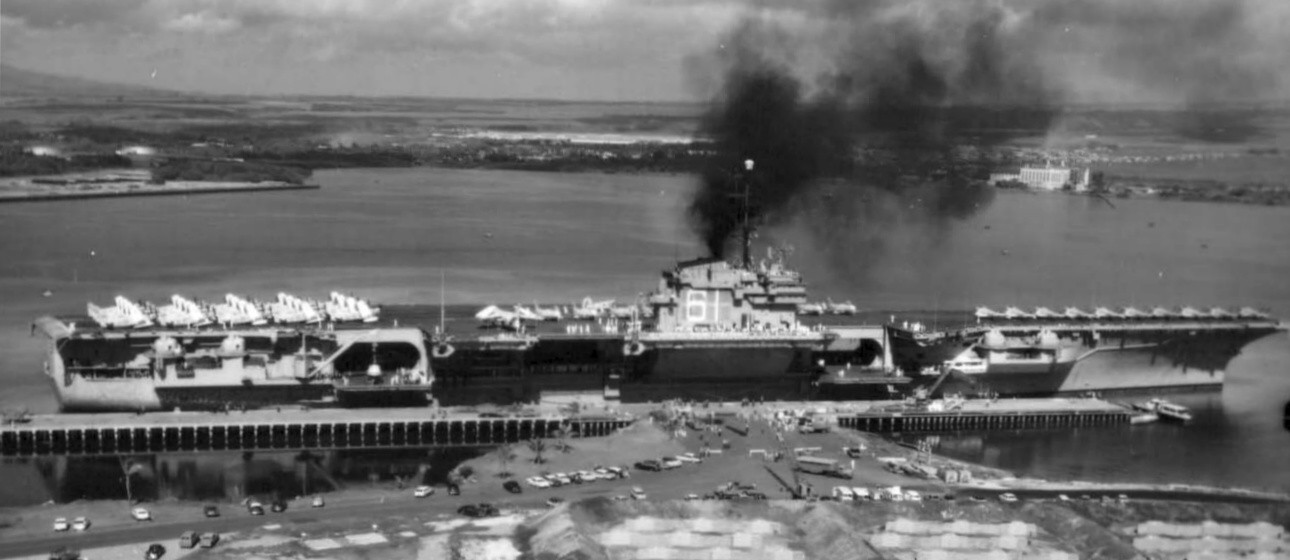 with CVG-14 embarked - Pearl Harbor, Hawaii - January 1959 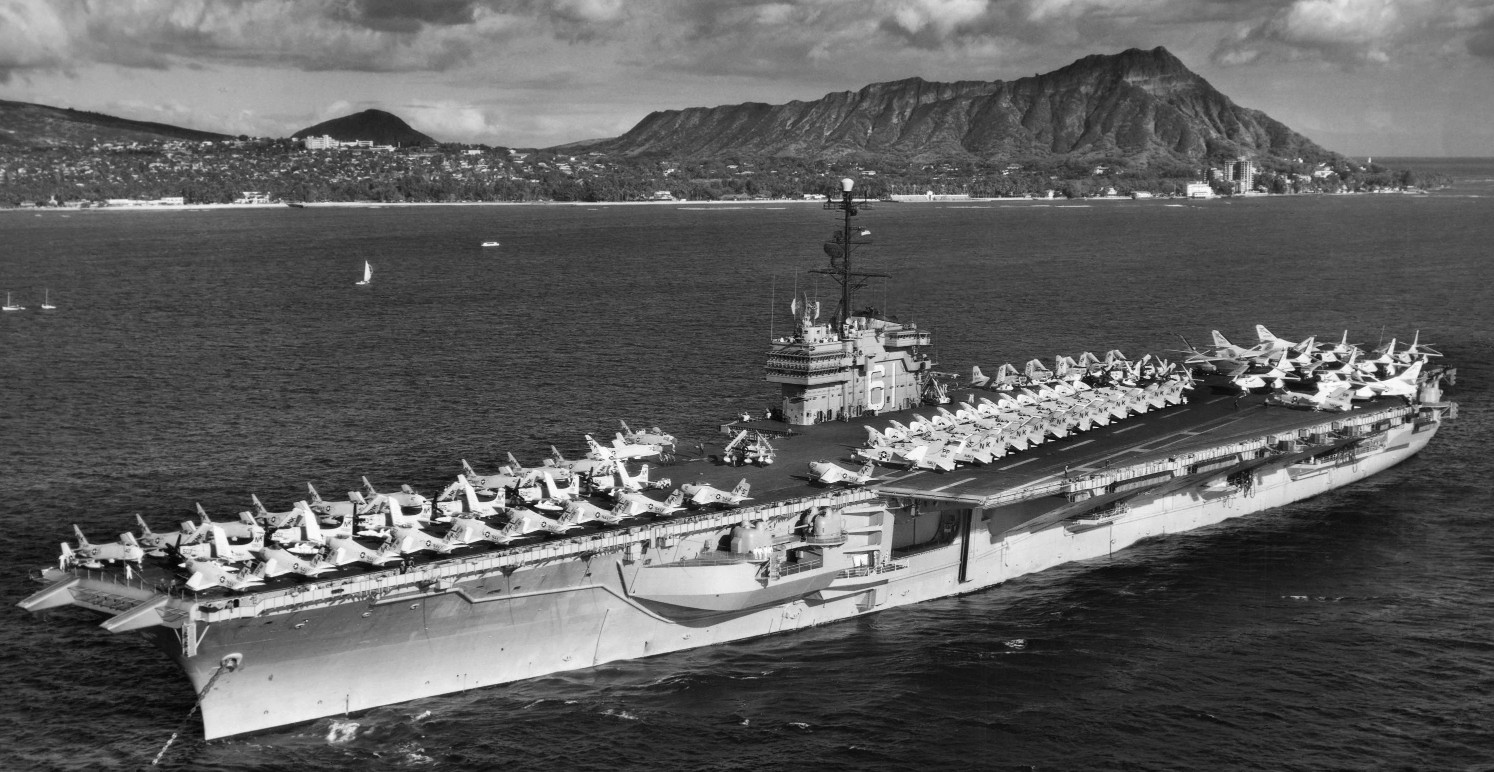 with CVG-14 embarked - 1958 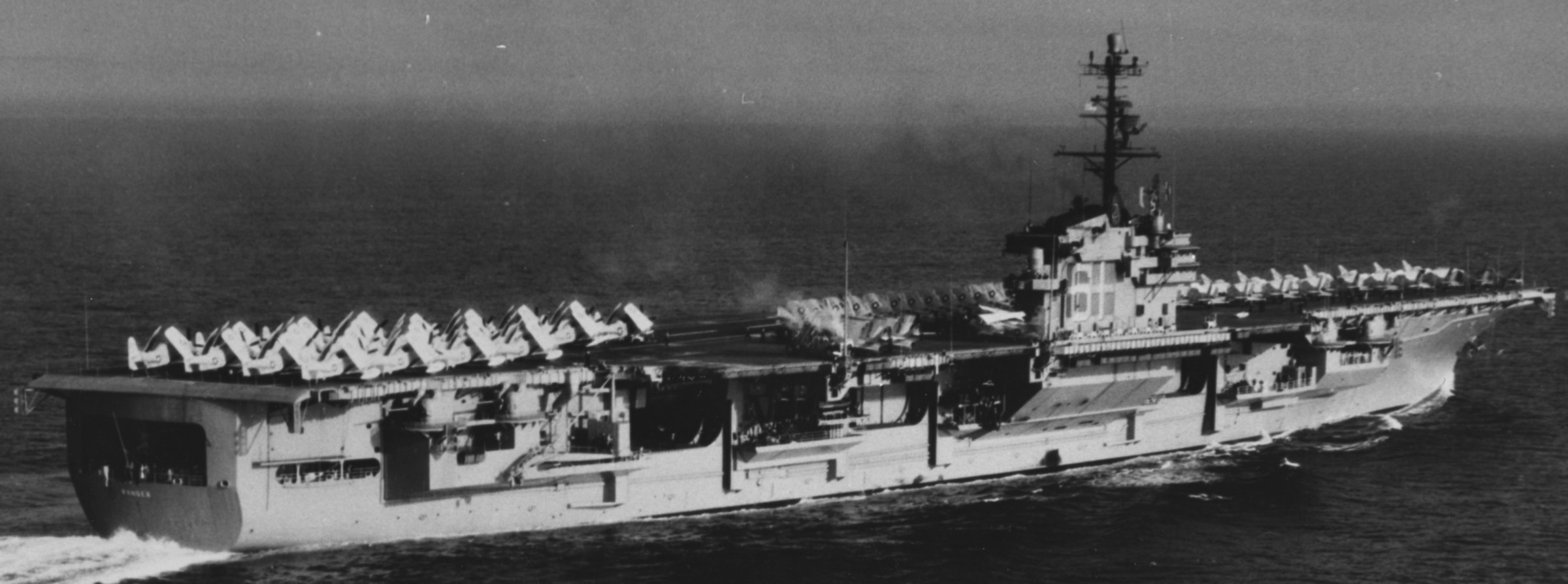 with CVG-14 embarked - July 1958 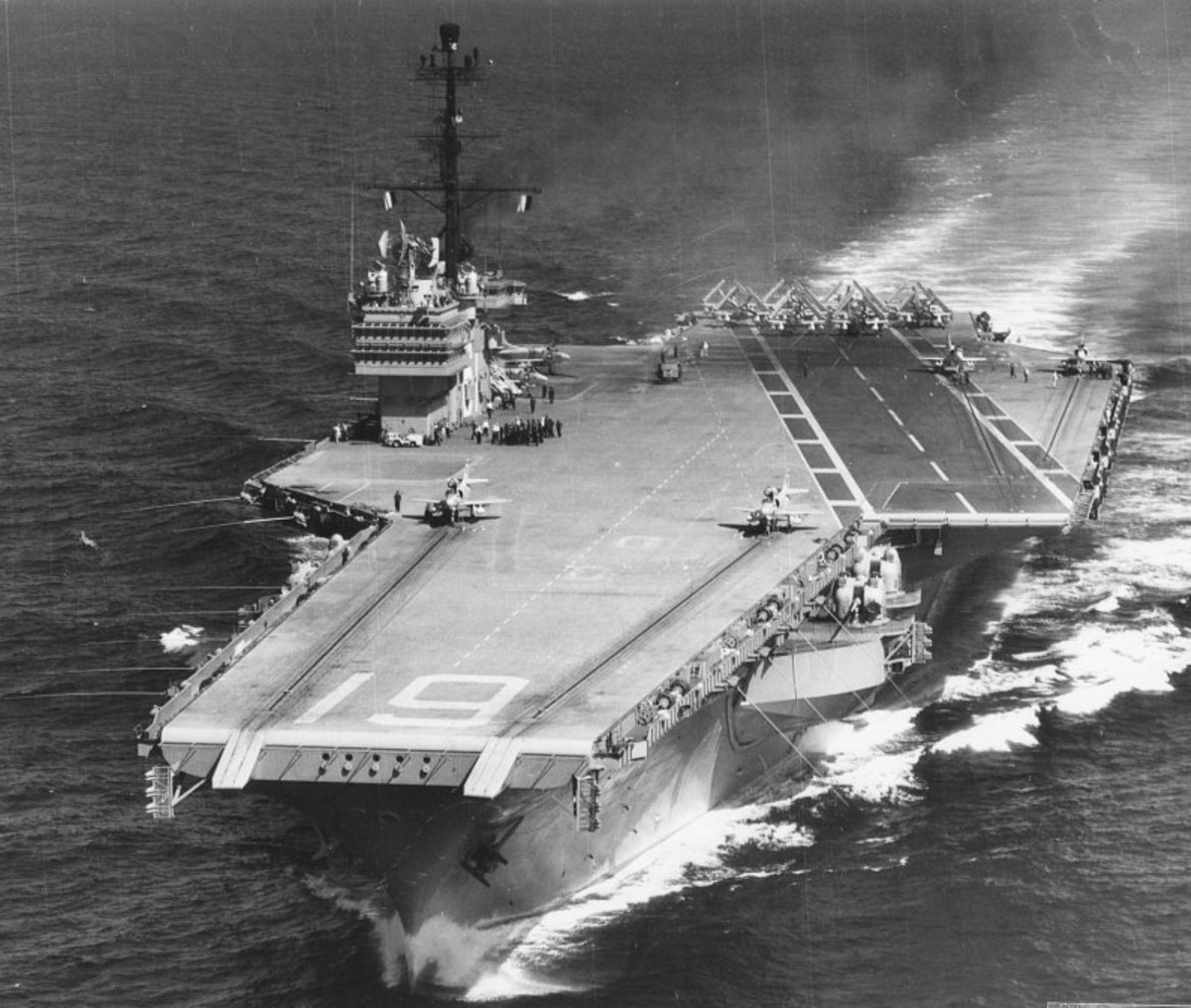 with CVG-8 embarked - shakedown cruise - October 1957 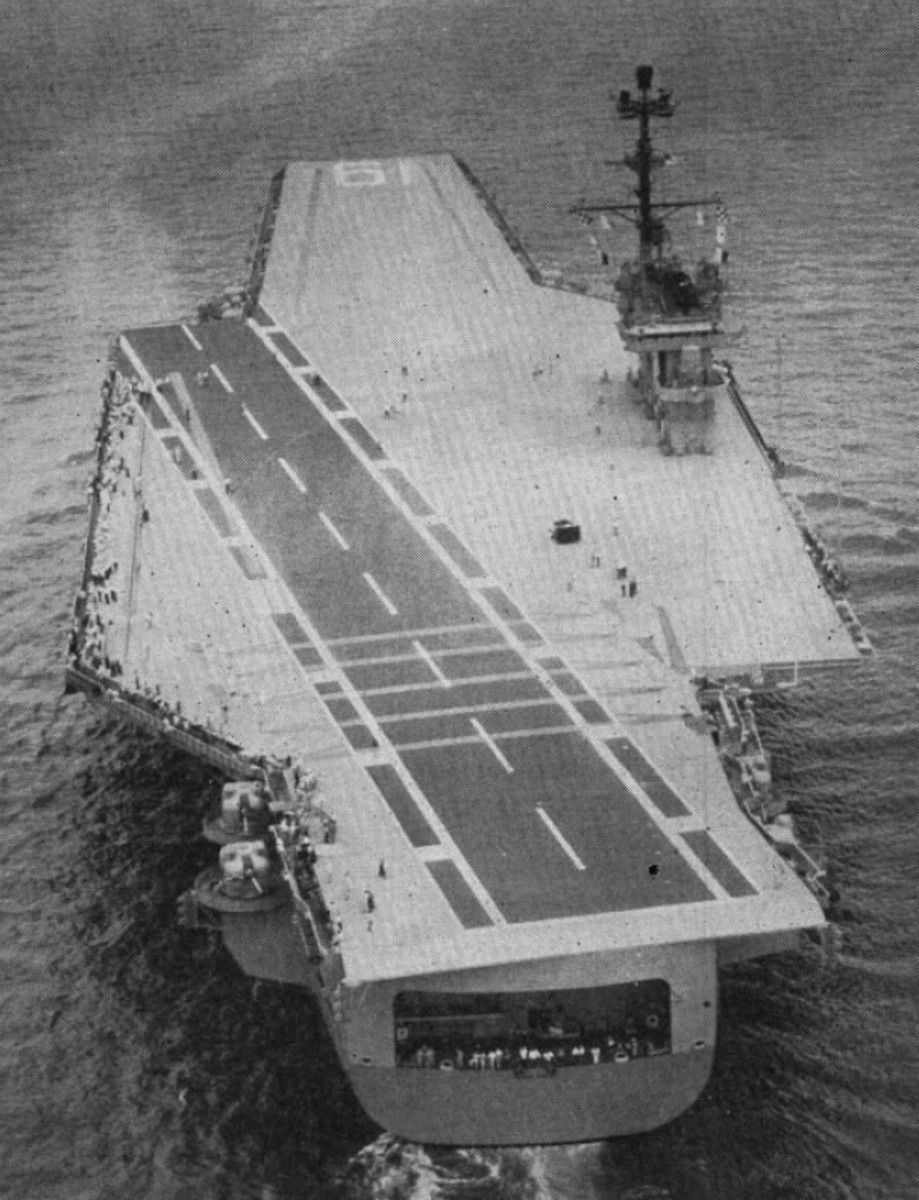 1956 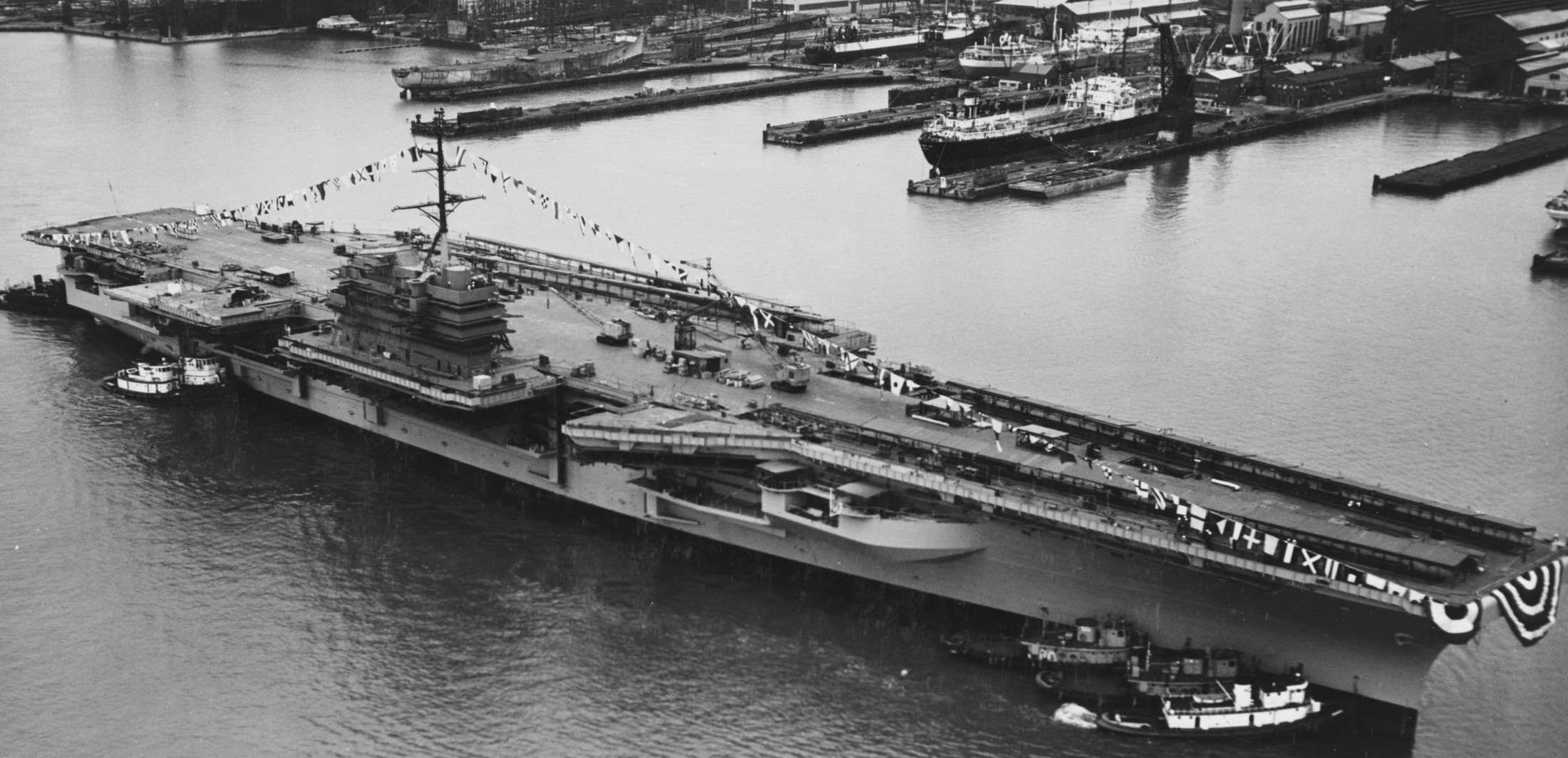 after launch - moving from building dock to outfitting pier at Newport News Shipbuilding - September 29, 1956 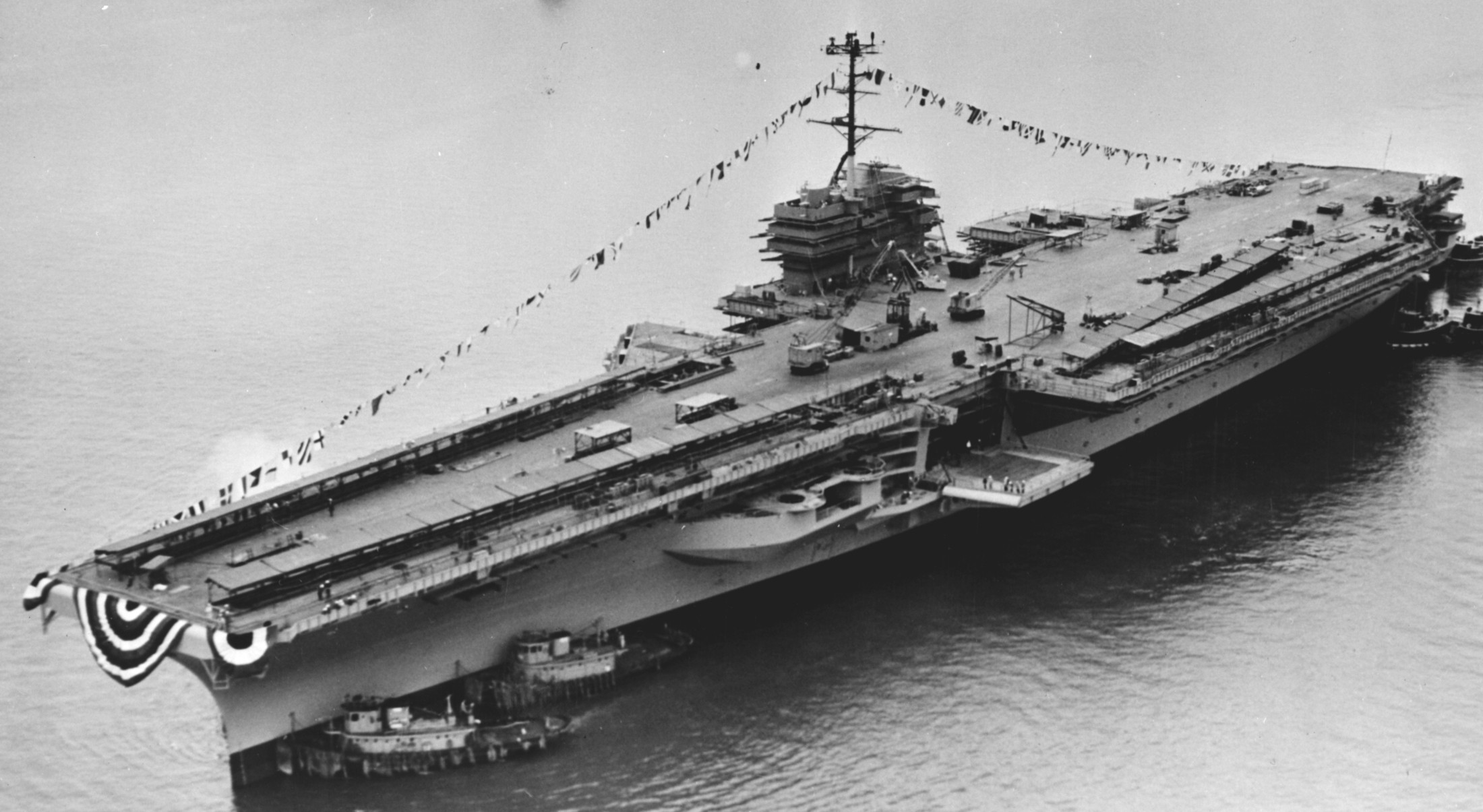 launching at Newport News Shipbuilding - September 29, 1956 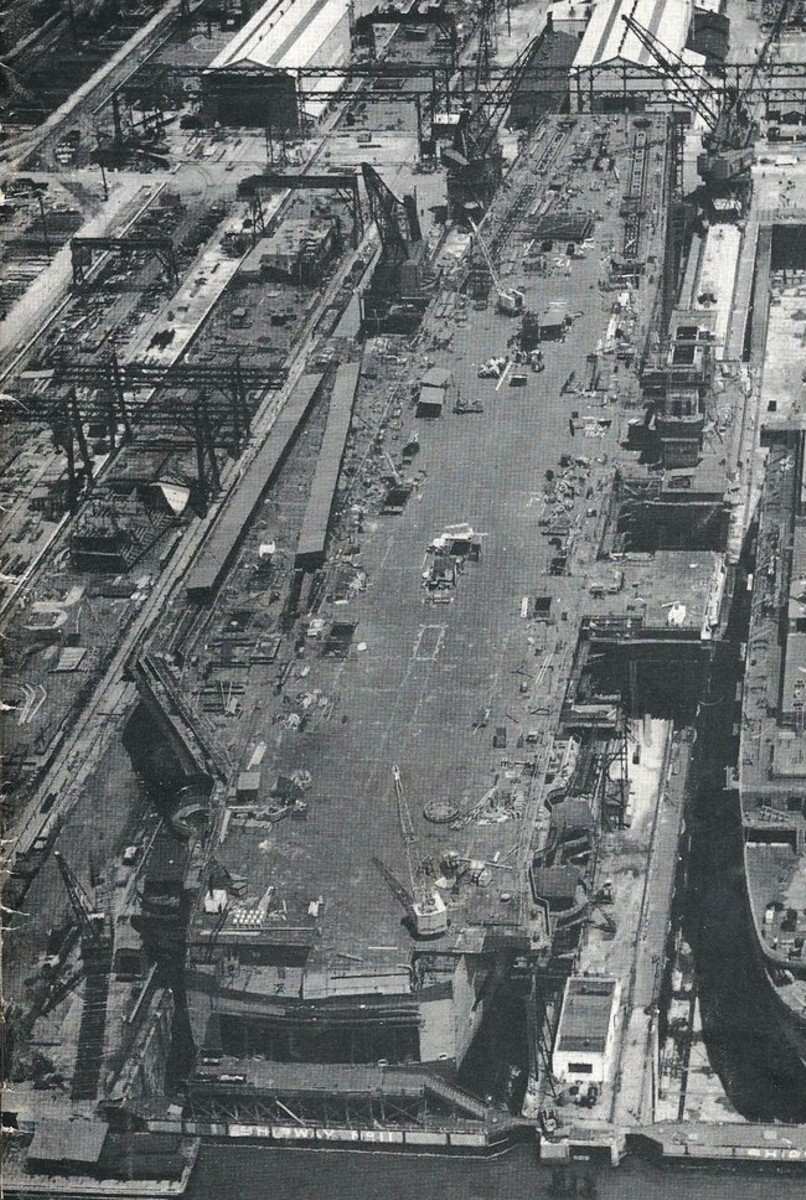 under construction at Newport News Shipbuilding & Drydock Company, Virginia - 1956 |
||
|
USS Ranger (CVA 61 / CV 61): The tenth Ranger (CVA-61), a Forrestal-class aircraft carrier, was laid down on 2 August 1954, by Newport News Shipbuilding & Drydock Co., Newport News, Virginia, and was launched on 29 September 1956; sponsored by Mrs. Mariam J. Radford, wife of Admiral Arthur W. Radford, Chairman of the Joint Chiefs of Staff; and commissioned at the Norfolk Naval Shipyard on 10 August 1957, Capt. Charles T. Booth II, in command. This updated Ranger was a full three feet longer than any of the other Forrestal-class carriers, and was the first of her class to operate in the Pacific, spending the entirety of her career stationed on the west coast of the US. Ranger joined the Atlantic Fleet on 3 October 1957, and carried a crew of 3,500 officers and enlisted men. Ranger also had a complement of more than 100 fighters and bombers, most of them jet powered. Just prior to sailing on 4 October for Guantanamo Bay, Cuba, for shakedown, she received the arrival of her first squadron, the men and planes of Attack Squadron (VA) 85, which were composed of Douglas AD-6 Skyraiders from Naval Air Station Oceana. The squadron’s primary function was the delivery of atomic weapons at low altitude. The Skyraider was one of the most versatile aircraft in existence at that time, and was used as a close air support attack bomber. It had a maximum range of well over 3,000 miles, and had it been equipped with racks to hold them, could easily have carried three Chevrolets coast-to-coast non-stop. Ranger conducted both her first arrested landing and catapult launch on 14 October 1957, with CO, Capt. Booth, accomplishing the first arrested landing in a Grumman TF-1 (C-1) Trader. Beginning in January 1958, Ranger conducted air operations, individual ship exercises, and final acceptance trials along the eastern seaboard and in the Caribbean Sea. To demonstrate the remarkable progress of her attached squadrons, Attack Squadron One Hundred Forty-Five (VA-145), had all 24 pilots qualified in (day and night) landings aboard Bennington (CVA-20) in only four days, from 31 March through 3 April 1958. Further ship exercises and final acceptance trials were conducted until 20 June 1958, when Ranger then departed Norfolk, Va., with 200 Naval Reserve officer candidates for a two-month cruise that took the carrier around Cape Horn, visiting the ports of Port of Spain, Trinidad; Rio de Janerio, Brazil; Valparaiso, Chile; Lima, Peru; and Acapulco, Mexico before she arrived at her new homeport in Alameda, Calif., on 20 August and joined the Pacific Fleet. The carrier spent the remainder of 1958 in pilot qualification training for Air Group Fourteen (CVW-14) and fleet exercises along the California coast. A tragic accident occurred on 10 November 1958, off San Francisco, Calif., when an explosion in a magazine-area seven decks below the waterline killed two sailors. The two crewmen that were killed were known rocket enthusiasts that had attempted to obtain gunpowder from the magazine to fuel a miniature jet engine that they had built. Unauthorized to be in the magazines where they attempted to obtain the gunpowder, the resulting explosion, although said to do “relatively minor” damage, took about a month of repair work in the yards due to the location of the accident. Departing 3 January 1959 for final training in Hawaiian waters until 17 February, Ranger next sailed as the flagship of Rear Adm. Caldwell, Commander, Carrier Division Two (ComCarDiv 2), to join the Seventh Fleet. Air operations off Okinawa were followed by maneuvers with Southeast Asia Treaty Organization (SEATO) naval units out of Subic Bay. A special weapons warfare exercise and a patrol along the southern seaboard of Japan followed. During her first WestPac deployment, Ranger launched more than 7,000 sorties in support of Seventh Fleet operations, and made port calls to Hong Kong Taipei, Sasebo, Tokyo, Yokohama, and Yokosuka, Japan. During mounting tensions between the Chinese Communists and Chinese Nationalists, the Seventh Fleet deployed Lexington (CVA-16) and Ranger on 5 July to Formosan (Taiwanese) waters for six days, to deter the communists from attacking Taiwan. After completion of that mission, Ranger then headed to Pearl Harbor before making her return to Alameda on 27 July. By 30 September 1959, Ranger had logged 16,000 catapult launches and 15,000 landings. During the next six months, Ranger kept herself in a high state of readiness through participation in exercises and coastal fleet operations. With CVW 9 embarked, she departed Alameda on 6 February 1960 for a second WestPac deployment and returned to Alameda on 30 August. From 11 August 1961-8 March 1962, Ranger deployed to the Far East a third time. In January 1962 Ranger participated in Operation Bandsaw, a fleet exercise involving offensive strikes, anti-air, and anti-submarine warfare. During the operation, Ranger and Lexington acted as opposing forces, and each was directed to seek out and “destroy” the other. The tactics employed simulated those expected of an actual enemy. This operation provided valuable training in seeking out and attacking mobile surface forces and also in evasion and concealment from enemy airborne search radar. She had to sail around the Cape of Good Hope and sail to her new homeport in Alameda, Calif., because she was far too large for the locks of the Panama Canal. On 25 February, Commander Carrier Division Seven (CCD 7) and his staff disembarked in Yokosuka, Japan, as Ranger and Carrier Air Group Nine (CAG 9) prepared to depart WestPac. She arrived back in Alameda, Cali. on 8 March. The period between 8 March and 9 November 1962 was used for maintenance of ship’s facilities, leave for the crew, and intensified training. Sequences for the short movie Story of a Carrier Pilot were filmed in October, while a late catapult launch sent an anonymous McDonnell Douglas F4B Phantom II pilot from the Fighting Falcons of VF-96 under the Golden Gate Bridge in San Francisco, Cali., on 19 October. After arriving in WestPac in December, Ranger’s first major exercise was Operation Pilot Light, which involved Bon Homme Richard (CVA-31). The operation was a combination anti-air, anti-submarine warfare and offensive strike exercise. Both units gained experience in concealment from enemy submarines and airborne radar, while the opposition exercised their ability to locate and attack ships of an enemy fleet. Shortly after, Ranger participated in Operation Handclasp, a sustained effort by the US Navy to transport equipment and goods for charitable organizations throughout the world. Ranger offloaded 4,750 cases of medical supplies, clothing, and books in Hong Kong for use at the Maryknoll missions in that area. Ranger ended the year 1962 having steamed 57,264 nautical miles and consumed a grand total of 24,321,814 gallons of Navy Standard Fuel Oil. Much of that fuel was received during 17 underway replenishments. Flight operations were also highly important and included a total of 10,788 catapult launches and 13, 980 arrested landings. Eight million gallons of JP-5 jet fuel and half a million gallons of aviation gasoline were consumed during the course of the year. On 5 December 1962, Lt. j.g. Dan Watkins of VF-96 made the 50,000th arrested landing on Ranger in an F4B Phantom II. The event was marked by a cake cutting ceremony on Ranger’s hangar deck. Rear Adm. Paul Masterson, Commander Carrier Division One (CCD 1), Captain G. C. Duncan, CO, Ranger, and Cdr. W. A. Mackey, CAG 9, congratulated Lt. j.g. Watkins. Ranger thence proceeded, via Okinawa, to the Philippines, arriving in January 1963. Around this time, Ranger participated in the first of a series of “firsts.” While operating north of the Philippine Islands, she and sister ship Kitty Hawk (CVA-63), both Forrestal class carriers, conducted, for the first time, full-scale air operations in the Pacific while only 4,000 yards apart. A second “first” was accomplished in Yokosuka, Japan, when a Phantom II was catapulted from the ship while she was docked. The aircraft, from Fighter Squadron 96 (VF-96), landed at nearby Atsugi Naval Air Station. The third “first” was achieved when Ranger sailors set two navy records for rate of transfer at sea: the first record occurred while rearming the ammunition ship Mauna Kea (AE-8) as 366 tons of ammunition an hour was received; only two weeks later, 334 tons of foodstuffs an hour were onloaded from the refrigerator ship Vega (AF-59). On 5 April 1963, off Beppu, Japan, Ranger suffered a boiler explosion in one boiler which caused some structural damage to the ship. It took approximately two weeks to have the boiler repaired at the US Naval Ship Repair facility in Yokosuka. She then steamed to the South China Sea on 1 May 1963 to support Laotian contingency operations. When the political situation in Laos relaxed on 4 May, she resumed her operations schedule with the Seventh Fleet. Arriving at Alameda from the Far East on 14 June 1963, she underwent overhaul in the San Francisco Naval Shipyard 7 August 1963-10 February 1964, and received a larger flight deck. Refresher training out of Alameda commenced on 25 March, interrupted by an operational cruise to Hawaii from 19 June to 10 July. On 5 August, Carrier Air Wing 9 (CVW-9) embarked. Ranger again sailed for the Far East on 6 August 1964. That deployment came on the heels of the unprovoked assault against Maddox (DD-731) on the night of 2 August and two nights later, against both Maddox and Turner Joy (DD-951) by North Vietnamese motor torpedo boats. In retaliation for that aggression in international waters by North Vietnam, President Lyndon B. Johnson stated on 4 August, that “the performance of commanders and crews in this engagement is in the highest tradition of the U.S. Navy.” On 5 August, President Johnson directed the Navy to strike bases used by the North Vietnamese naval craft. As Ranger steamed from the western seaboard of the U.S. to join wartime operations during her first Vietnam war cruise, aircraft from Ticonderoga (CVA-14) and Constellation (CVA-64) flew some 60 attack sorties against Communist targets in South Vietnam. Ranger made only an eight-hour stop in Pearl Harbor on 10 August, hurried on to Subic Bay, thence to Yokosuka, Japan. In the latter port on 17 October 1964, she became flagship of Rear Admiral Henry Miller who commanded Fast Carrier Task Force 77. An accident at 0945 on Sunday, 29 November 1964, shook the crew when Pvt. Loyd E. Hathaway, USMC, a member of USS Ranger’s Marine Detachment, attempted to leap onto an upward-moving forward stores elevator and was crushed between the elevator and the shaft bulkhead. With heavy hearts, duties resumed in Seventh Fleet operations to keep open the sea-lanes for the Allies and stop Communist infiltration by sea. By February 1965, four American carriers took part in Operation Candid Camera off Vietnam. Ranger was joined by carriers Hornet (CVS-10), Hancock (CVA-19), and Coral Sea (CVA-43). In March, Ranger recorded a then-record of 59 continuous days on Yankee Station. General William Westmoreland, CO, Military Advisory Command in Vietnam, visited Ranger on 9 March 1965 to confer with Rear Admiral Miller. During the period 1-13 April Ranger conducted special operations in the South China Sea. Air operations were conducted on a 24 hour per day basis. Three pilots and one Radar Intercept Officer were lost during this period as well as two Douglas A1-H Skyraiders and one McDonnell Douglas F4B Phantom. A second Phantom was lost due to engine failure during catapulting. Ranger continued air strikes on enemy inland targets until 13 April when a fuel line broke, ignited and engulfed her No. 1 main machinery room in flames. The fire was extinguished in little over an hour, but Ranger suffered one fatality when MM3 Chester Statun was killed bravely battling the fire. Ranger then put into Subic Bay on 15 April and sailed on 20 April for Alameda, arriving home on 6 May. She entered the San Francisco Naval Shipyard on 13 May and remained there under overhaul until 30 September. Following refresher training, Ranger departed Alameda on 10 December 1965 to rejoin the 7th Fleet. Ranger commenced Seventh Fleet operations on Dixie Station 15-20 January 1966. A shift to Yankee Station from 21 January-10 February brought an unfortunate loss of aircraft due to both accidents and combat operations against North Vietnam. One Douglas A4E Skyhawk of VA-55 was lost at sea following catapult launch (the pilot who? was recovered uninjured), while a Douglas A4C Skyhawk of VA-146, and two Skyraiders of VA-145 were lost in combat action with the three pilots and one NFO missing or unaccounted for. After a 38 day bombing pause against targets in North Vietnam, President Lyndon B. Johnson again resumed the bombing on 31 January 1966. The pilots of VA-145 and Air Wing 14 were extremely busy as several lucrative targets, such as trucks, lines of communication, and North Vietnamese troop areas, were assigned for sortie attacks. Cmdr. Harold F. Griffith, leader of a flight of six aircraft, directed and coordinated simultaneous attacks under extremely adverse weather conditions against a heavily defended primary enemy line of communications, destroying a major highway bridge. Because of the severe weather, he diverted his other aircraft under the command of Lt. Cdr. J. Kenneth Hassett to alternate targets. Cmdr. Griffith, with his wingman, Ensign Walter S. Bumgarner, destroyed a second highway bridge as well as two major supply and staging areas. While they retired from the target area, an urgent request was received for assistance in locating a downed aircraft from VA-55 near Dong Hoi. Cmdr. Griffith immediately directed his detached section to search offshore areas while he searched inland for the missing aircraft of Douglas A4E Skyhawk, Lt. Cdr. Chumley. Forced to steeply climb his aircraft after he received a hail of intense ground fire, Cmdr. Griffith regained control and recovered from an inverted dive after his plane received two severe hits and then made an emergency landing at a distant friendly airbase. Meanwhile, Lt. Cdr. Hassett had located Lt. Cdr. Chumley offshore and provided protective cover for the downed pilot. For their participation in the rescue of Lt. Cdr. Chumley, the Silver Star was awarded to Cdr. Griffith while Ensign Bumgarner received the Distinguished Flying Cross in the intense SAR incident. On 1 February Lt. j.g. Dieter Dengler, part of a four plane division, was flying a combat mission over Laos. As the group neared their assigned target, they received a distress call from a flight of VA-115 “Spads” off USS Kitty Hawk (CVA-64). A pilot from VA-115 had been downed by anti-aircraft fire and Lt. j.g. Dengler and his fellow pilots of VA-145 were to provide protective cover until SAR forces could arrive. The pilots of VA-145 dropped their ordnance on target and flew towards the downed aircraft from VA-115 when Lt. j.g. Dengler failed to report off target. Radio contact could not be established and while SAR procedures had immediately been implemented, no sign of Lt. j.g. Dengler was found. It was not until the second day of search and rescue that his crashed Skyraider was spotted. Dengler had been captured by Pathet Lao soldiers, who tortured him and attempted to make him sign a statement against the United States which he refused. After five months of debilitating imprisonment, Dengler and a group of other prisoners, which included two Americans, former Air Force SSgt. Eugene DeBruin, and Air Force Capt. Duane W. Martin, escaped into the jungle. During their trek to Thailand, Capt. Martin was assaulted and killed by a Laotian villager in front of Lt. j.g. Dengler, while Eugene DeBruin and another prisoner separated from the group and were never seen again. After 23 days in the jungle, in which time Dengler dropped to just 90 lbs., he was finally spotted and rescued on 20 July by a flight of Air Force Skyraiders from the 1st Air Commando Squadron. After a small contingent of Navy SEALs conducted a snatch-and-grab of Dengler from an Air Force base where he was to be debriefed about his time as a prisoner of war, he was returned to a celebration held in his honor aboard Ranger on 21 July. On the afternoon of 10 February, Lt. Gary L. Hopps was killed while engaged in a bombing run over his primary target as part of a three-man flight in the skies above North Vietnam. It was suspected that his Skyraider was hit by anti-aircraft fire, fell into a dive, and collided with the ground at high speed, killing Lt. Hopps instantly. Memorial services for Lt. Hopps were held aboard ship on 12 February while Ranger was enroute to Subic Bay, Philippines. Following a much needed nine day liberty in Subic Bay, Ranger again participated in combat operations on Yankee Station from 24 February-21 March. On the first day of March, a Phantom II failed to return from a bombing run, and an extensive SAR effort conducted in an area 13 miles east of Thanh Hoa produced negative results. On the very same day, an A-4E Skyhawk pilot became separated from his wingman in a low visibility turn and failed to return to Ranger. The ensuing SAR search centered on a position 12 miles northwest of Cap Mui Ron, but also produced unsuccessful results. During the week of 2 to 8 March, combat operations were conducted by Hancock (TG 77.3), Ticonderoga (TG 77.5), Kitty Hawk (TG 77.6), and Ranger (TG 77.4). Results of strikes in North Vietnam were good during several days of improved weather. SAM activity increased with an apparent firing as far south as Ha Tinh. Three SAM's were fired at Ranger aircraft on 4 March, but did no damage. During the week of 9 to 15 March, the carriers at Yankee Station were Ranger and Kitty Hawk. Winter monsoons continued to restrict air operations in North Vietnam, and a large number of scheduled sorties were diverted to operations in the South. On 10 March Kitty Hawk provided close air support for the beleaguered Special Forces at Ashau. The performance of the air wing in carrying out this mission earned the personal praise of General William Westmoreland. On 14 March the two-man crew of an Air Force F-4C Phantom II ejected into the Gulf of Tonkin, west of Hon Me Island. A USAF HU-16 rescue aircraft attempted the recovery of survivors but was shot down and sunk by enemy mortar fire, leaving six more men in the water for rescue. Kitty Hawk aircraft attacked the shore batteries and small craft attempting to reach the men in the water. Kitty Hawk reported four sampans sunk and over 60 North Vietnam troops killed. Two Yorktown SH-3 helos, under cover of Ranger A-IH aircraft, moved in for the pickup despite heavy fire and rescued five of the eight men in the water. Heavy fire and damage to one SH-3 helo forced both helos to leave the scene. Under heavy fire, however, an England (DLG 22) UH-2 helo proceeded into the same area and rescued another survivor. Berkeley (DDG 15) and Arnold J. Isbell (DD 869) arrived from SAR stations and, receiving heavy fire from shore batteries, returned it in kind. They remained in the area while helos continued to search for the two missing crewmen. One crew member of the HU-16 was finally confirmed to have been killed in action and there was no trace of the other crewman. Further rescue efforts were suspended. In port on 4 April at Yokosuka Naval Base, Japan, Cdr. Mike Chewning relieved Cdr. J. E. Krimmel, VA-55, which was one of the fighter squadrons attached to Ranger. Cdr. Chewning’s command was to be one of the shortest periods in “Warhorse” history. While on his 111th combat mission over North Vietnam on 3 June, Cdr. Chewning’s A4E Skyhawk took a burst of shrapnel through the cockpit, which hurled hot metal fragments into the Skipper’s left arm. Undeterred, he attacked his target and then returned to Ranger to make a near-perfect one-handed landing. Cdr. Chewning received the Silver Star for this action, and was one of the Navy’s first aviators to do so during the Vietnam War. However, Cdr. Chewning had to return to the United States for treatment of his arm, and Cdr. Bob Holt acted as CO for the remainder of the deployment. There was no rest for the wicked as Cdr. Holt led VA-55 through some tough actions, which included possibly the most dramatic development in the 18-month long Vietnam air war, when Skyhawks from VA-55 and sister squadron VA-146 attacked and destroyed key oil depots near the heart of Haiphong, a previously safe area and another combat first for VA-55. By the end of 1966, Ranger and her gallant squadrons had delivered more ordnance and flown more combat missions against the enemy from the Gulf of Tonkin than any previous attack carrier. Upon return to the States in August, VA-55 tallied up its losses during the long stay on Yankee Station. The Warhorses suffered seven aircraft combat losses. Three of the seven pilots were successfully rescued, two were captured and held by the enemy, the third was listed as Missing in Action, and the fourth pilot was Killed in Action. Lt. Cdr. T. F. Kopfman and Lt. j.g. D. Wolosyzk were listed as Missing in Action, Lt .Cdr. W. S. Wood was Killed in Action. Lt. Cdr. Kopfman was shot down by North Vietnamese anti-aircraft fire on 15 June 1966 and ejected from his A-4E Skyhawk. He was captured and made a prisoner of war. He was released with the majority of his fellow POWs and returned to the US in 1973. The month of April saw the highest losses of naval aircraft in any single month of the war up to that point. 15 pilots and crew were killed in action, while 15 others were rescued. The Ranger lost a Skyhawk on 23 April, as well as a second on 30 April. Fortunately, both pilots were rescued thanks to SAR efforts. Total losses in South Vietnam, Laos, and North Vietnam from June 1964 to the end of April 1966 were 151 aircraft lost to the enemy or unknown causes in a hostile area, and 96 pilots and 28 crewmembers killed or missing. Another 73 were rescued. Ranger spent the majority of the month of May inport at Yokosuka which gave the crew some much needed R&R, and included two separate periods that ranged from 12-20 May and again from 22-24 May before returning once again to Yankee Station. On 1 June Lt. (later promoted to Lt. Cdr. while POW) James Joseph Connell’s Skyhawk was lost in an operational accident. Rescued from the water after only three minutes by helicopter, Lt. Connell was then shot down by enemy AAA anti-aircraft fire a month and a half later on 15 July 1966 while flying a different Skyhawk. Captured and kept in solitary confinement, he was hideously tortured for the majority of his captivity. Lt. Cdr. Connell died sometime in 1971, no doubt from poor health as a result of the beatings and other tortures he experienced while a POW. His remains were repatriated to the government and his family after the return of American prisoners of war from Vietnam in 1973. He was posthumously awarded the Navy Cross for his steadfast refusal to cooperate with the enemy or break faith with his fellow captured pilots. Ranger and her embarked Carrier Air Wing 14 received the Navy Unit Commendation for exceptionally meritorious service during combat operations in Southeast Asia for the period 10 January to 6 August 1966. Ranger departed the Gulf of Tonkin on 6 August for Subic Bay, thence steamed via Yokosuka (when there?) for Alameda, arriving on the 25th. She stood out of San Francisco Bay on 28 September and entered Bremerton, Washington, two days later for overhaul. The carrier departed Puget Sound 30 May 1967 for training out of San Diego and steamed once more for Alameda. On 21 July 1967, she logged her 88,000th carrier landing. From June until November 1967, Ranger underwent a long and intensive period of training designed to make her fully combat ready. Attack Carrier Air Wing 2 (CVW-2) embarked on 15 September 1967, with the new Ling-Temco-Vought Corsair II jet attack plane and the UH-2C Seasprite turboprop rescue helicopter, making Ranger the first carrier to deploy with these powerful new aircraft. From carrier refresher training for CVW-2, Ranger proceeded to fleet exercise Moon Festival. From 9 to 16 October, the carrier and her air wing participated in every aspect of a major fleet combat operation. He efficiency honed to a fine edge, Ranger departed Alameda on 4 November 1967 for WestPac. Arriving at Yokosuka on 21 November, she relieved Constellation and sailed for the Philippines on the 24th. After arriving at Subic Bay on 29 November, she made final preparations for combat operations in the Tonkin Gulf. Find the name of the commander, Commander, Carrier Division 3, embarked on 30 November as Commander, TG 77.7; and Ranger departed Subic Bay on 1 December for Yankee Station. Arriving at Yankee Station on 3 December 1967, Ranger commenced another period of sustained combat operations against North Vietnam. During the next five months, her air squadrons destroyed several strategic enemy targets including bridges, airfields, antiaircraft guns, rail yards, SAM sites, automobile and truck facilities, and military headquarters and installations. A few weeks later, Bob Hope brought some holiday cheer to the crew when his signature “Christmas Show" came to Ranger in the Tonkin Gulf on 21 December. The legendary comedian was accompanied by Les Brown’s Band of Renown, as well as Miss World, Madeline Harog-Bel, singer/actress Barbara McNair, and the extremely popular actress and pinup girl Raquel Welch. The Pueblo Incident occurred off of North Korea on 23 January when North Korean PT boats fired upon the Banner-class environmental research ship Pueblo (AGER-2), and then seized her and her crew, having accused them of spying for the United States. The captain of the crew, Lloyd M. Buchner, and the 82 men under his command, were tortured and forced to sign confessions stating that they were spies. While recriminations and negotiations between the US and North Korean governments had already begun, and tensions remained extremely high, Ranger left Yankee Station and sailed full steam ahead for the Sea of Japan to present a show of force. . When she was finally relieved after she had been at sea for 65 days and steamed for Sasebo, Japan, for some much-needed R&R, the crew of Pueblo remained prisoners of North Korea until 23 December 1968. Pueblo continues to be the only active US ship still on the commissioned roster to be held captive by a foreign nation. Another welcomed break in the intense pace of operations came with a liberty call at Yokosuka during the first week of April. With a return to Yankee Station on 11 April, Ranger again devastated enemy targets in North Vietnam, before she thriced to port at Subic Bay. After these several months of intensive operations, Ranger called at Hong Kong on 5 May 1968 and then steamed for home. There followed a visit to Puget Sound that ended with Ranger's departure on 29 July for San Francisco, followed by three months of leave for new and veteran sailors, as well as upkeep and a training cycle that eventually culminated with her sixth WestPac deployment on 27 October 1971. The men of Ranger enjoyed some R&R in Hong Kong the third week of January, and spent the remaining week enroute to Subic Bay. On 3 February, she posted a forty-four day line period on Yankee Station. A second aircraft loss from VA-145 occurred on the night of 25 February when Lt. Cdr. William R. Galbraith and bombardier/navigator Lt. Deskin D. Waters launched off the carrier with sparks and flames witnessed shooting out of the right exhaust. Later attributed to a foreign object, the damage resulted in insufficient thrust to climb. Both crew members safely ejected after they realized the aircraft would no longer continue flying. Both Lt. Cdr. Galbraith and Lt. Waters were rescued and found to be in good condition. This unusually long line period came to a conclusion on 16 March.. After having left Japan on 7 June, Ranger returned home to Alameda on 17 June 1971, and remained in port for the rest of the year, as well as into the first five months of 1972 while undergoing regular overhaul. On 27 May 1972 she returned to west coast operations until 16 November, when she embarked upon her seventh WestPac deployment. The seventh WestPac had been delayed by three months due to a sailor’s alleged act of sabotage, a growing problem for an important warship such as Ranger, which had a high deployment-cycle due to its combat-mission role. Sabotage was becoming more popular as the war in Vietnam became more unpopular.. At some point the previous July, it was alleged that Fireman Patrick Chenoweth had placed a heavy paint scraper into a main reduction gear, which disabled one of the ship’s engines. Held, imprisoned, and charged with destruction of government property and sabotage in time of war, Chenoweth faced 30-years imprisonment, but was quickly acquitted by a general court martial mostly due to lack of evidence. Nevertheless, there had been $800,000 worth of damage done to the engine and the ship’s deployment back to duty off Vietnam had been delayed. Some further two dozen acts of sabotage between 7 June and 16 October 1972 were committed by Ranger personnel, generally to delay or prevent the ship from returning to Yankee Station. Once repairs were completed, VA-145 accompanied Ranger on her deployment to the still ongoing warzone in Vietnam. Missions were actively flown by the squadron on 9 December, the first day on Yankee Station, with close-air support missions over both South Vietnam and Laos. On 13 December, a Class Bravo fire (involving burning oil) started in Number Two Machinery Room. Called to General Quarter’s minutes later, the repair lockers involved in firefighting efforts were able to bring the fire under control in forty-five minutes. No personnel were injured, although Medical Department handled eight cases of smoke inhalation, none deemed to be serious. CO, Capt. H. P. Glindeman, said that the initial investigation showed that a plug in the side of a fuel oil service pump blew out, which permitted fuel oil to spew onto an adjacent hot surface and ignited. Ranger had recently been equipped with the latest in firefighting equipment during her last overhaul period. The new equipment, known as AFFF (Aqueous Film Forming Foam) or “light water,” as well as PKP or “Purple-K,” a dry-chemical fire suppression agent that provides a thin agent capable of extinguishing fires quickly and limited damage to ships. By 18 December, Intruder aircraft were flying low-level night missions into the heavily defended heart of North Vietnam without a single loss. The New Year’s Cease Fire on 1 January 1973 had Ranger’s squadrons stand down and no flight operations were attempted while off Yankee Station. By 5 January, she transited to Subic Bay for an inport period 6-12 January, before underway once again for Yankee Station on 13 January. A man overboard sounded out over the 1MC only three days later, which was fortunately found to have been a false alarm. On 21 January, an EKA-3B (BuNo 142634) suffered an engine failure and SAR efforts for the three crewmen from VAQ-130 immediately commenced. Search efforts continued on into the next day, but pilot Lt. Cdr. L. P. Parker, navigator Lt j.g.. K. A. Christophersen, and plane captain AT2 R. D. Weihr were declared lost at sea when their bodies could not be found. A somber memorial service was held aboard Ranger that very same day for the three men. Good news finally arrived two days later when on 24 January, the crew received word that President Richard Nixon had announced an agreement to end the war in Vietnam had been reached, and that a cease-fire would go into effect on 28 January at 0800 hours. The signing of the Paris Peace Accords brought an official end to direct US involvement in the war, and halted fighting between North and South Vietnam. The peace officially went into effect beginning on 28 January at 0800 hours. Although the war was now officially over, Ranger remained on Yankee Station to ensure the North Vietnamese kept the agreement. Tragedy struck again on 30 January when a mid-air collision occurred between two F-4J Phantom II fighters from VF-21. The aircraft involved (BuNo 158366), piloted by Lt. E. A. Beaver, and his RIO Lt. j.g. J. E. Reid were able to eject from their aircraft and were recovered by Horne (DLG-30). SAR efforts to find the crew from the second F4-J Phantom II (BuNo 158361) piloted by Lt. J. A. Duensing and his navigator, Lt. j.g. R. E. Haviland, proved fruitless, and the search was discontinued the next day. Both men were declared lost at sea, and a memorial service in their memory was held on 1 February. Although peace had been declared, Ranger continued to conduct special operations on Yankee Station. On 15 May, having steamed for Singapore, she crossed 0 degrees-latitude, and a time-honored naval tradition was held when Shellbacks helped to initiate Pollywogs into the mysteries of King Neptune’s Court. Ranger returned to her homeport in August 1973 and remained in the Alameda, California, area through April 1974. On 7 May 1974, Ranger left the Hawaiian operating area and conducted routine flight operations from 11-20 May, before she was underway on 24 May for Subic Bay where she arrived on 6 June, before she was deployed to WestPac until 18 October. On 12 May, during flight operations in the Hawaiian area of operations, an A7E Corsair was lost due to engine failure, and the pilot was recovered. Two aircraft, a KA6D and an F4J suffered a mid-air collision. While both aircraft were destroyed and lost, both crews were fortunately rescued. During transit to WestPac, Ranger was overflown by two Russian Tupolev TU-95 Bear aircraft on 30 May. Tensions heightened somewhat as the two Bear bombers overflew the ship and remained in the area for a period of approximately three and a half hours. Several tanking sorties were launched in support of CVW-2 fighter aircraft, and both Russian aircraft were intercepted and escorted while they were in the vicinity of Ranger. Shortly thereafter, three relatively short training periods were conducted, with a combined fleet exercise called Operation Multiplex, held to test the ship/air wing capability to cope with a multiple threat environment. On 7 October, two Soviet Tupolev TU-95 Bear aircraft, flew over Ranger during an overflight that lasted half an hour. After the successful completion of Multiplex, Ranger was not scheduled for any further operations other than normal training periods while deployed in the South China Sea. In 1975 Ranger returned to the United States and had a home port change to San Diego, Calif. With the change of scenery came some updates for the ship as well. Deck department was able to purchase new port and starboard life boats, as well as conduct improvements to the exterior appearance of the ship. Famous visitors also toured the ship while in her new homeport, including astronauts Capt. Joseph P. Kerwin, Cdr. Thomas K. Mattingly, and Cdr. Robert L. Crippen, visited at sea on 13 August 1975. Famed race car drivers Bobby Unser, Dan Gurney, and Jerry Grant came aboard for a tour two weeks later on 27 August. Ranger conducted six more WestPac deployments in the next several years in support of peacetime operations. By January 1976, Ranger was inport at NAS North Island, in San Diego, Cali., and on 30 January chopped to the Hawaiian Islands, arriving in Pearl Harbor on 7 February. Heavy winds and seas precluded Ranger from arriving pierside, and she was moored from 8-9 February before she departed for the MidPac area of operations. Having conducted numerous man overboard, general quarters, and mass casualty drills, on 20 March, an A/C NE-202 from VF-21 Squadron crashed and slid into the water. The pilot (?) and Rio were both recovered. On 17 May a crewman fell from the flight deck to Alava Pier, while the ship was moored at Subic Bay, Philippines, and was pronounced dead by the ship’s doctor. USS Ranger raced into the year 1977 having frantically prepared for the upcoming 13-month complex overhaul that had been scheduled to begin in February, Moored to the “OP” piers on North Island NAS, San Diego, Calif., Ranger voyaged to the Puget Sound Naval Shipyard facilities at Bremerton, Wash. Called Northwest Trek by those who sailed north with her, Ranger was said to have looked like a large hotel, as dependents, pets, and automobiles were transported with the crew to the new homeport that would bring her material readiness back up to the standards that earned her the nickname “Top Gun of the Pacific Fleet.” Ranger arrived in Bremerton on 12 February, and entered Drydock No. 6 to begin the 13-month long overhaul. It was in Bremerton where Ranger celebrated her 20th birthday on 10 August in a similar setting to the one she began in; a shipyard drydock. By 20 August, drydock work was completed and Ranger was moved to Pier Number 3. Light off examinations were held for No. 1 Main Machinery Room on the 1st and the last exam was held on the 30 November. By the end of the year, Ranger was still alongside Pier No. 3 having completed 46 weeks of overhaul and had only 12 more to go. On 23-26 February, Ranger conducted a fast cruise followed by sea trials, anchor tests, and GQ drills in the first week of March 1978. On 21 March, she was loaded up once again with dependents, pets, and automobiles for the change of homeport back from Bremerton, Wash., to San Diego, Calif. On 24 March, a daughter was born onboard Ranger to AN Joseph E. Wilson and his wife, Movelma Wilson during transit to San Diego. The baby girl was named Rholanda Zennette Wilson, and the new family and crew arrived back home safely at NAS North Island the following day. The 198,000 arrested landing on Ranger’s flight deck since commissioning in 1957 was celebrated, but two accidents in September taught valuable lessons in safety; the first accident involved a Grumman F-14 Tomcat on 13 September in which the pilot and NFO were recovered safely, while sadly an EA-6B was lost during flight operations; one NFO was recovered safely, but the pilot and a second NFO were lost as SAR operations proved futile. On her fourteenth Westpac, Ranger deployed on 21 February 1979 to the Persian Gulf with a total complement of 10 squadrons and 89 aircraft, originally to present a show of force during strife that occurred between North and South Yemen. Having then steamed to the Pacific, on 5 April, just SE of Singapore, Ranger collided with Liberian-tanker MV Fortune. While the tanker suffered some damage, Ranger featured a significant gash in her bow which rendered two fuel tanks unusable. Steaming back towards Subic Bay for temporary repairs, Ranger then struck for Yokosuka for full repairs of her bow and fuel tanks. The collision resulted in some 10,000 tons of crude oil being spilled into the South China Sea. MV Fortune had been hauling a total of 100,000 tons of light crude oil from Kuwait to Taiwan when the accident occurred, but fortunately no injuries were sustained by sailors in either vessel. Ranger returned from her fourteenth WestPac excursion After repairs were completed, Ranger then made for the Persian Gulf, remaining on station for 130 days during the Iranian hostage crisis, which occurred when a group of Iranian students that supported the Iranian Revolution, took 52 American diplomats and citizens, hostages for 444 days (from 4 November 1979-20 January 1981). Eventually all hostages would be released, but relations between the US and Iran significantly deteriorated. On 2 August 1980, two Taiwanese fishermen, aged 31 and 61, were the only survivors of an original five man fishing boat crew. Their boat capsized during Typhoon Hope, and the men had been adrift for five days without food or water when a helicopter from Ranger rescued them approximately 150 miles southeast of Taiwan. Both men were transferred to Ranger’s medical ward for care and rest, and successfully recovered from their ordeal. On 10 September, Ranger commenced her 1980 deployment and steamed to Subic Bay, arriving there on 15 October. The new year 1981 began anchored off Mombasa, Kenya, before she participated with Independence in a successful ADEX-1 Evolution. On station when the 52 American hostages were finally released on 20 January, she then steamed to Colombo, Sri Lanka, and on 2 March qualified for two beers per man after 60 days at sea before headed to Pattaya Beach, Thailand. After getting underway, the teamwork of Ranger crewmembers resulted in the saving of 137 Vietnam refugees adrift at sea off the coast of Southern Vietnam. The refugees were given medical care and provided food, before being disembarked on 24 March in Subic Bay and were later transferred to a Philippine refugee center. For their efforts in rescuing and providing comfort to the refugees, the crew was entitled to a Humanitarian Service Medal. Later that November, a rare visit north to Vancouver, British Columbia proved an exciting time for Ranger sailors when the ship hosted a show that was later nationally televised in February 1982 and starred Suzanne Somers, Marie Osmond, Gladys Knight and the Pips, Flip Wilson, and others. Ranger began her silver anniversary moored at NAS North Island, before she heaved out towards Pearl Harbor for readiness exercises. She crossed the International Dateline on the second of May and arrived at Alava Pier Subic Bay on 13 May for five days and then sailed for Man of War Anchorage, Singapore, for three more days. Underway for Diego Garcia, the crew held Crossing the Line ceremonies on 31 May as she traversed the equator at 0715 that morning. On 4 August, search and rescue efforts were conducted for an overdue crew of a downed Douglas EA-3B Skywarrior, (BuNo 146450). The search was halted on 5 August, and of the seven crewmen missing, only one, AT2 Robert Lee Huff, was found to have survived. Ranger got underway for NAS North Island, San Diego, Calif., on 12 October, returning six days later. To bestow her approval upon President Ronald Reagan’s support of the British war between England and Argentina over the disputed Falkland Islands, Queen Elizabeth II of Great Britain arrived aboard the Royal Yacht Britannia for a nine-day tour of the US west coast. Queen Elizabeth II received a tour of Ranger while she was moored at San Diego, Calif., on 05 March 1983. A collision with USS Wichita (AOR-1) off the coast of Nicaragua on 18 July 1983 cost the Navy $671,854. The accident occurred when Ranger and Wichita conducted an Unrep at sea and then collided with one another. The majority of the damage was suffered by Wichita, which had damage to two sets of kingposts, winch control booths, and the aft superstructure. Both ships continued to steam together into the Indian Ocean and on into the Persian Gulf, until weeks later, when Wichita would leave the Ranger battle group for Subic Bay and further repairs, which took three weeks to complete. CO, Capt. Arthur Frederickson would later be reprimanded for his role in the collision in February 1984. A few months later, Ranger made the 1 August cover of Newsweek magazine which sported the headline: “Gunboat Diplomacy: Reagan Gets Tougher with Nicaragua.” On 1 November, three-and-a-half months into a six-month deployment, fuel oil was routed into a wrong tank and then spewed from valves that failed to close or were improperly equipped. A large fire broke out in one of the four main machinery spaces onboard, which killed six sailors and injured 35 others. The fire was extinguished in an hour, with a reflash also being put out shortly after. Estimated damage to Ranger was $1.7 million, as the fire damaged one of her four engines and knocked out one of her shafts. The Navy filed dereliction-of-duty charges against two low-ranking enlisted men, despite the fact that high-ranking officers had ordered Ranger on a “show the flag” mission in both the Persian Gulf and waters off Nicaragua while an investigation was being conducted into huge diesel-fuel losses aboard Ranger, which had been long overdue for an overhaul period. These high-ranking officers knew the carrier had corroded oil pipes that leaked, as well as an overworked and ill-trained crew, but sent her to sea anyway. One month before the fire, as the ship entered the north Arabian Sea, the Navy issued a report stating that an average of 10,000 gallons of marine diesel fuel was being dumped overboard every day from Ranger’s bilges, which had been contaminated with leaking oil. Water had also begun to leak through the corroded pipes into the fuel tanks. Ranger crewmen had thus spent a vast majority of their time recovering contaminated fuel. The cases against the two sailors, Mark A. Lonteen and Phillip DeFranco did not go far. An April 1984 memo from V. Adm. T. R. Kinnebrew, deputy commander of the US Pacific Fleet, stated that he doubted whether “the actions of those two individuals can be totally isolated from the actions [or lack thereof] of their seniors.” Several other senior-ranking officers agreed with Adm. Kinnebrew. While Lonteen was acquitted of charges by Navy Judge Cdr. Michael V. Riggio, Petty Officer DeFranco, on the advice of his attorney, pleaded guilty, but was sentenced to three months in the brig. On 18 November, a Soviet frigate which had shadowed Ranger and other US ships in the northern Arabian Sea, caused minor damage to USS Fife (DD-991) when the two ships grazed hulls. At the time it was believed to be the first such collision between Soviet and American naval warships in years. The Soviet Krivak I class guided missile frigate Razyaschy, approached within 100 yards of USS Benjamin Stoddert (DDG-22), moved away, and then headed towards Ranger before Fife moved in to head Ranyashcy off. It was at that moment that the two ships collided, although Razyaschy sailors raised a last minute signal flag which indicated its steering was broken. Fife took the only damage, with two 15-foot areas of paint being scrapped off her sides, while the Razyaschy suffered no damage at all. On 29 February 1984, Ranger set a conventional carrier record of 121 consecutive day’s at-sea on her 1983-84 WestPac deployment to the North Arabian Sea. And after an extensive, and much needed renovation of existing systems while at NAS North Island, Ranger arrived in Puget Sound Naval Shipyard (PSNS), in Bremerton, Wash., for a complex overhaul. Ranger then sailed for her new home port of San Diego, mooring there on 08 June 1985. Just a couple of weeks later, from 25-28 June, Paramount Studios filmed interior scenes aboard ship that would appear in the Tom Cruise movie “Top Gun,” a wildly popular film about Navy fighter pilots selected to conduct intense training and become the “best of the best” at the famed flight school of the same name in Miramar, Calif. Ranger was also a setting for the successful Star Trek franchise when scenes for the film “Star Trek IV: The Voyage Home” was also shot aboard her. In June 1986 Ranger participated in Rimpac 86, which was a combined exercise deploying over 50 ships, 250 aircraft, and 50,000 Marines from Canada, Japan, Britain, and Australia. Ranger joined in the exercise. Awarded the Navy Pacific Battle “E” on 31 December 1987 during her nineteenth WestPac the “Top Gun of the Pacific Fleet” would once again be on station during wartime. 1987 started well with Ranger receiving an “outstanding” on COMNAVAIRPAC’s 3-M inspection. She spent nine out of the twelve months deployed, with port visits to Pusan, South Korea, and Sasebo, Japan. WestPac ’87 commenced two months early in July, proving once again that the carrier was prepared to go to sea when called upon. The mission behind the deployment to the Indian Ocean and North Arabian Sea gained worldwide attention as Ranger’s airwing flew air support for the escort of Kuwaiti oil tankers through the Persian Gulf. The Honorable James H. Webb, Jr., SECNAV, visited from 12-13 September, and on 17 September Ranger’s bell rang for 200 seconds in honor of the 200th anniversary of the United States Constitution. Her mission completed, she steamed home for San Diego and returned on 30 December. Ranger’s 20th WestPac cruise saw the long-serving carrier deploy to the Indian Ocean on 24 February 1989. King Neptune and his court once again initiated pollywogs into Shellbacks on 15 April, as Ranger crossed the 88 degree meridian longitude. On 3 August 1989, the crew rescued 39 Vietnamese refugees off a barge near the Philippines. Other highlights of this deployment included port calls to Fremantle, Australia; Hong Kong, Singapore; Phattaya Bay, Thailand; Diego Garcia, and the Philippines and traveled more than 48,000 miles. Ranger also received the Meritorious Unit Commendation for 18 July 1988 to 24 August 1989. The new decade was begun in port at San Diego, and was quickly followed by sea trials in February and March 1990. In July, Paramount Pictures filmed scenes for the movie “Flight of the Intruder,” starring Willem Dafoe and Danny Glover aboard. And then suddenly in August, due to the invasion of Kuwait by Iraqi dictator Saddam Hussein, Ranger’s upcoming deployment was adjusted for participation in Operation Desert Shield. Ranger departed San Diego on 8 December 1990 to begin her 21st deployment in 33 years of commissioned service. She steamed directly to Subic Bay and ended the year in port at NAS Cubi Point, having spent a total of 119 days at sea at 13 separate periods during the course of the year. In total, she sailed 46,000 miles and launched and recovered more than 10,000 aircraft. In the upcoming months, Ranger would be involved in combat operations on a scale previously not seen since the Vietnam War. Beginning the new year of 1991 headed to a new conflict, Ranger steamed from 04 January through 14 January enroute to the Persian Gulf for Operation Desert Shield. On 15 January 1991, she steamed through the Straits of Hormuz to join Midway (CV-41) in the Persian Gulf. This marked the first time that two US aircraft carriers had been in the Persian Gulf at the same time. Less than two days later, Ranger and Carrier Air Wing Two (CVW-2) launched air strikes into Iraq and Kuwait to expel Iraqi forces from Kuwait occupation. Shortly after combat operations wound down, a port visit to Abu Dhabi provided the crew a much needed respite. By March, Ranger/CVW-2 aircraft flew over 4,200 sorties and dropped 4.2 million pounds of ordnance on enemy targets, destroying 115 enemy tanks, 69 radar stations, 425 vehicles, and one bridge. Ranger remained the only West Coast carrier to participate in Operation Desert Storm, even after two additional carriers (America and Roosevelt) joined her and Midway in the Persian Gulf. She was also the last to leave, having spent three months on station, and returned to San Diego on 8 June 1991. Awarded a Navy Pacific Battle “E” on 31 December 1991 for service during Operation Desert Storm, 1992 was yet another important and triumphant year for the famed ship. Vice President Daniel Quayle visited the crew on 17 March 1992 to thank them for their service, and just a little over a month later on 21 April 1992, two vintage North American B-25 Mitchell bombers launched from Ranger’s flight deck off the coast of California in tribute to the famed Doolittle Raid of 1942. Ranger conducted her twenty-second and final WestPac deployment in support of Operation Southern Watch on 01 August 1992. Along with other US navy ships, Ranger operated alongside of French, British, and even a Russian warship, the guided missile destroyer Adm. Vinogradov, in Gulf Exercise 15. This was the first time a multi-national exercise was conducted with a Russian warship. The four navies were involved in communication, maneuvering, and signal drills. Between exercises, US and Russian sailors took advantage of the end of the Cold War to tour each other’s ships. Ranger would go on to participate in Operation Restore Hope, off the coast of Somalia on 04 December 1992. As part of the naval forces during Restore Hope Ranger’s embarked air wing provided photo and visual reconnaissance, airborne air traffic control, logistics support, and on-call close air support for navy and marine amphibious forces. For the first time, a Russian Vinogradov KA-27 helicopter landed on Ranger’s flight deck. Chargers of HS-14 from Carrier Air Wing TWO landed one of their SH-3H helicopters on Vinogradov. Air traffic controllers from Ranger flew aboard Valley Forge (CG-50) and use the Aegis cruisers state-of-the-art radar systems to provide all-weather air traffic control for airlift flights arriving and departing from Mogadishu International Airport. It was the first time a US ship used its onboard radar systems and directed the flow of air traffic for a land base. Ranger was relieved on 19 December by Kitty Hawk (CV 63) and steamed 12,000 miles during her easterly transit home, and also received her second Navy Pacific Battle “E” in just a year, which was awarded on 31 December 1992. After 36-years of faithful and distinguished service, and holding a carrier record for having made nine combat deployments throughout her lifetime, Ranger was decommissioned on 10 July 1993 at NAS North Island. Ranger had conducted 22 WestPac deployments, participated in operations from Vietnam to the Persian Gulf, and Operation Restore Hope in Somalia. Some of her many awards include three Navy Unit Commendations, five Meritorious Unit Commendations, three Battle “E” Awards, 12 Armed Forces Expeditionary Medals, and 25 Vietnam Service Medals. More than 100,000 sailors and marines served aboard Ranger during her illustrious career. After the late 1980s defense cuts, Ranger did not undergo the Service Life Extension Program (SLEP) modernization process as did her three sisters and the later Kitty Hawk-class ships, and by the early 1990s, her material condition was declining. Both the outgoing Bush and incoming Clinton administrations recommended cuts to the defense budget, so the retirement of Ranger, along with her sisters Forrestal and Saratoga, was put forth. Ranger was decommissioned on 10 July 1993 after 36 years of service, and was at the Naval Inactive Ship Maintenance Facility, Bremerton, Washington. This decommissioning came instead of a refit scheduled for the same year. Such an extension would have extended Ranger's life into 2002, requiring a reauthorization in 1994. In September 2010, the not-for-profit USS Ranger Foundation submitted an application to Naval Sea Systems Command proposing the donation of Ranger for use as a museum ship and multipurpose facility, to be located on the Columbia River at Chinook Landing Marine Park in Fairview, Oregon. However, in September 2012, NAVSEA rejected the foundation's proposal, and redesignated the ship for scrapping. Preparations for disposal Ranger were completed 29 May 2014. In August 2014, a new attempt began to convince the Navy not to scrap the ship. A petition on Change.org attracted over 2500 signatures. The hope was that Ranger could be located in Long Beach harbor as a museum. However, when asked by the Long Beach Press-Telegram, NAVSEA stated that Ranger was no longer available for donation and was slated to be scrapped in 2015. On 22 December 2014, the U.S. Navy paid one cent to International Shipbreaking of Brownsville, Texas, to tow and scrap Ranger. International Shipbreaking paid to tow her around South America, through the Straits of Magellan, as Ranger was too big to fit through the Panama Canal. The tow began on 5 March 2015 from the inactive ships maintenance facility, Bremerton, Washington, to Brownsville. International Shipbreaking expected to make a profit from Ranger after the costs of the tow and the actual dismantling of the ship. On 7 April 2015, ex-Ranger was seen anchored about three miles offshore at Panama City, Panama, attracting a lot of wild speculation as President Obama was scheduled to arrive two days later, for the 7th Summit of the Americas. Newspapers went so far as to repeat the local speculation that the ship was there to provide security for President Obama. On 12 July 2015, Ranger arrived at Brownsville for scrapping. The scrapping process was completed on 1 November 2017, though more than five tons of historic items from the ship were preserved for display at the USS Lexington Museum. Both of Ranger's anchors were reused on the 2003 commissioned, USS Ronald Reagan. USS Ranger - Commanding Officers: Captain Charles C. Booth, II - 10 August 1957 to 5 March 1958 Captain Paul E. Buie - 5 March 1958 to 23 May 1959 Captain Noel A. Gaylor - 23 May 1959 to 4 June 1960 Captain Donald Gay, Jr. - 4 June 1960 to 5 May 1961 Captain William N. Leonard - 5 May 1961 to 7 May 1962 Captain George C. Duncan - 7 May 1962 to 20 May 1963 Captain William E. Lemos - 20 May 1963 to 28 May 1964 Captain Alton B. Grimes - 28 May 1964 to 10 May 1965 Captain Leo B. McCuddin - 10 May 1965 to 7 June 1966 Captain William M. Harnish - 7 June 1966 to 20 October 1966 Captain William M. Donnelly, Jr. - 20 October 1966 to 27 March 1968 Captain William H. Livingston - 27 March 1968 to 28 June 1969 Captain John P. Moorer - 28 June 1969 to 20 June 1970 Captain Joseph L. Coleman - 20 June 1970 to 3 September 1971 Captain Hank P. Glindeman - 3 September 1971 to 21 May 1973 Captain Arthur E. Hill - 21 May 1973 to 22 November 1974 Captain John L. Nicolson, Jr. - 22 November 1974 to 17 September 1976 Captain Douglas R. McCrimmon - 17 September 1976 to 17 June 1978 Captain Thomas G. Moore - 17 June 1978 to 28 May 1979 Captain Roger E. Box - 28 May 1979 to 20 October 1980 Captain Daniel A. Pedersen - 20 October 1980 to 11 June 1982 Captain Anthony A. Less - 11 June 1982 to 8 July 1983 Captain Arthur H. Frederickson - 8 July 1983 to 26 June 1985 US DoD |
||
|
The ship name Ranger is vastly important in US Navy history and
tradition. The first Ranger was captained by John Paul Jones, and he
and the 140 men that sailed with him contributed to the
revolutionary cause of their American brethren by harassing the
Royal Navy. On 14 February 1778 at Quiberon Bay, Jones negotiated
the first salute to the US flag, and received the first official
recognition of the American Republic by a foreign power. Capt. Jones
than infamously led a raid on Whitehaven, England, which had two
forts protecting the shallow port. Jones and 30 of his men captured and spiked the guns of the southern fort before setting it afire, when suddenly the group that attacked the northern fort were frightened off by a loud noise. The fire Jones’ group had started soon engulfed the entire town of Whitehaven, which ironically was the very same port Capt. Jones had first sailed from as a young man. The third Ranger was a brig of 14 guns, purchased in 1814 to operate with Comm. Isaac Chauncey’s squadron on Lake Ontario during the War of 1812. This particular Ranger was condemned as unworthy of repairs and was sold on 15 May 1821. The seventh Ranger (CV-4) was the first US vessel designed and constructed as an aircraft carrier. Commissioned on 4 June 1934, she could operate 75 aircraft. With a crew of 115 officers and 2,258 aircraft, she performed escort and training missions in both the Atlantic and Pacific, and made several cruises to deliver some of the more advanced US fighter/bombers including the Curtiss P-40 Warhawk and Lockheed P-38 Lightning aircraft to Africa, as well as participated in landings during Operation Torch at Casablanca, Morocco, between 8-11 November 1942. On 11 July 1944 she sailed via the Panama Canal for duty in the Pacific qualifying carrier pilots until the middle of 1945. With the end of World War II in September 1945 and a significant drawdown in forces, the seventh Ranger was sold on 31 January 1947. |
||
| patches + more | ||
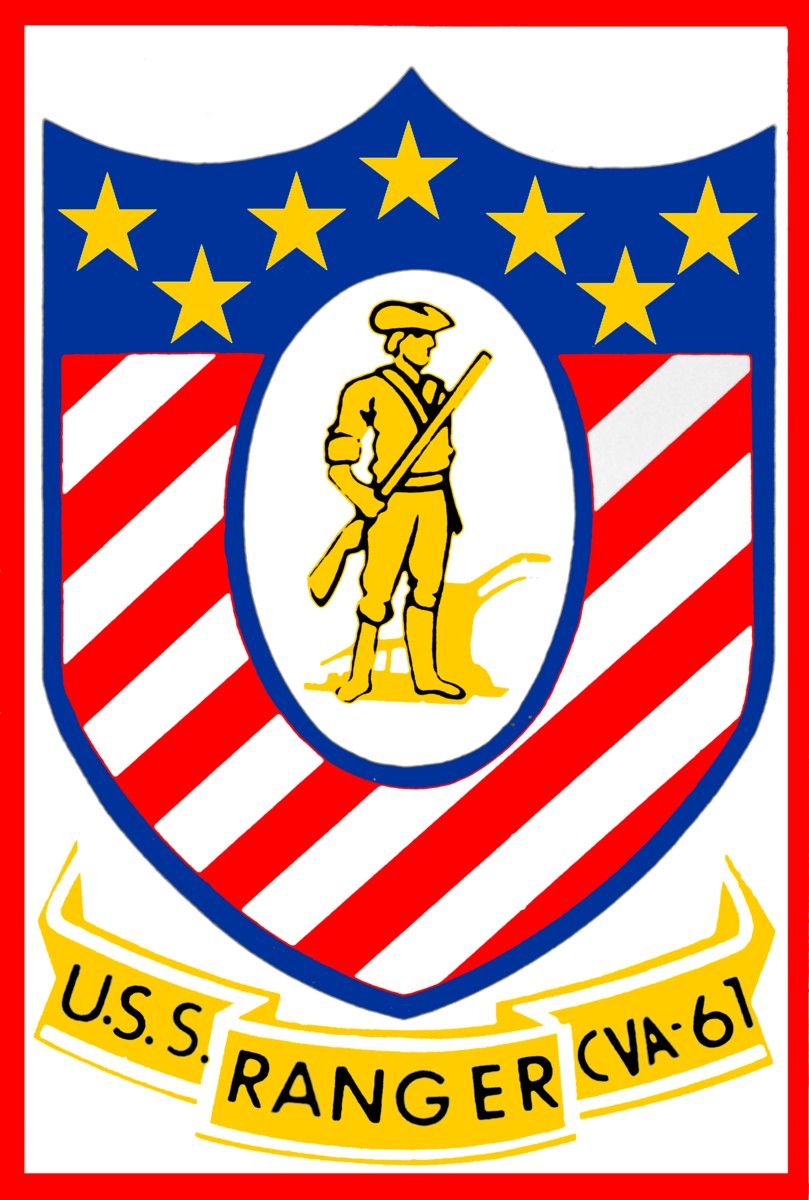 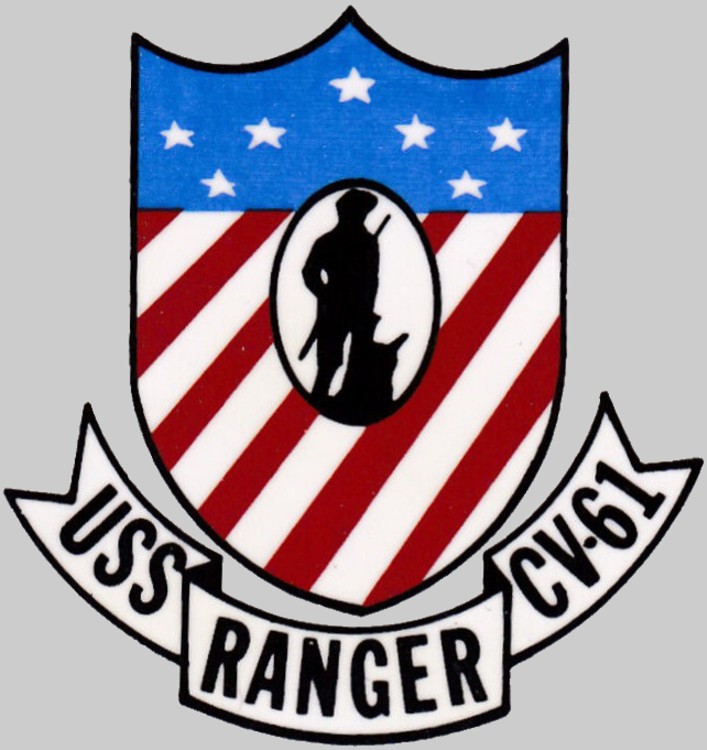 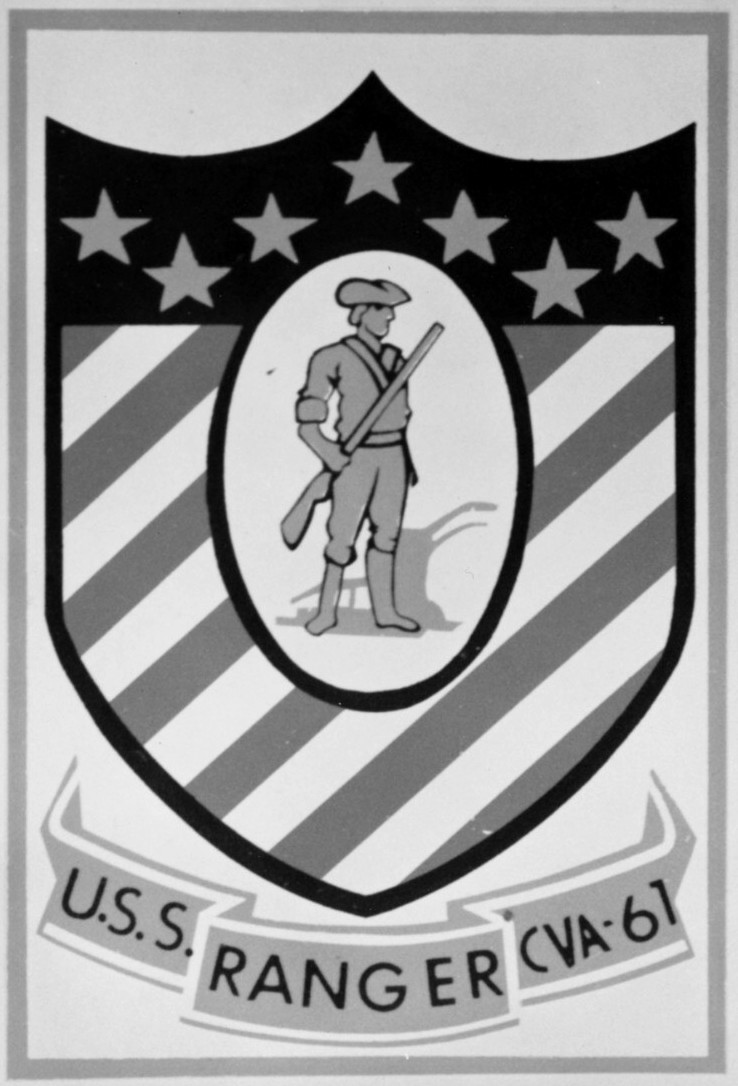 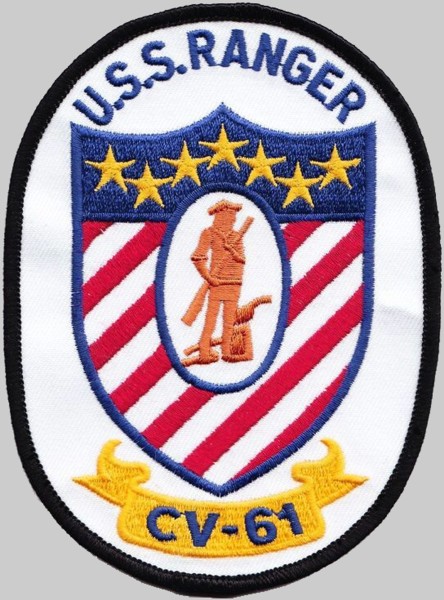
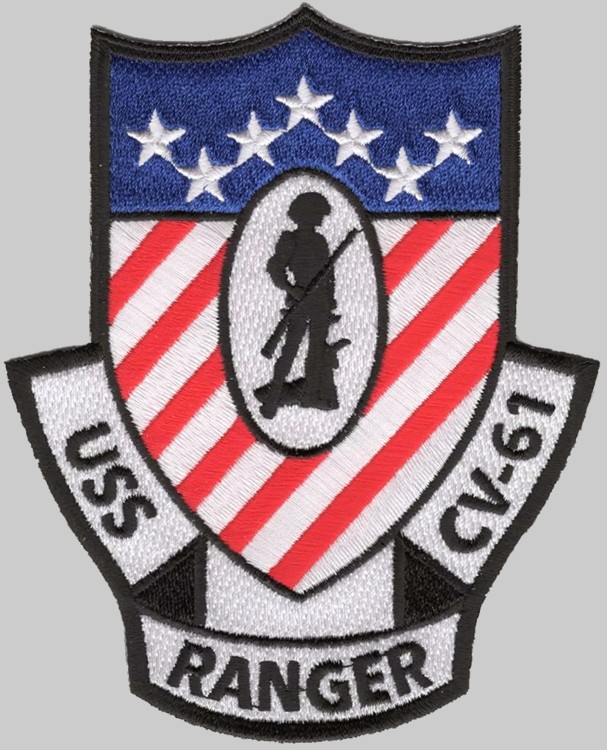 |
||
| | seaforces.org | USN ships start page | |